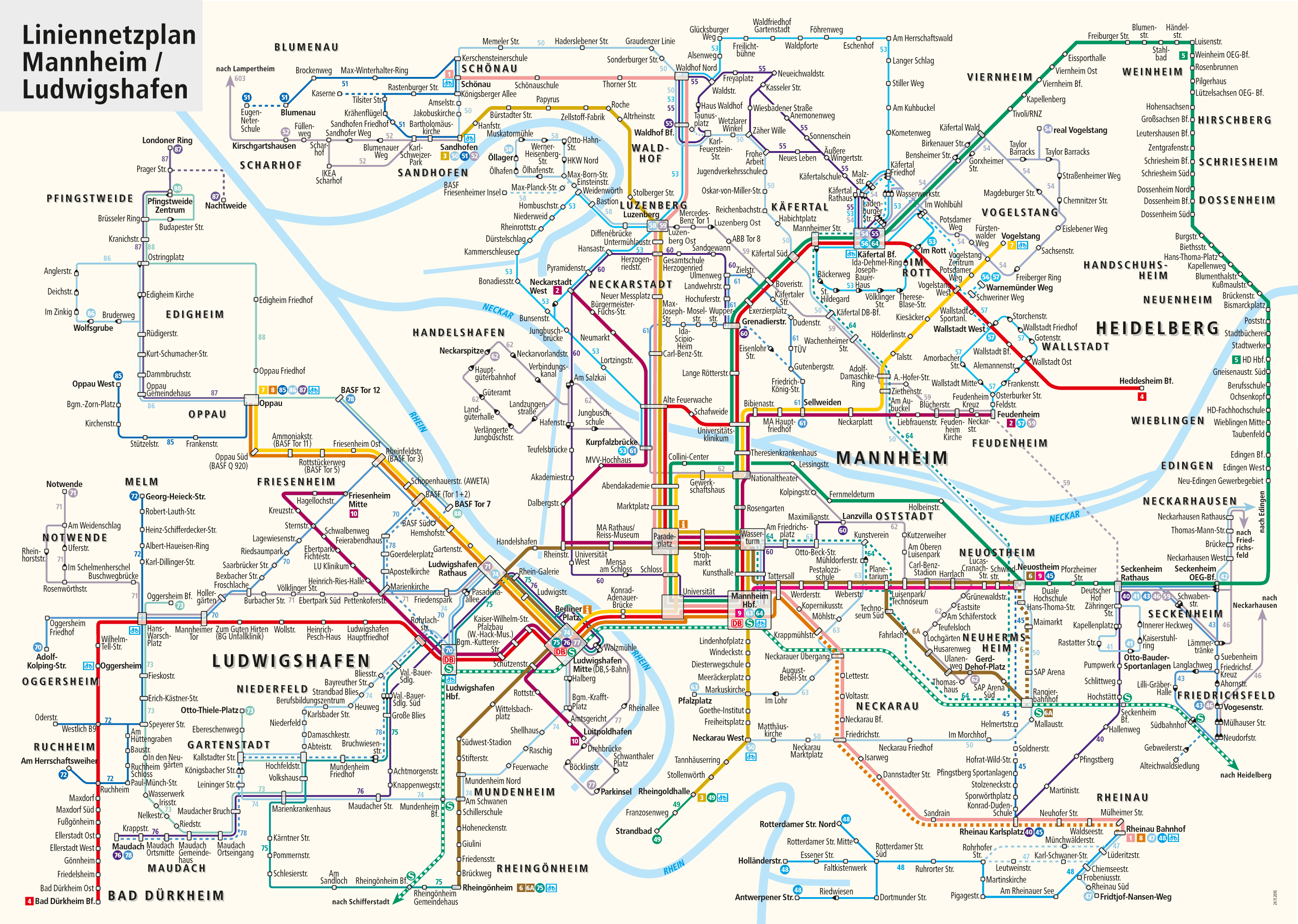Trip Report: Christmas in the Rhineland, 2023-Dec
I spent 52 days overseas from November 2023 to January 2024. This is the Christmas in Germany part of that trip.

You can't know any European history and not know that the Rhine is a big deal. The French national anthem was not originally called the La Marseillaise but the "War Song of the Army of the Rhine" written during a French attempt to annex the left bank of the Rhine. Germany later composed their own song Die Wacht am Rhein, the "Watch on the Rhine", in response to France's attempt to annex the left bank of the Rhine (but not in response to La Marseillaise, however, that was a different French effort to annex the left bank of the Rhine). It's all a rich tapestry and one of travel's great pleasures, for me, is to understand the places one reads about in history. So when a dear friend asked if I wanted to join them for a holiday in the Rhineland over Christmas, I could only say Yes.
The catch is that flights from Singapore to London in December are prohibitively expensive. So through a series of elaborate journeys - which we don't have time to go into right now - I travelled from Singapore to London in mid-November and stayed in London until the night before the night before the night before Christmas, which is where we begin this story.
Harwich Ferry (22nd December)
The first and most surmountable challenge of reaching Germany during Christmas is that trains, at that time, from London to Europe are in state of mild bedlam. The Eurostar is packed and expensive. Flights are packed, expensive, and you might even have to fly out of Heathrow. So my friend and I avoided all that by catching the overnight ferry from Harwich in the UK to Hoek de Holland in the Netherlands. We caught a high-speed train out of Euston Station on the evening of Friday December 22nd, made a quick change at Manningtree, then arrived at the ferry terminal in Harwich.
The ferry itself was a quasi-cruise ship similar to the Cook Strait's Inter-islander Ferry. Despite being the holiday season, the ferry wasn't full. There was a full service restaurant and bar, as well as children's area, viewing deck and cinema. We didn't avail ourselves of these services, however, as we brought Sainbury's meal deals for dinner. The ferry was large and, to coin a term, ballastful, so our crossing during choppy weather experienced nothing worse than mild rocking.
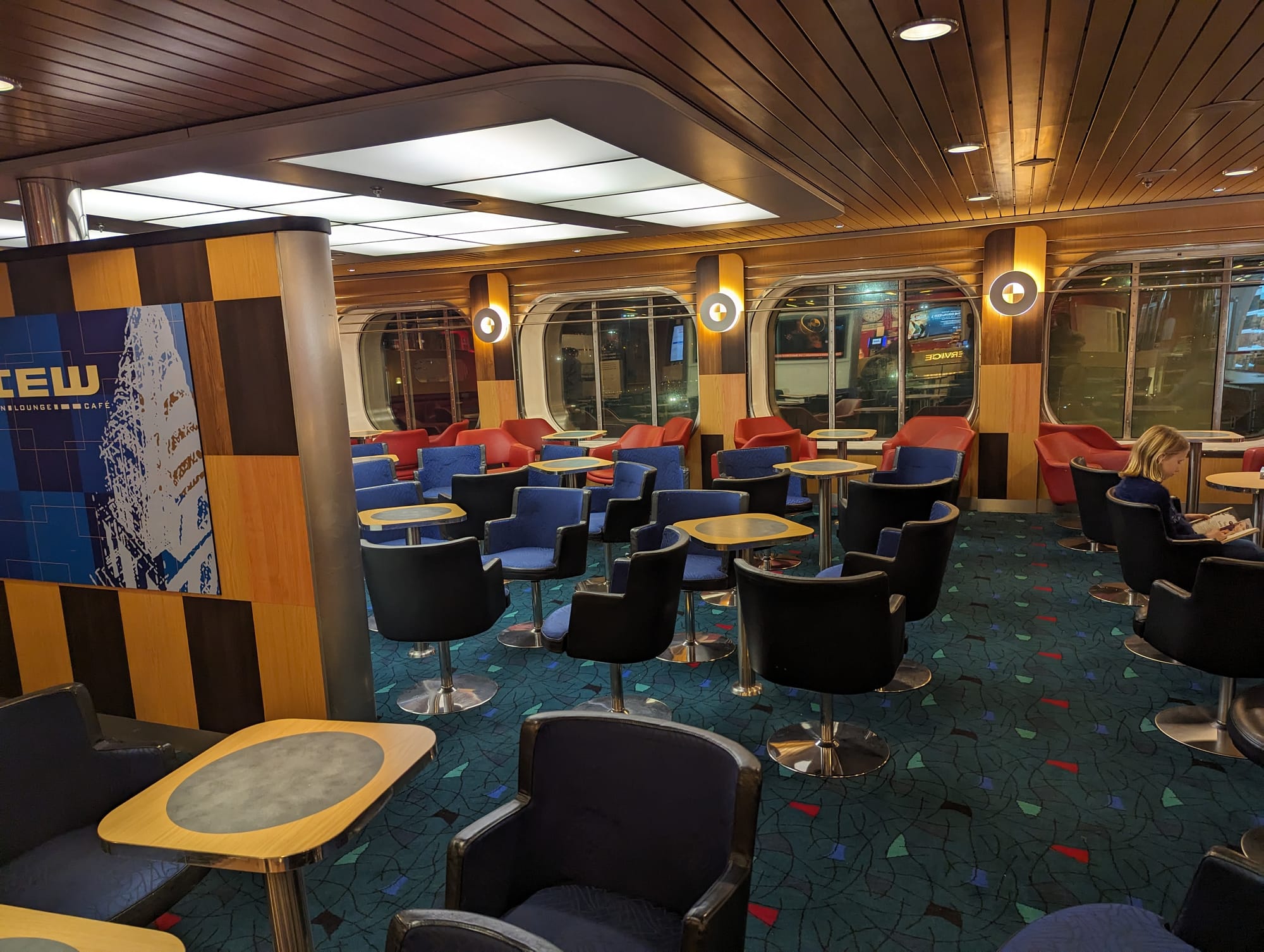

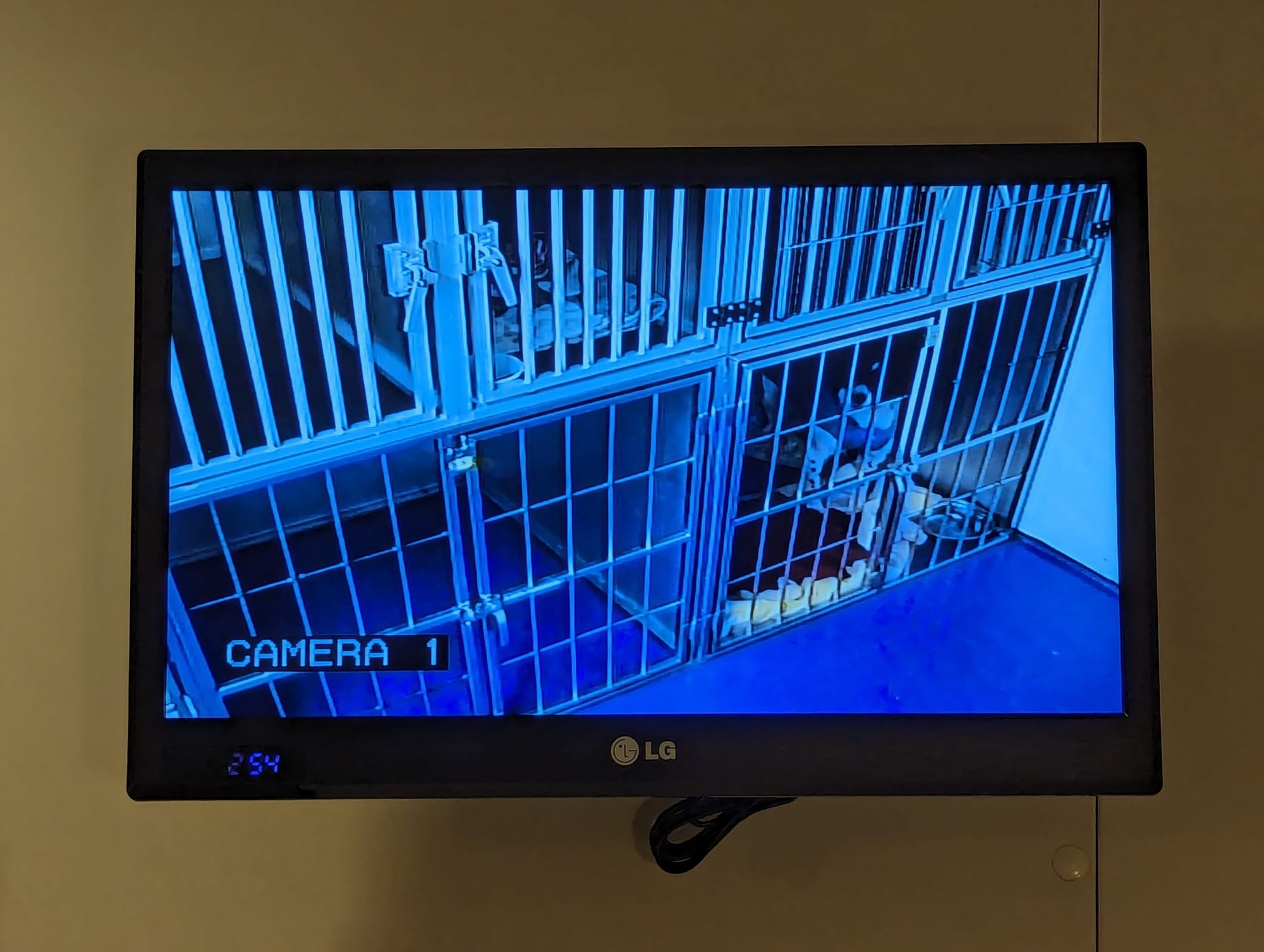
The ferry's outdoor viewing deck was rather cold on this December evening, but the bedroom TV had a channel for watching your pets in the pet storage room.
The Netherlands (23rd December)
Our travel plans were for a Rhineland Christmas, not a Dutch Christmas, although having transited through the latter to reach the former, perhaps we chose poorly. Our travel through the Netherlands went:
- Ferry to Hoek de Holland
- Tram to Schiedam Centrum in Rotterdam
- Suburban train to Rotterdam Centraal Station
- Inter-city train to Eindhoven (the first town the Allies captured in Market Garden)
- Connecting inter-city train to Venlo on the German border
These Dutch trains ran like clockwork. We scanned onto the inter-city trains with QR codes. The connecting train was waiting for us on the opposite side of the platform with its doors open. The rolling stock was new. And while the trains were close to full, they were neither crowded nor short on seats.
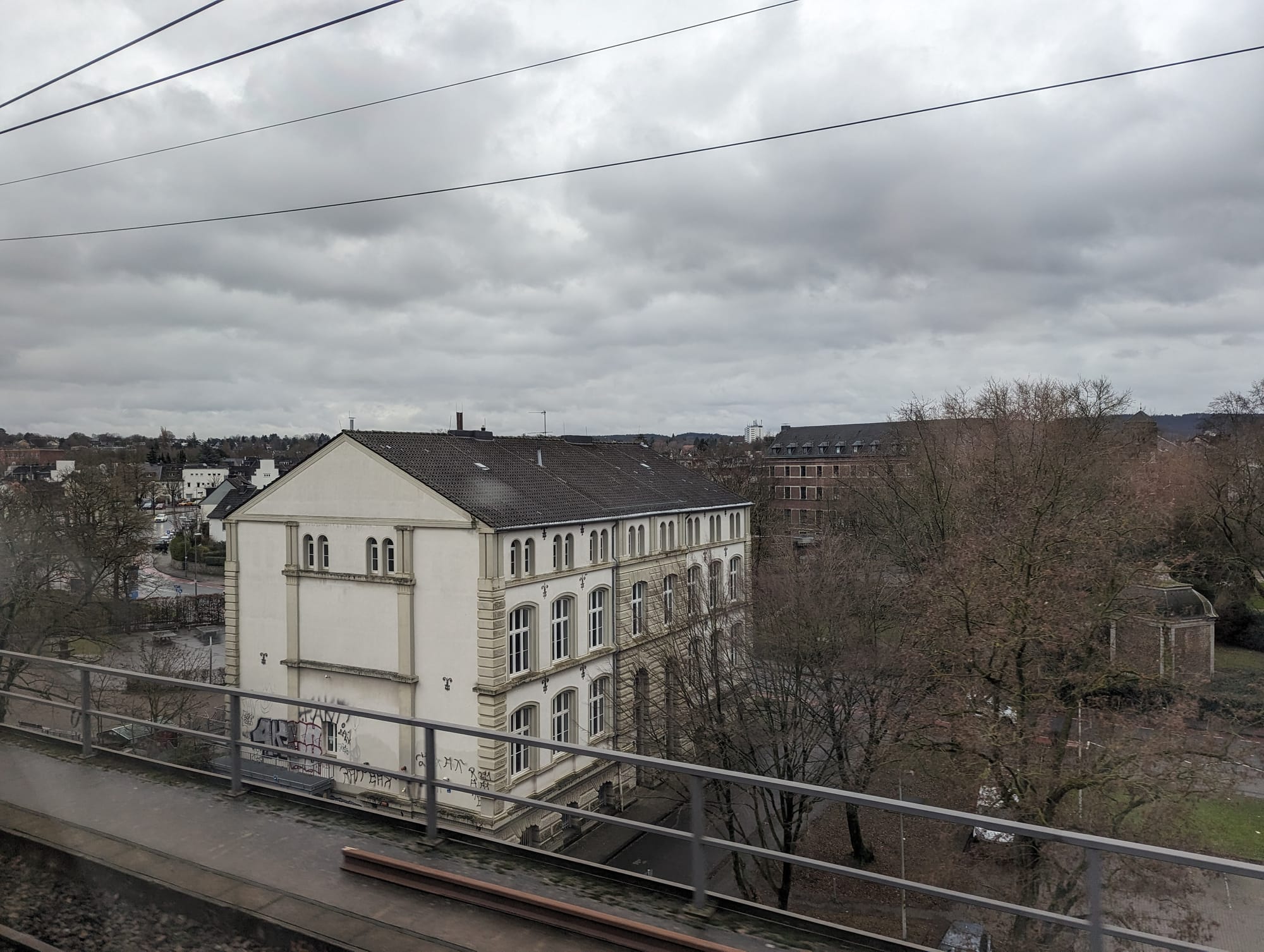
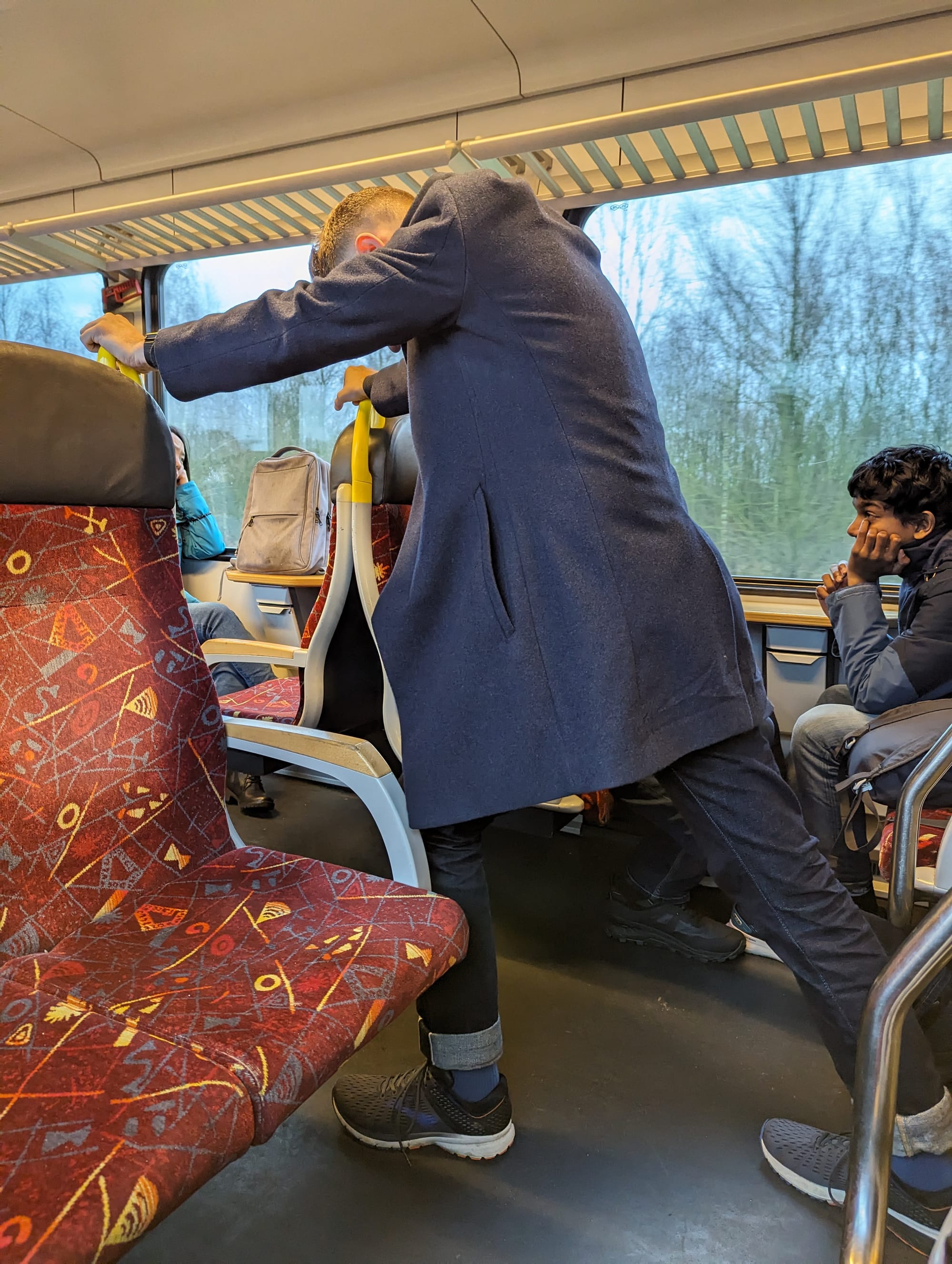
Trains in the Netherlands were excellent, five stars, no notes, but you do have to do your own stretches.
The German trains were much worse. The government has under-invested in Deutsche Bahn (DB) for years and delays are common to the point that many train managers no longer announce them. We planned to go from Venlo direct to Cologne, but the DB train at Venlo was so crowded that the doors couldn't close. Thanks to some adroit re-timetabling, we found an alternate route:
- Commuter train to Roermond, the Netherlands
- Inter-city train to Heerlen, the Netherlands
- Commuter train to Aachen, Germany (former seat of Charlemagne, also called Aix-la-Chapelle in French and sometimes in English)
- Inter-city train to Cologne, Germany
This improvised itinerary got us to Cologne, ready to enjoy churches and bakeries.
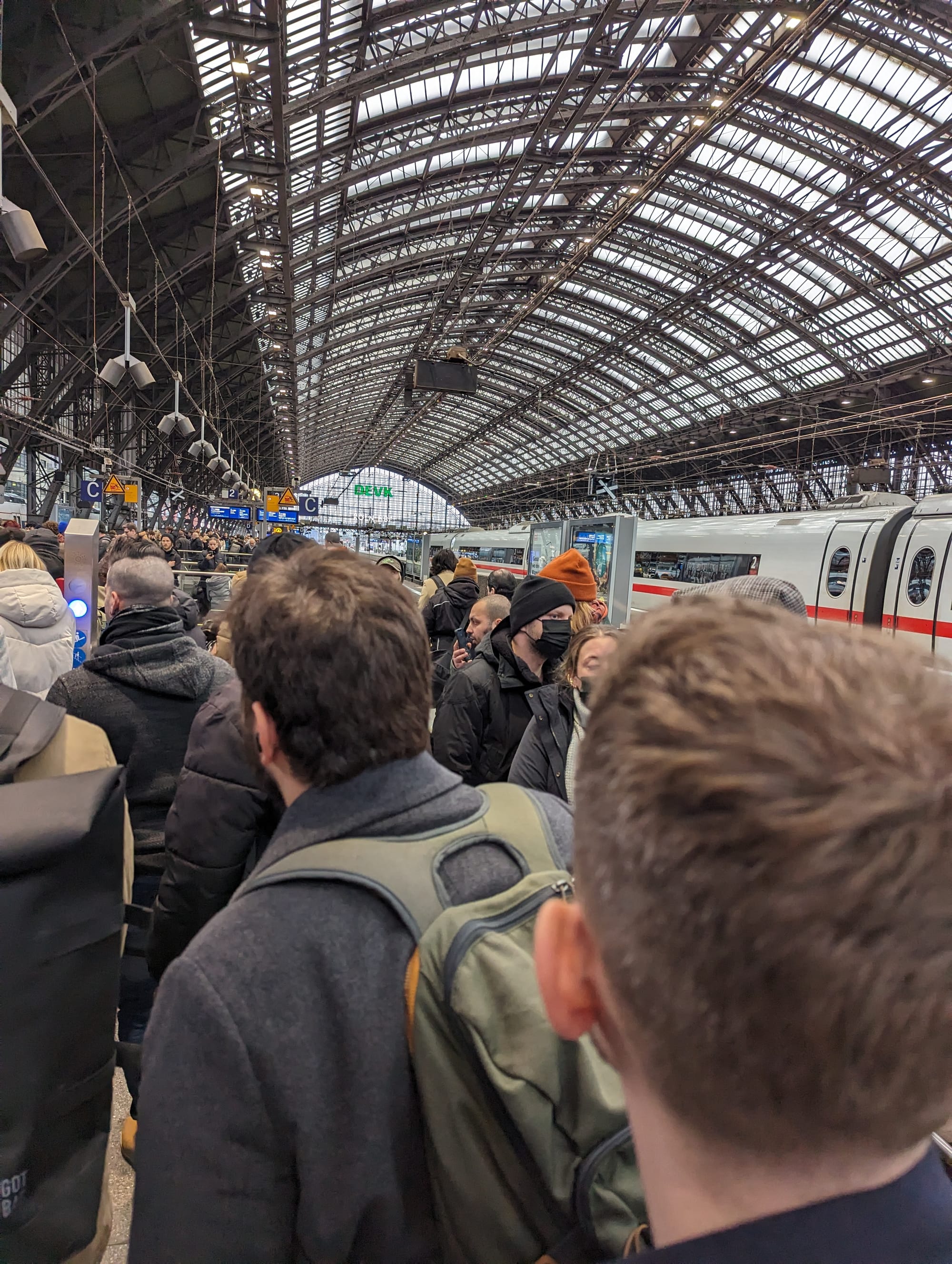
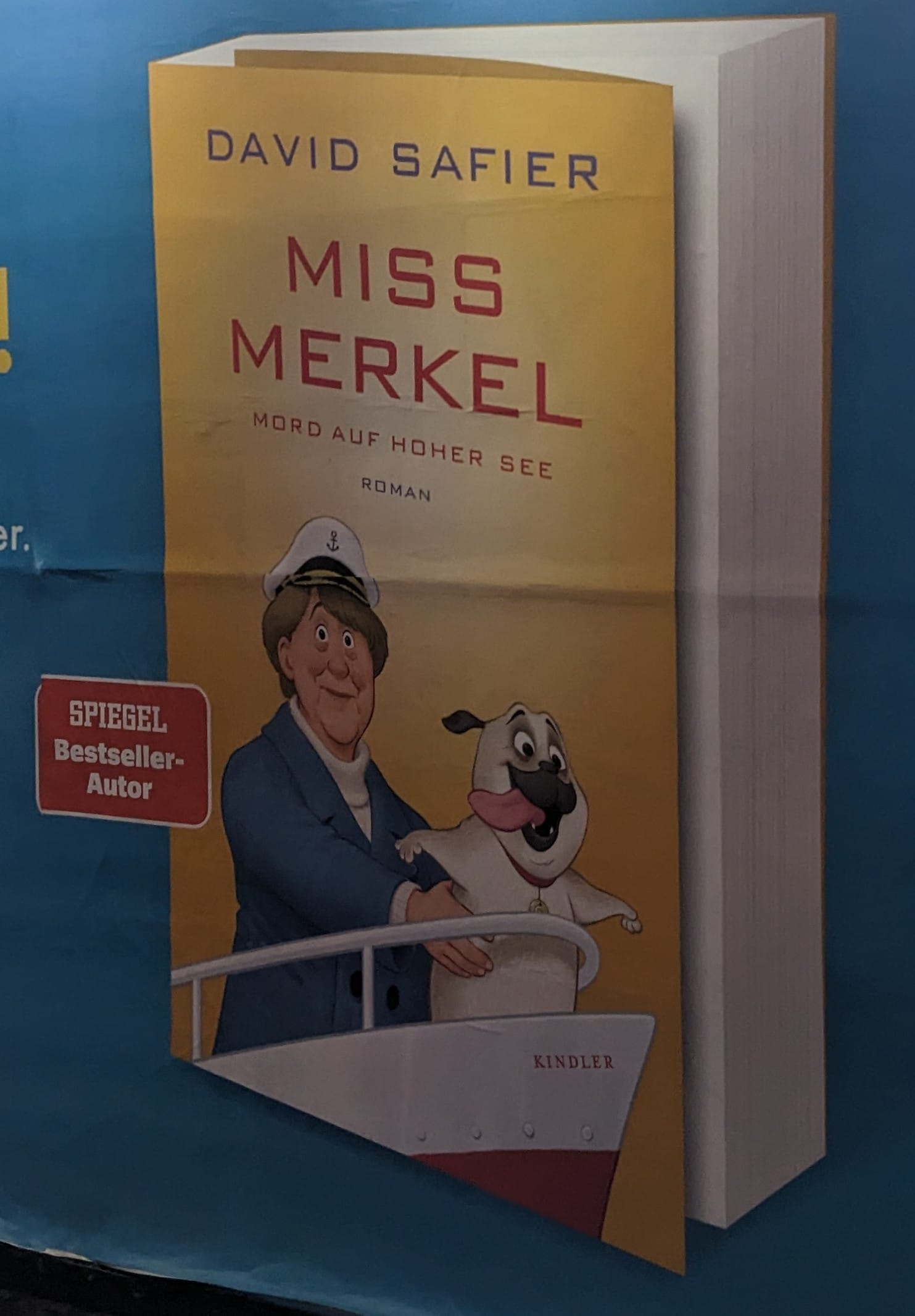
Cologne station was packed, but at least there was a billboard advertising the new book "Miss Merkel, Murder on the High Seas".

Cologne, Germany (23rd December)
During World War II, just over 60% of Cologne's built-up area was destroyed, although miraculously not the cathedral. My theory is that this was either good luck, or, just as the Luftwaffe did to St Paul's in London, the Allied bombers avoided damaging the cathedral so they could use it's towering spires as a navigational aide. The the Allied pilots would have been right to do so, as Cologne cathedral is the tallest twin-spire church in the world and prime candidate for best navigational aide in the entire city. Indeed, it used to be the tallest church spire in the world, period, from its completion in 1880 until 1890 when Ulm built the tallest single-spire church in the world.
Given the surplus of spire sights in Cologne cathedral, we climbed up to enjoy the view.
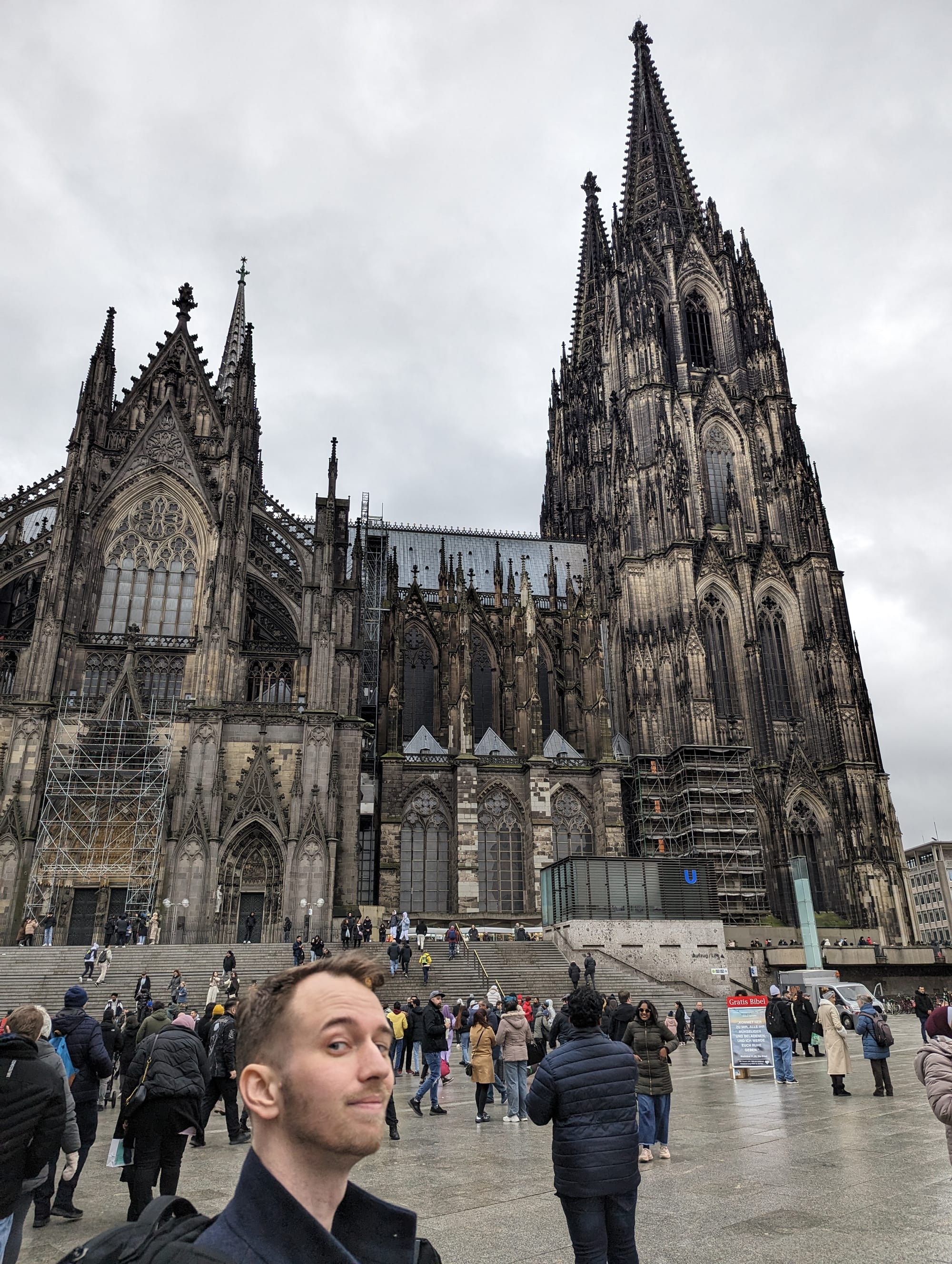
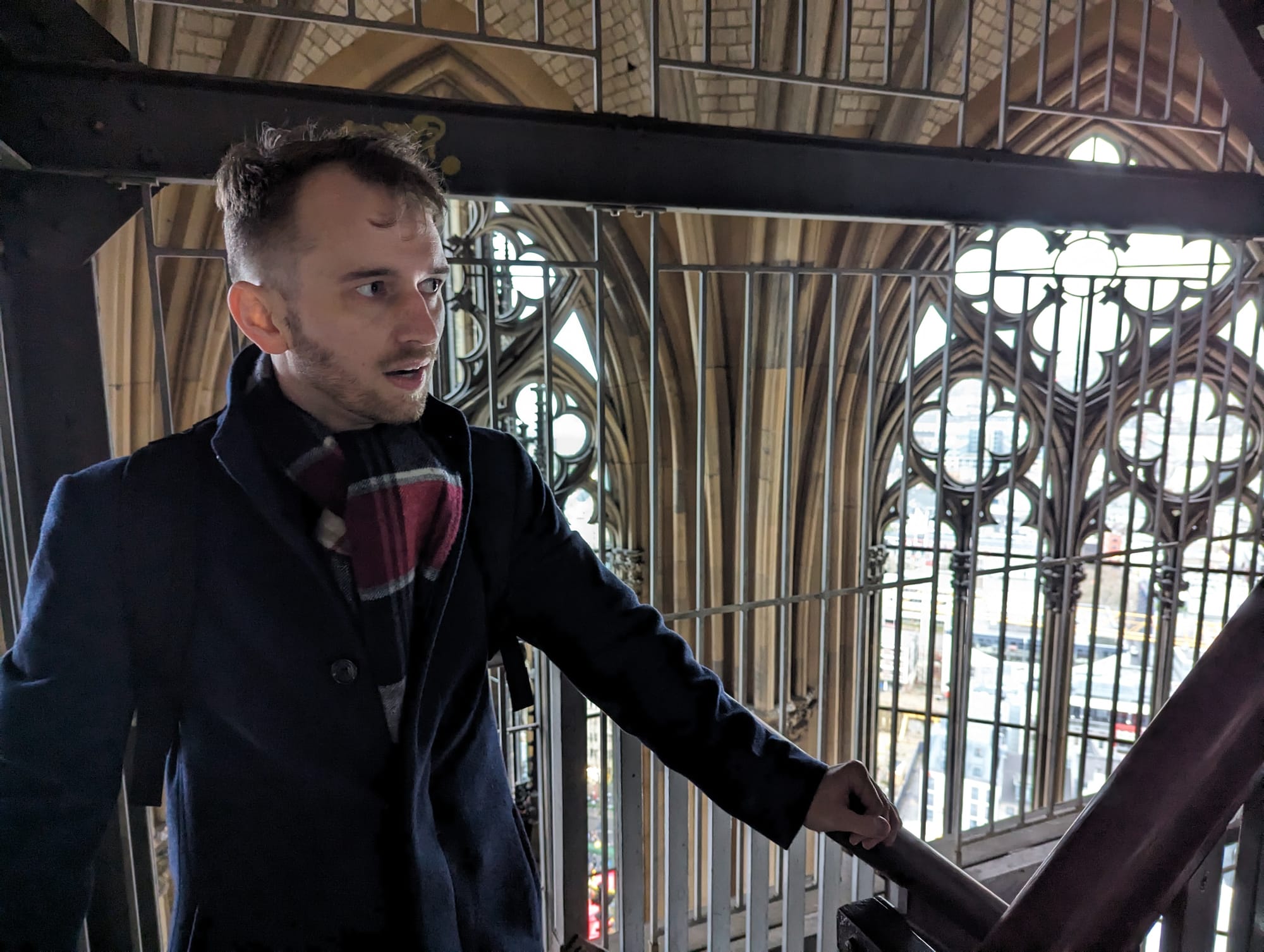
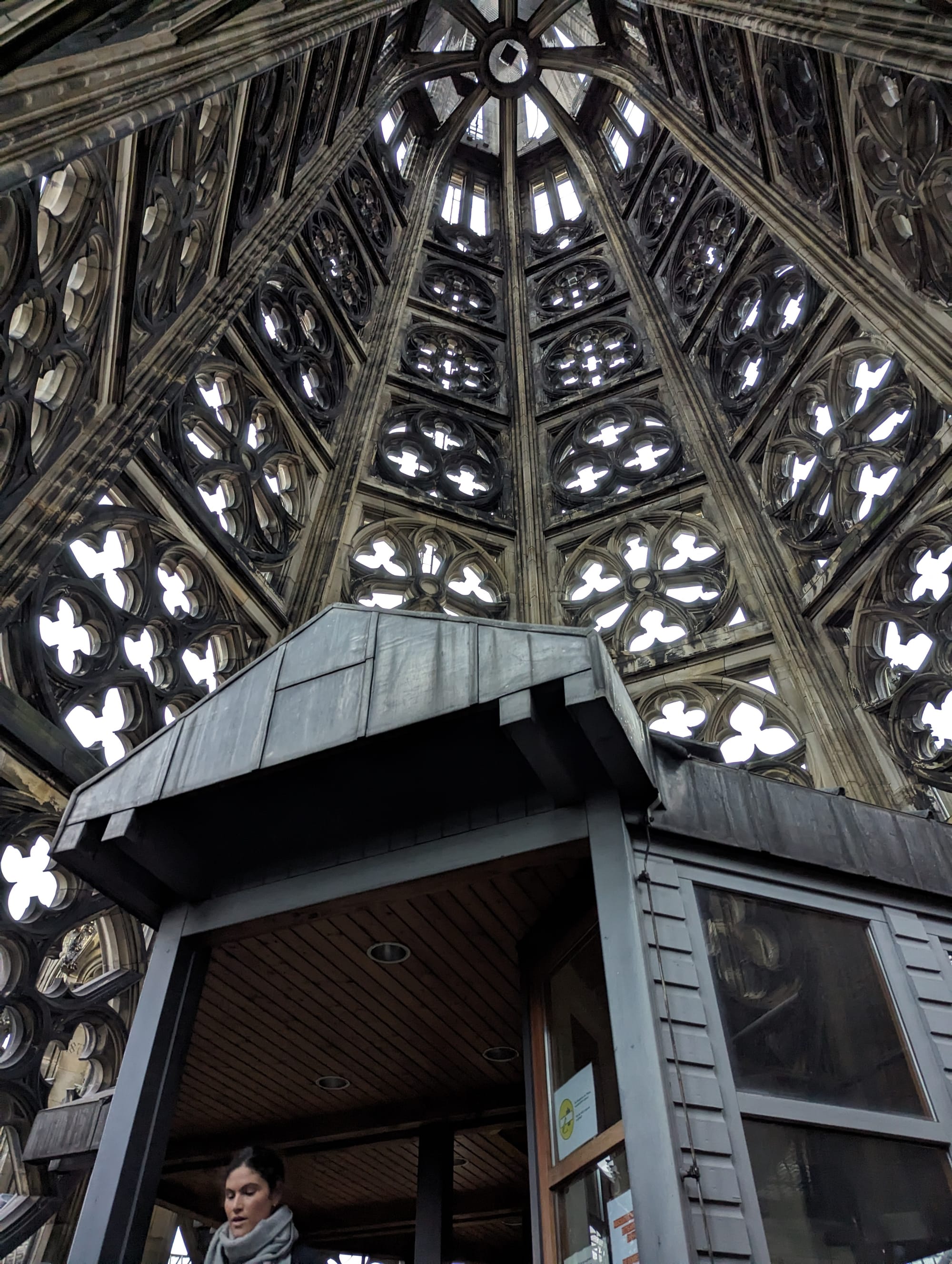
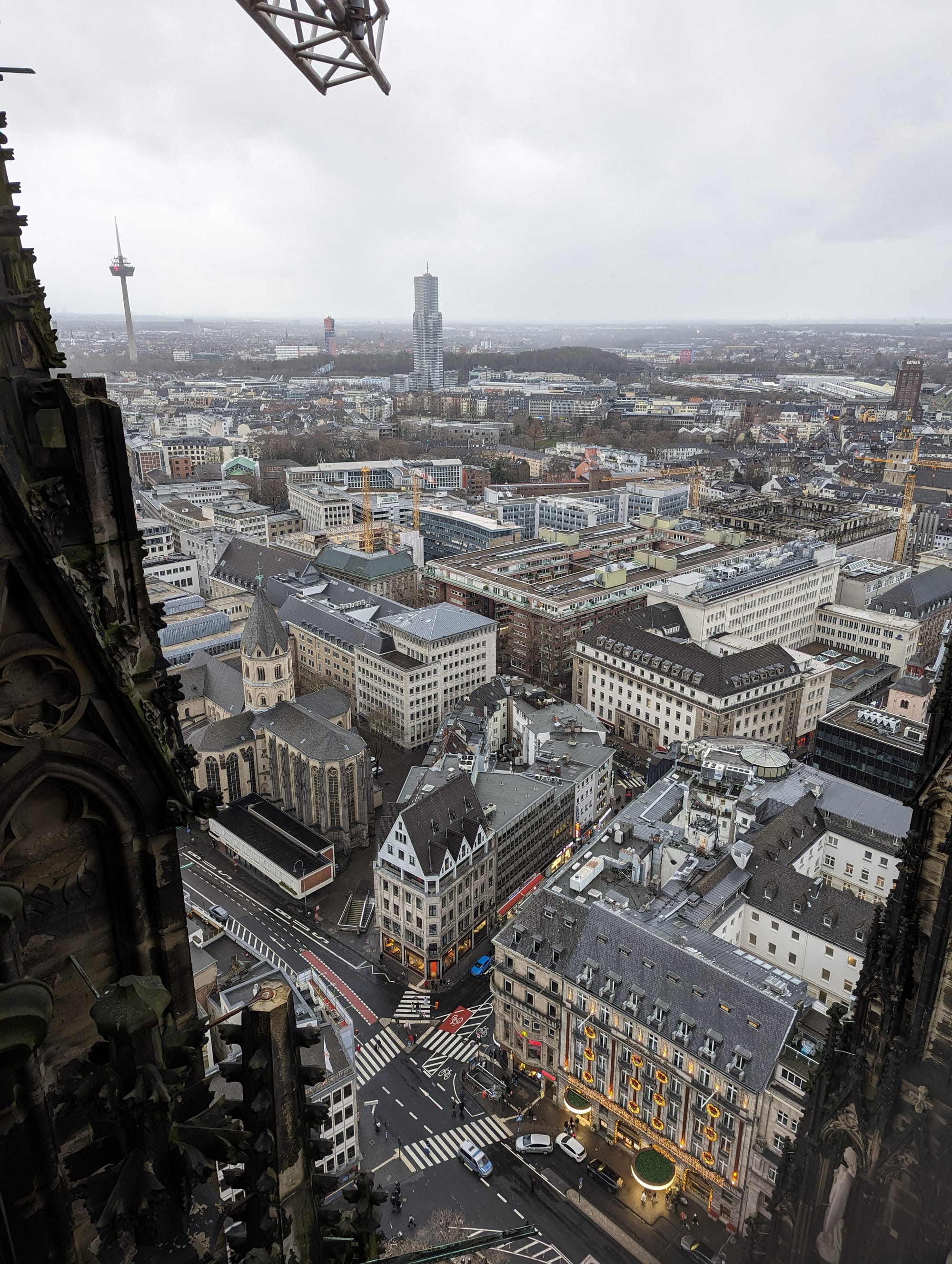
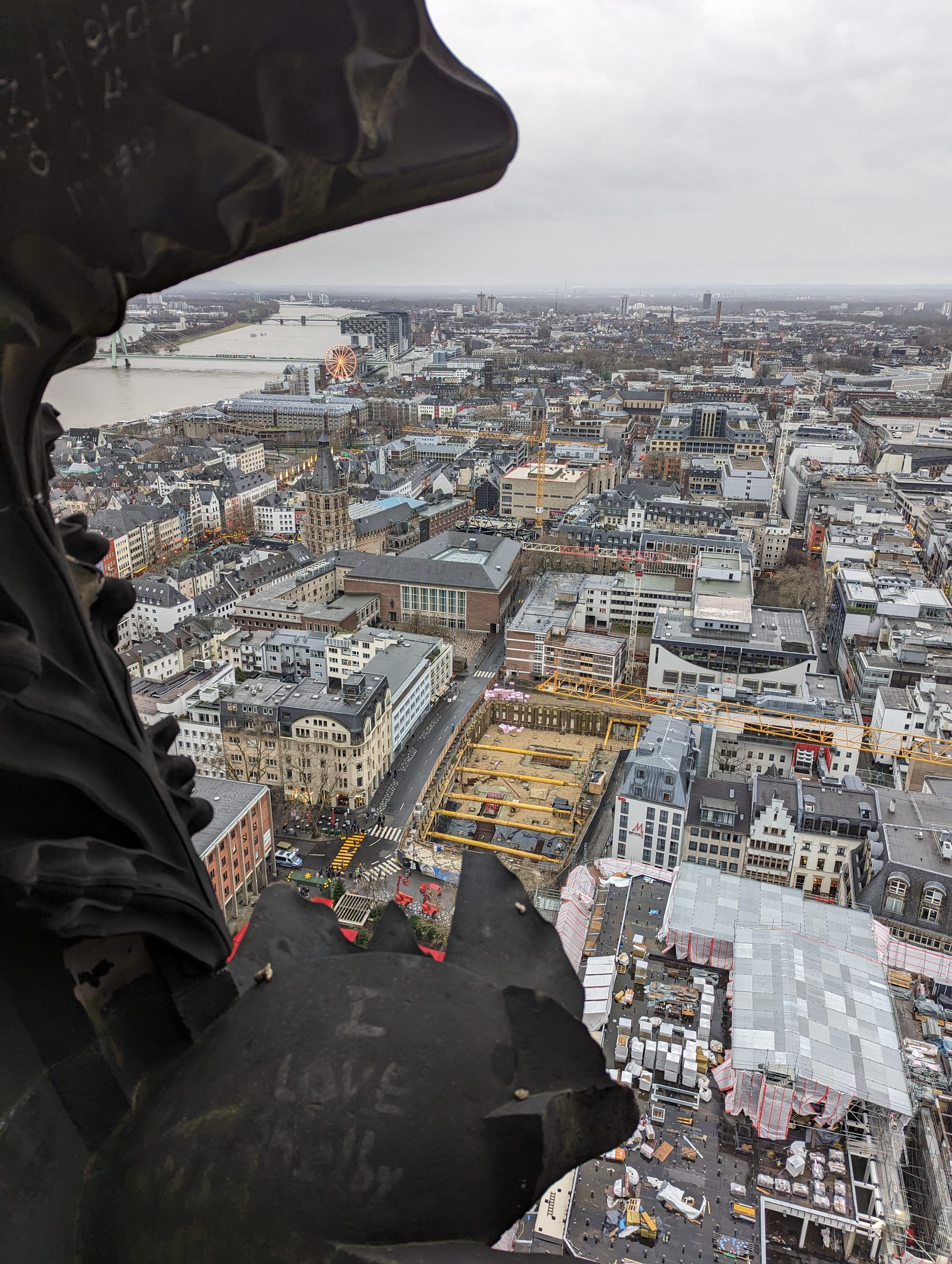
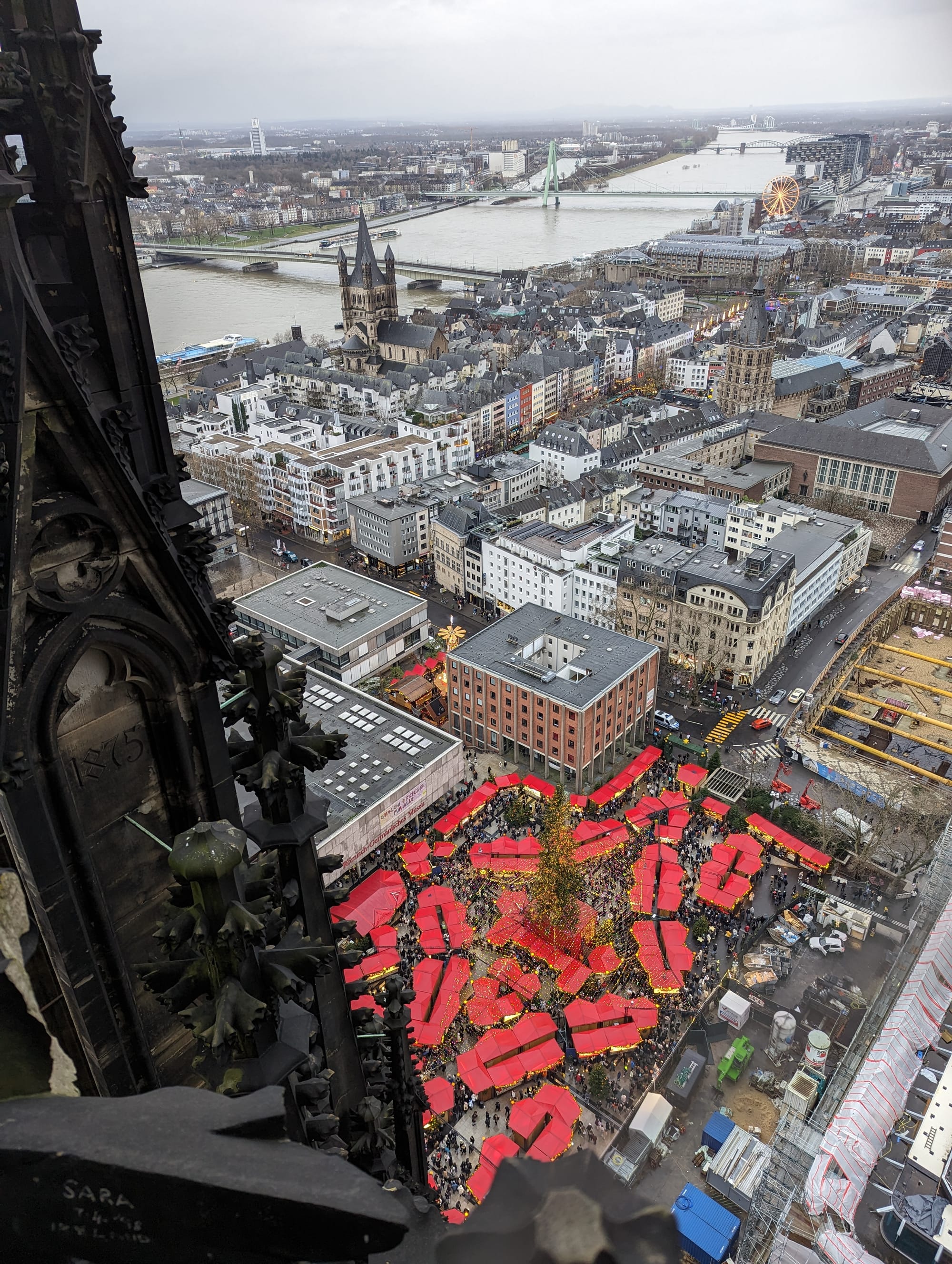
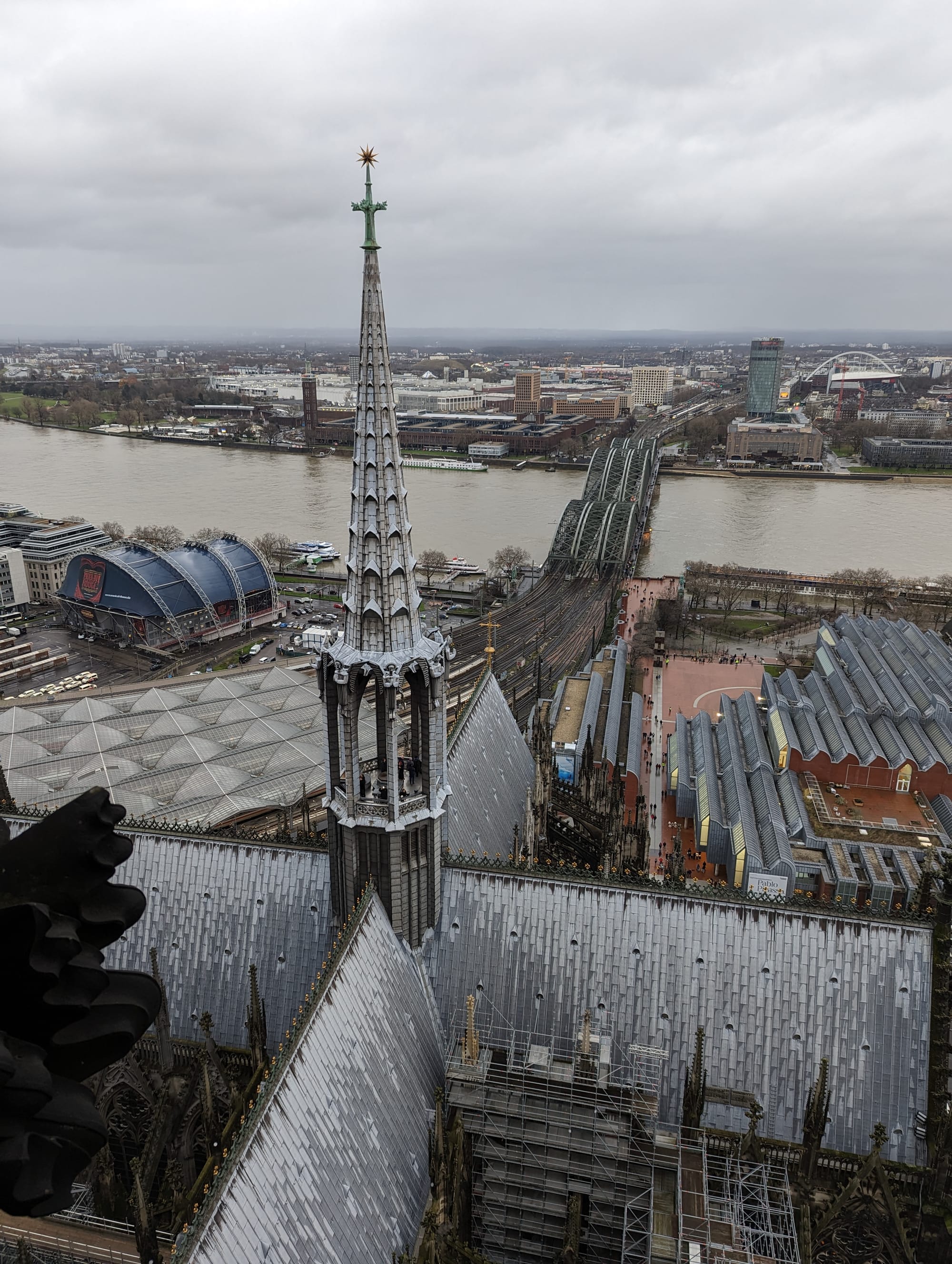
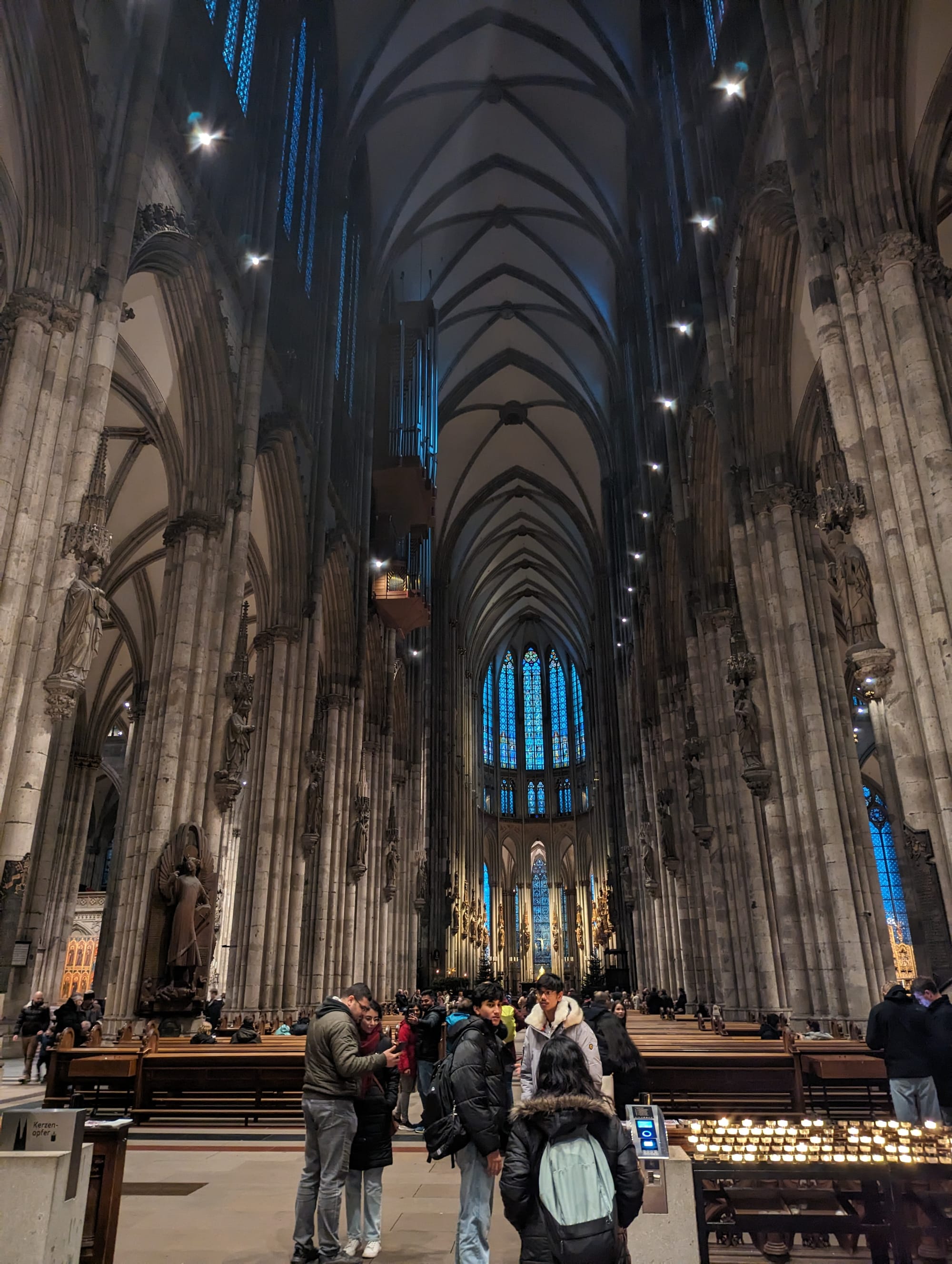
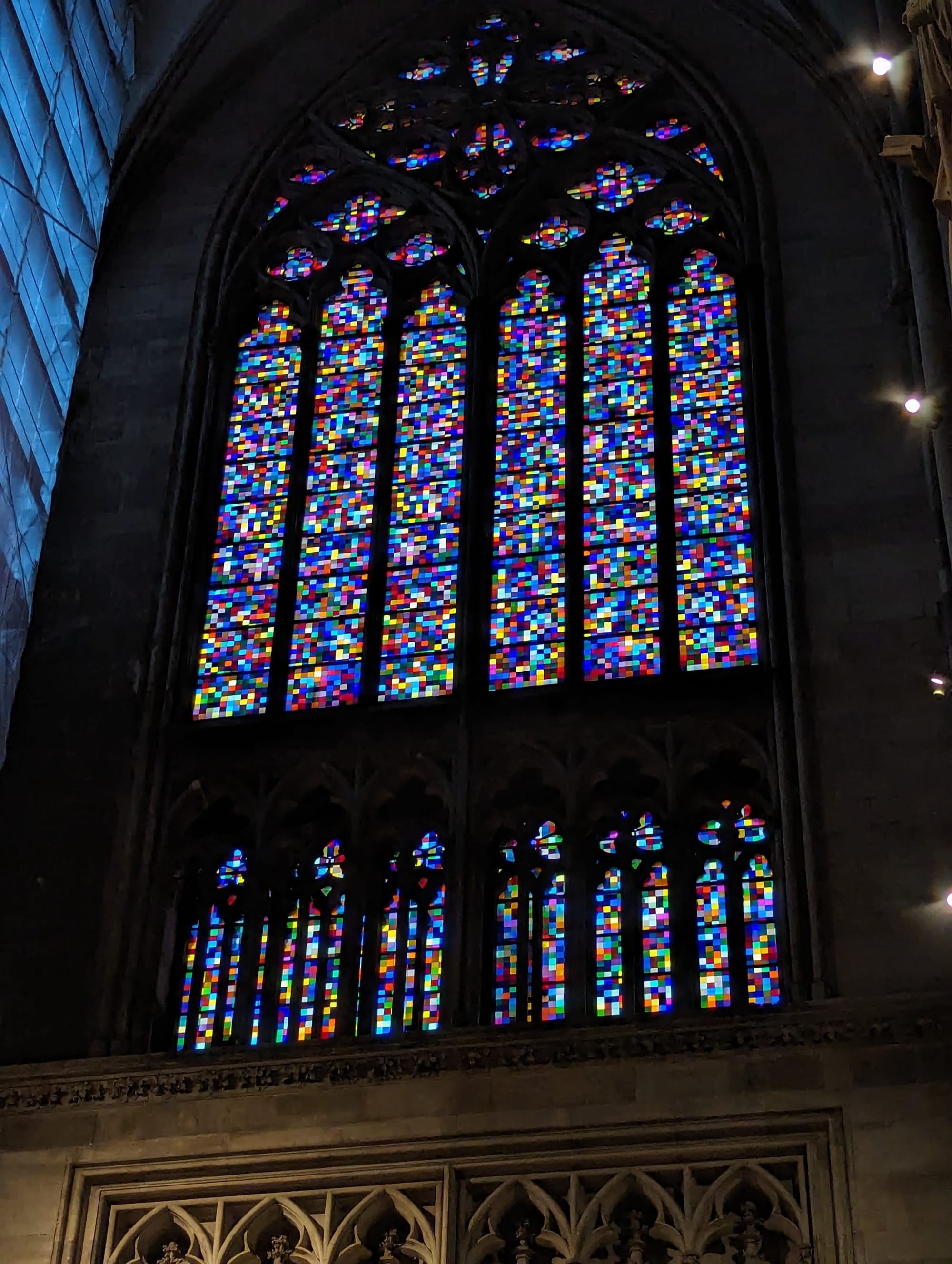
The walk up was a bit of an effort and unkind to the alto-phobic, but the walk down was much easier and the interior featured what I presume was a loving homage to Tetris.
We then went for a walk by the Köln Opera. We couldn't go in as the Opera House was being renovated, but I was chuffed to see (the exterior facade of) the building where Keith Jarrett performed the Köln Concert in 1975. The recording of the concert is the number one selling solo-piano album in history and the story behind it is so amazing that I can't do it justice. To quote from 1001 Albums You Must Hear Before You Die:
The concert was organized by 17-year-old Vera Brandes, then Germany’s youngest concert promoter. At Jarrett's request, Brandes had selected a Bösendorfer 290 Imperial concert grand piano for the performance. However, there was some confusion by the opera house staff and instead they found another Bösendorfer piano backstage – a much smaller baby grand – and, assuming it was the one requested, placed it on the stage. Unfortunately, the error was discovered too late for the correct Bösendorfer to be delivered to the venue in time for the evening's concert. The piano they had was intended for rehearsals only and was in poor condition and required several hours of tuning and adjusting to make it playable. The instrument was tinny and thin in the upper registers and weak in the bass register, and the pedals did not work properly.
Jarrett arrived at the opera house late in the afternoon and was tired after an exhausting long drive from Zürich, Switzerland, where he had performed a few days earlier. He had not slept well in several nights and was in pain from back problems and had to wear a brace. After trying out the substandard piano and learning a replacement instrument was not available, Jarrett nearly refused to play and Brandes had to convince him to perform as the concert was scheduled to begin in just a few hours. The concert took place at the unusually late hour of 23:30, following an earlier opera performance. This late-night time slot was the only one the administration would make available to Brandes for a jazz concert – the first ever at the Köln Opera House. The show was completely sold out and the venue was filled to capacity with over 1,400 people at a ticket price of 4 DM ($1.72).
During the set, Jarrett used ostinatos and rolling left-hand rhythmic figures to give the effect of stronger bass notes, and concentrated his playing in the middle portion of the keyboard. Despite the obstacles, Jarrett's performance was enthusiastically received by the audience and the subsequent recording was acclaimed by critics. It remains his most popular recording and continues to sell well, decades after its initial release.
We had dinner of pork knuckle and schnitzel at a traditional beer hall, went grocery shopping as the stores would be closed the next day, then caught the train from Cologne to Koblenz. Again, the trains were a shambles. We reached Koblenz late in the evening and checked-in to our AirBnB.
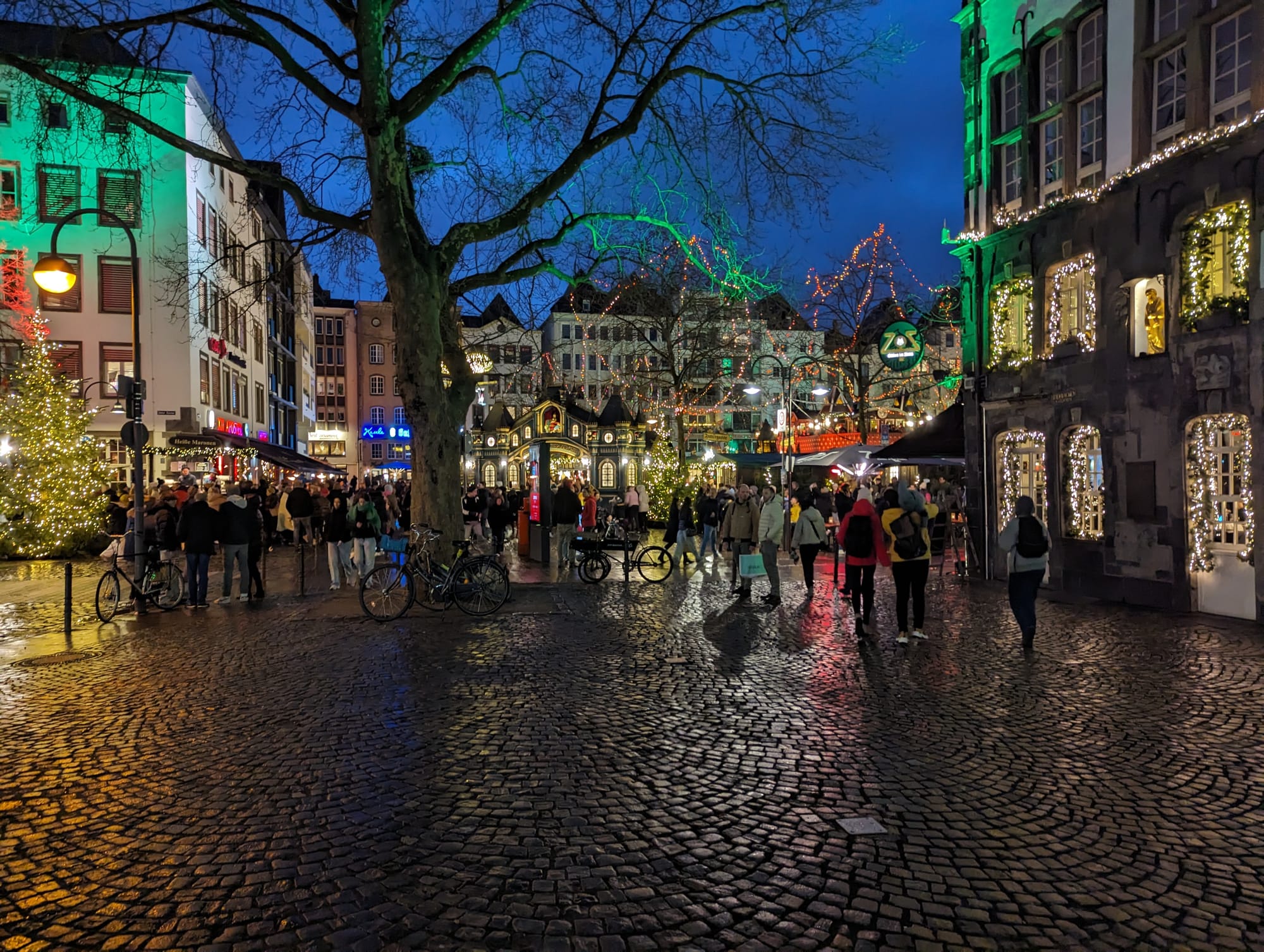
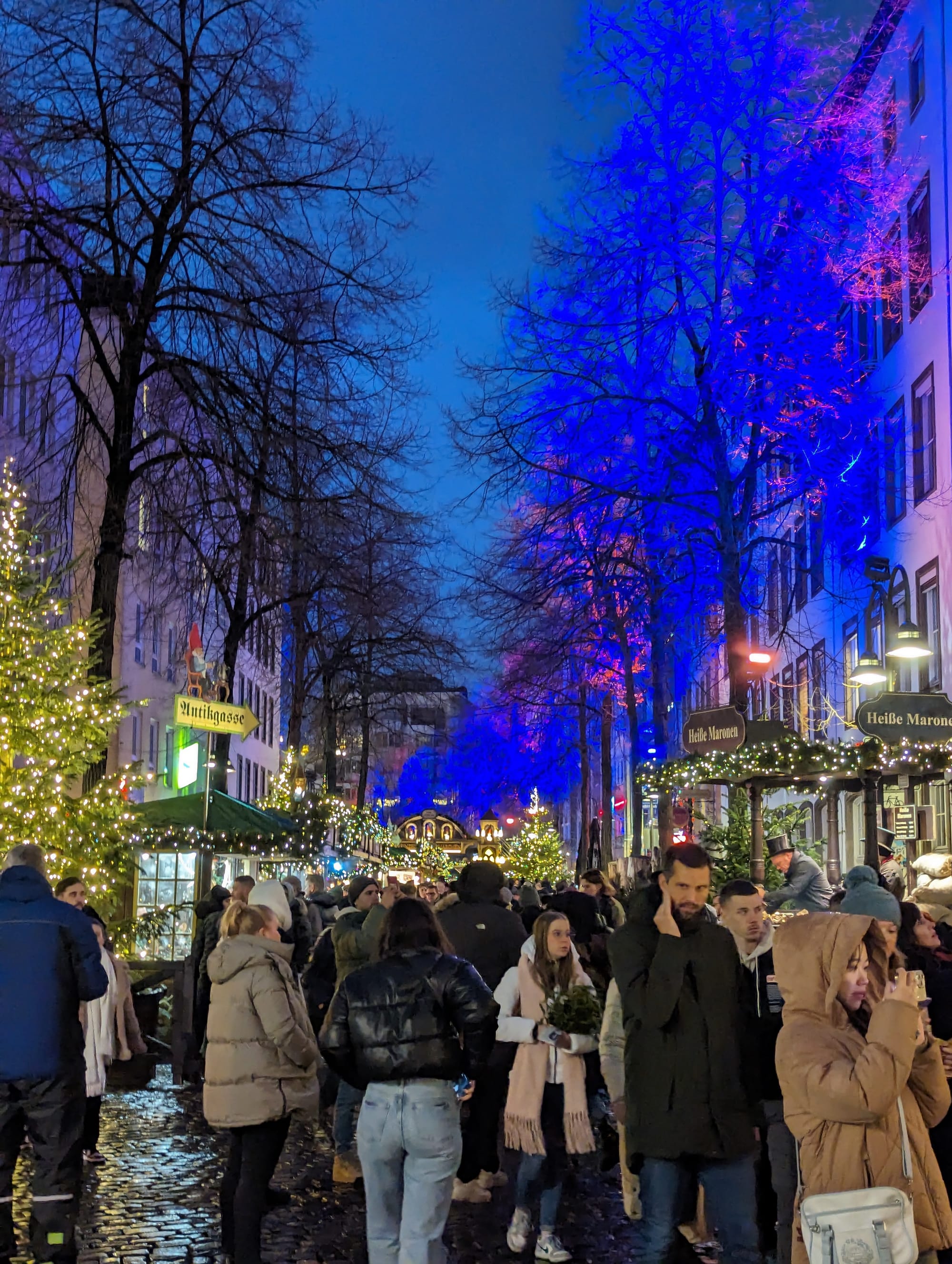
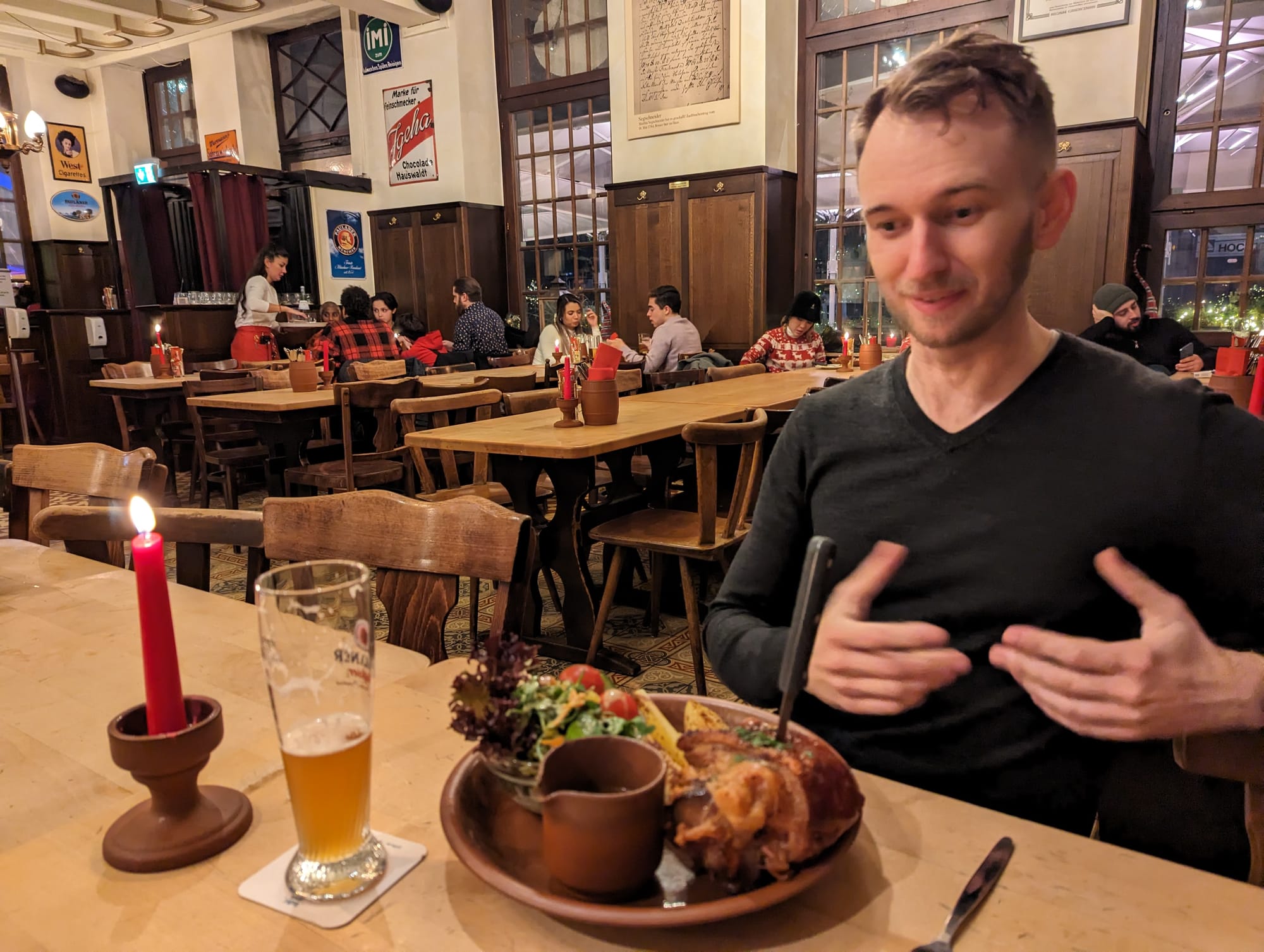
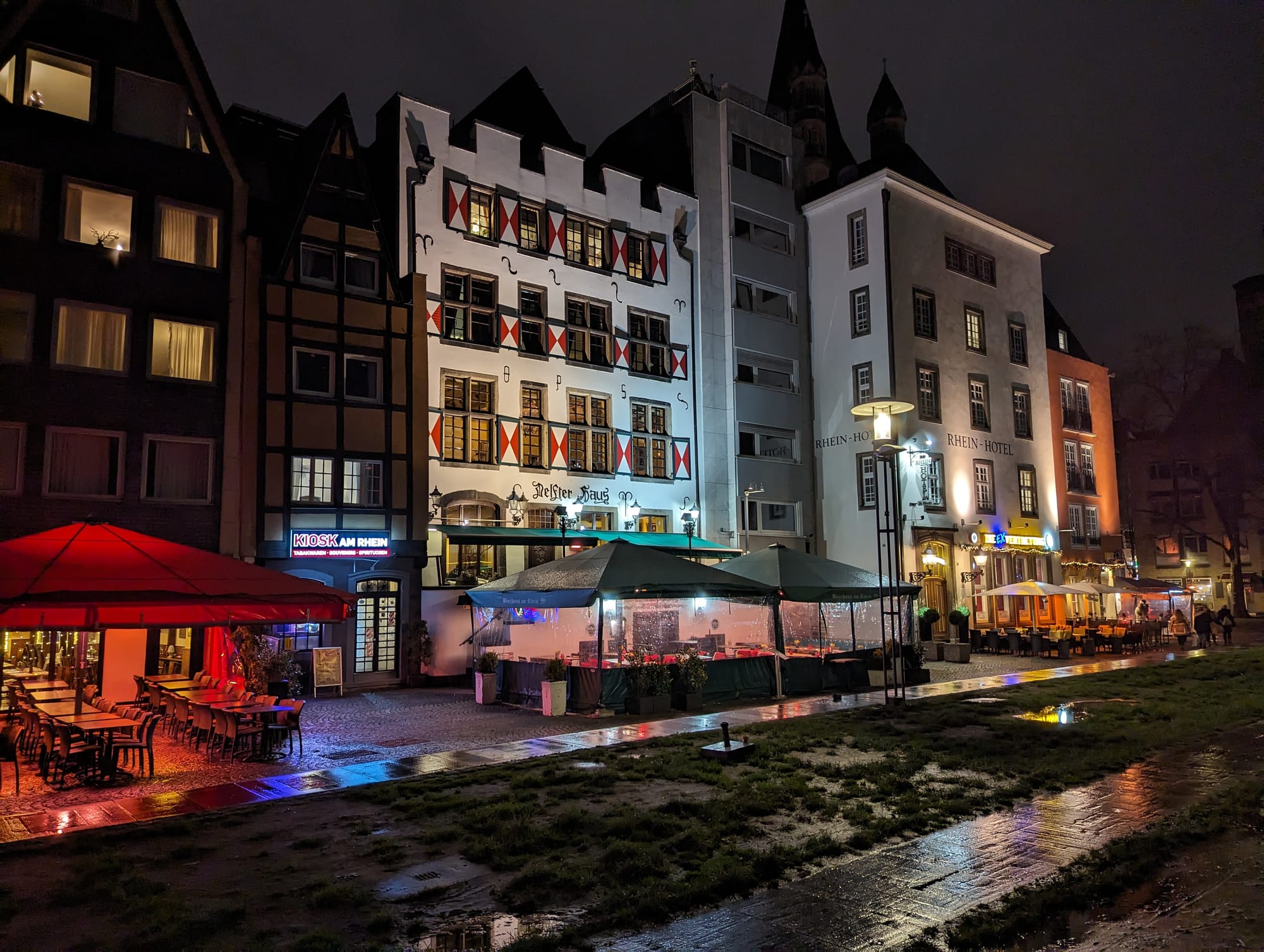
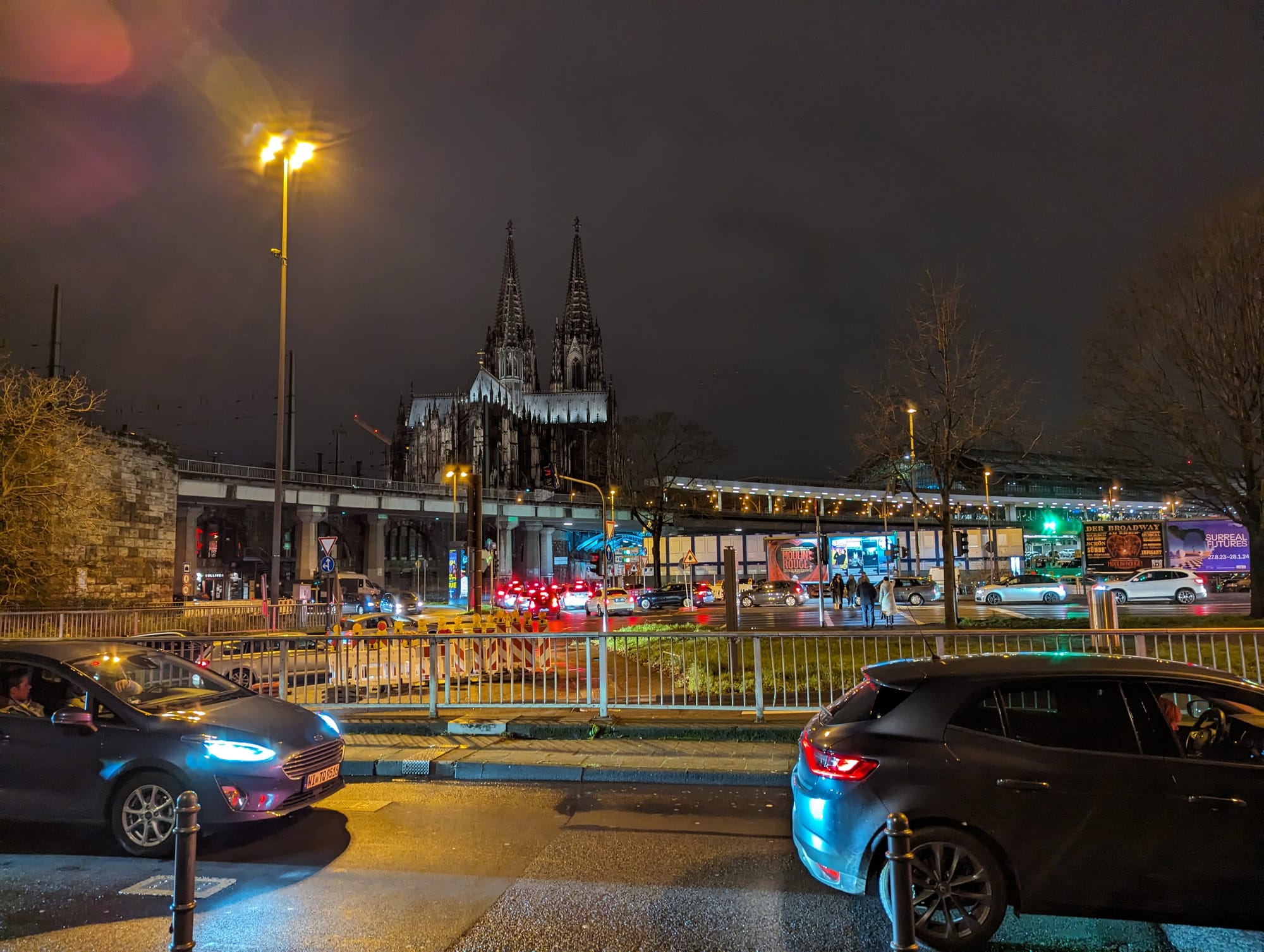
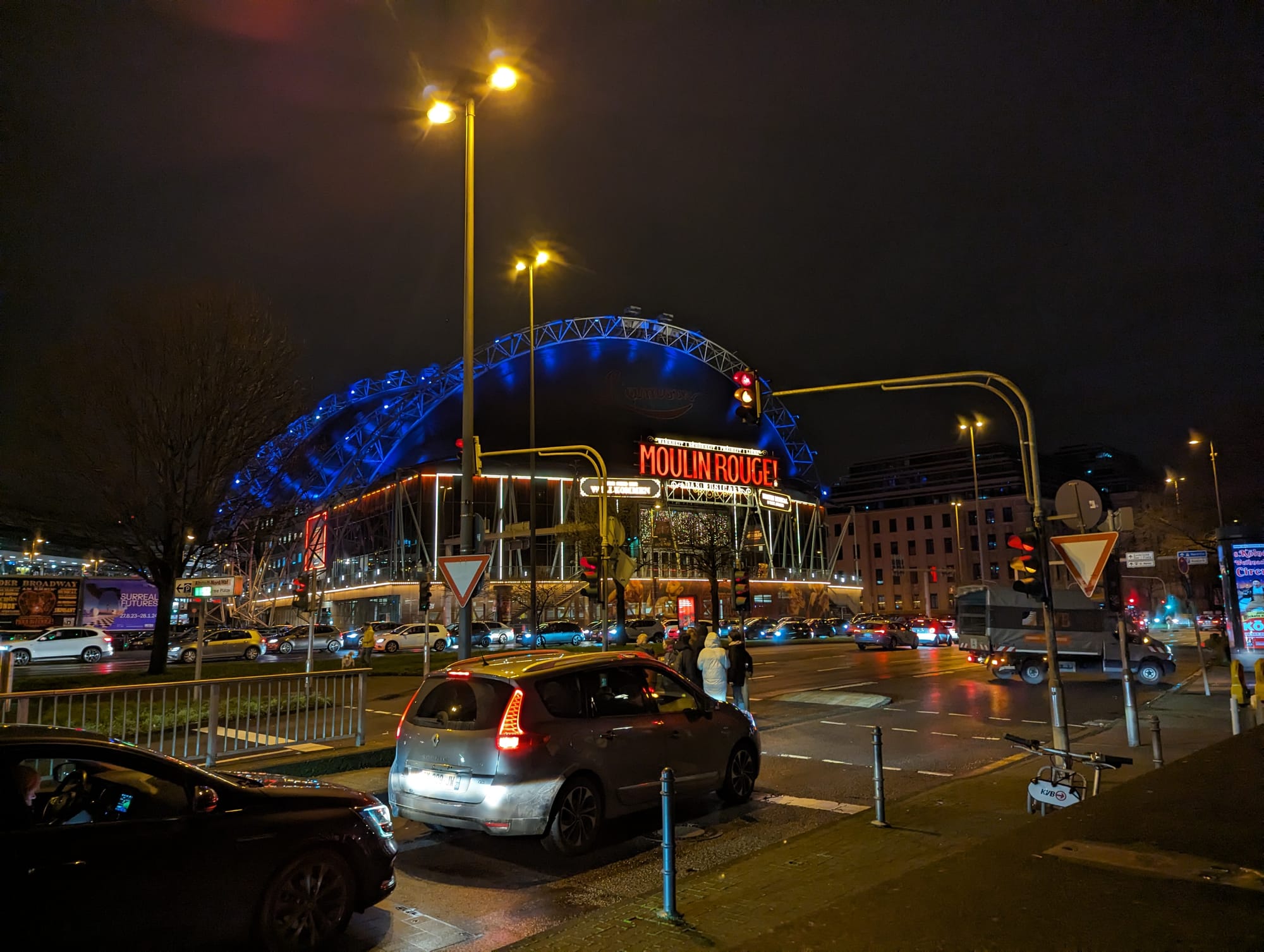
I was so enamoured to be in the presence of the Koln Opera I neglected to take a photo of the construction site surrounding it.
Cochem, Germany (24th December)
We caught the train from Koblenz to Cochem for a day trip. The train followed the Moselle river, downstream of Luxembourg and Metz where I was a few weeks earlier. The town itself is tiny with only 5,000 inhabitants.
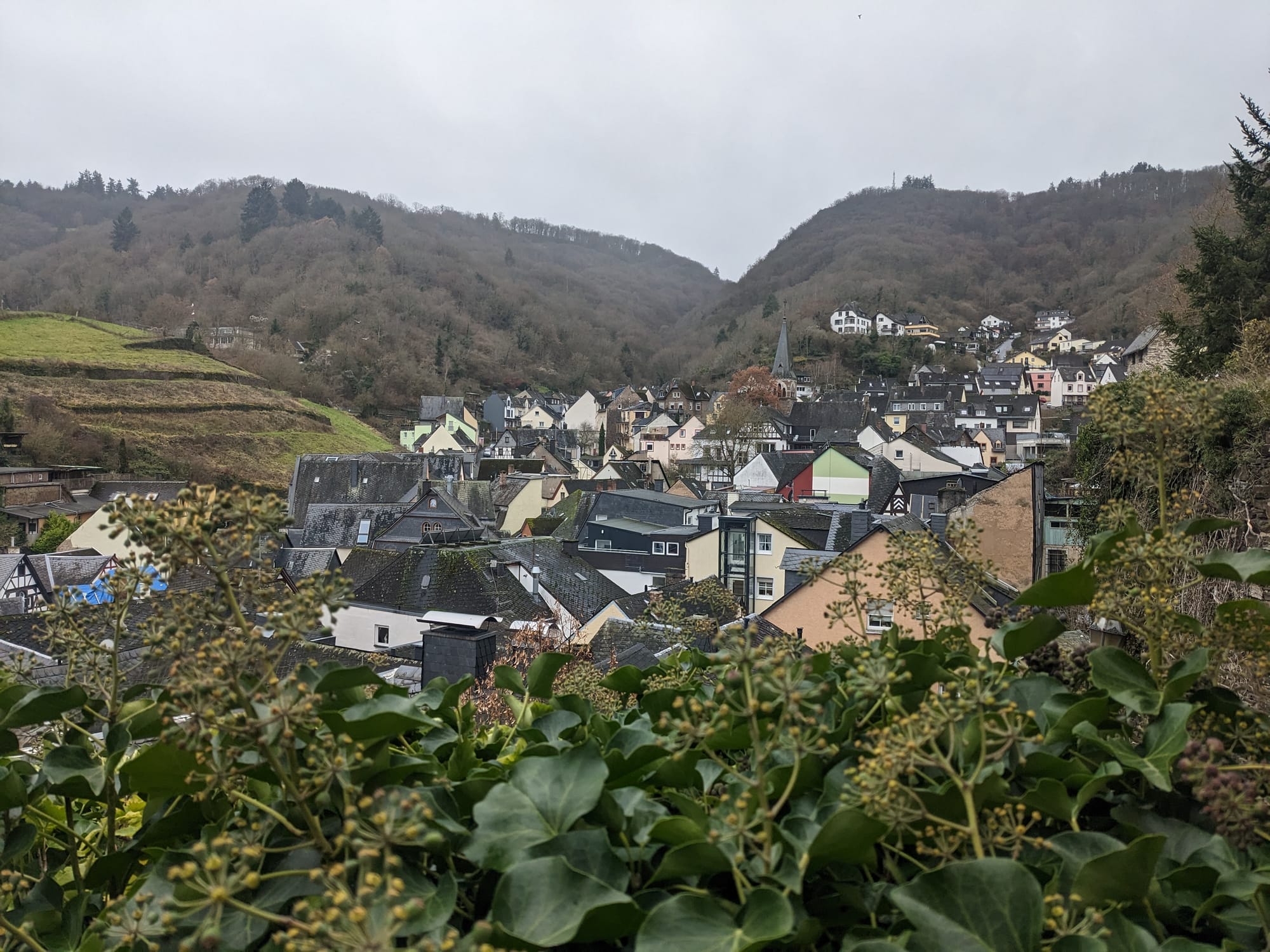
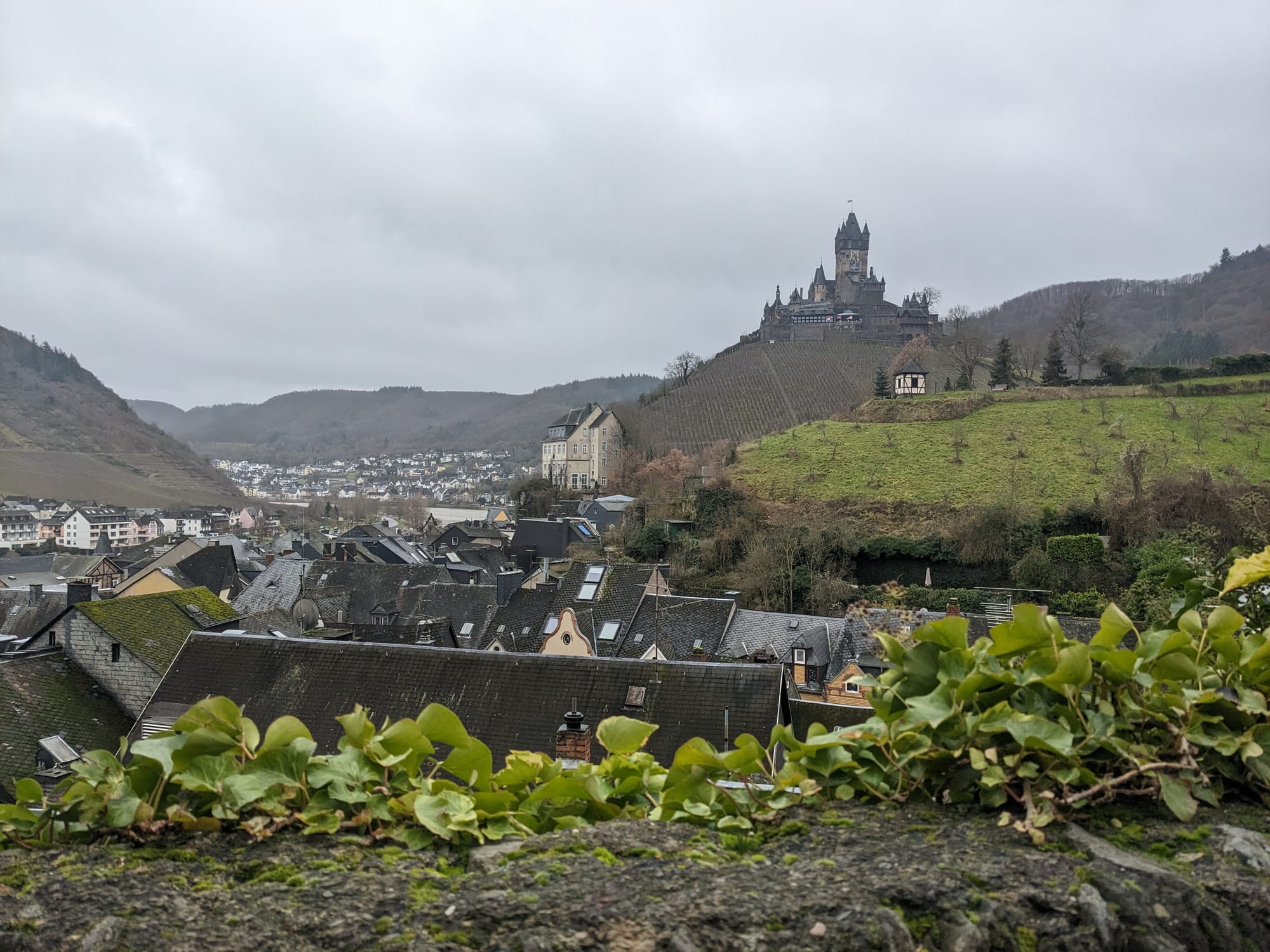
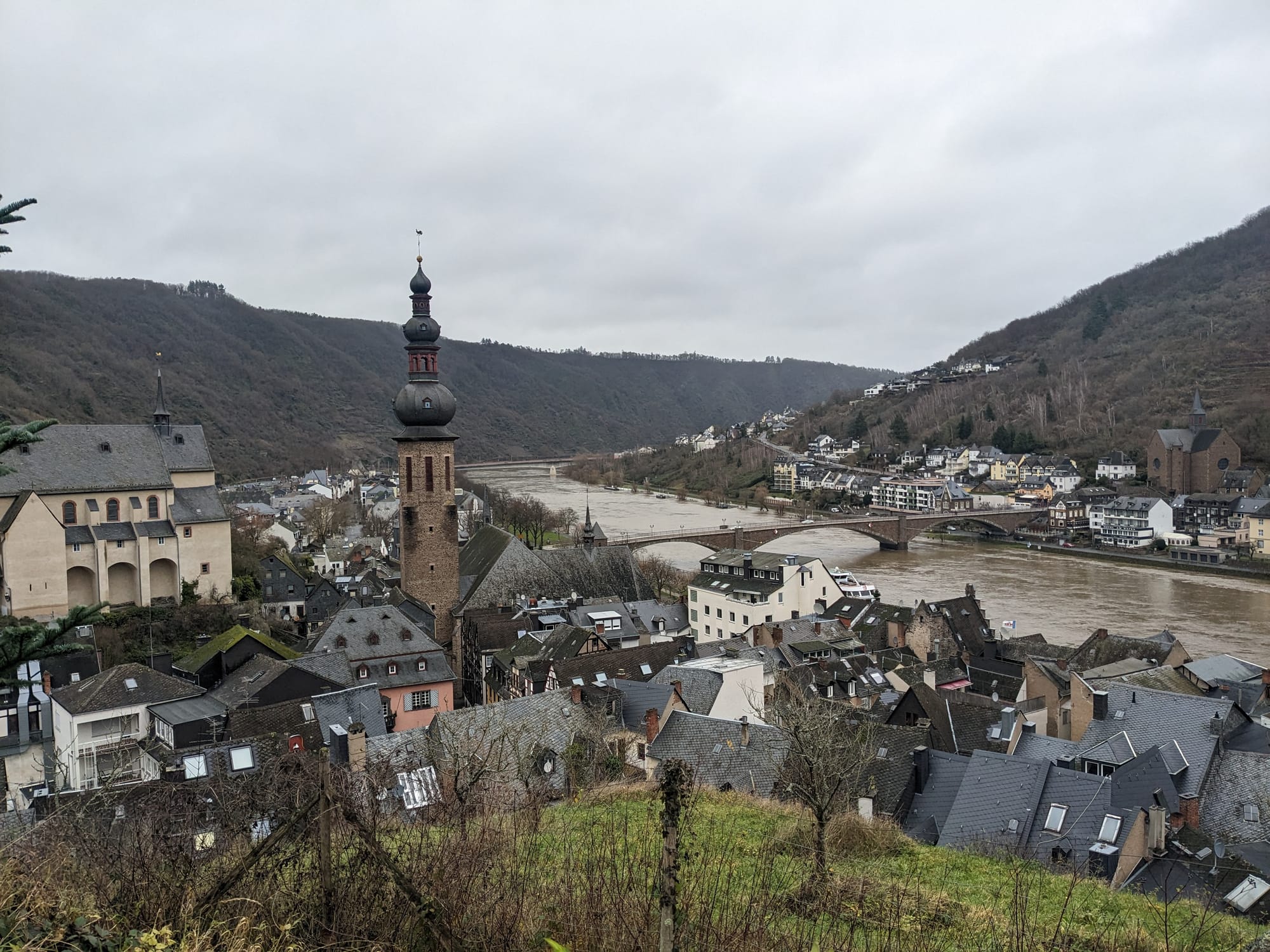
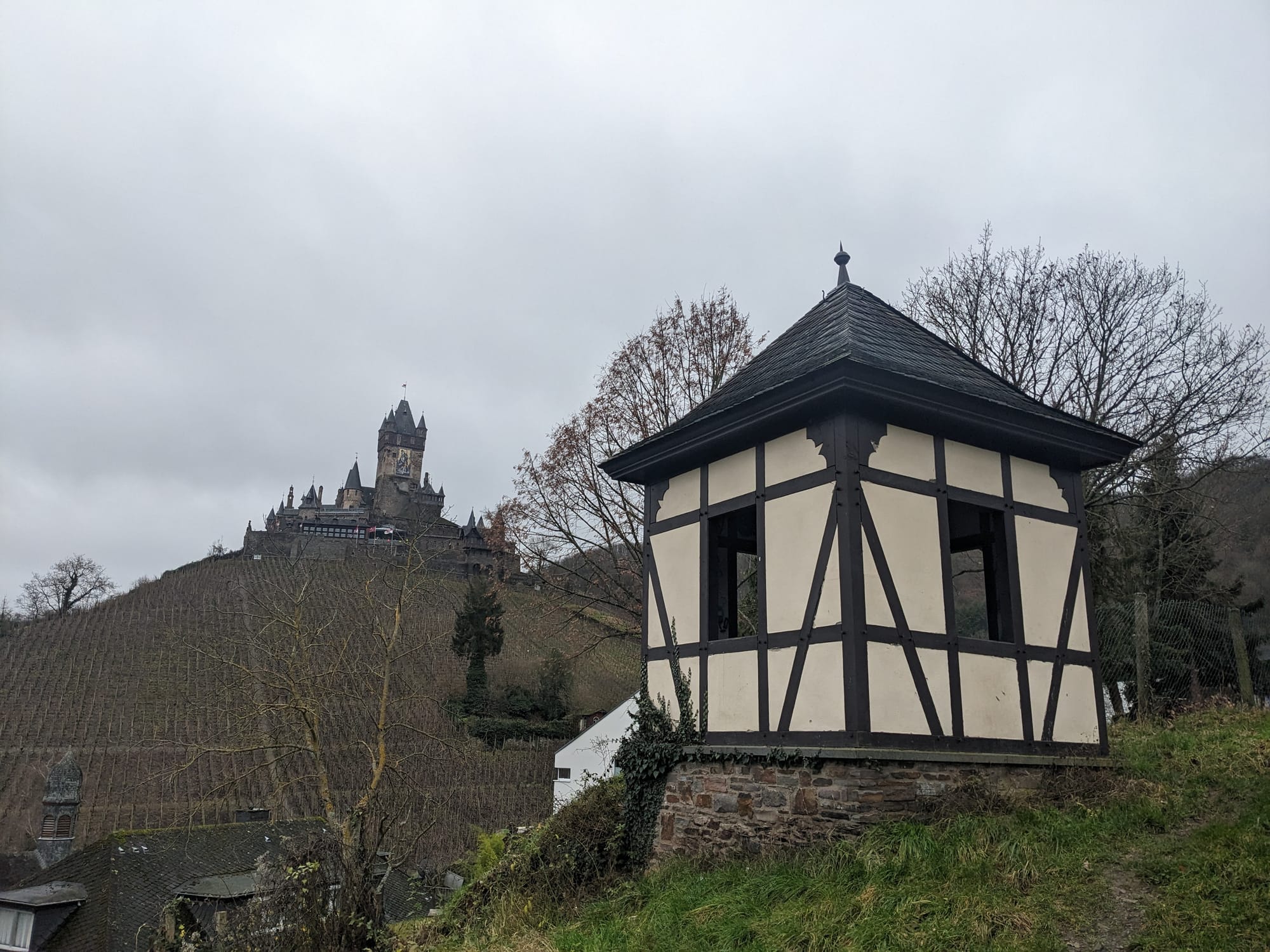
Cochem? I barely knew 'em

The centrepiece of the town is Cochem Castle. The original castle had stood for centuries but Louis XIV's soldiers raised the original castle in 1689. Then in 1866, the Berlin merchant Louis Ravené bought the ruins and rebuilt the castle in the Gothic Revival style.
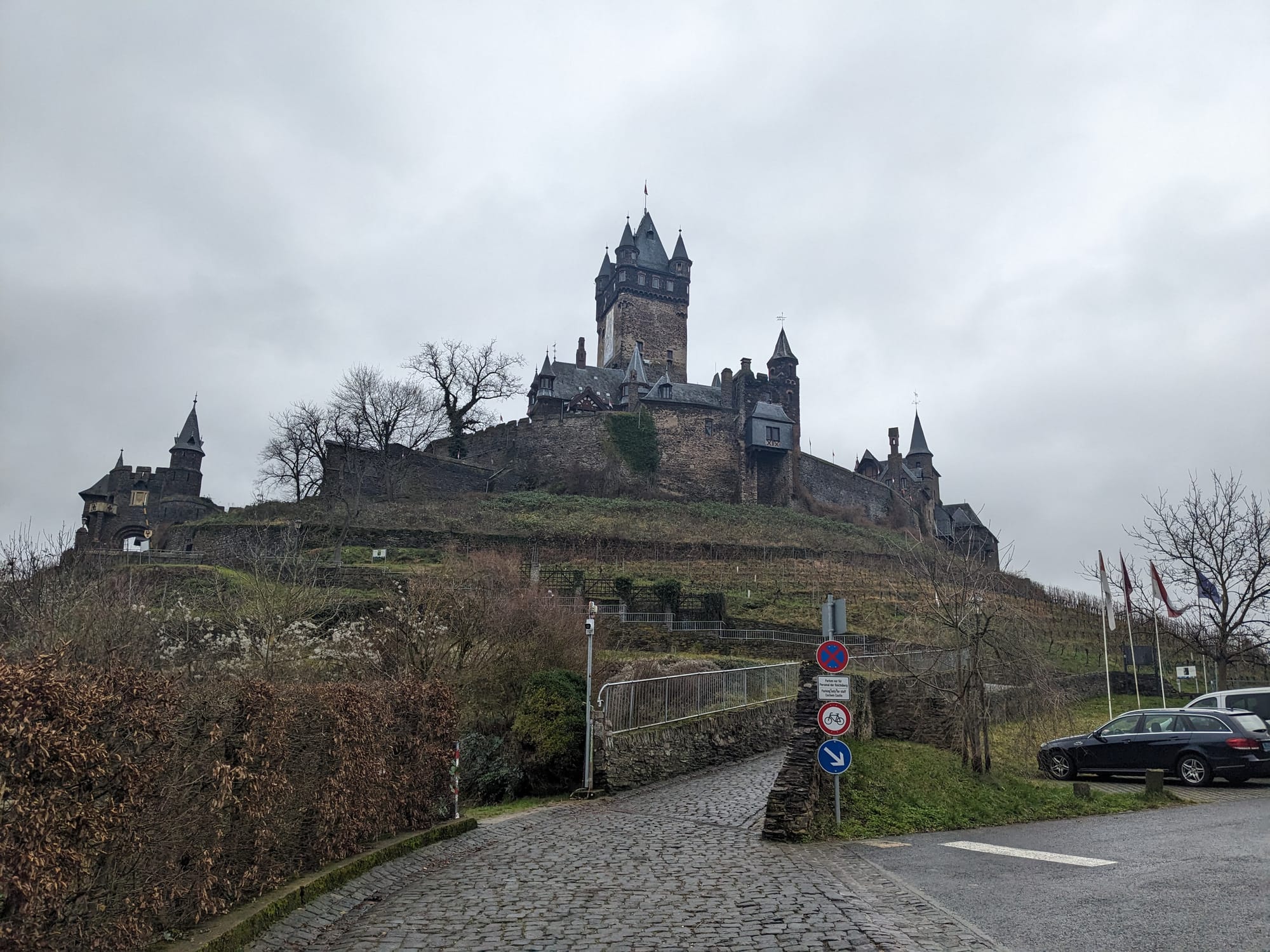
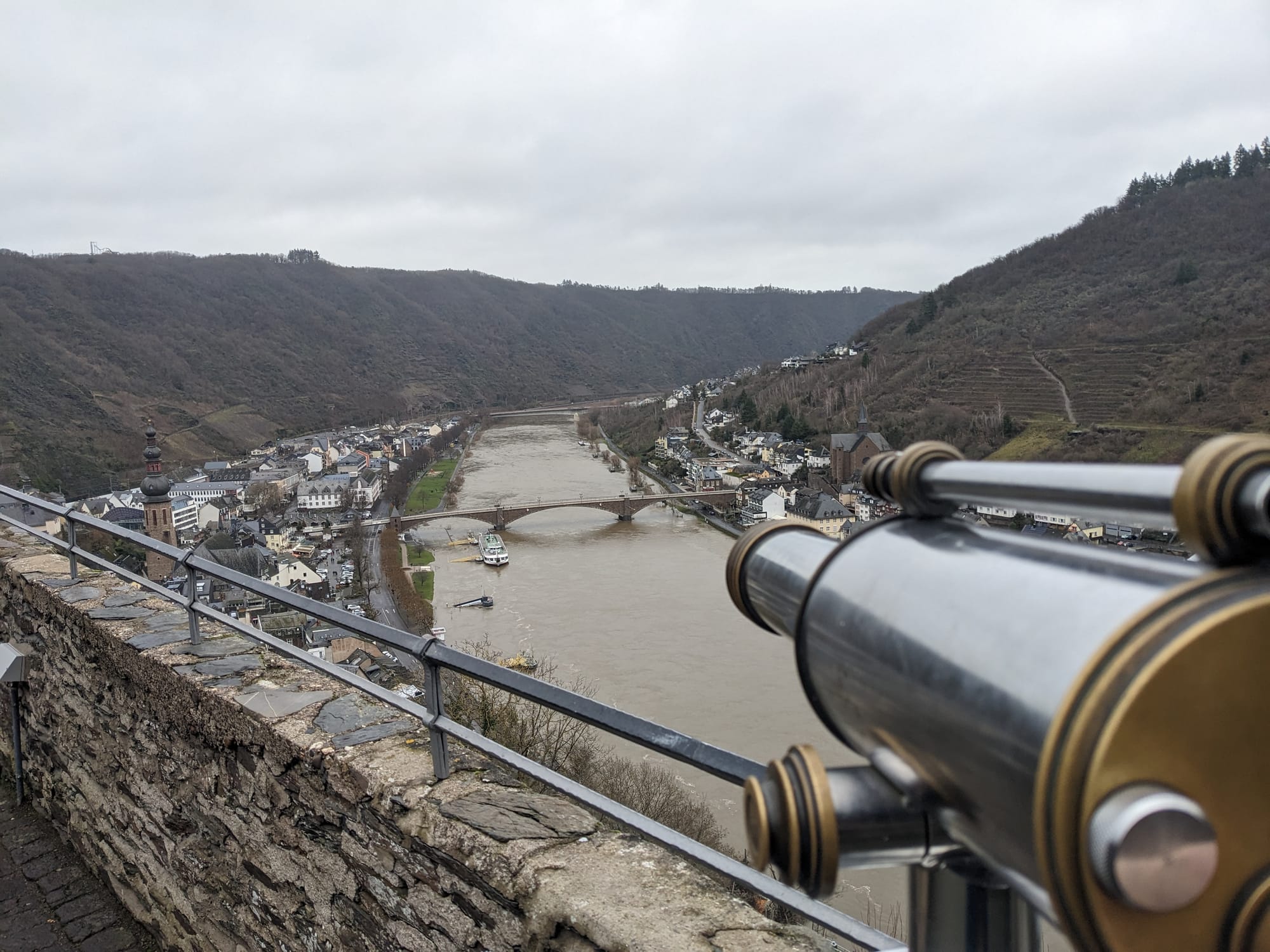
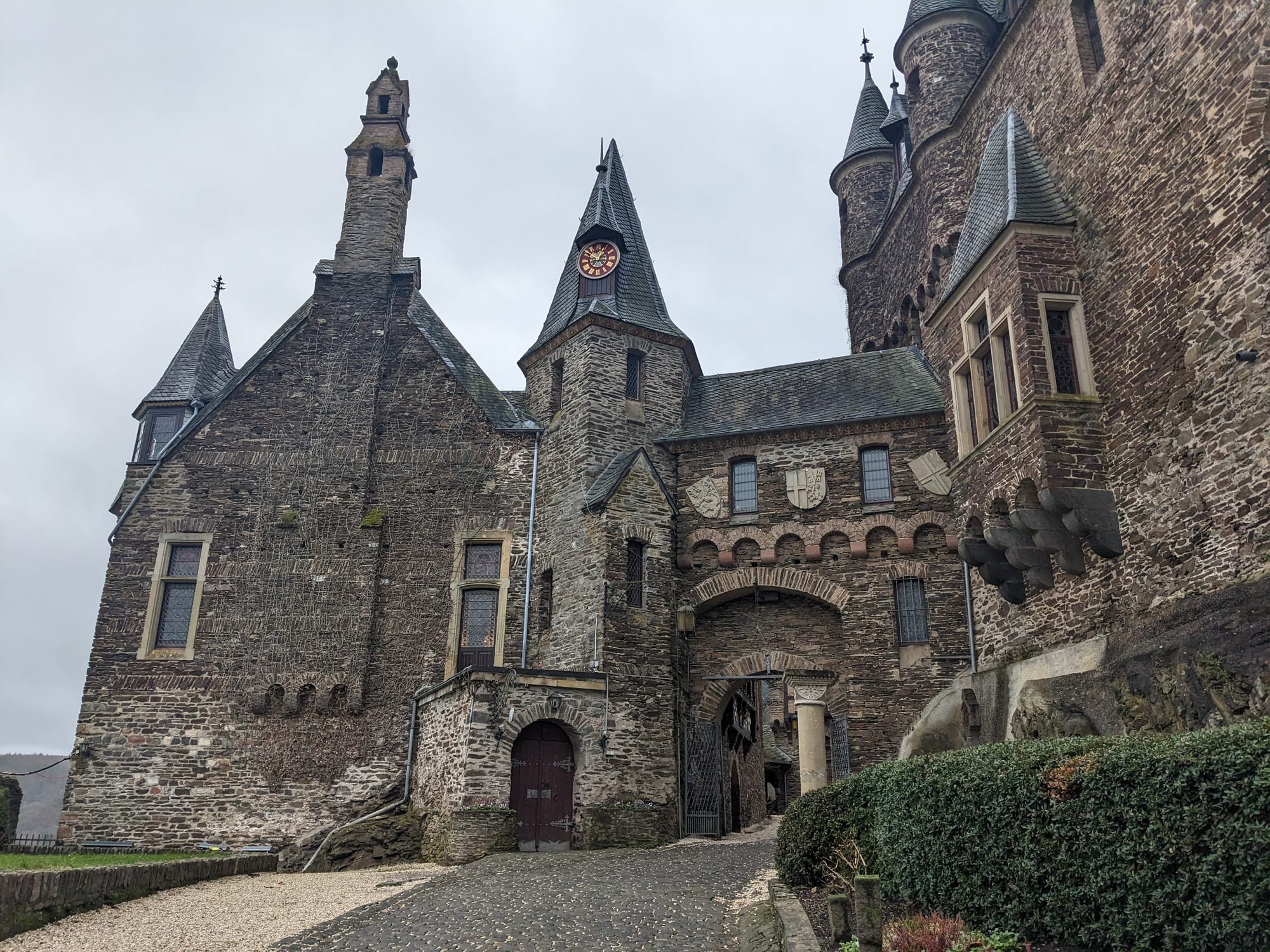
I swear I'm not making this up, the guide asked if we spoke English, we said that we did and she apologised that we may not understand her as her English was how you say inelegant inadequate.
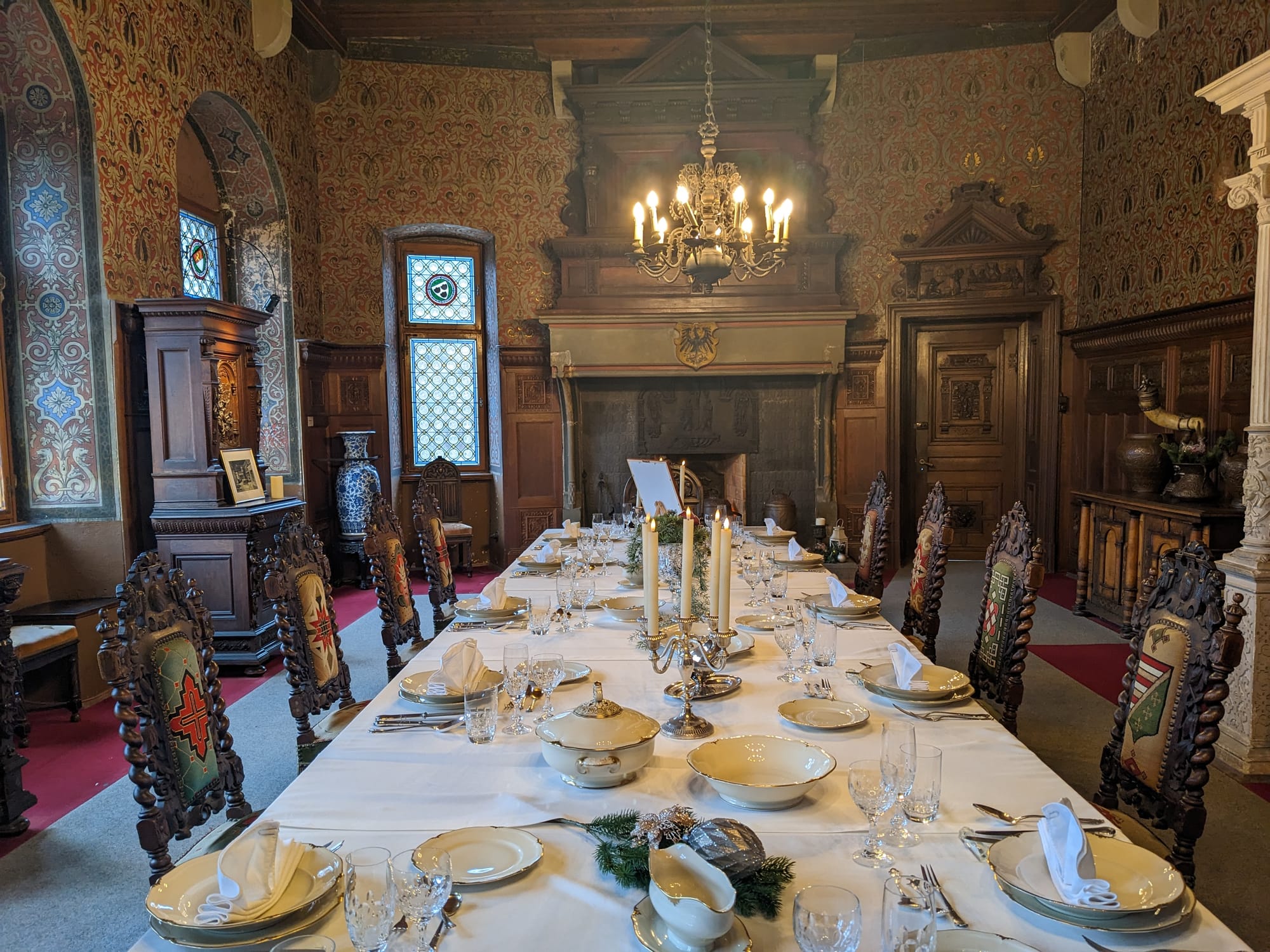
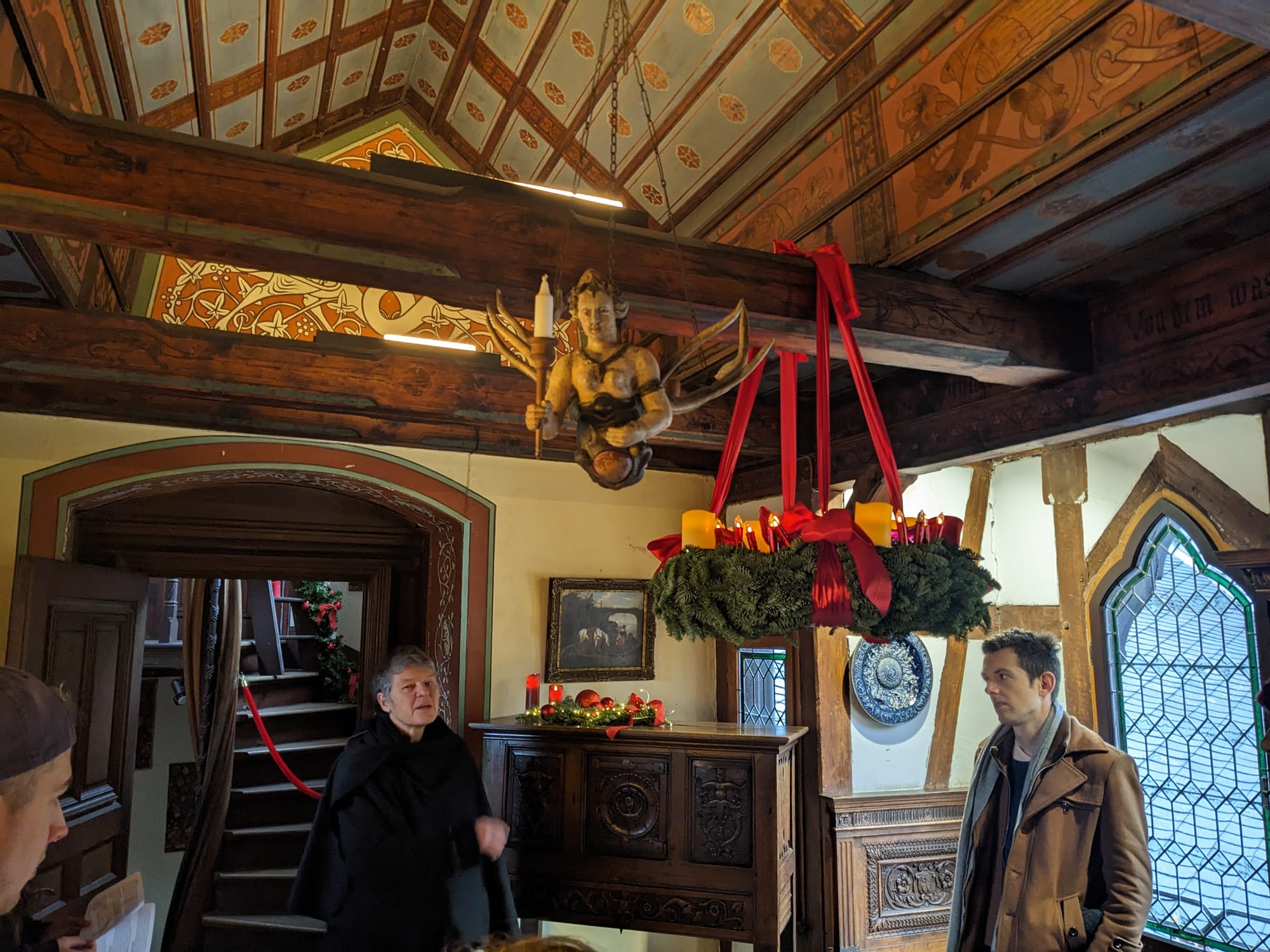
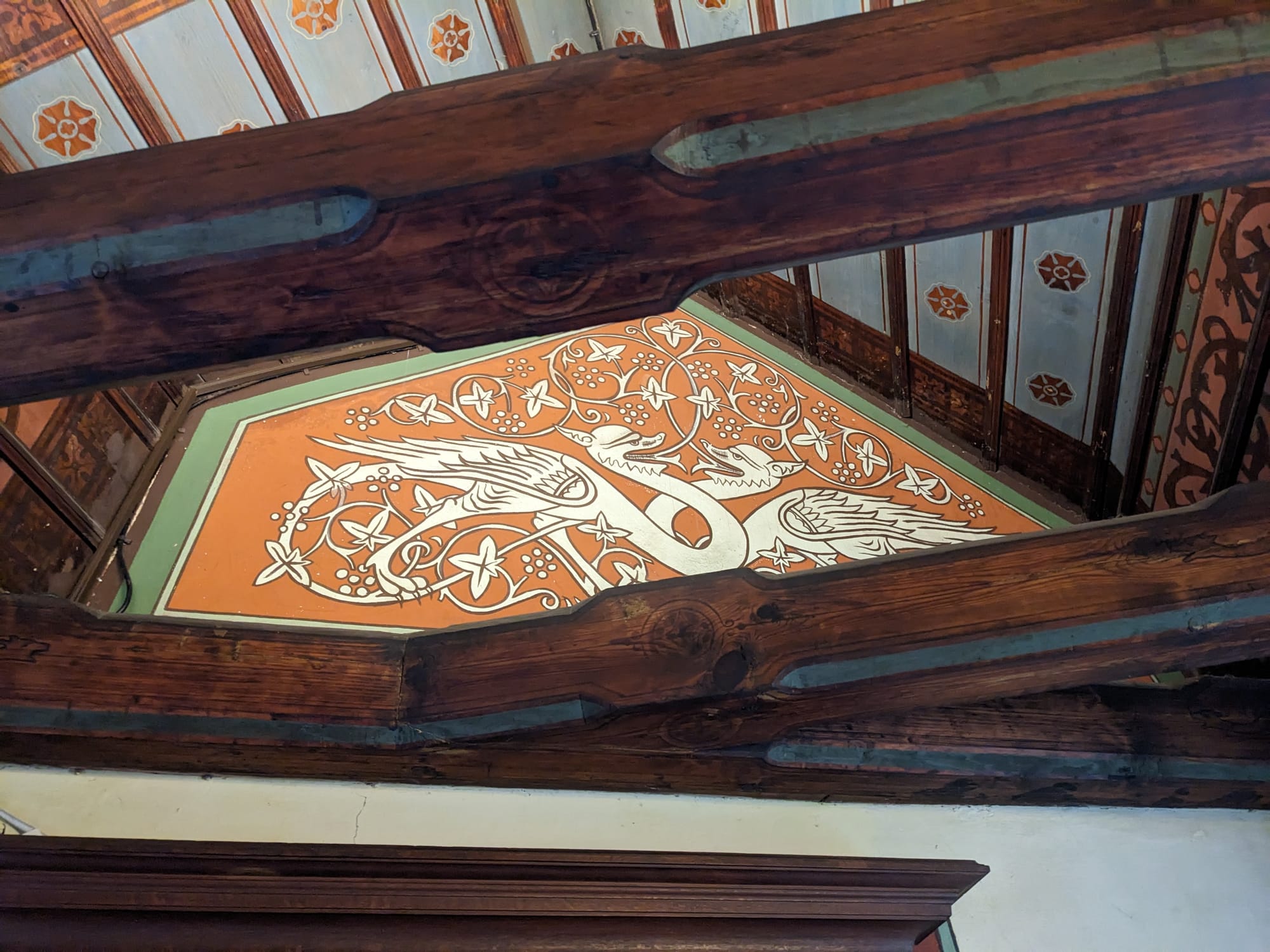
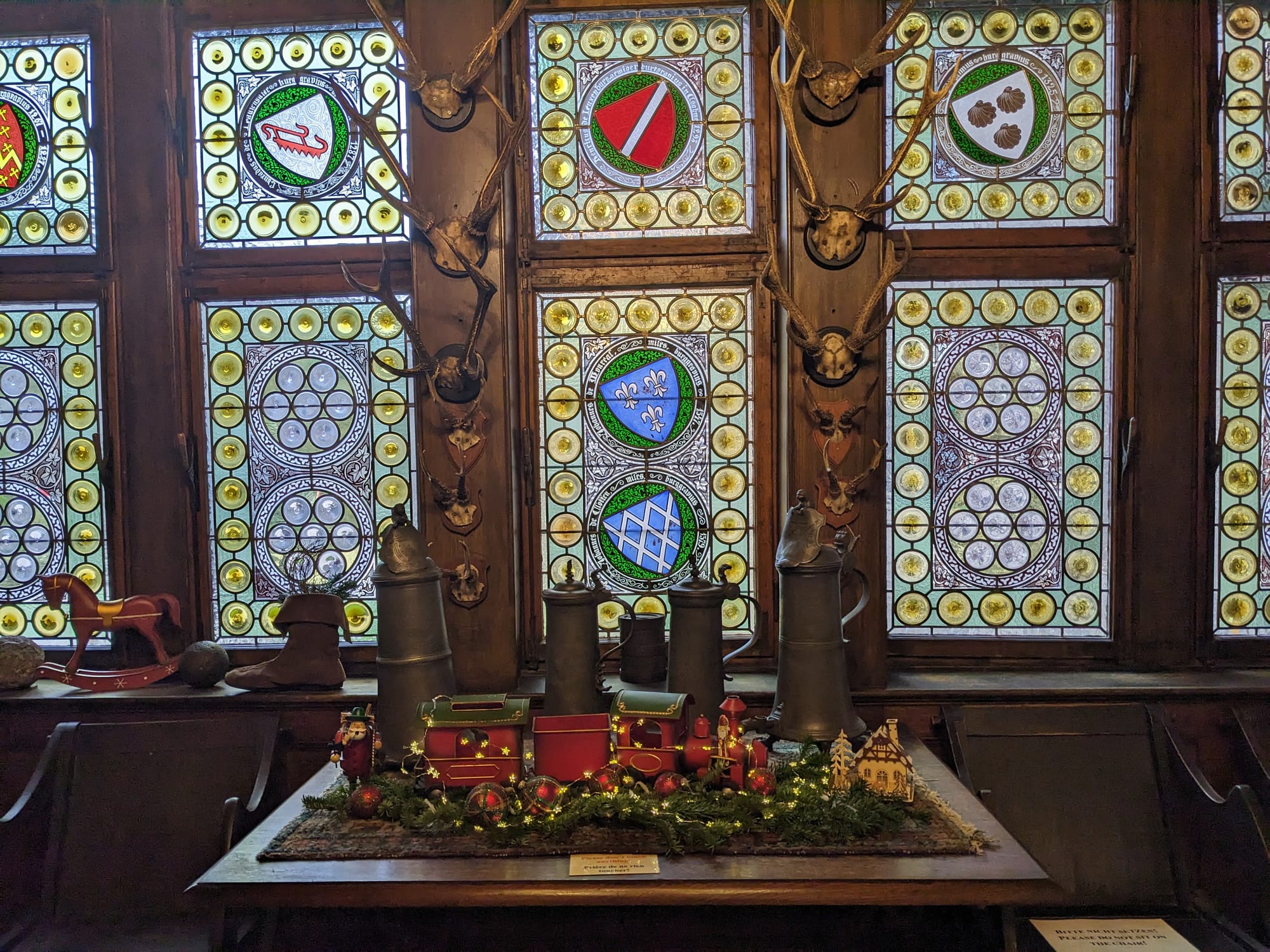
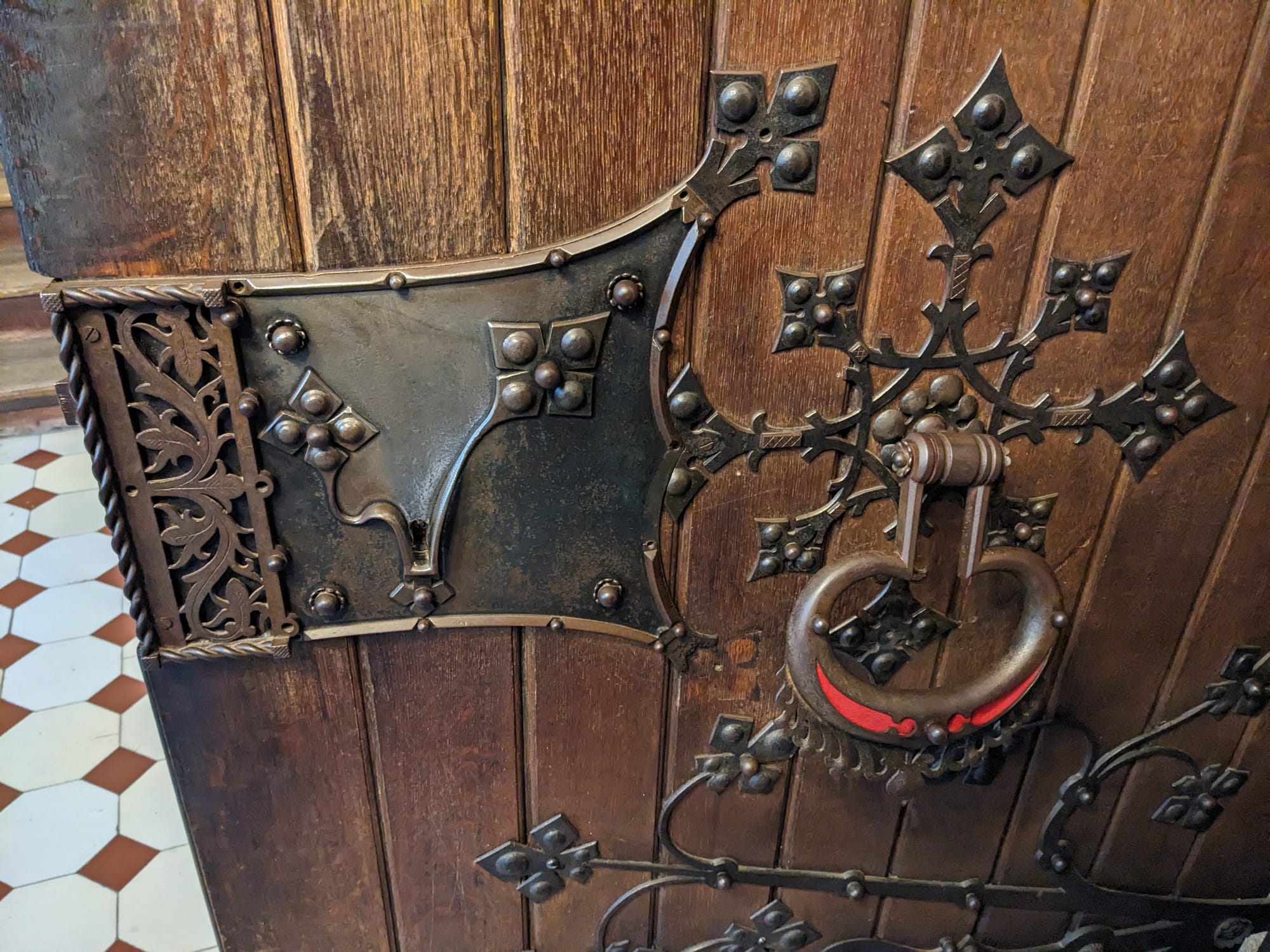
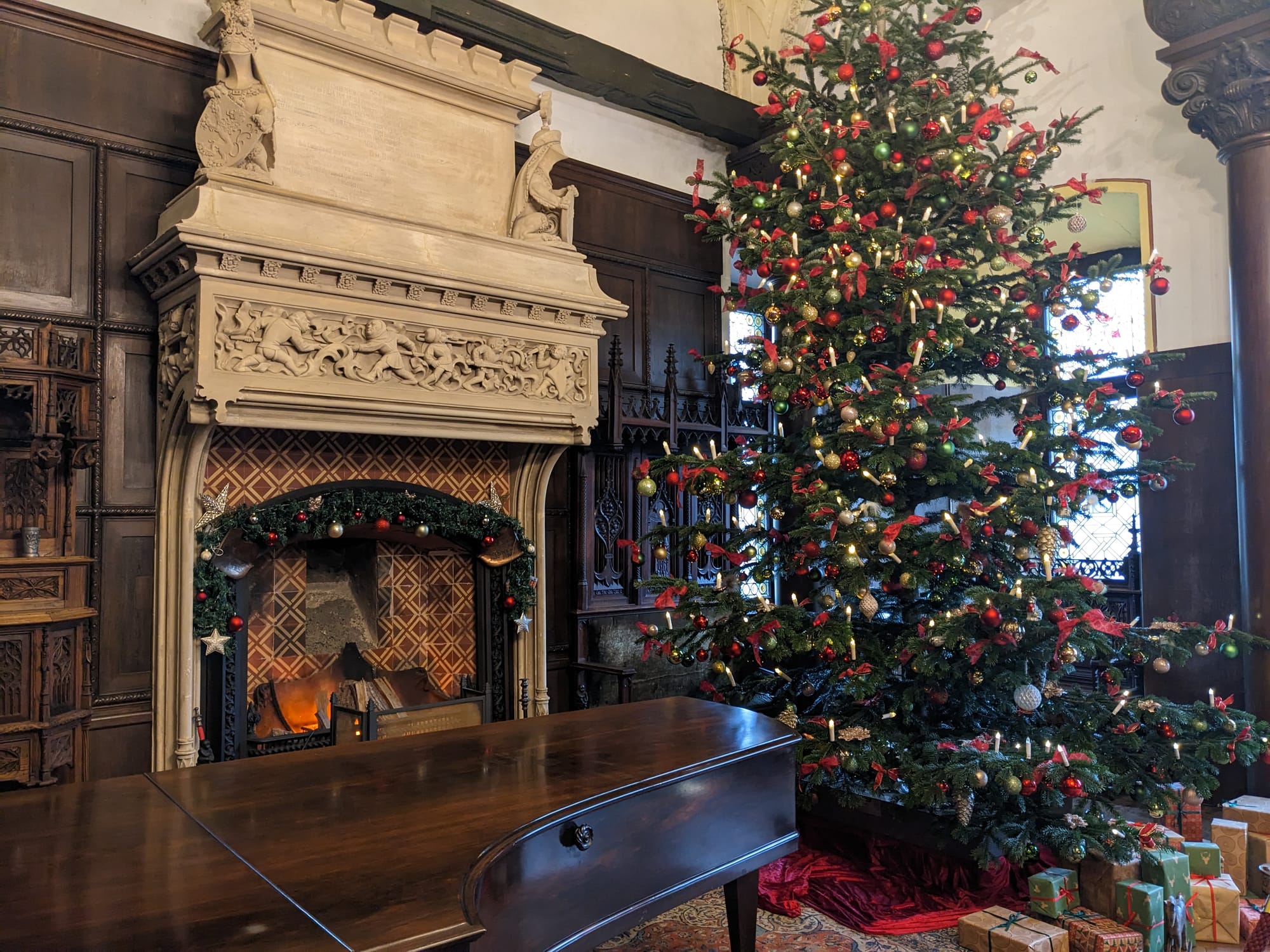
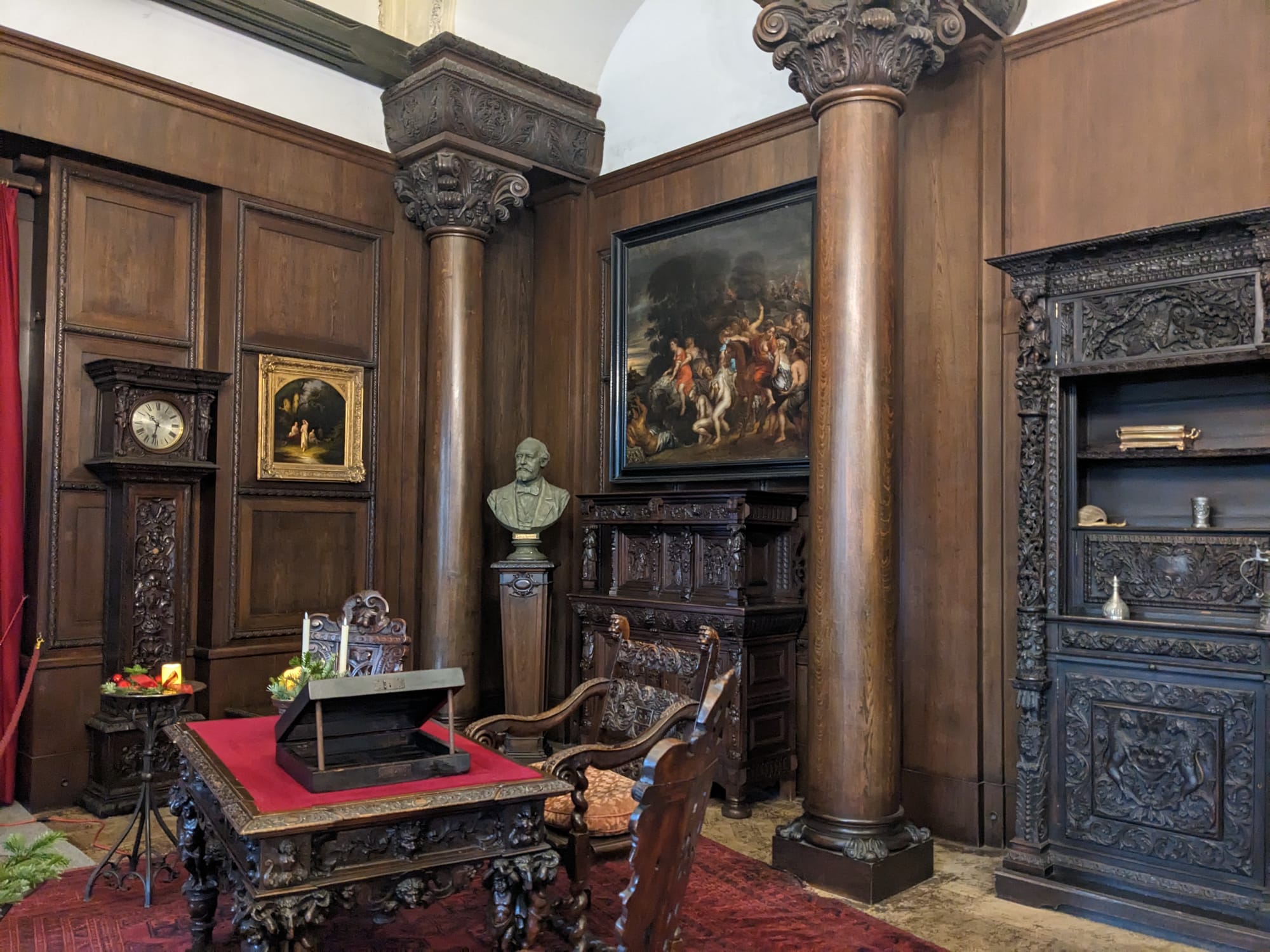
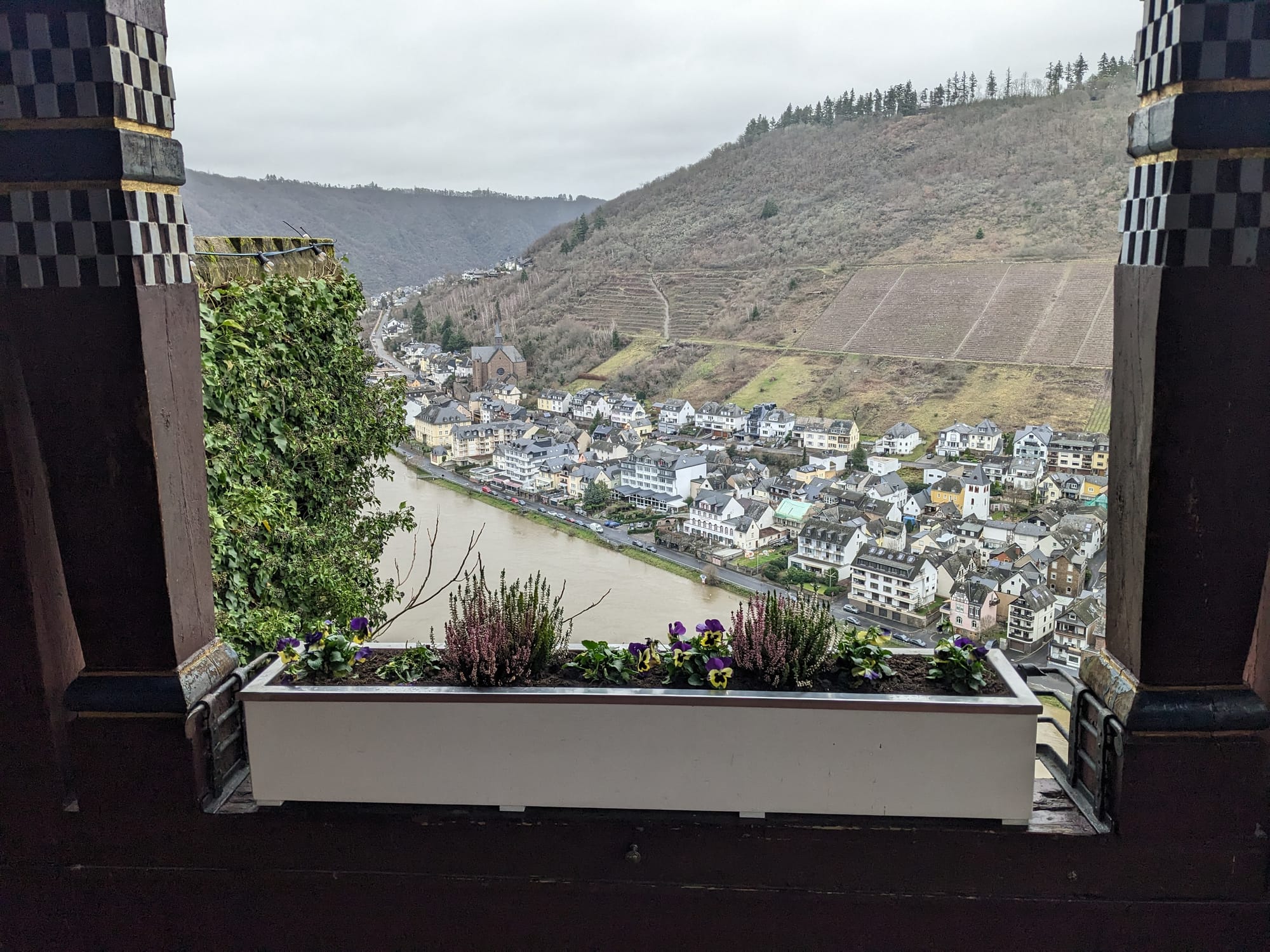
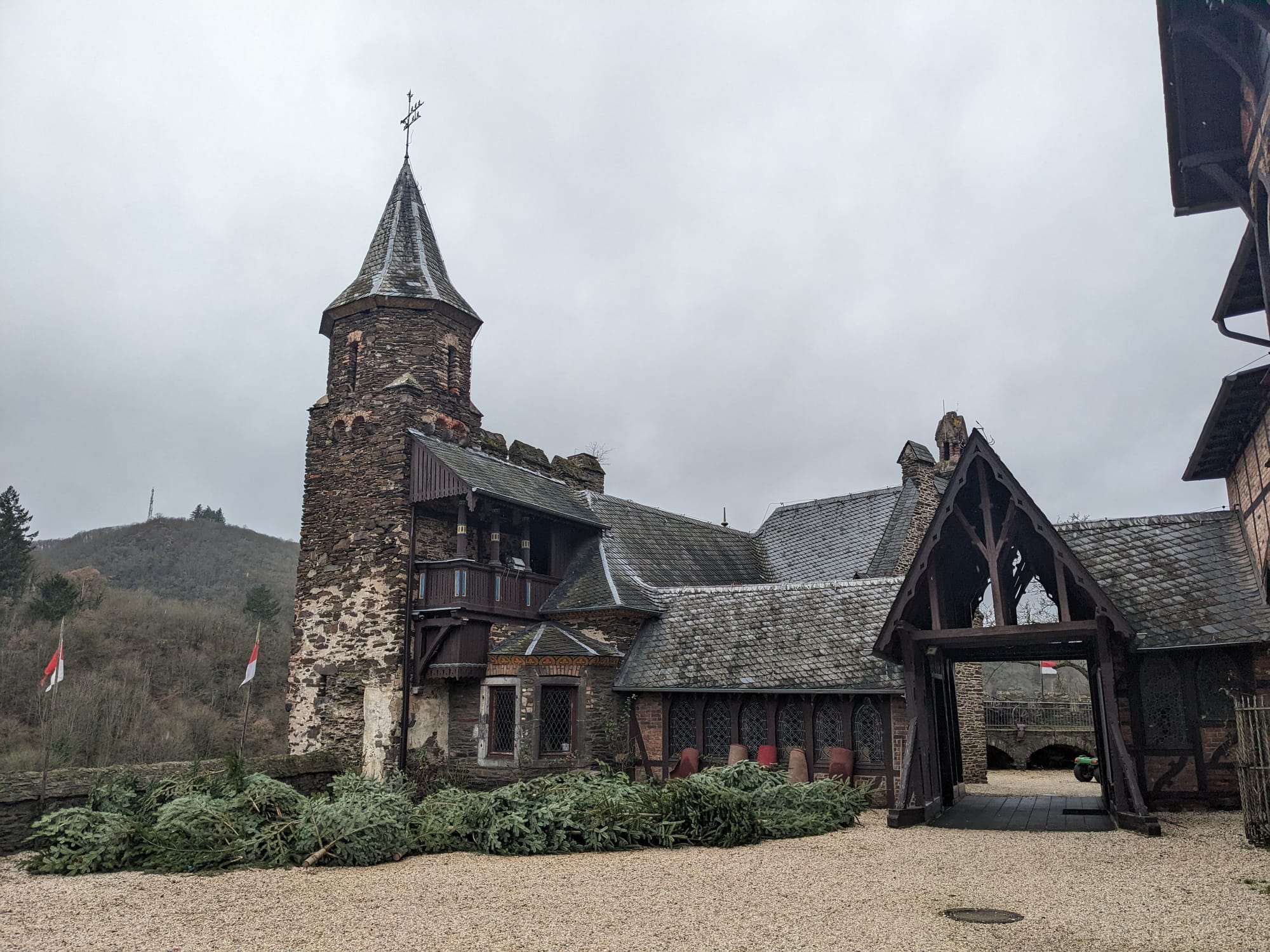
One castle door featured a v-shaped guide-rail around the keyhole to assist with placing the key in the lock while drunk.
We wandered through the narrow streets of the old town, found an unusually-open-for-Christmas beer hall for lunch, went for a walk by the overflowing river, then caught the train back to Koblenz.
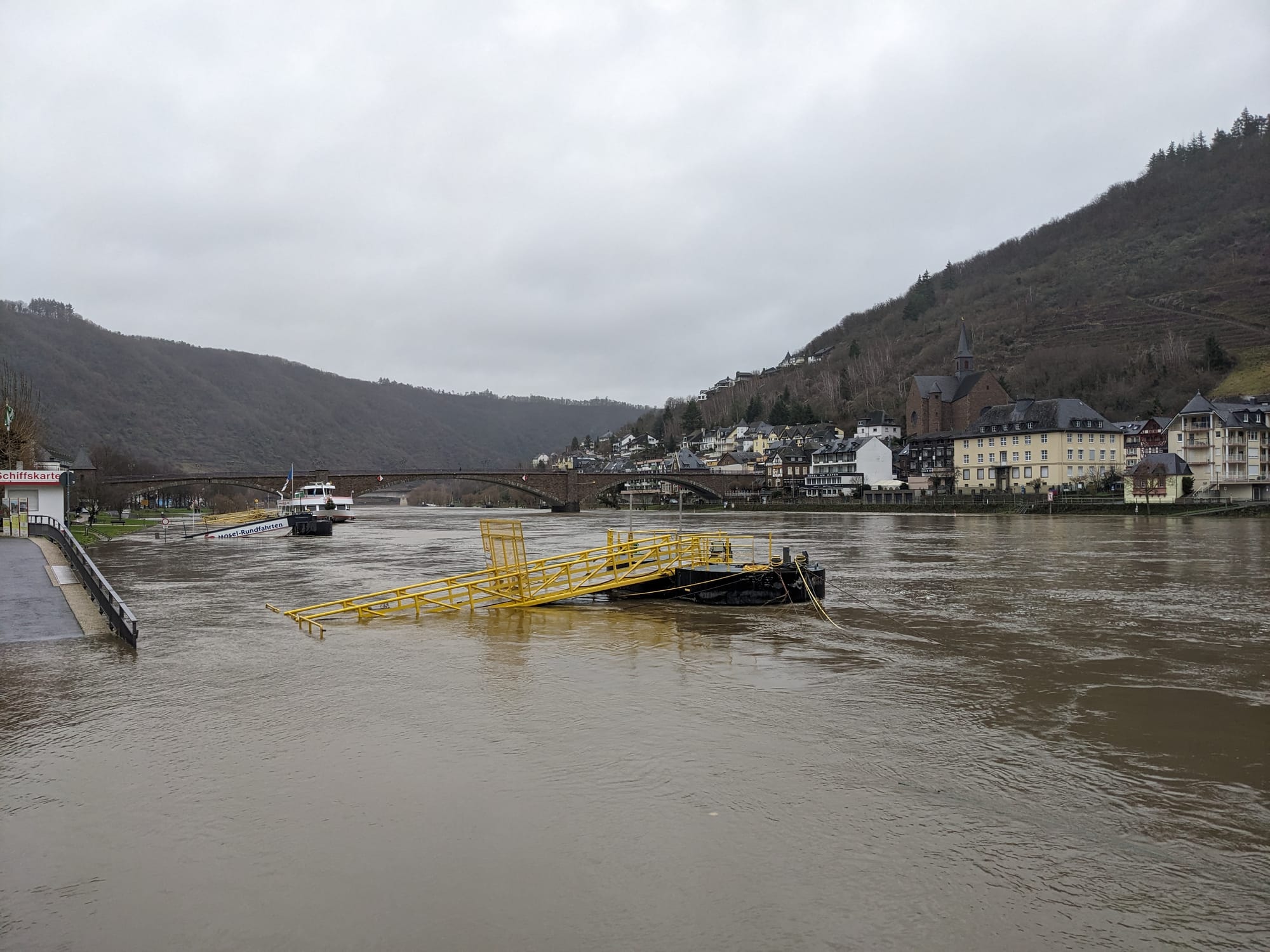
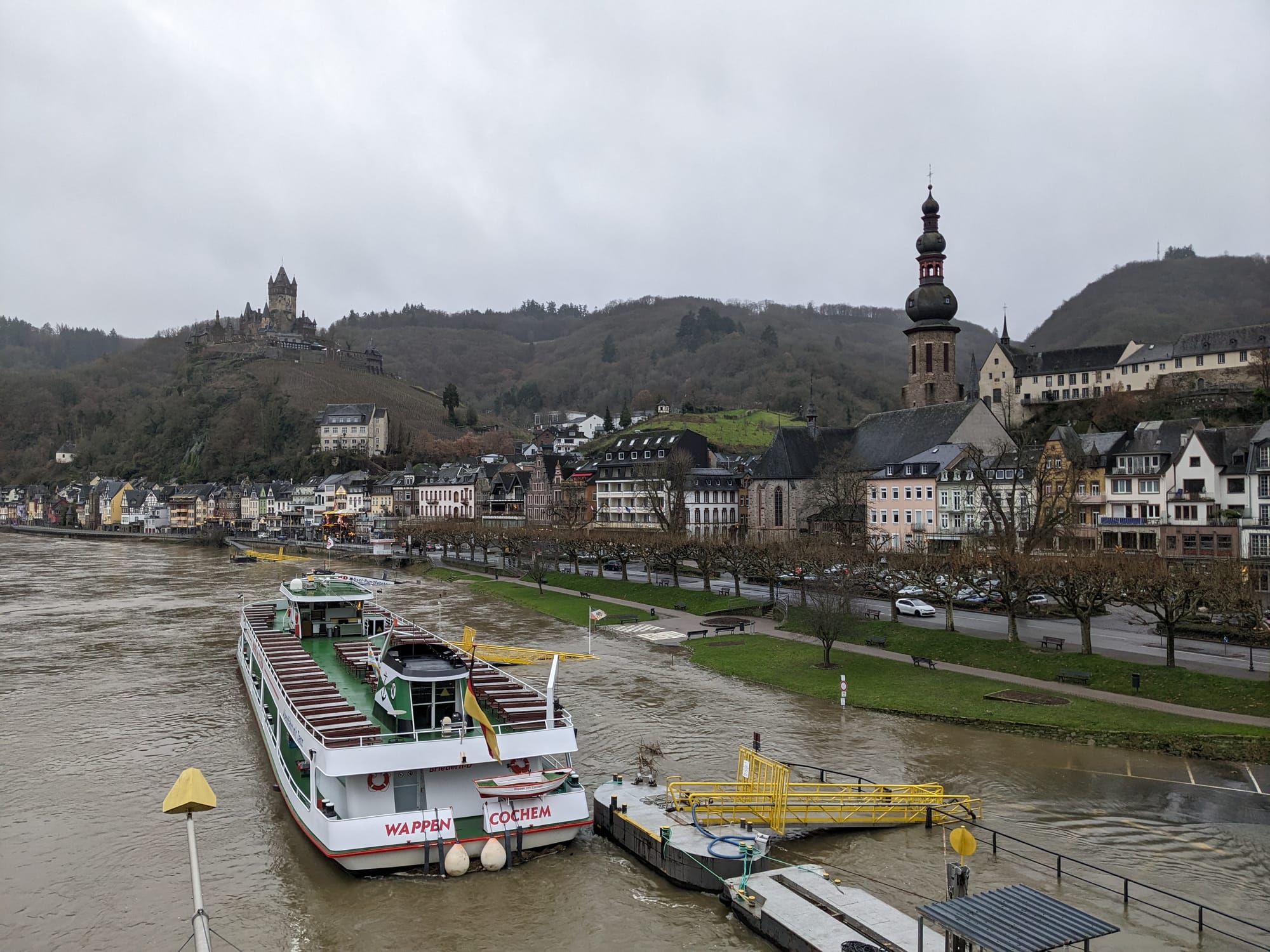
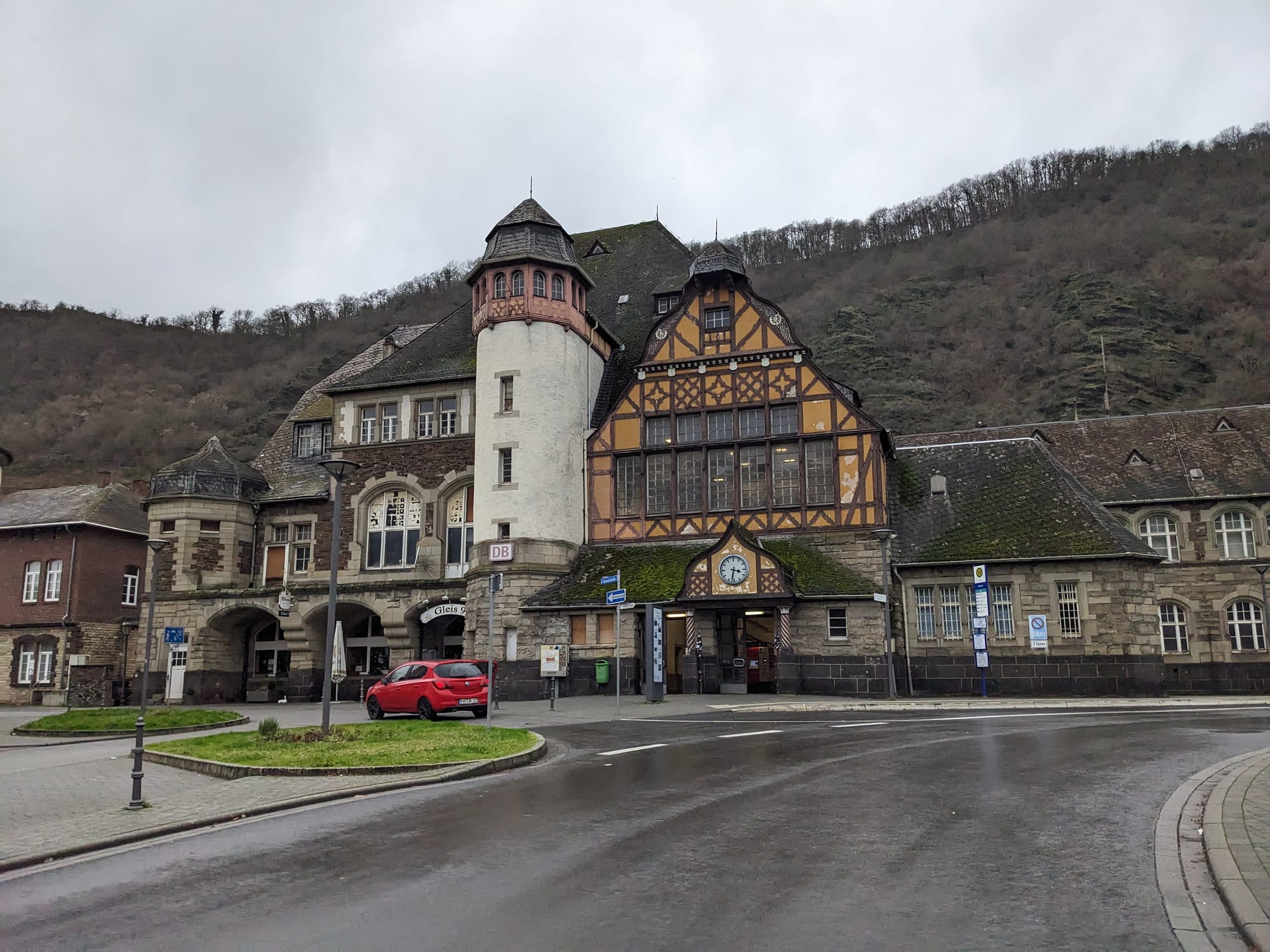
The river runs through it, but the train station was high and dry.
Koblenz, Germany (25th December)
Koblenz is a town right on the confluence of the Mosel and Rhine rivers. In the 18th and 19th centuries, when France attempted to expand its frontiers to its 'natural borders', its maximalist claims to the east went up to and stopped at Koblenz. France only managed to annex the town for nine years during the French Revolutionary Wars, and since then it has been under German rule - much to the consternation of French minister Adolphe Thiers.
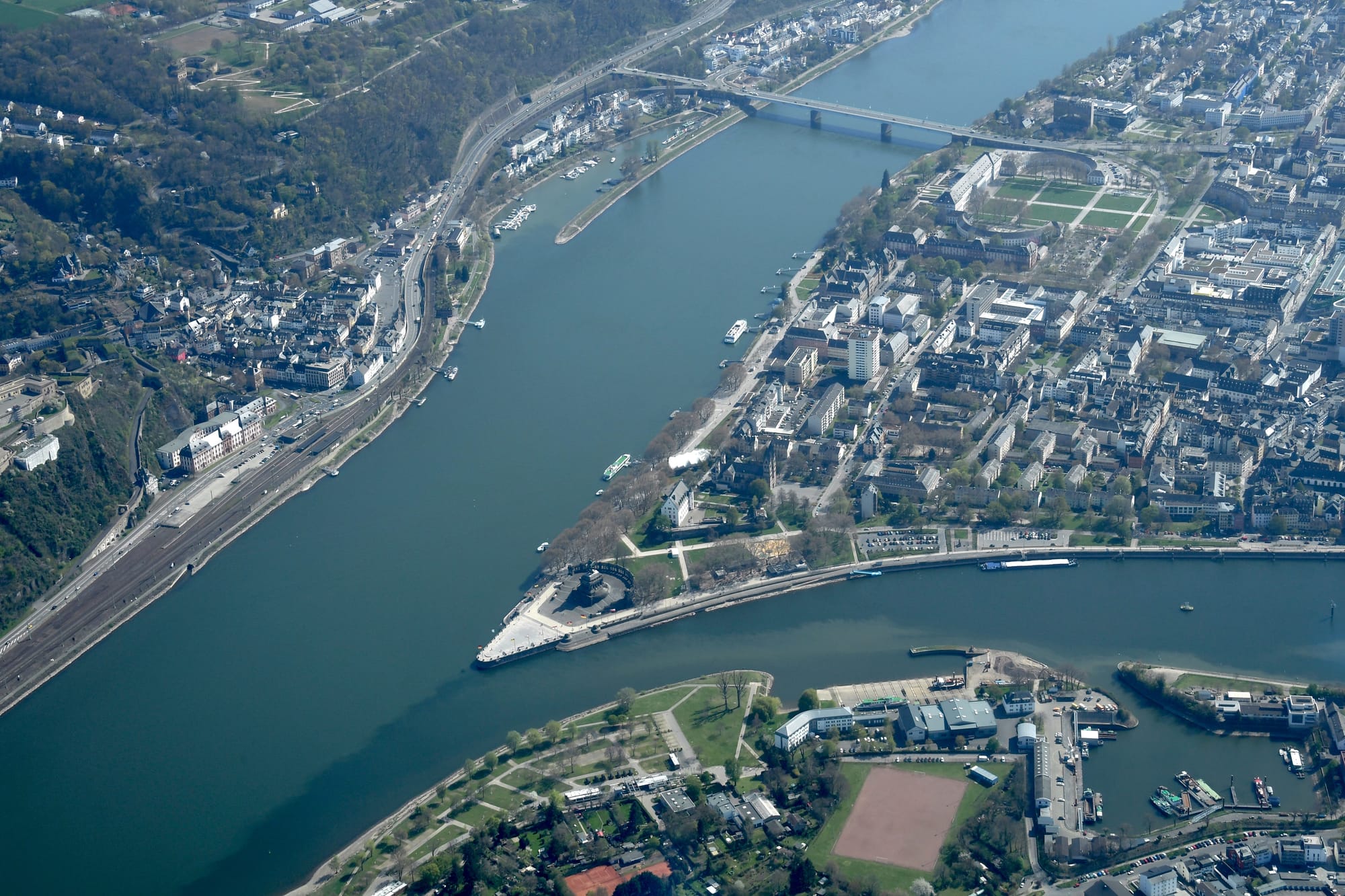
Perhaps in response to French claims, Koblenz is home to Deutsches Eck ("German Corner"), a public space on the confluence of the Moselle and Rhine built in 1891 that loudly proclaims how very German this place is. It features the flags of the German lander and an overcompensating large statue of Kaiser Wilhelm I, the first emperor of a united Germany. Fun fact, the empire only lasted one more generation after Wilhelm. His son, Wilhelm II, reigned from 1888 until the abolition of the monarchy in 1918. During the Cold War, Deutsches Eck flew the flags of the lander in both West and East Germany to signal the West's aspiration for a united Germany.
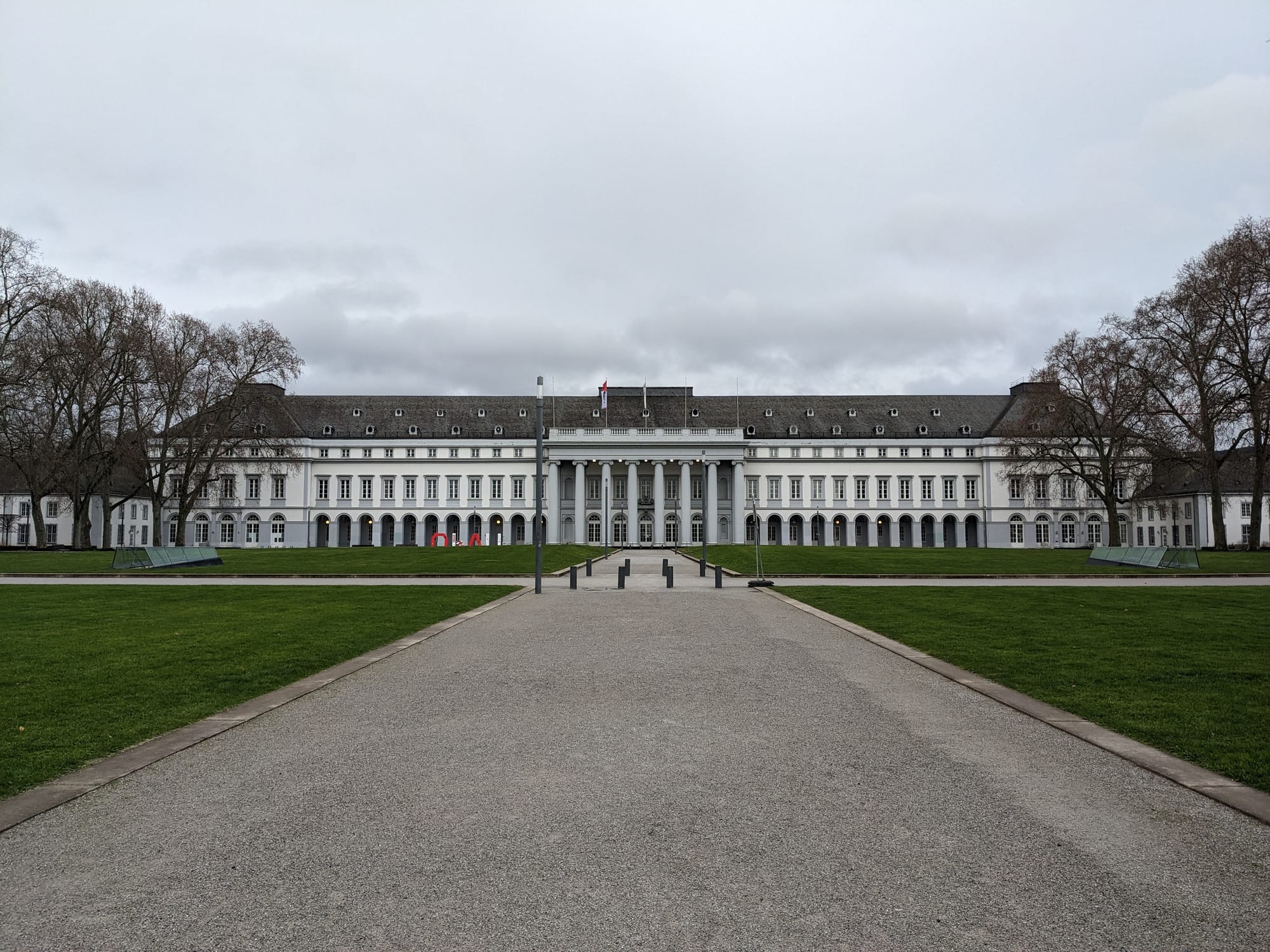
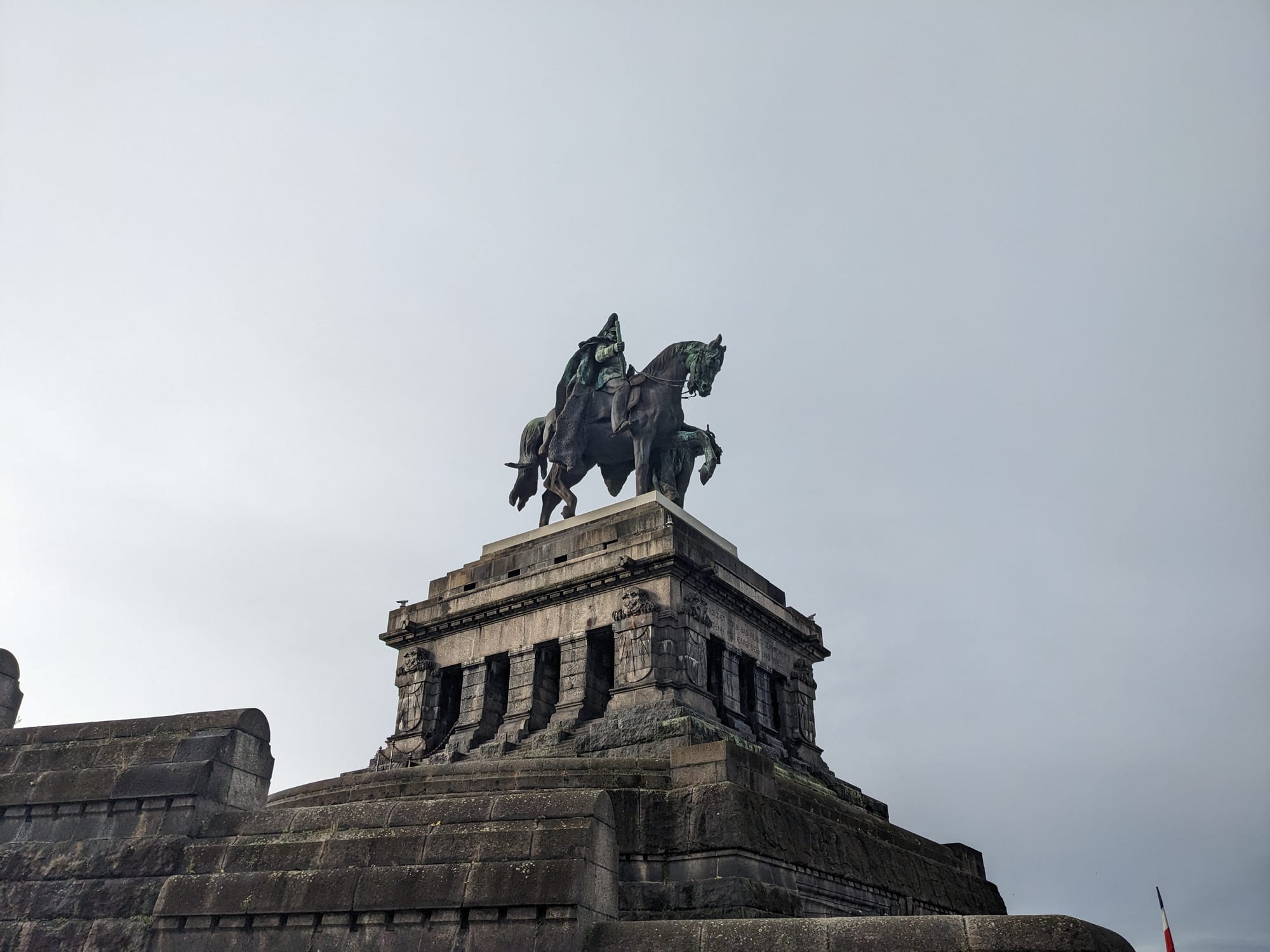
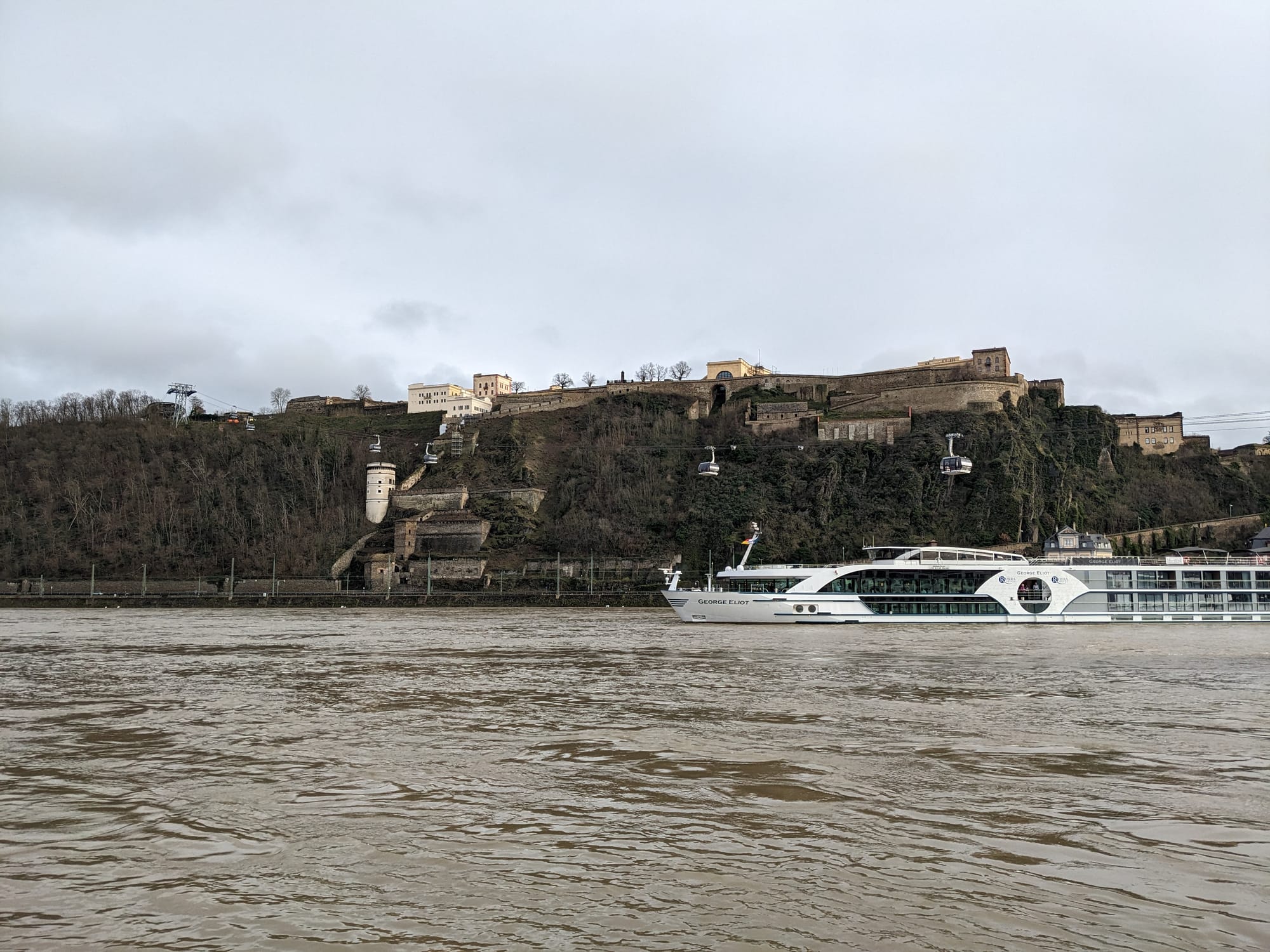
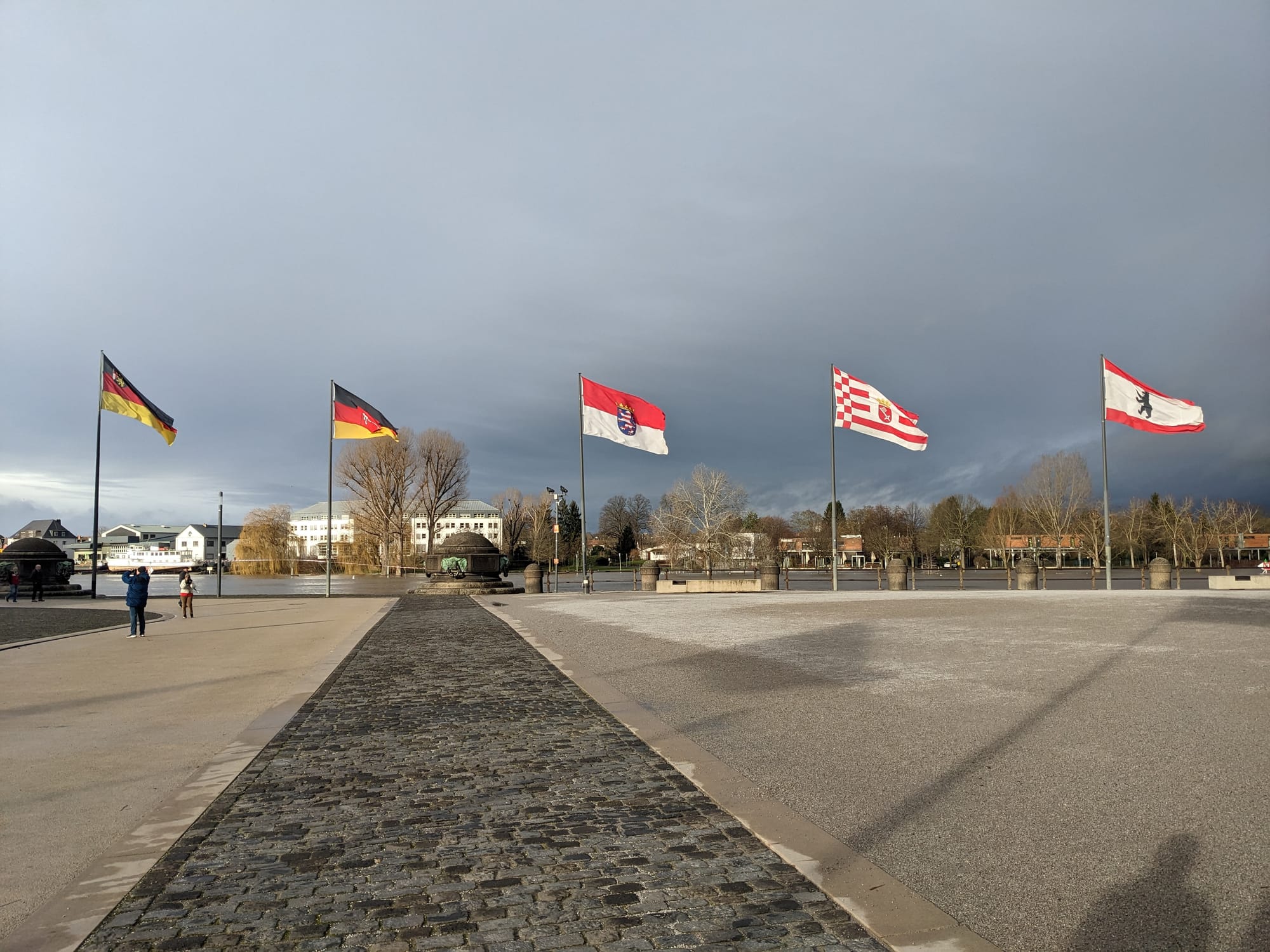
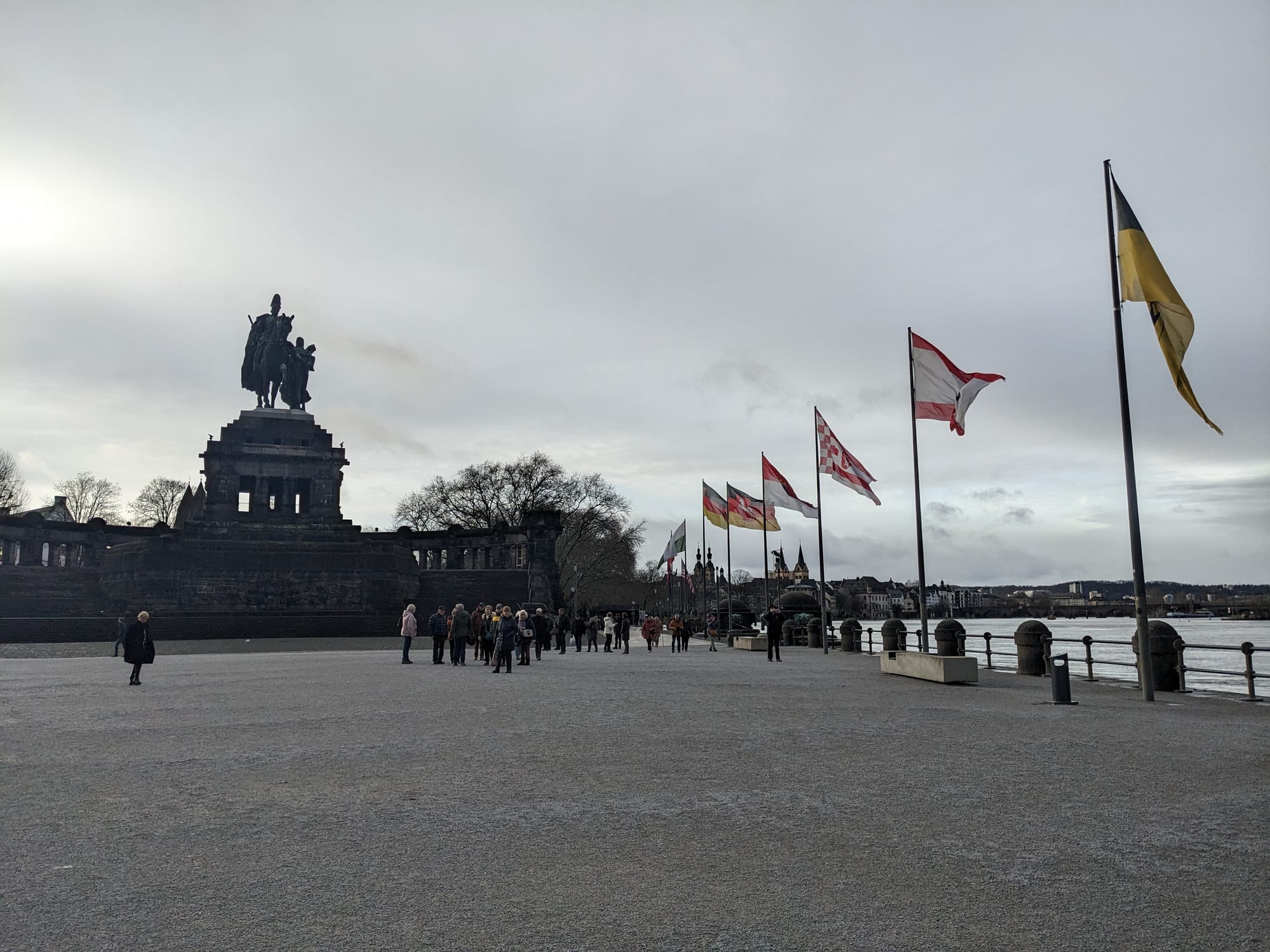
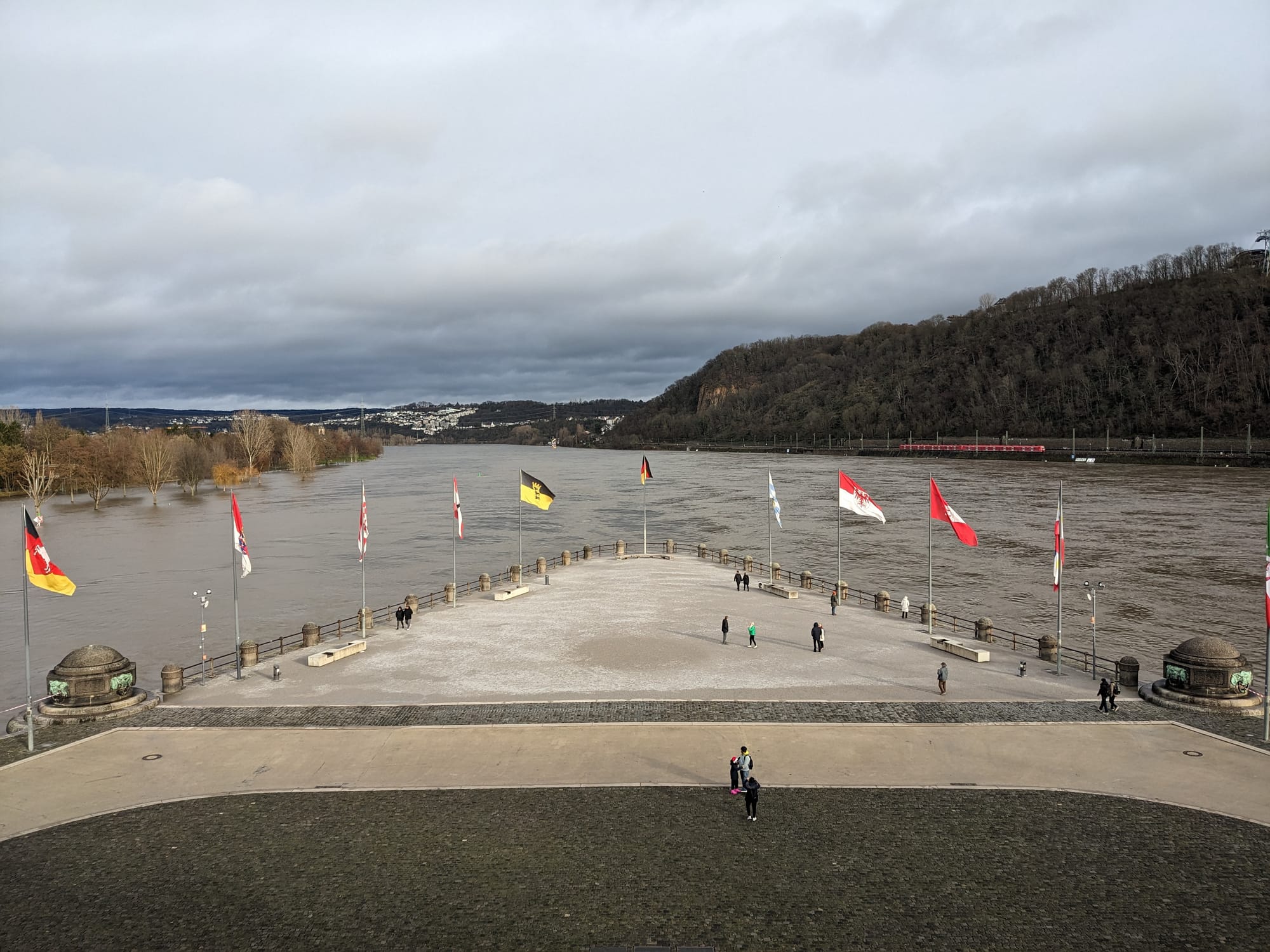
Eck yeah!
We took a walk through the Altstadt ("Old town") and the Basilica of St. Castor, a Romanesque church near the rivers. You remember Romanesque style, right? On the diagram of European bridges in this very article? It's the medieval style characterised by round arches. The Basilica of St. Castor is so Romanesque.
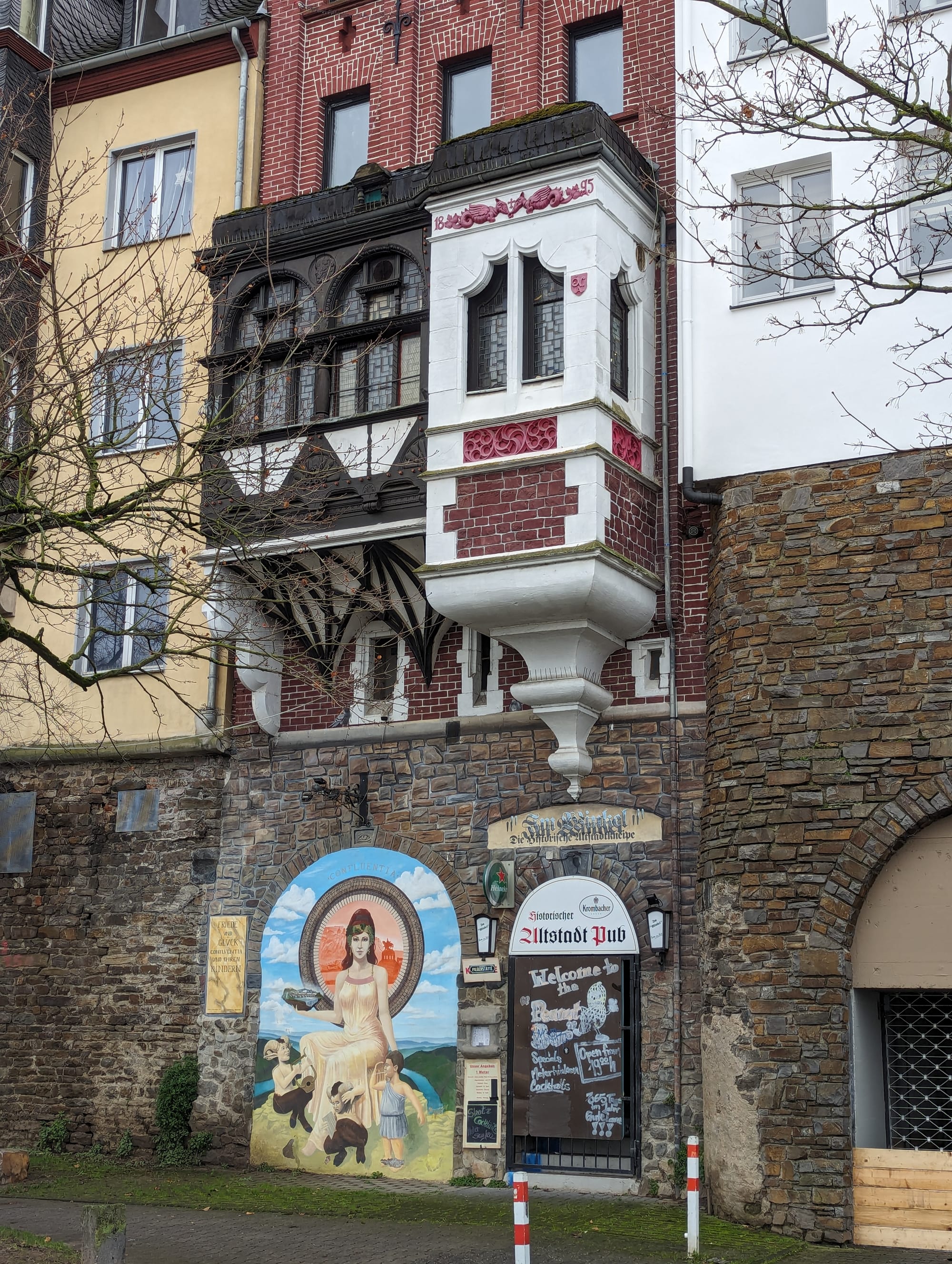
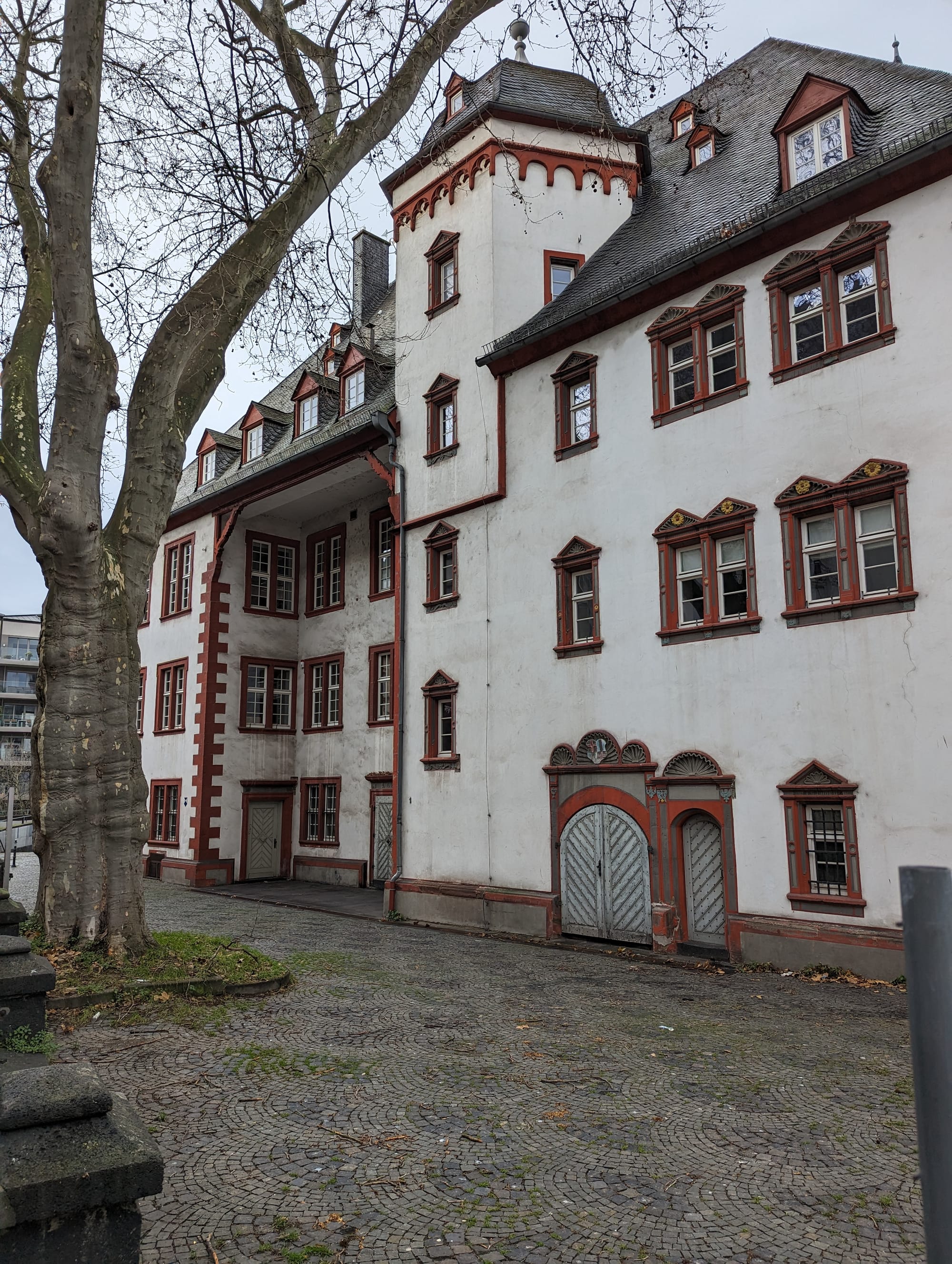

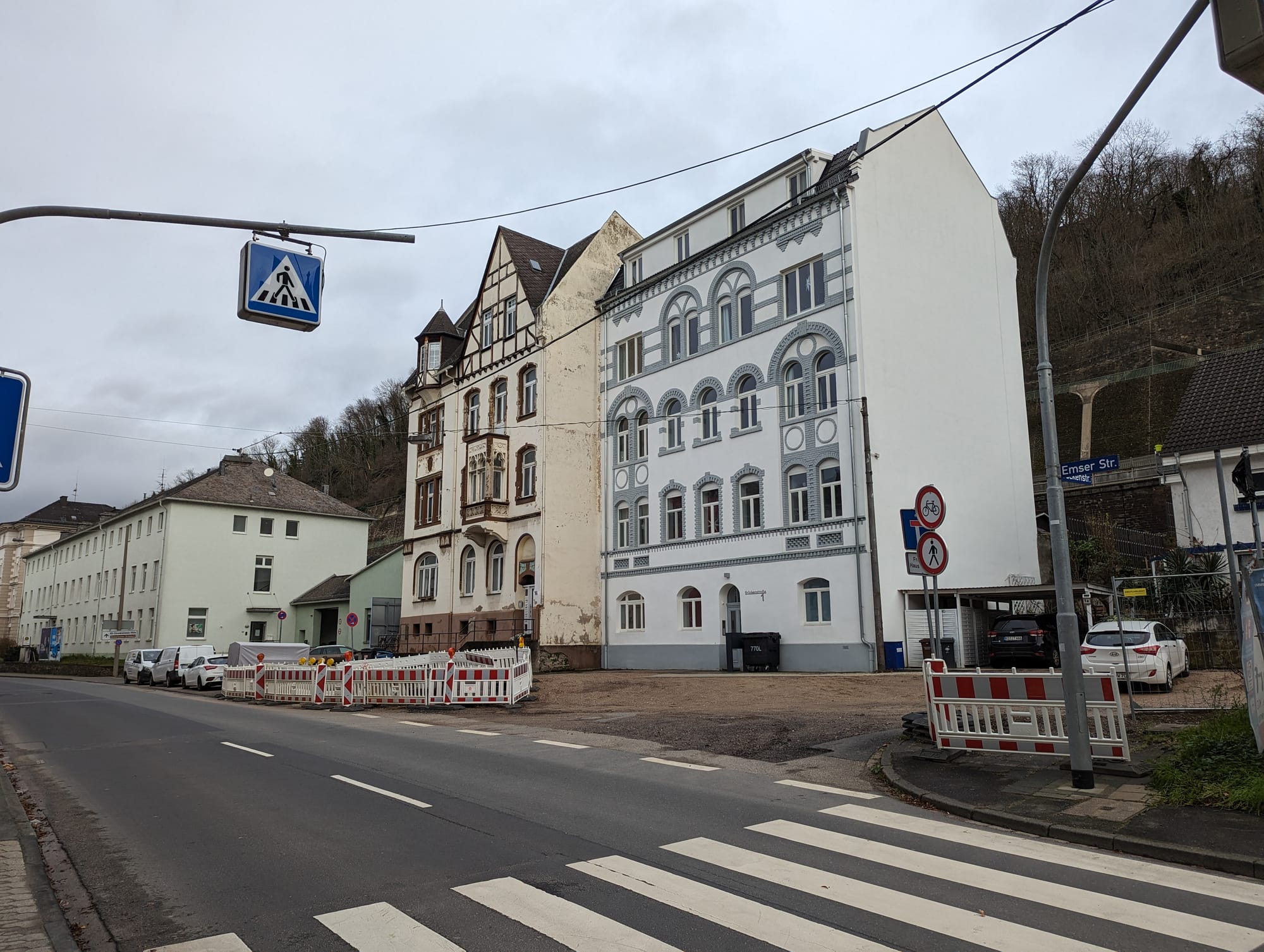
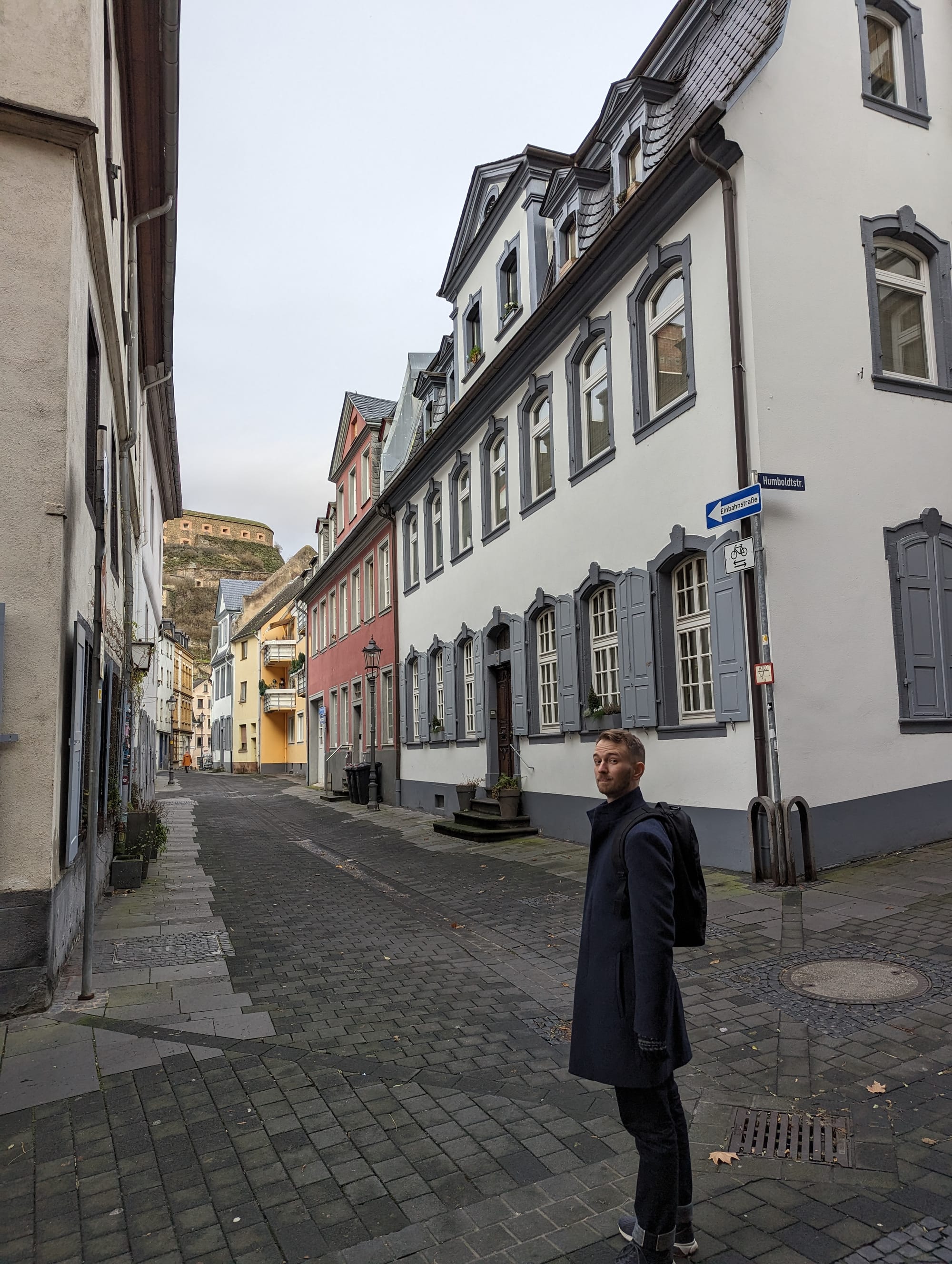
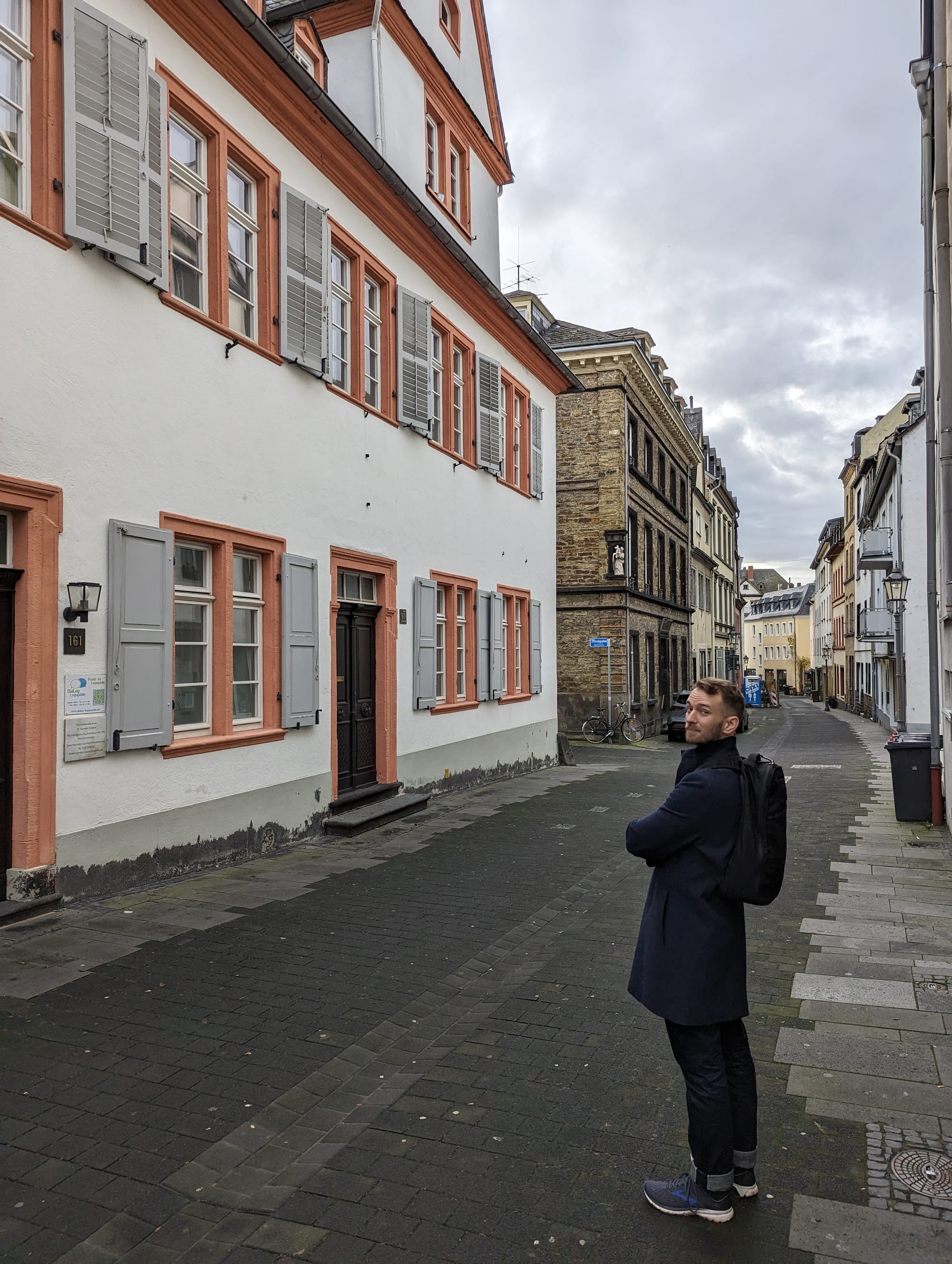
We neglected to take a photo of the Romanesque church, but trust us, it was very Romanesque. Here are some photos of the old town instead.
After Christmas lunch, we crossed the Rhine to the east bank, where you can see the house that Beethoven's mother was born. We did not go inside.
We looped around the back of the Ehrenbreitstein Fortress overlooking the Rhine and hiked up the public walkway to the top. From the western edge of the fortress, you can see Deutsches Eck and a cable car takes you down over the Rhine near the entry to the Eck.
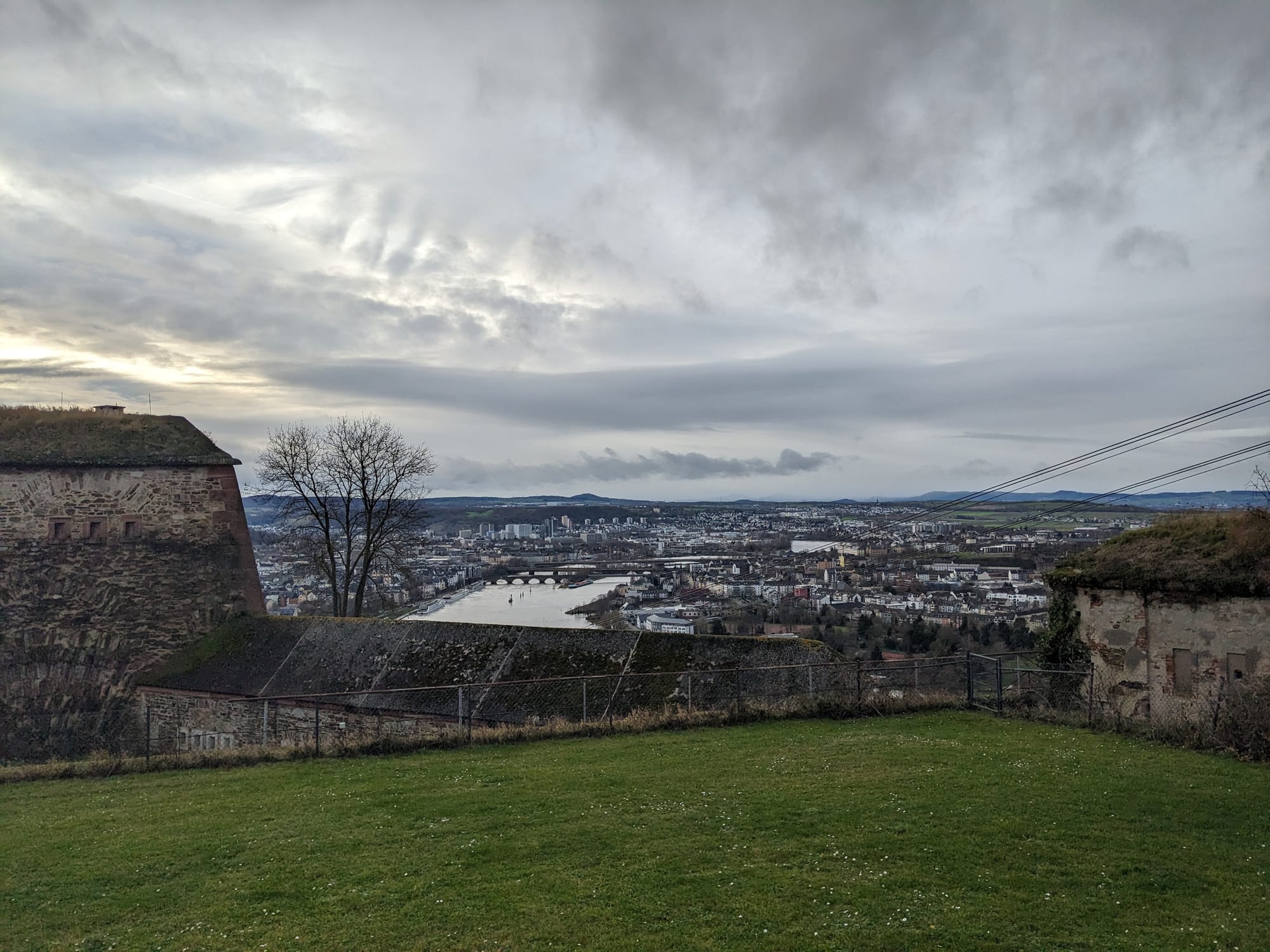
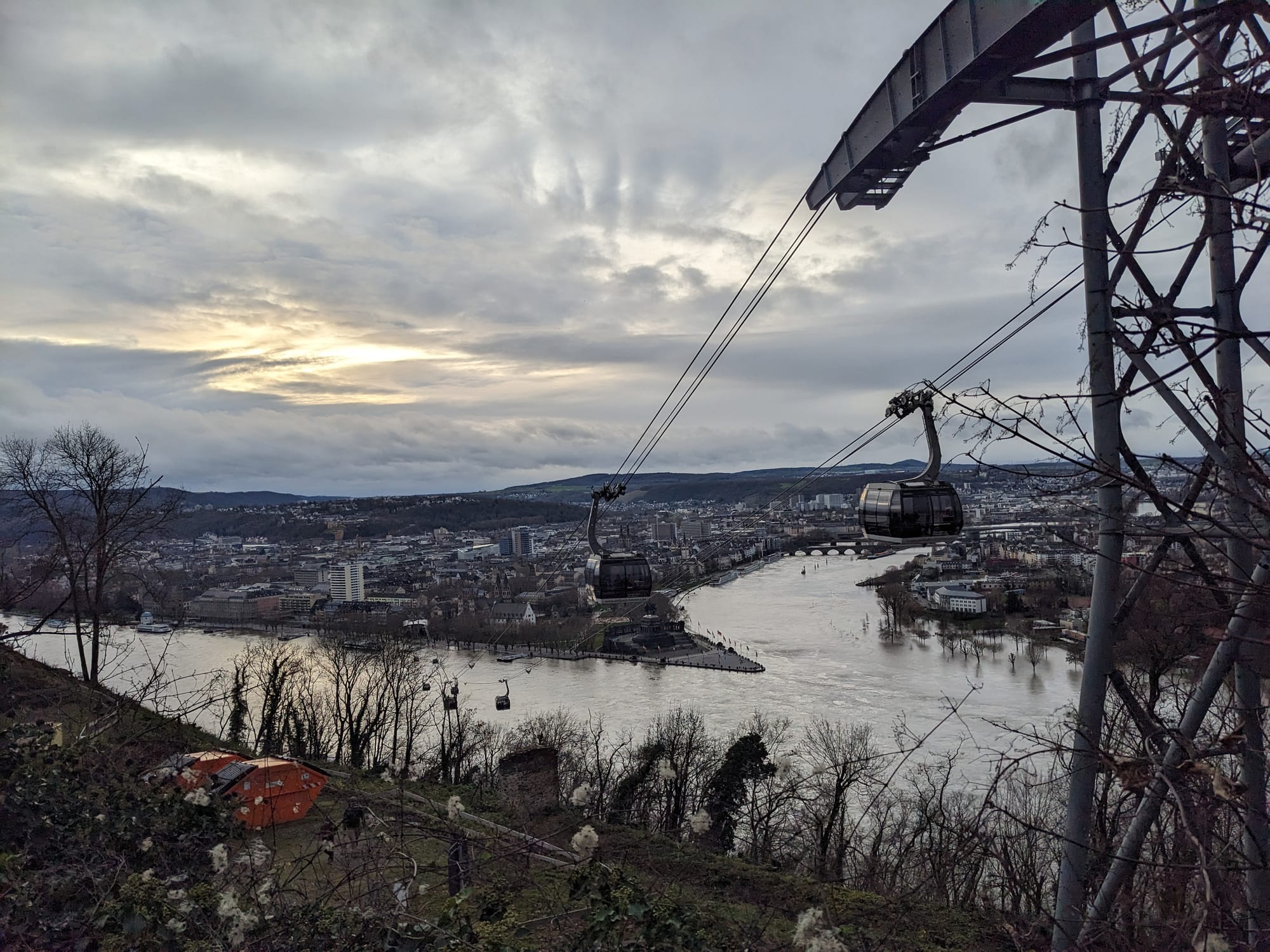
The cable car was convenient but surprisingly expensive, I expected something more a-fort-able.
Mainz, Germany (26th December)
The next leg of our journey was to catch a local train from Koblenz to Frankfurt, where we would stay for a night. However, the distance is only ~120kms and, as fans of the Revolutions podcast will know, when the fortress of Mainz fell during the French Revolutionary Wars it was a capital B capital D Big Deal that paved the way to the capture of Koblenz, so we simply had to stop in Mainz.
Mainz is the capital and largest city in Rhineland-Palatinate at 215,000 souls (5% of the lander's 4 million people). Mainz is home to the Collegiate Catholic Church of St. Stephan, a church in the Gothic style (narrow tapered windows, high ceilings and flying buttresses). The stained-glass windows are a modernist design by Marc Chagall, a Belarusian-French artist, and well worth the price of admission.
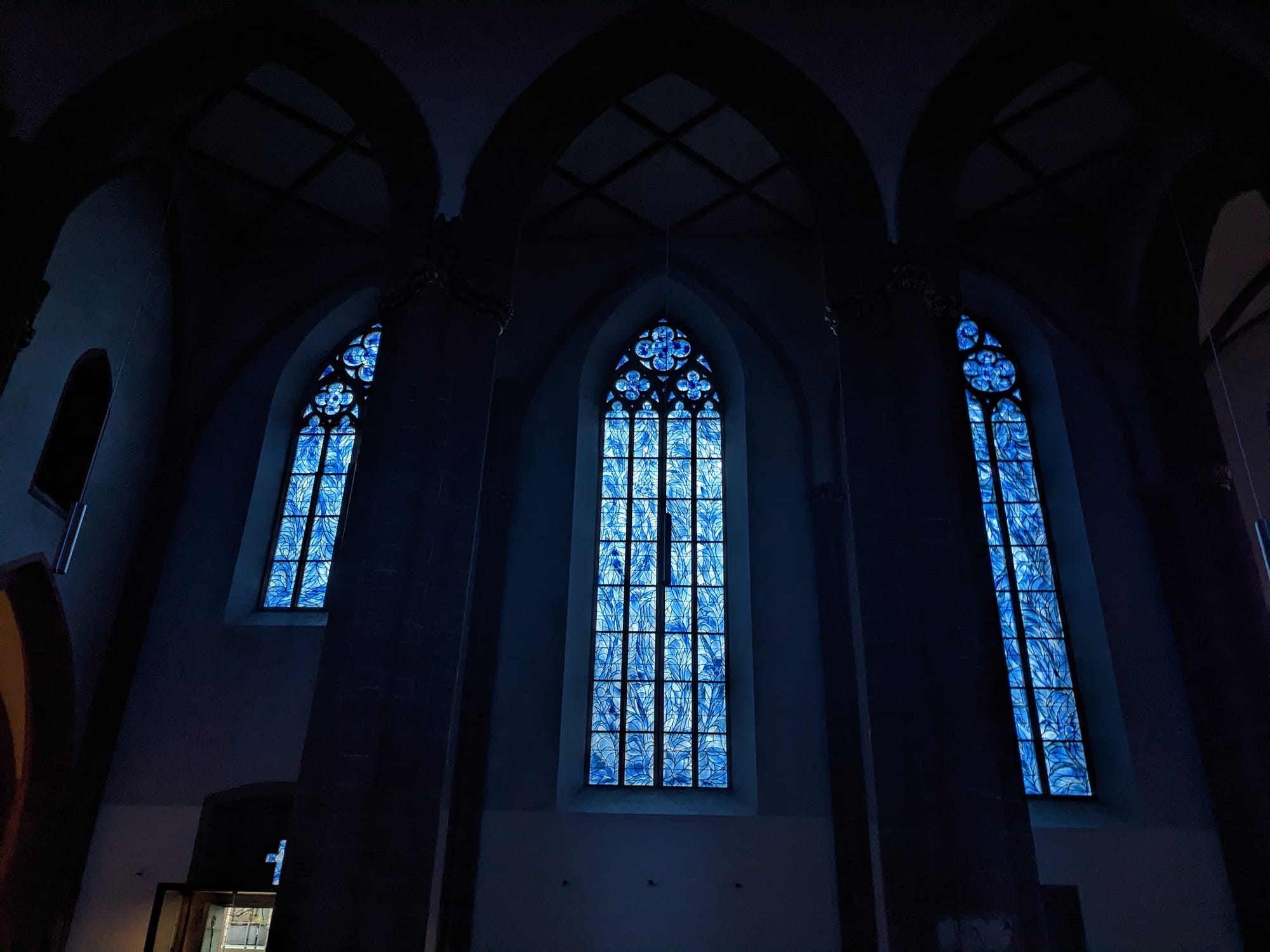
You can bet your glass it's great artwork.
The town centre is highly modern. Over 80 per cent of the town centre was destroyed during WWII, however, the 1,000 year-old Saint Martin's Catholic Cathedral, the Gutenberg Museum (which is much less than 1,000 years old) and many small old streets still exist We wended our way whence to Mainz station and went on to Frankfurt.
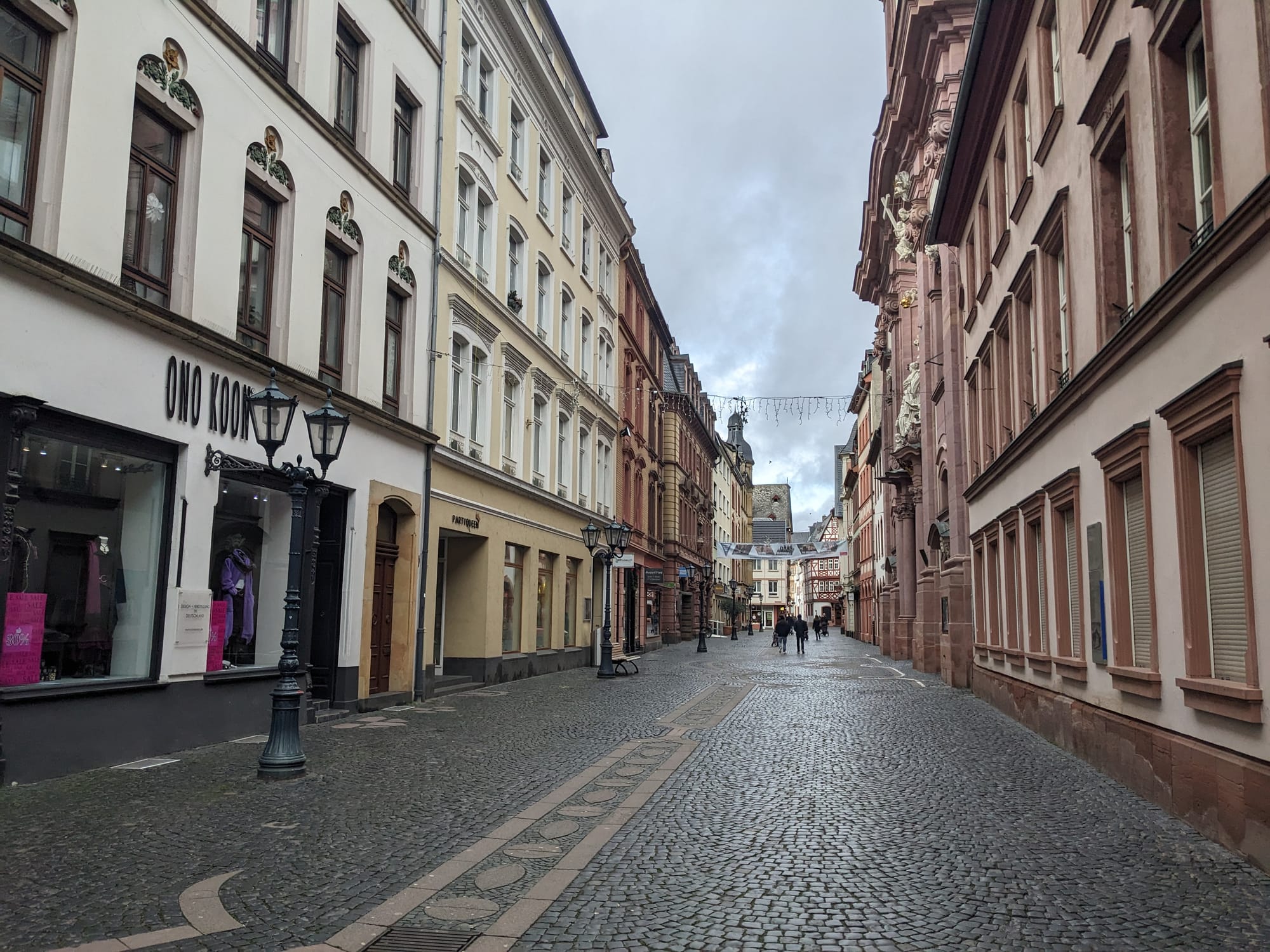
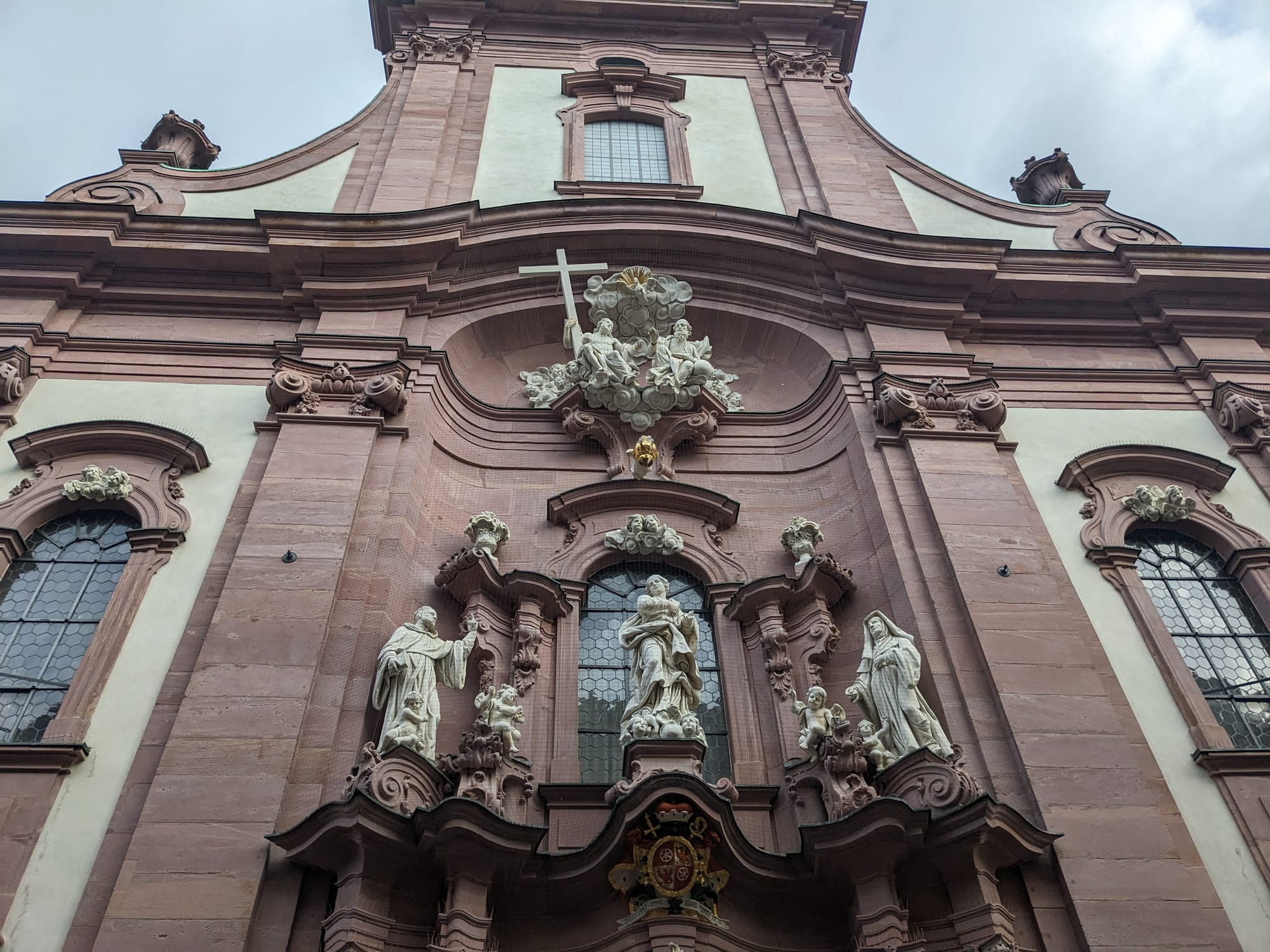
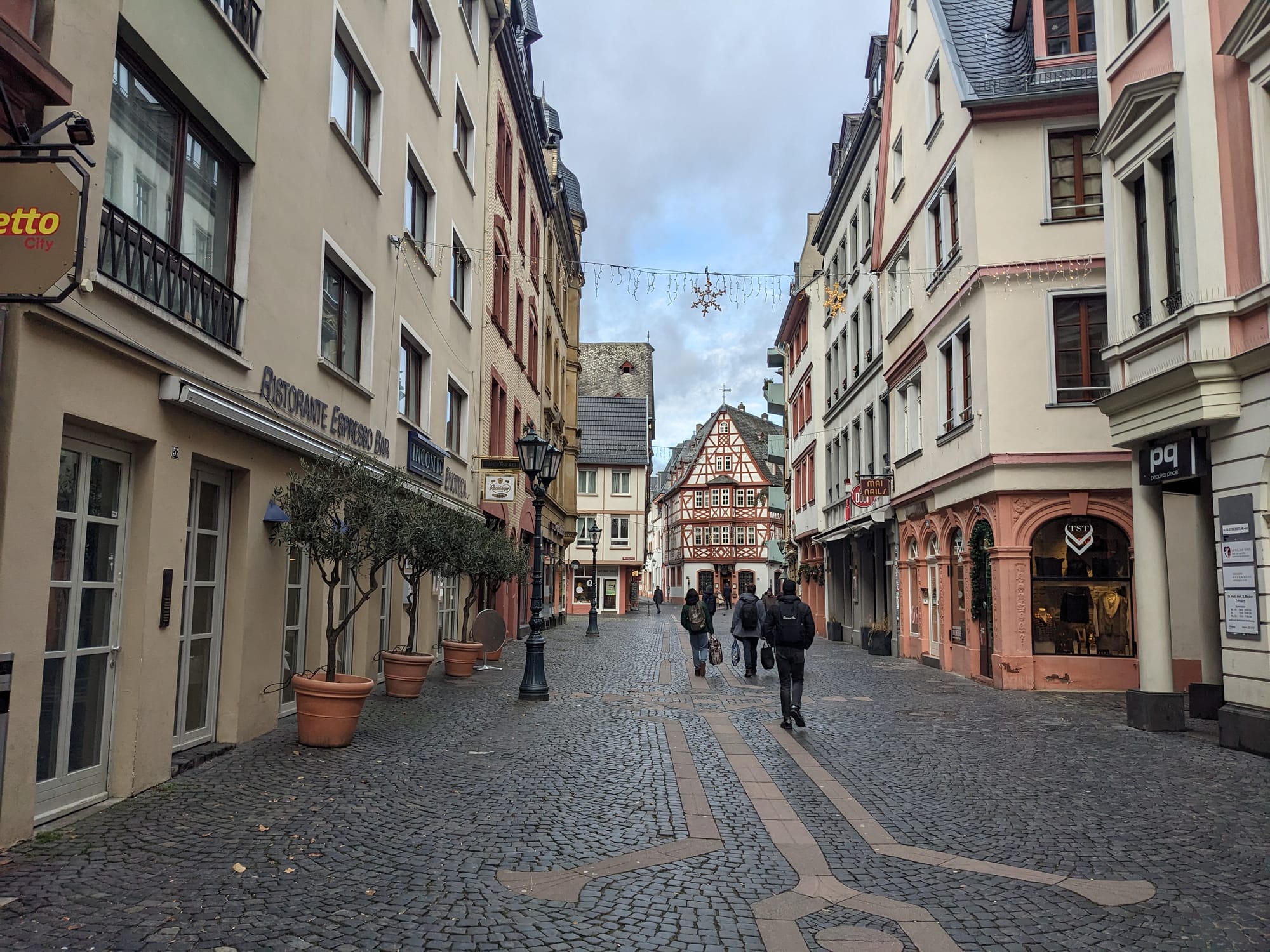
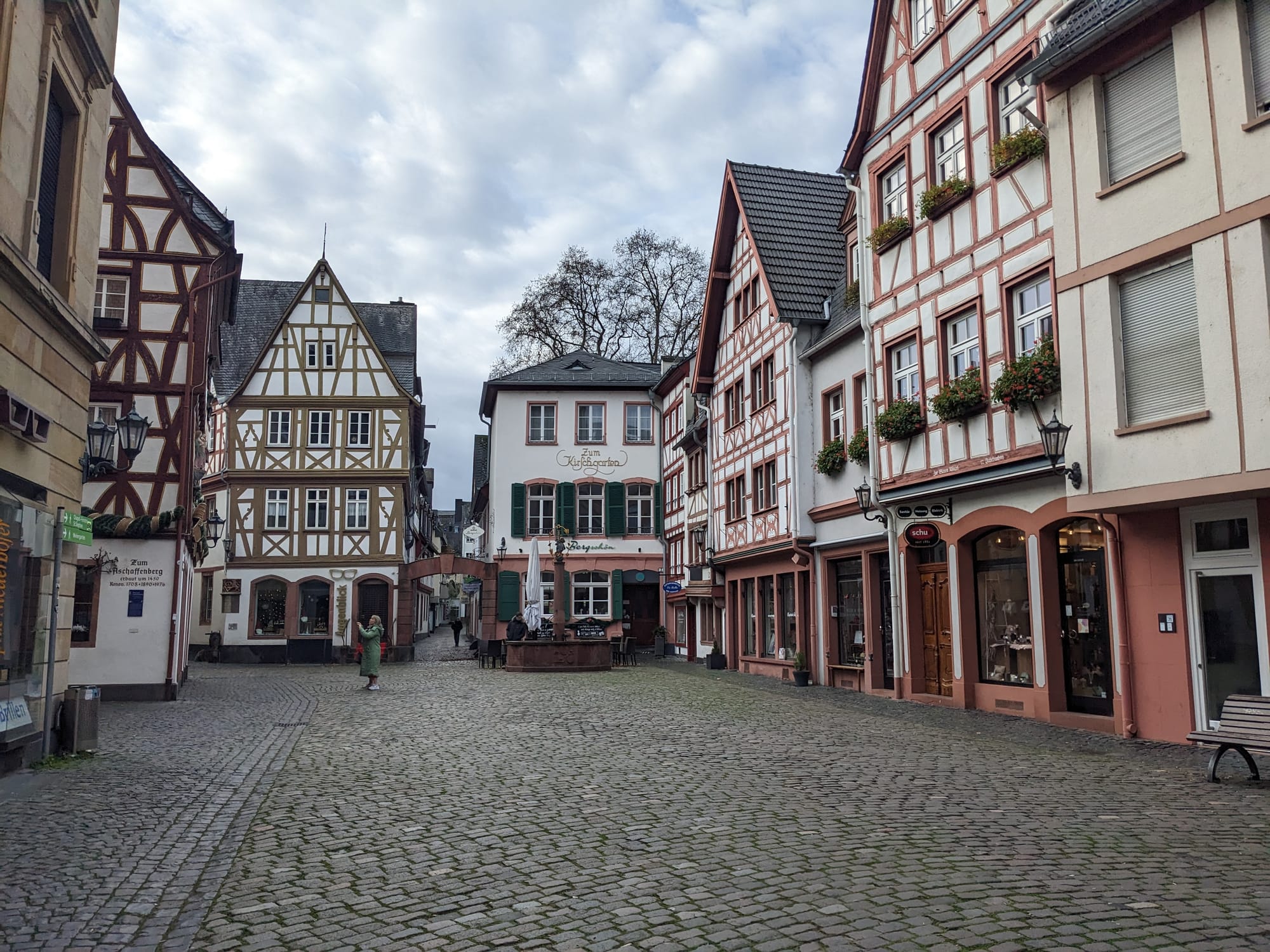
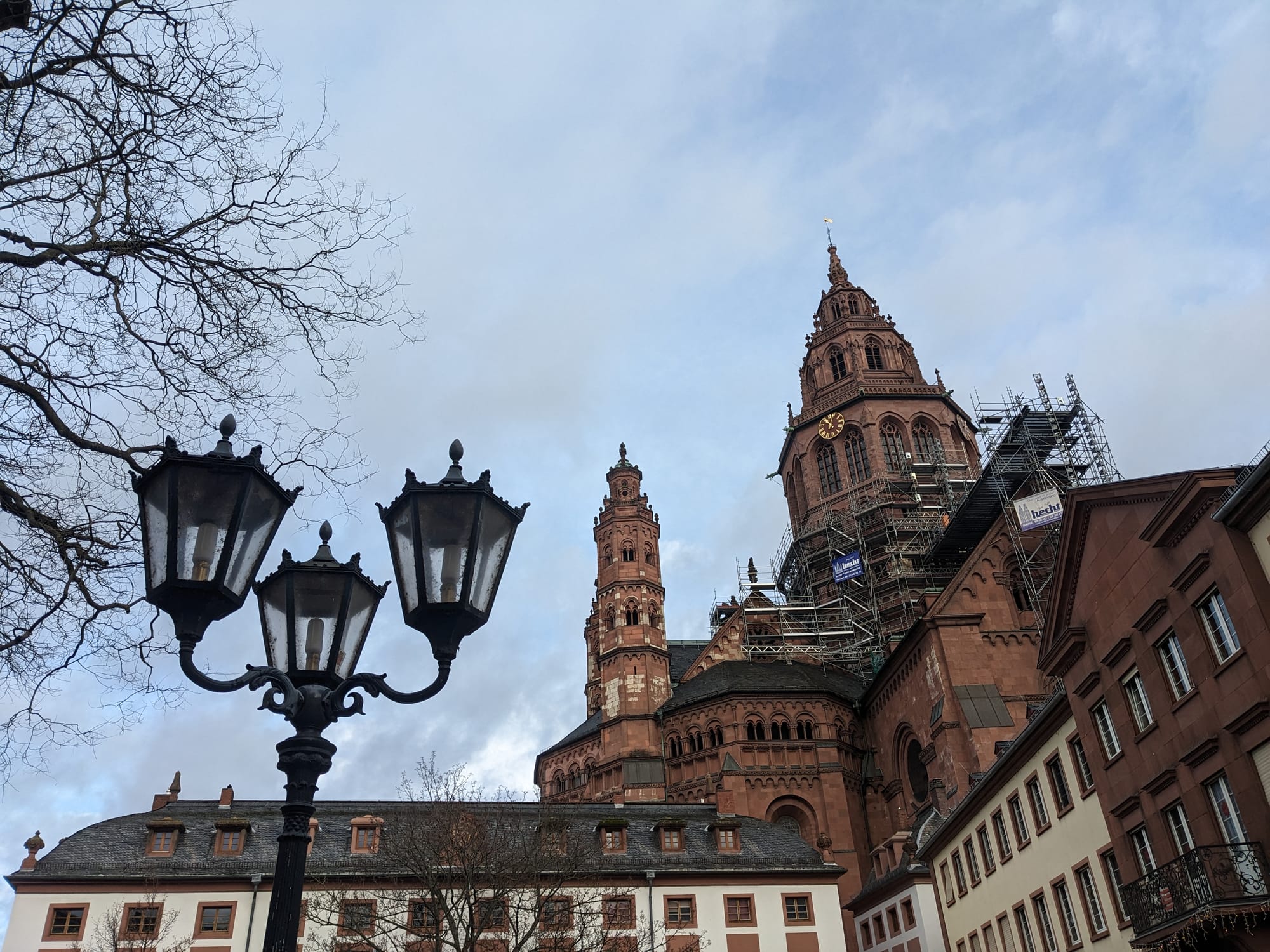
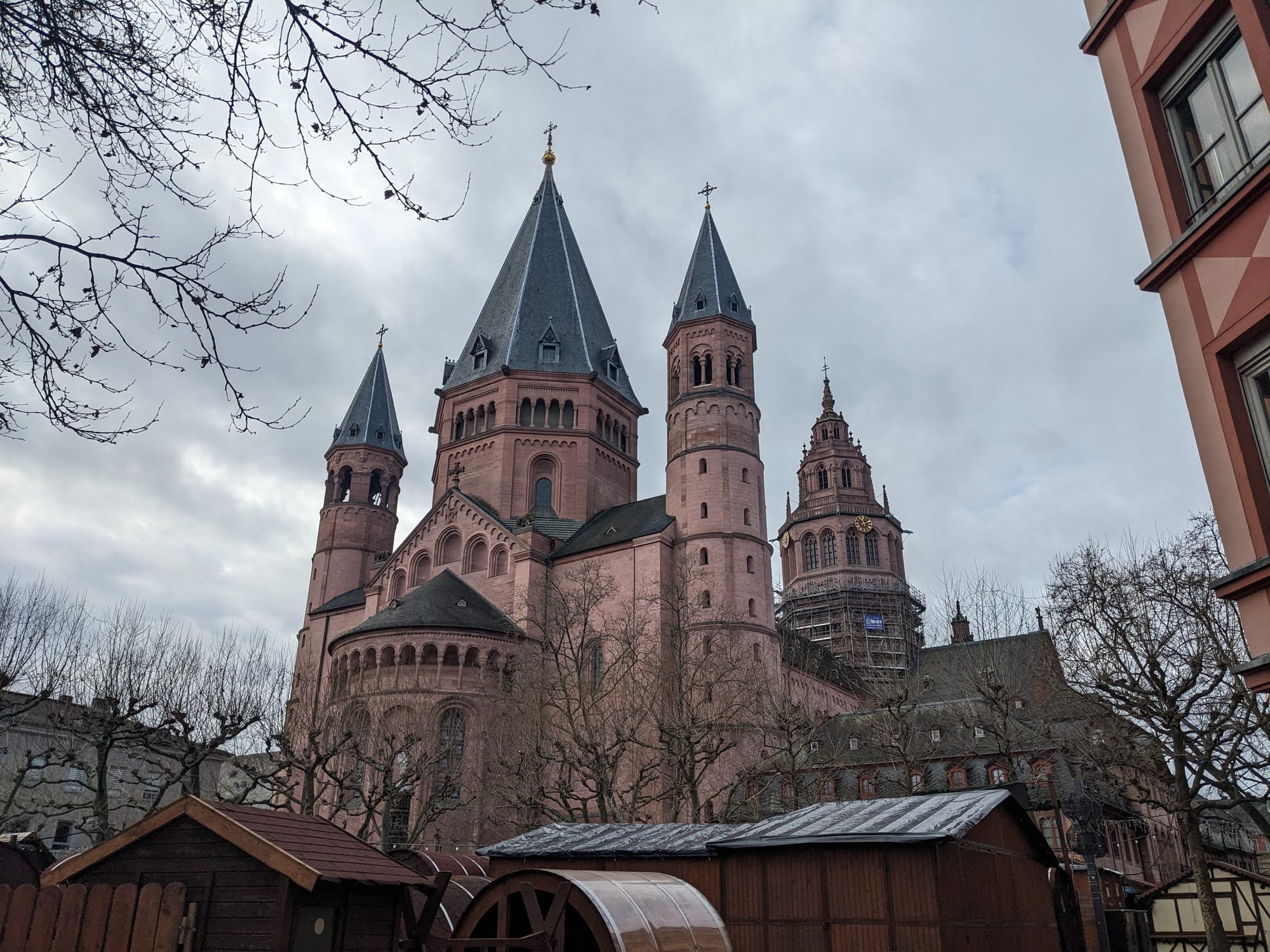
St Martin's Cathedral is on Mainz Street
Frankfurt, Germany (26th December)
Reader, I will level with you. Frankfurt did not impress me. Like many an area outside a major railway station in a global city, the streets around the Frankfurt Hauptbahnhoff are lined with strip clubs, drug stores and the discharge of the human body. I believe we passed through this characterful neighbourhood no more than twice - all other times we got off one metro station early so we didn't need to experience it again.
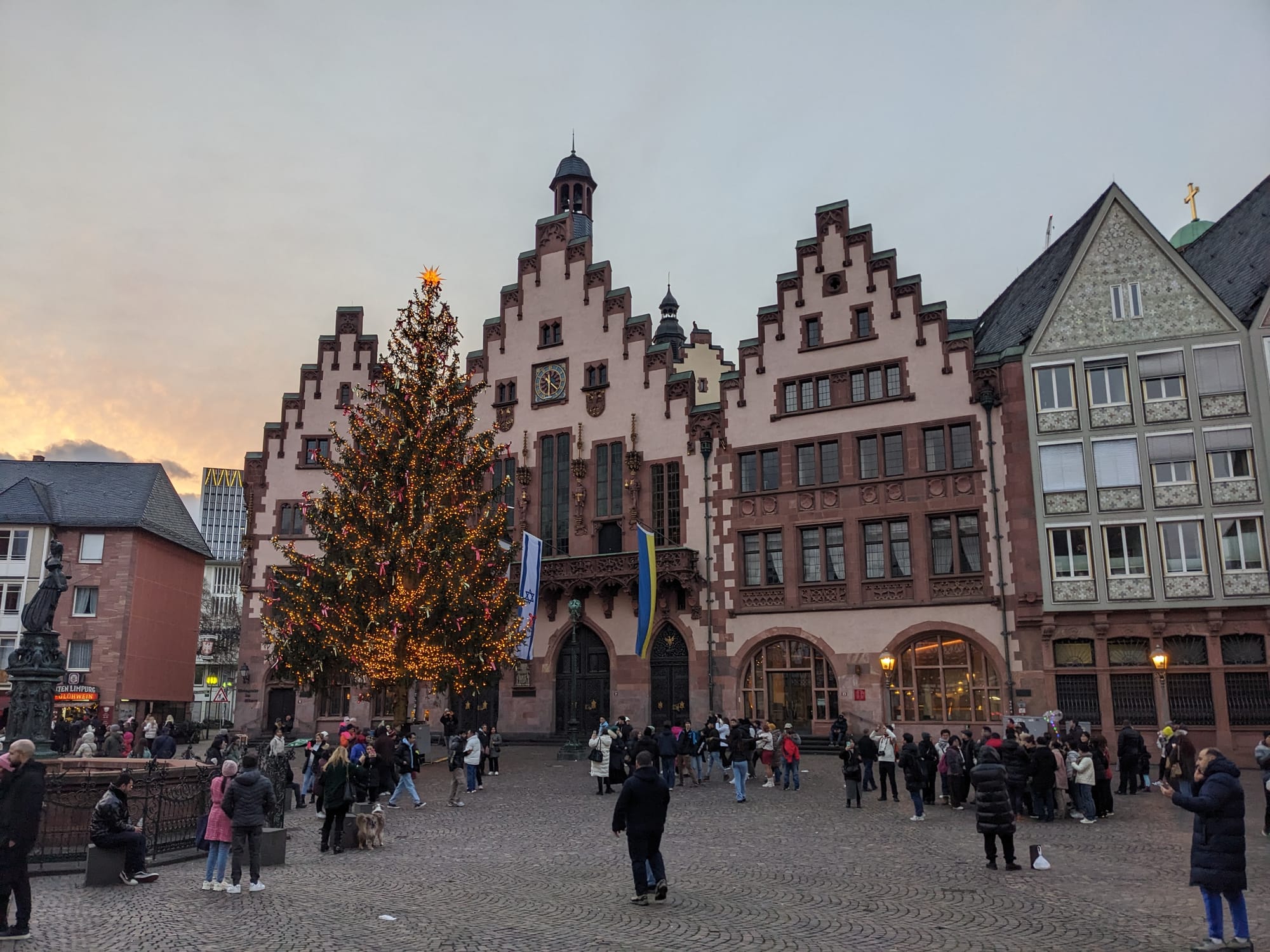
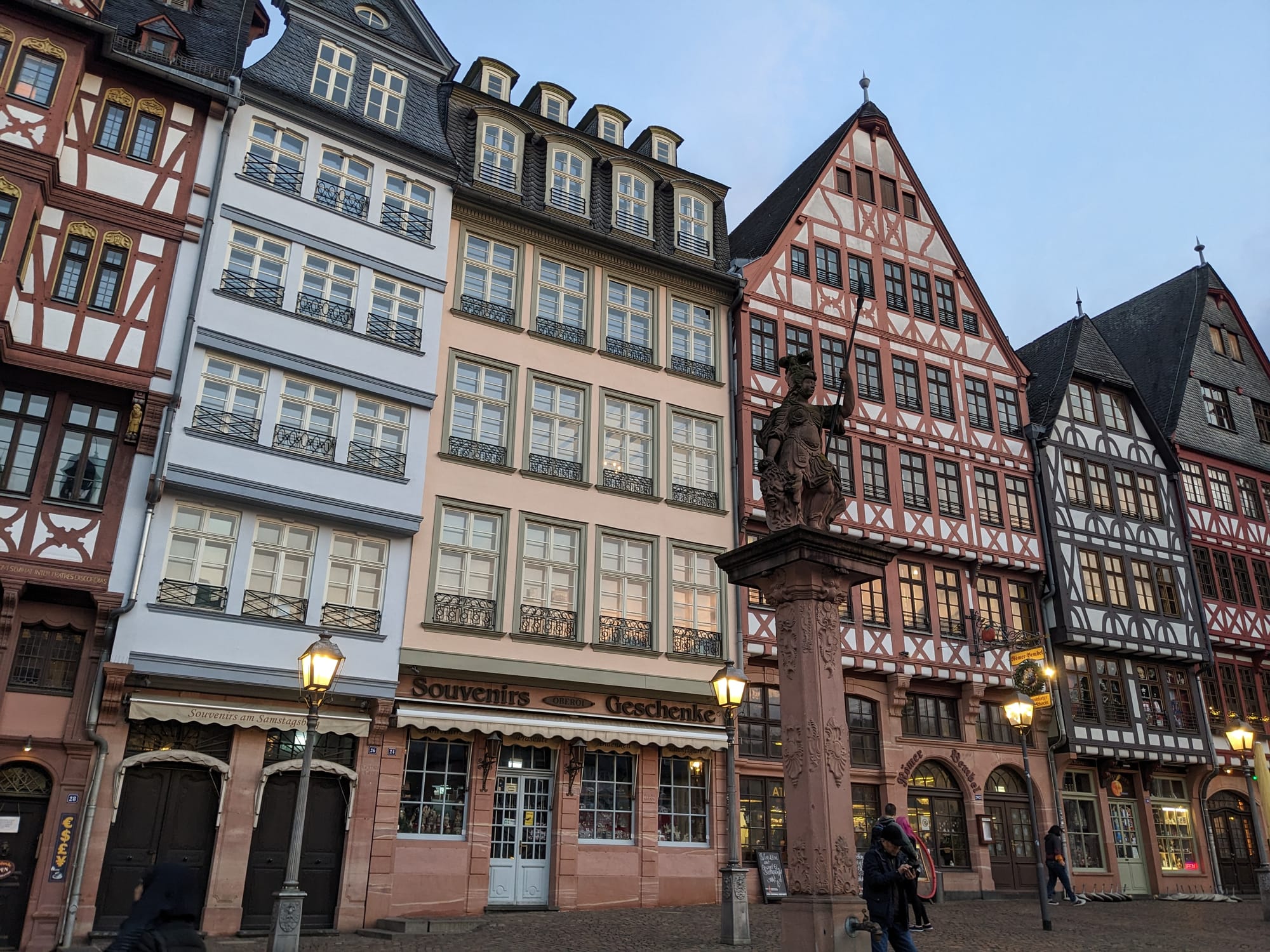
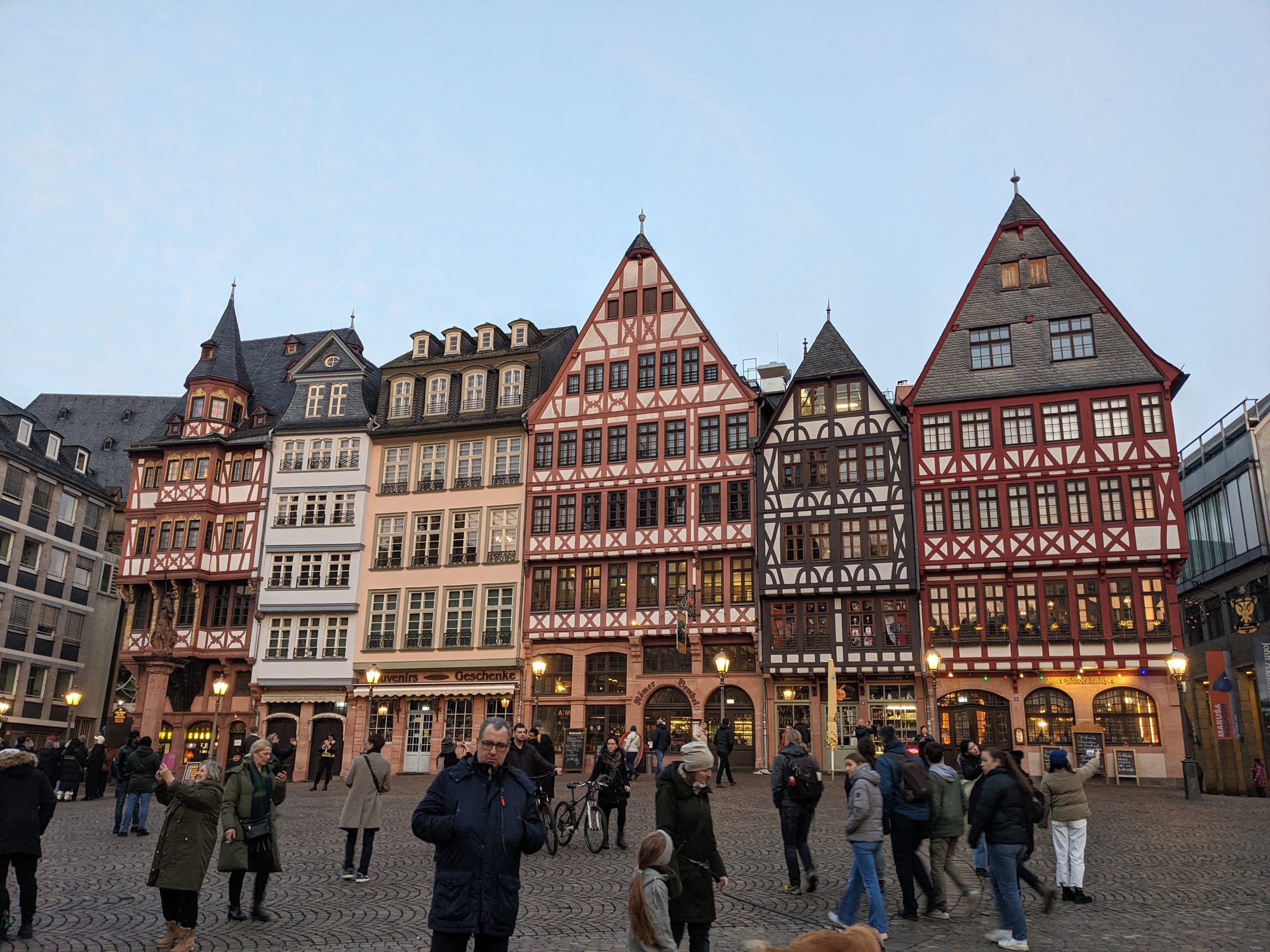
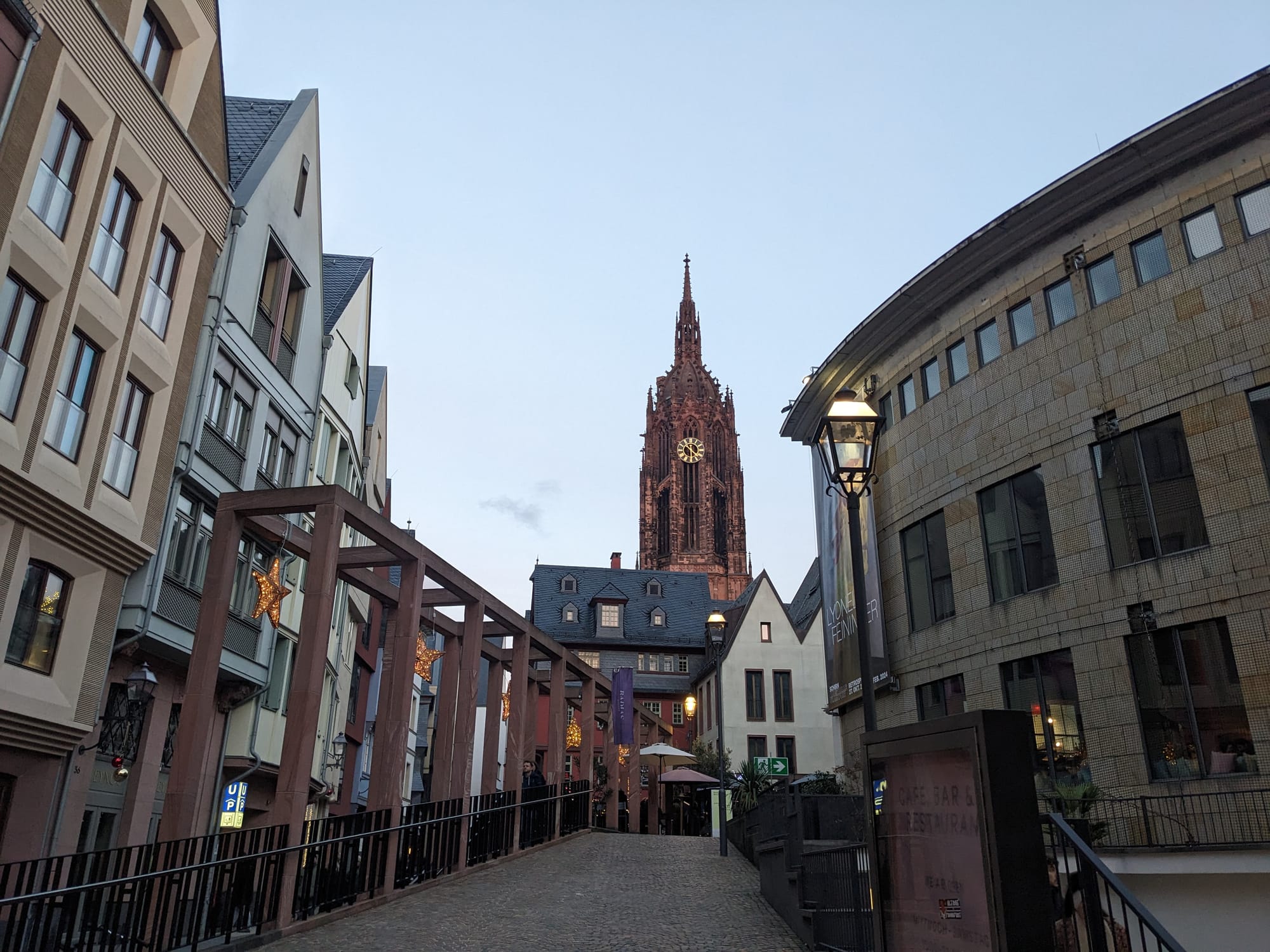
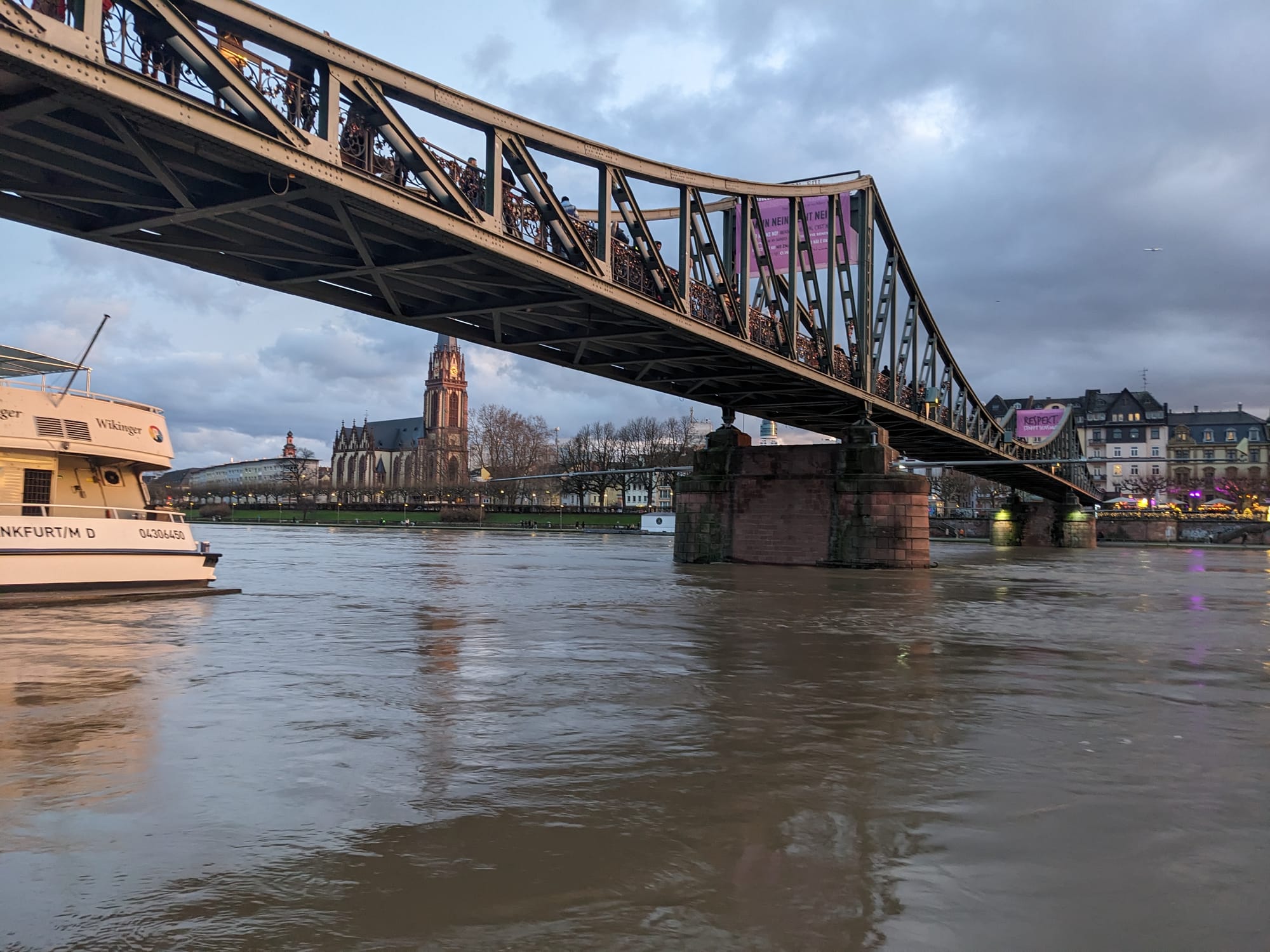
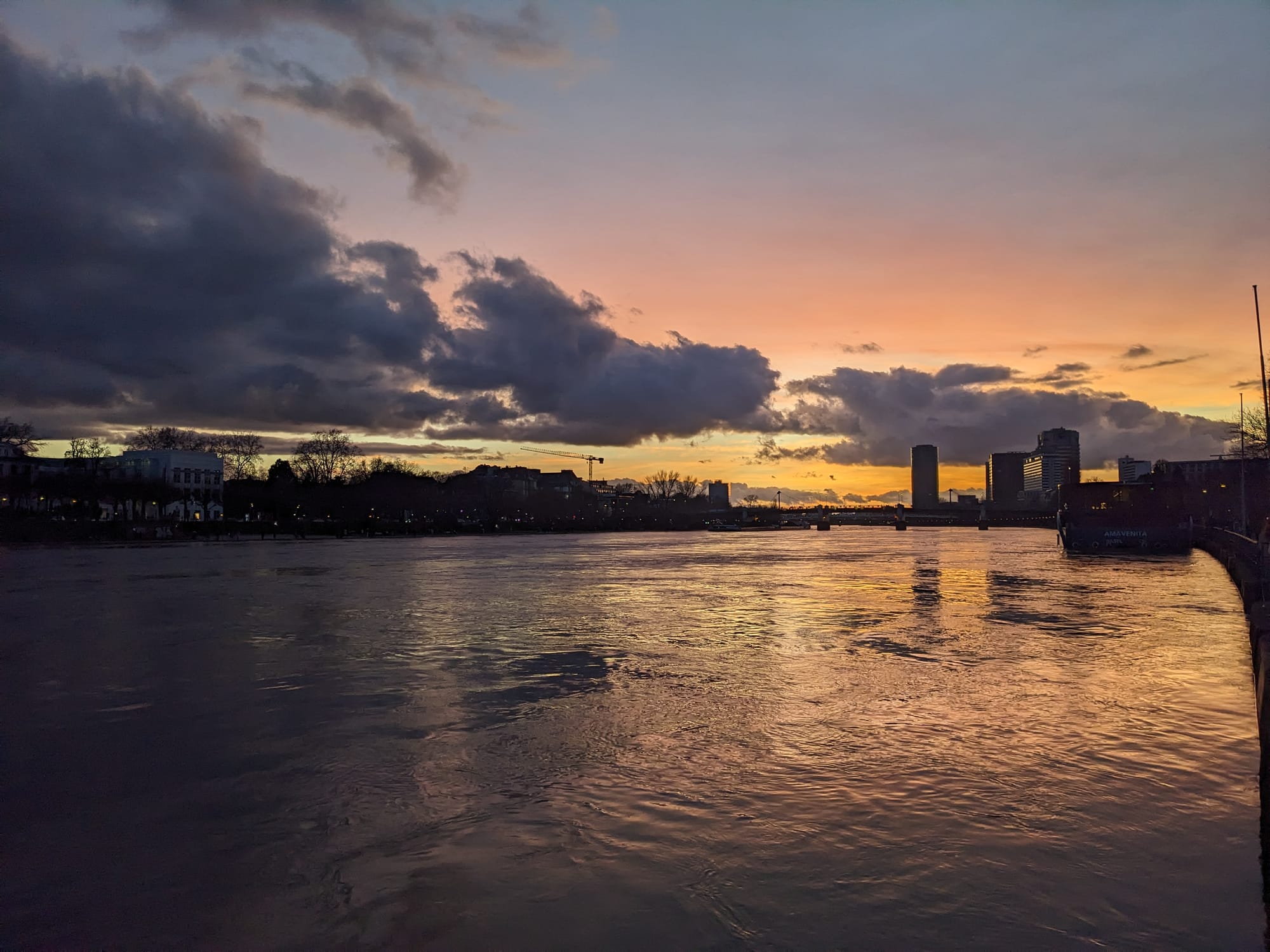
Thematically, the old town comes before the cathedral, even though it comes chronologically after the cathedral, which is why it's suddenly sunset.
The Imperial Catholic Cathedral of Saint Bartholomew is a Gothic church on the north bank of the Rhine. We paid to ascend its highest steeple and enjoy its views and look in stunned amazement towards the financial centre of Frankfurt. Like Mainz, Frankfurt is the the capital of its lander, but unlike Mainz, its 775,000 people make up a muscular 12% of Hesse's 6 million people (the greater Frankfurt metro area contains 5.6 million). European cities could have CBDs with skyscrapers.
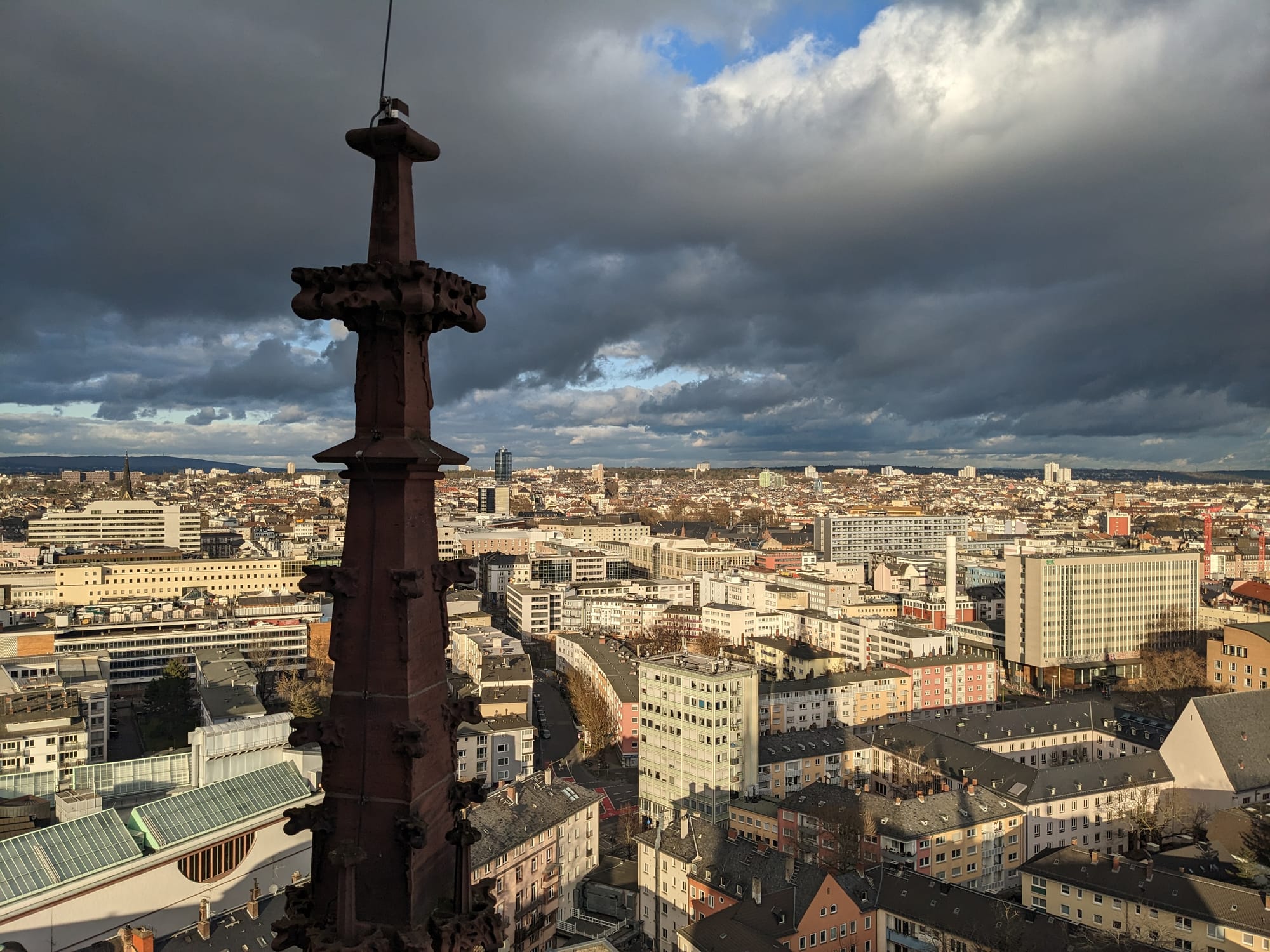
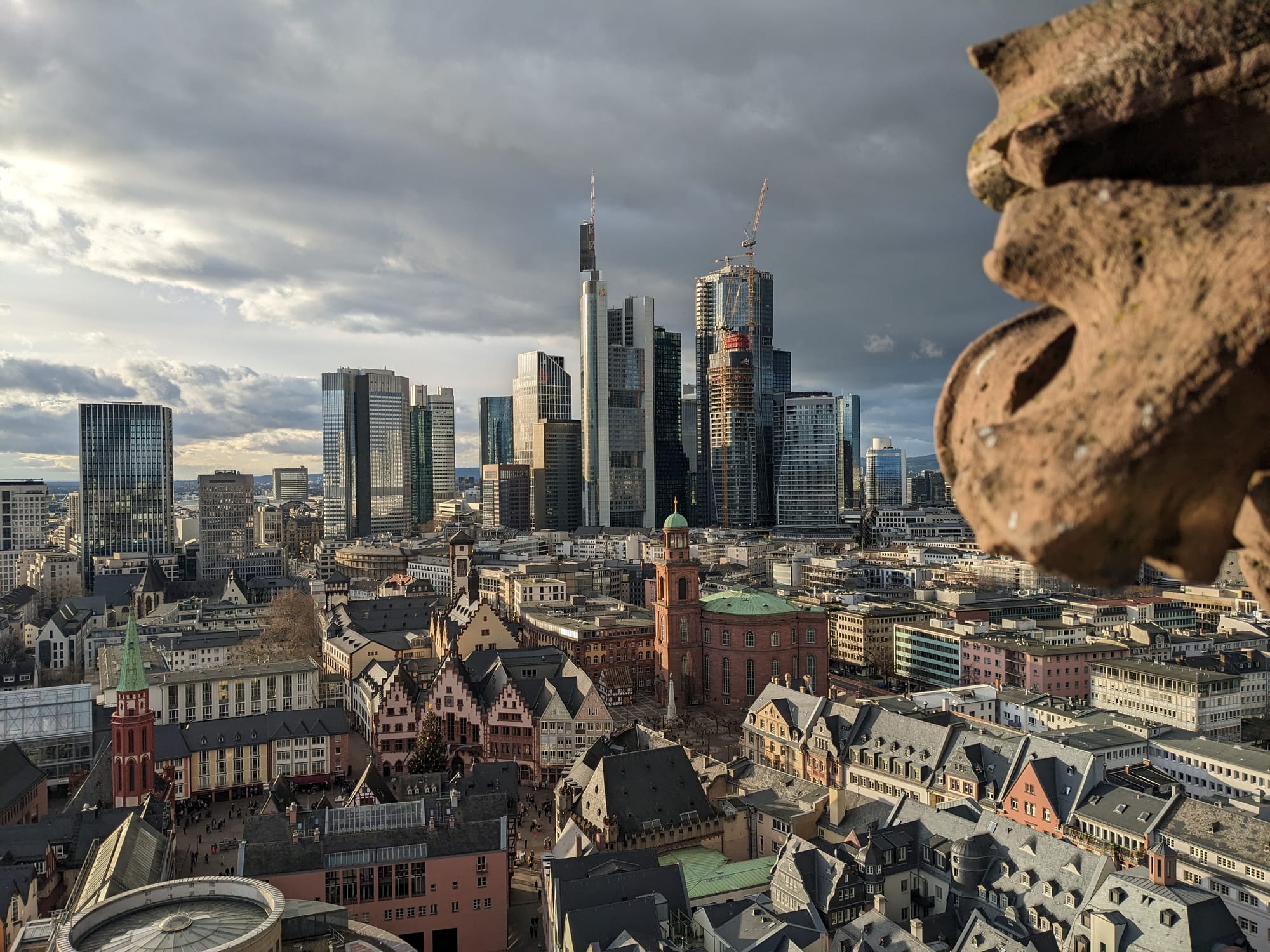
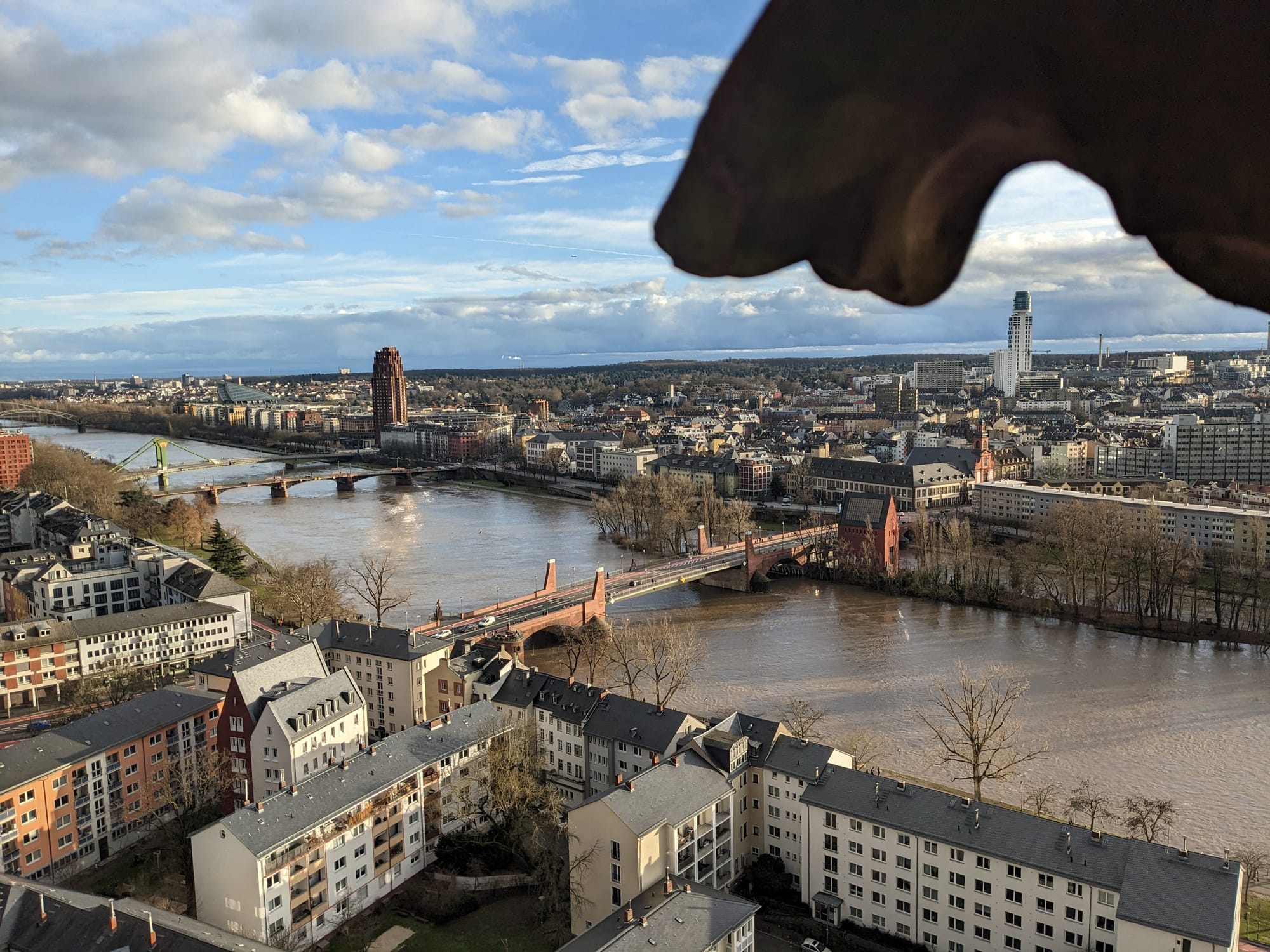
Sorry hero, your princess in is another spire.
That evening we went to the Frankfurt Opera and saw Aida. Germany is known for staging somewhat more avant-garde opera productions, and I'm told that this Aida was no exception, although I've seen no other productions to compare it to. Our seats were truly high up and angled such that a few brave souls watched the opera while standing. I remained seated. But most exciting of all is the fact that outside the Frankfurt Opera is the European Central Bank!
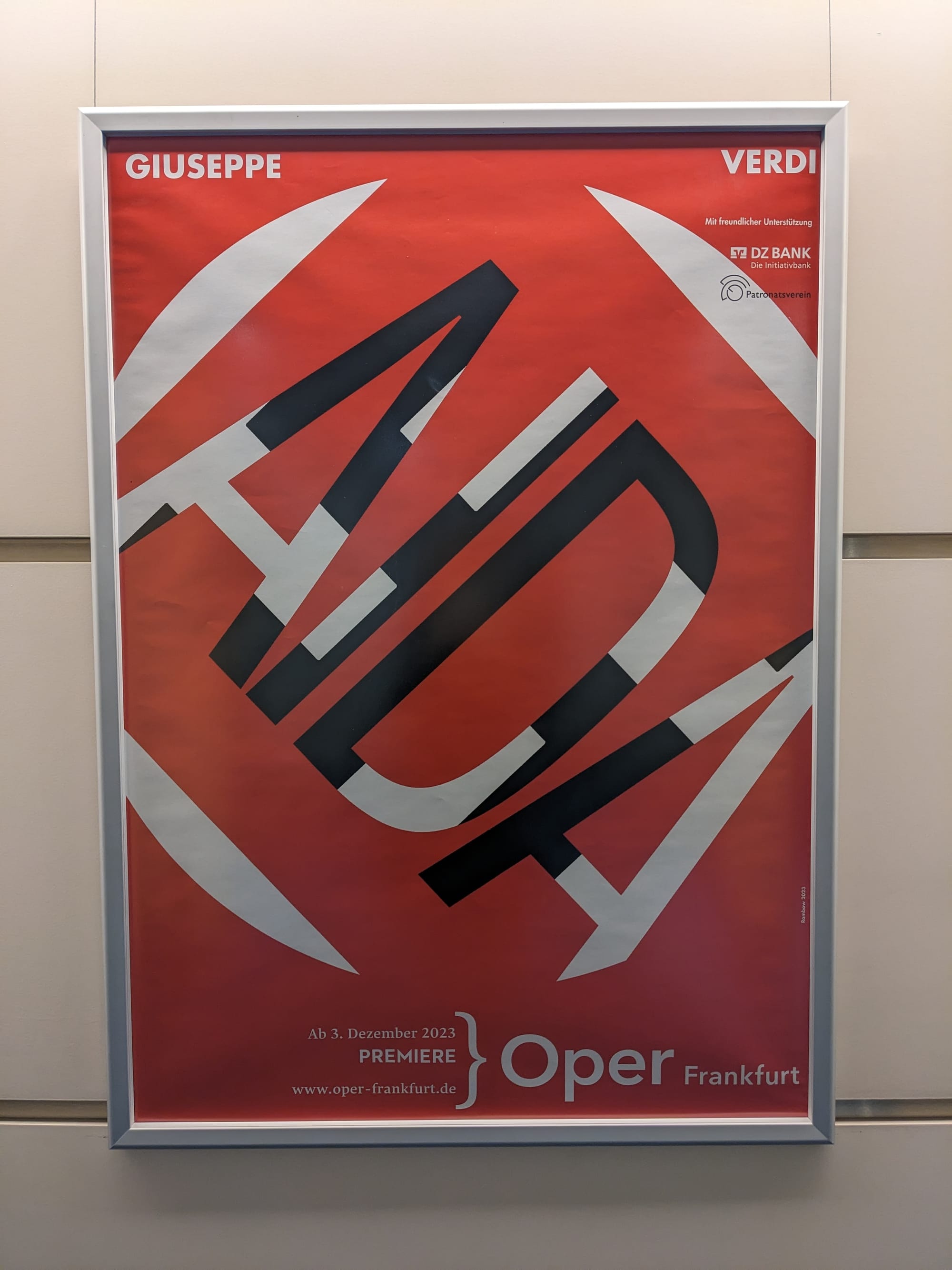
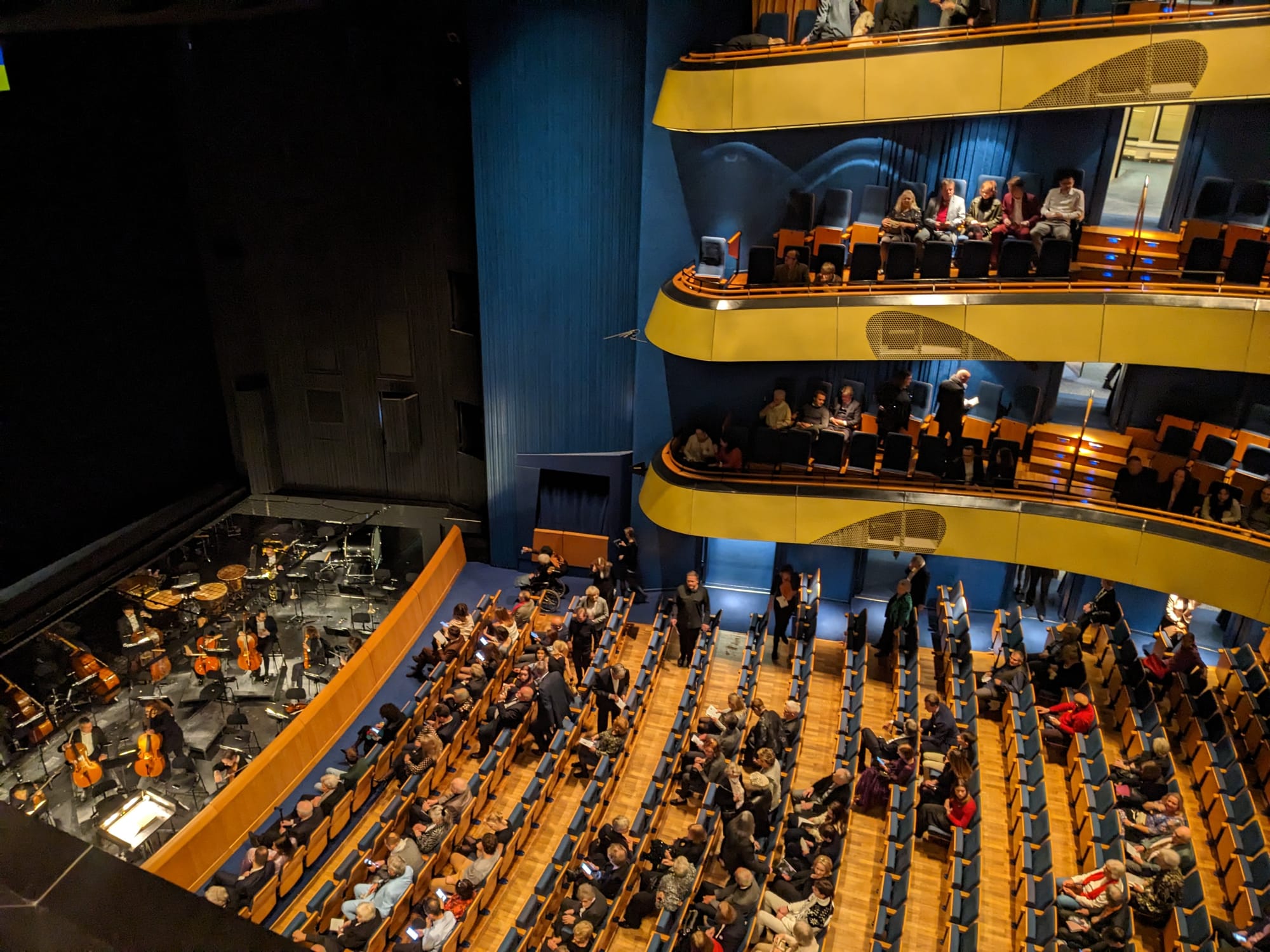
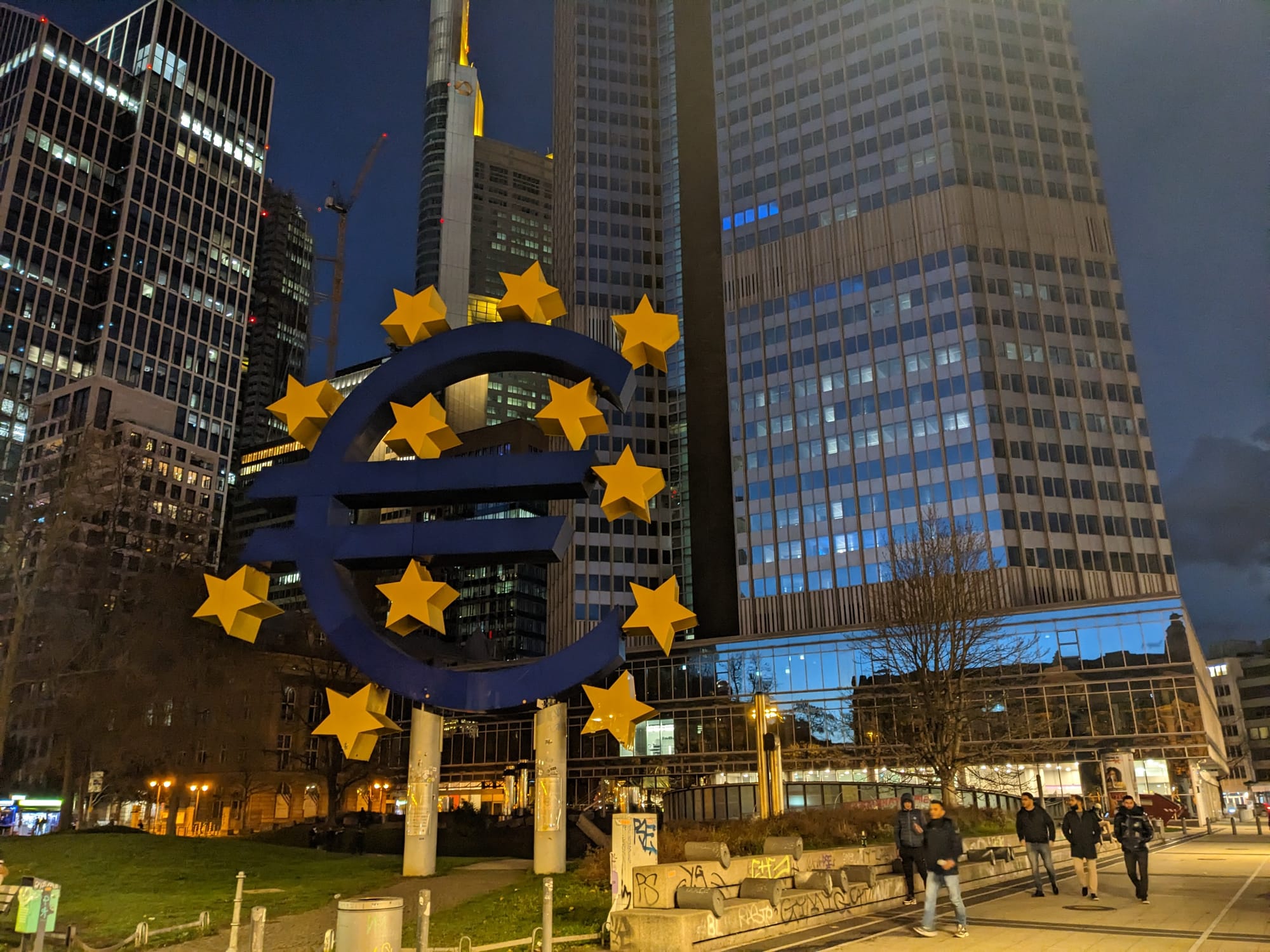
Even though there's a sumptuous opera production going on below, I encourage you to not look down. The ECB is here because it's nearby, not because it was part of the Opera.
Mannheim, Germany (27th December)
Frankfurt being the hub of international travel that it is, there was no shortage of trains to our next destination. Soon after our train crossed from Hesse into Baden-Wuttemberg it came to Mannheim, another star of the Revolutions podcast. In 1795, French General Pichegru captured Mannheim from the Austrian forces in May but then defected to the Austrians, leading to their retaking Mannheim from the French in November.
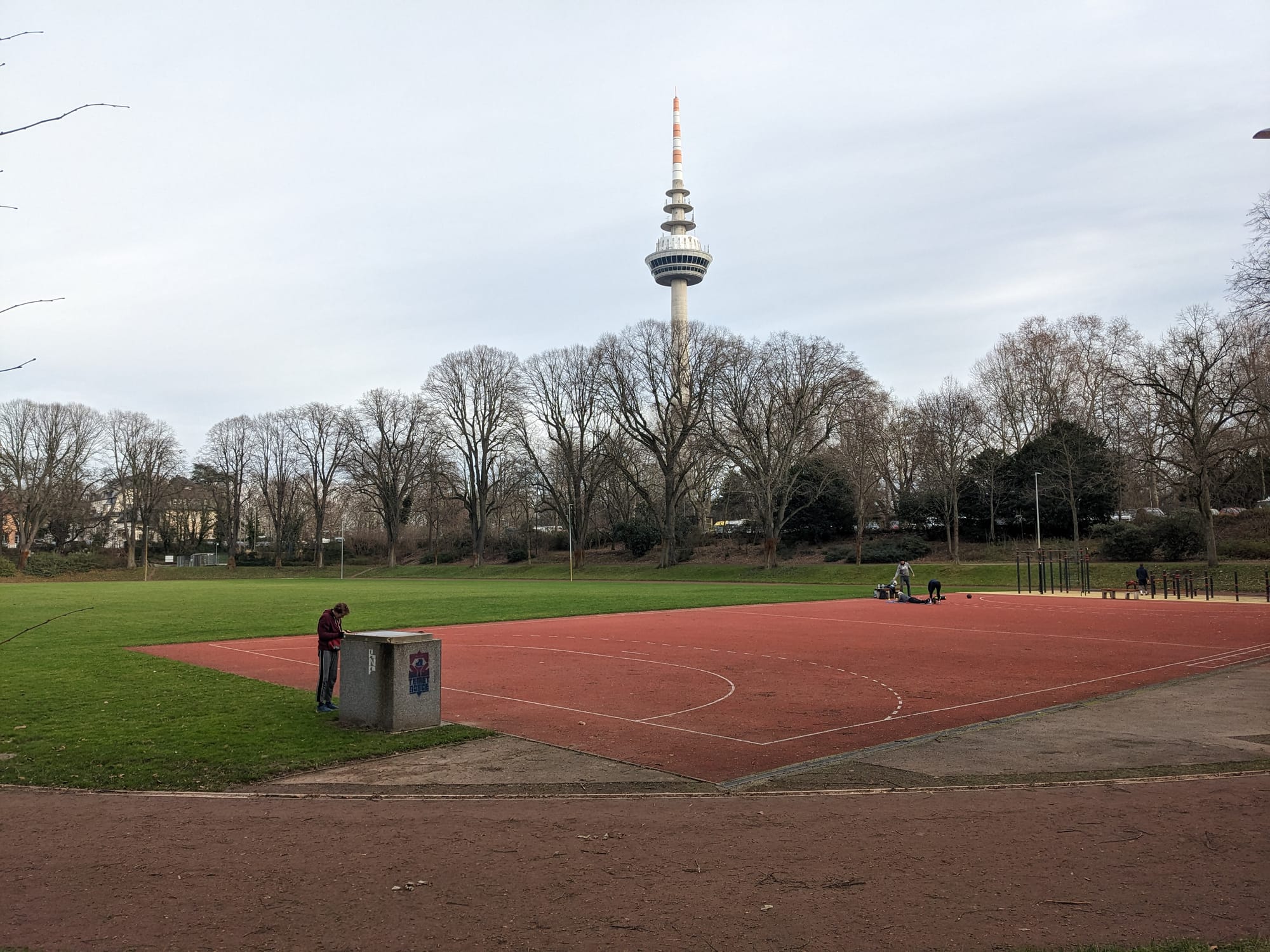
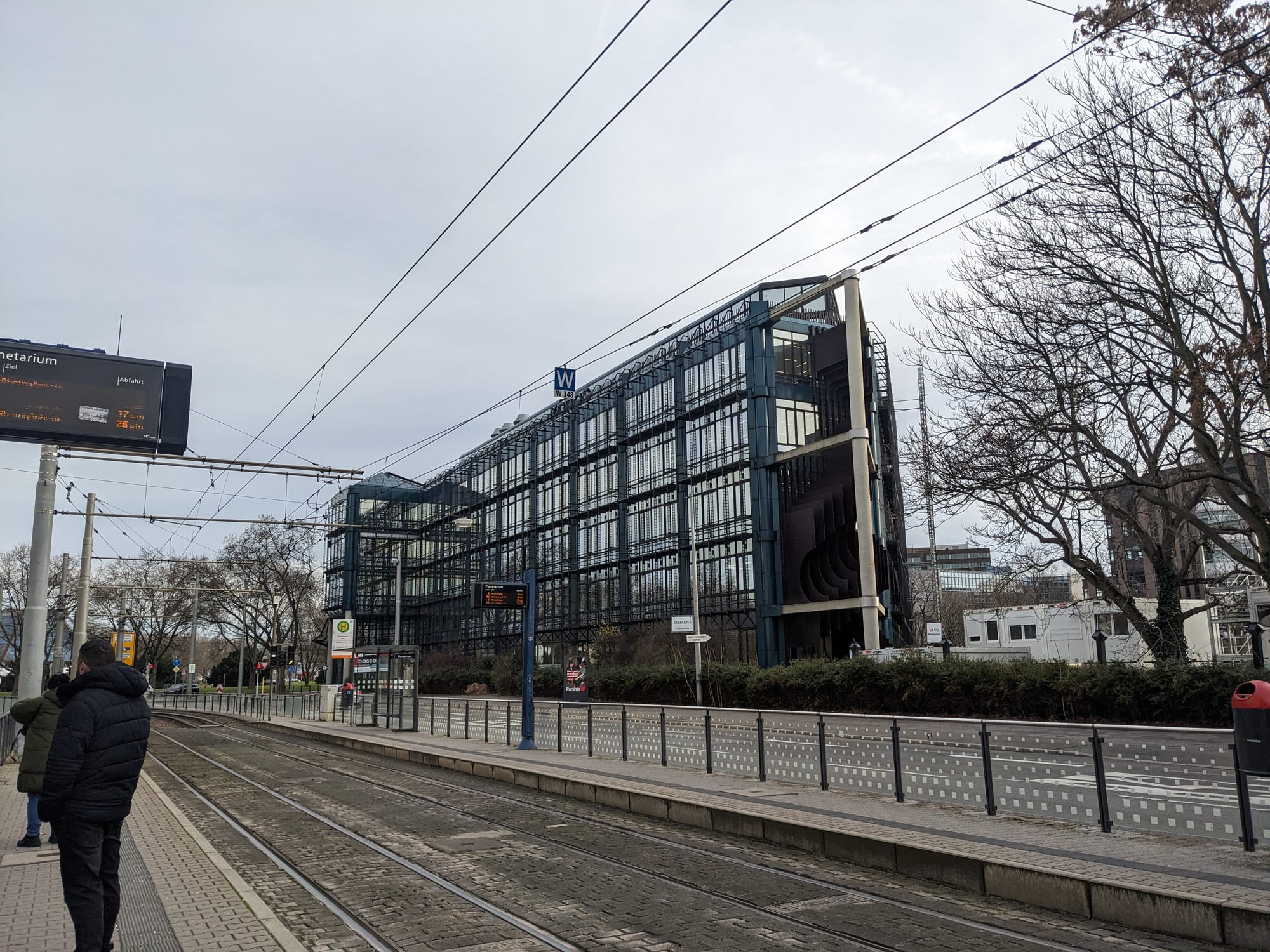
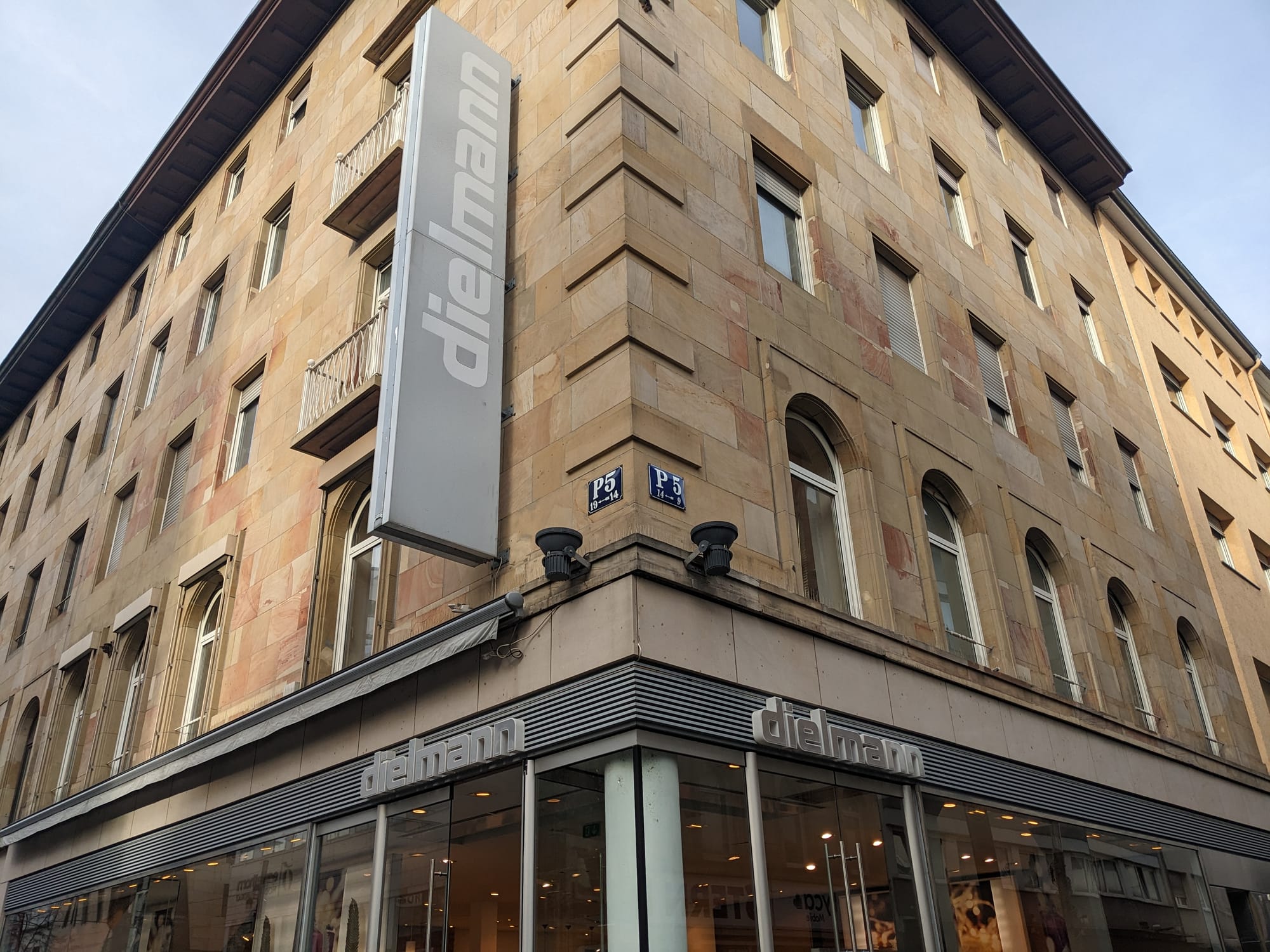
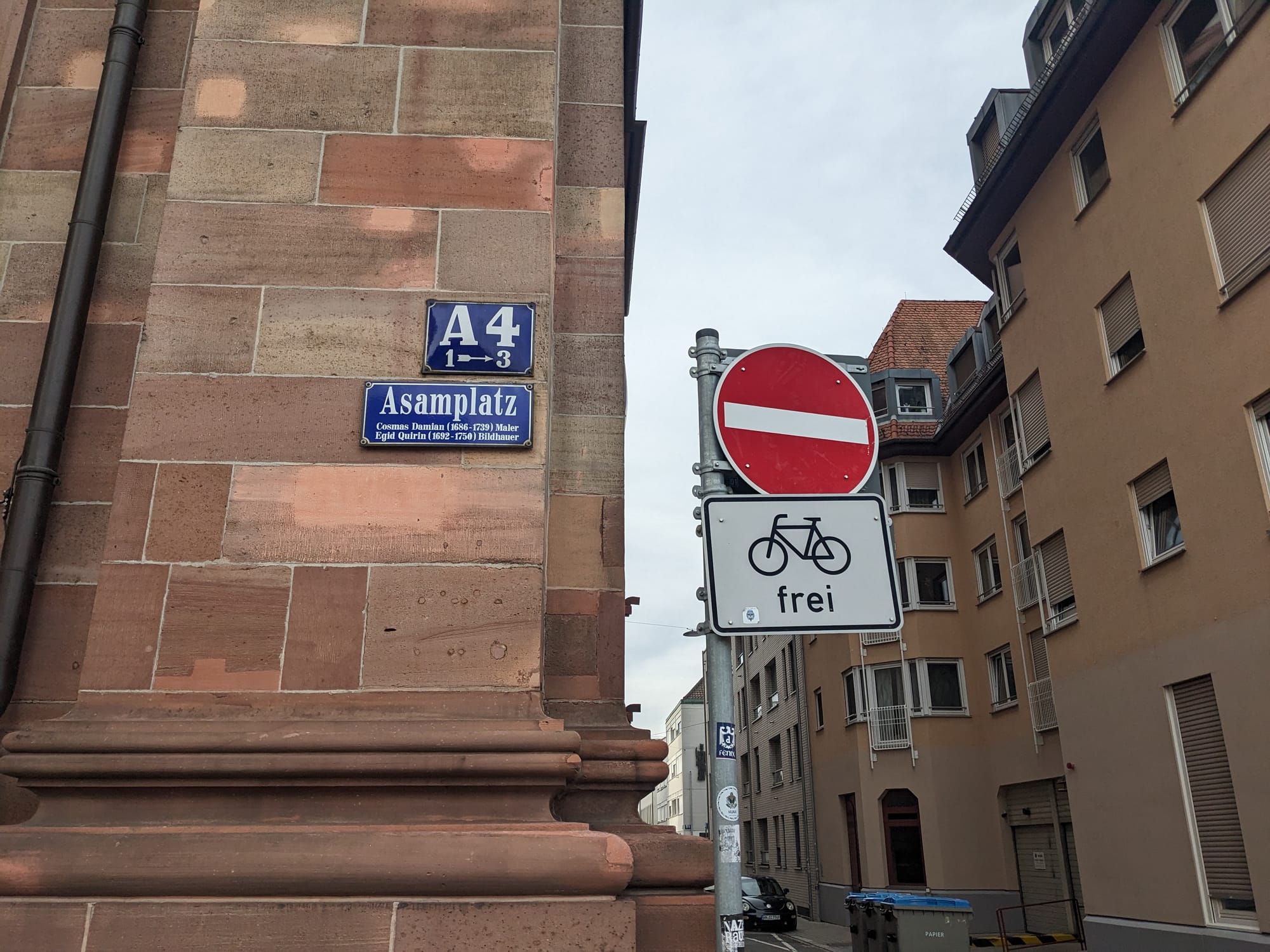
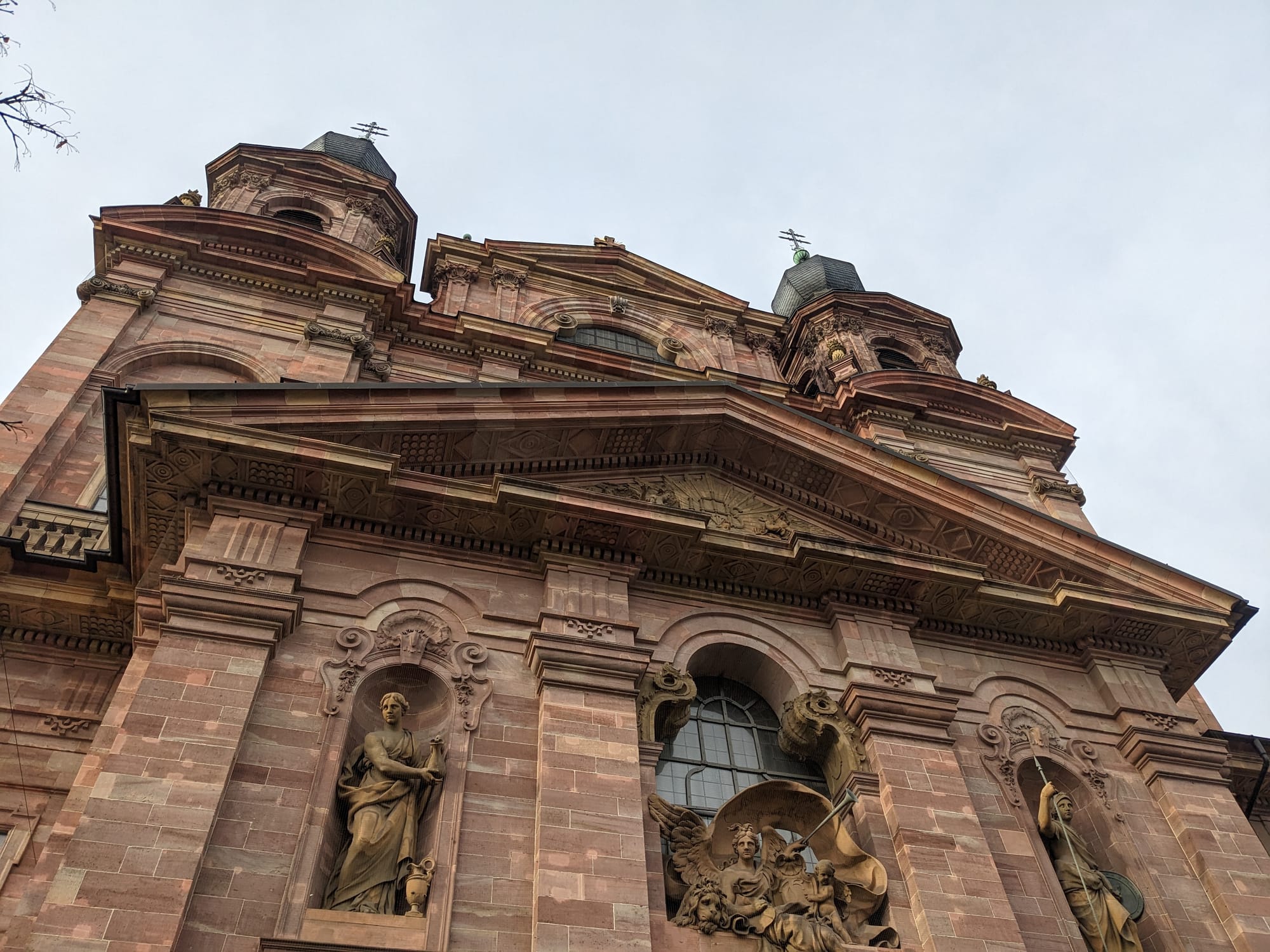
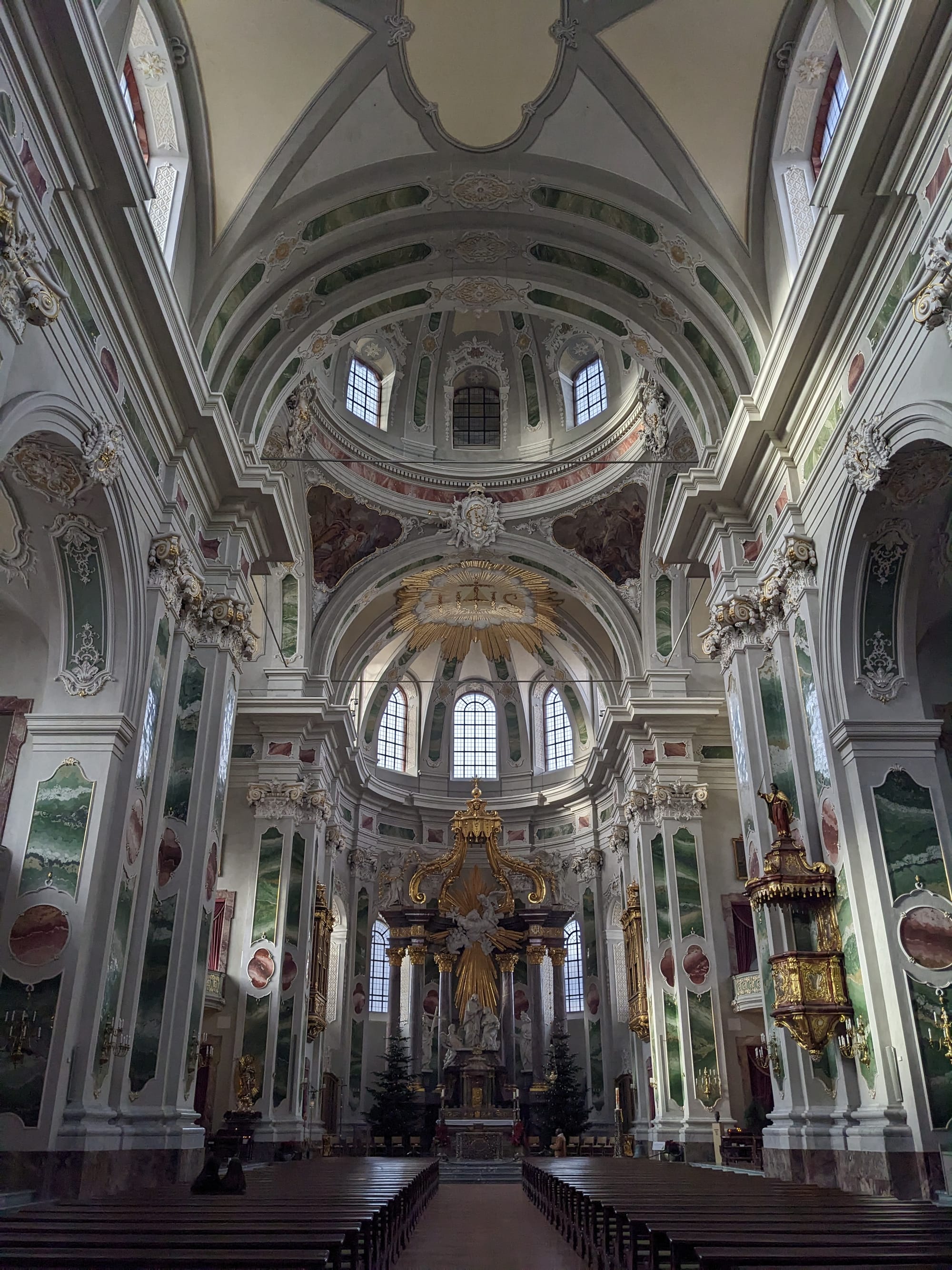
Mannheim used to be a fortress, but now it's disarmingly charming.
Mannheim is unique among German cities in having a grid layout, often referred to as the Quadratestadt (Square city). The interesting, or confusing, result is that buildings do not have a street number and Breite Straße is the only street that technically has a name. Instead, buildings have block numbers. Each city block is labelled A1 through to U6 - letters for the block's north-south position and 1 through to 15 for its east-west position. The building numbers begin on the south corner nearest Breite Straße, going counter-clockwise for A-K and clockwise for L-U. Apparently, tourists hate it.

On the eastern edge of the Quadratestadt is the water tower, a monument to Merecedes-Benz, and a baroque church (post-Renaissance style characterised by symmetry and ornate designs).
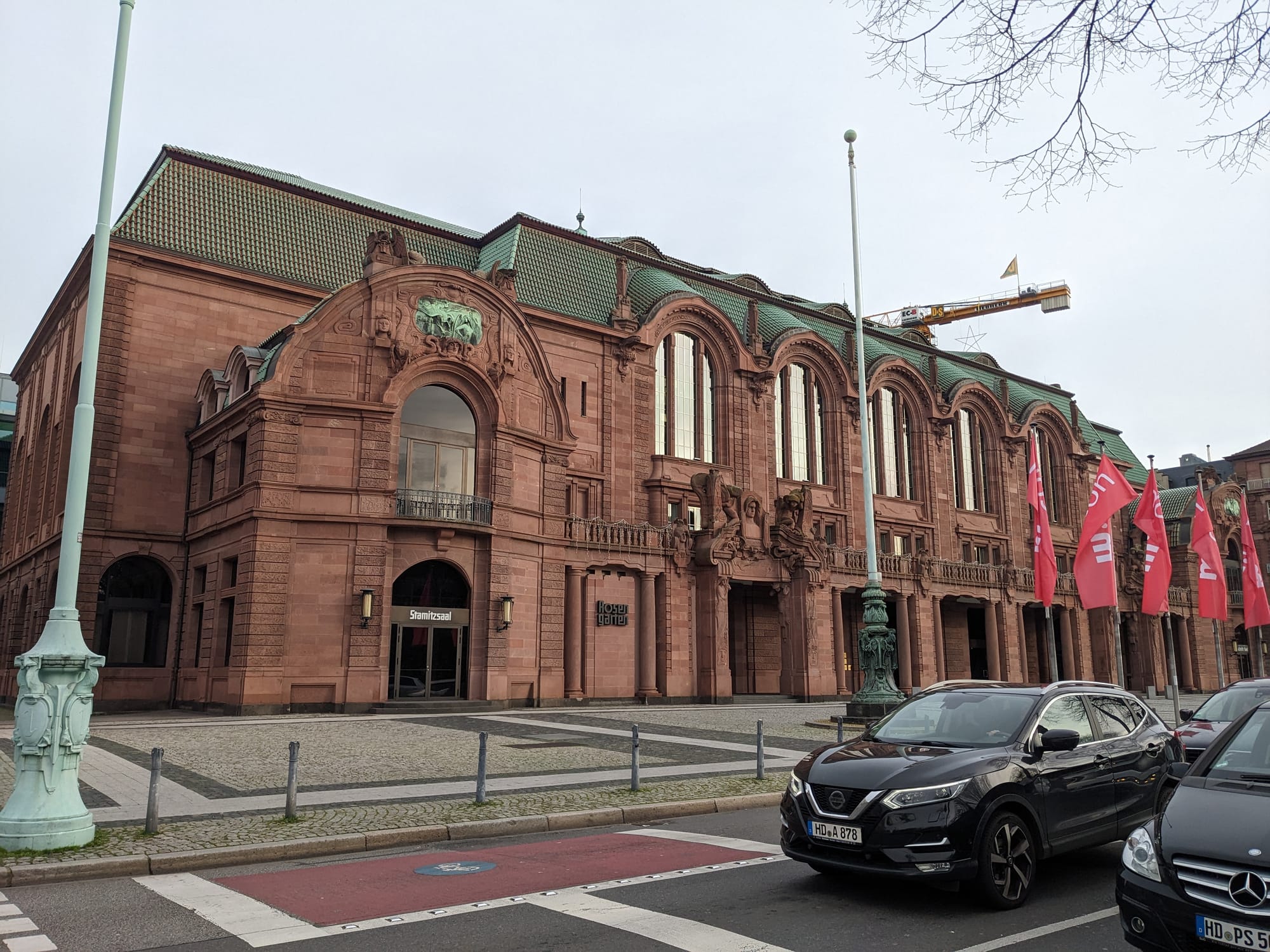
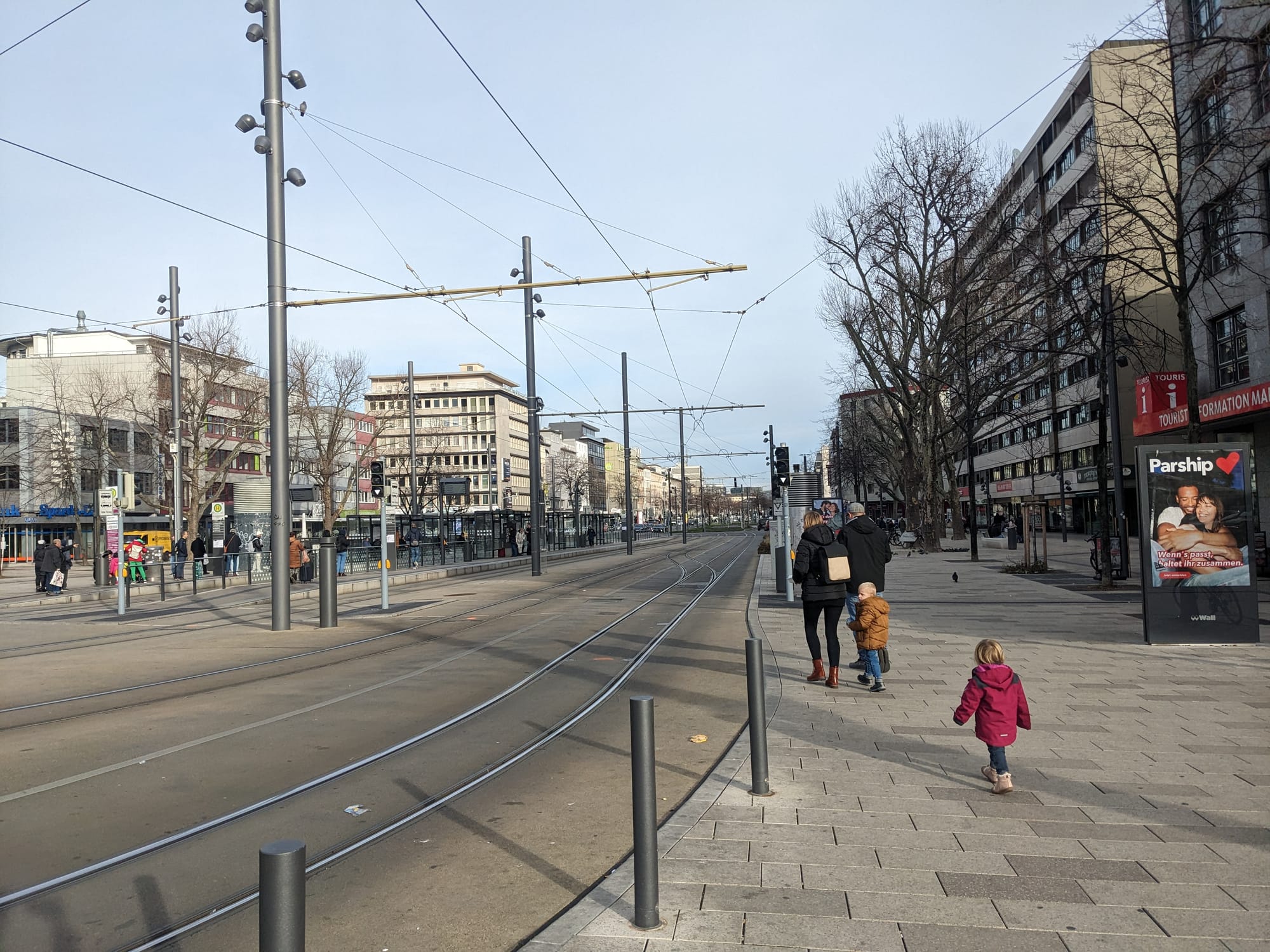
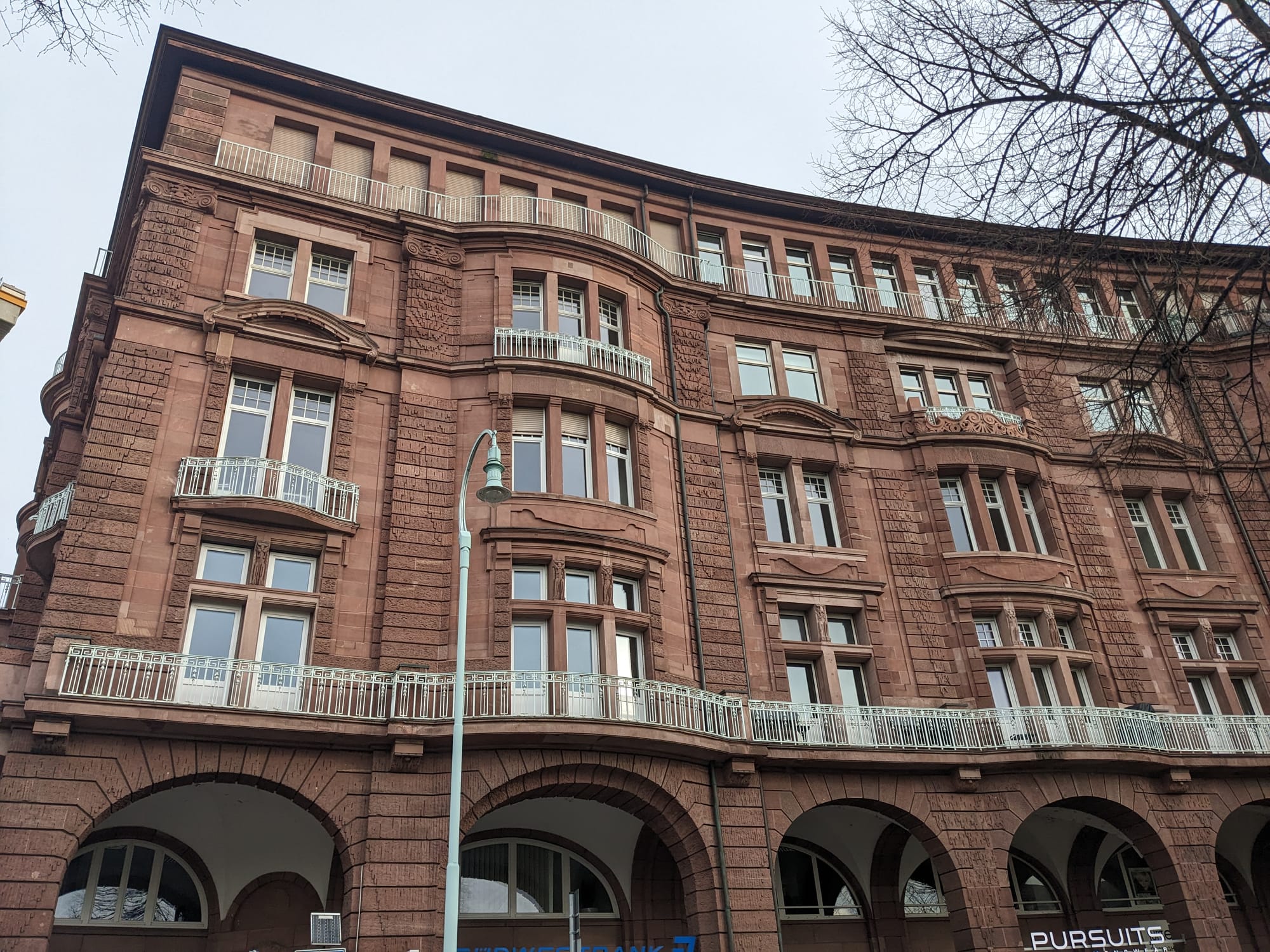
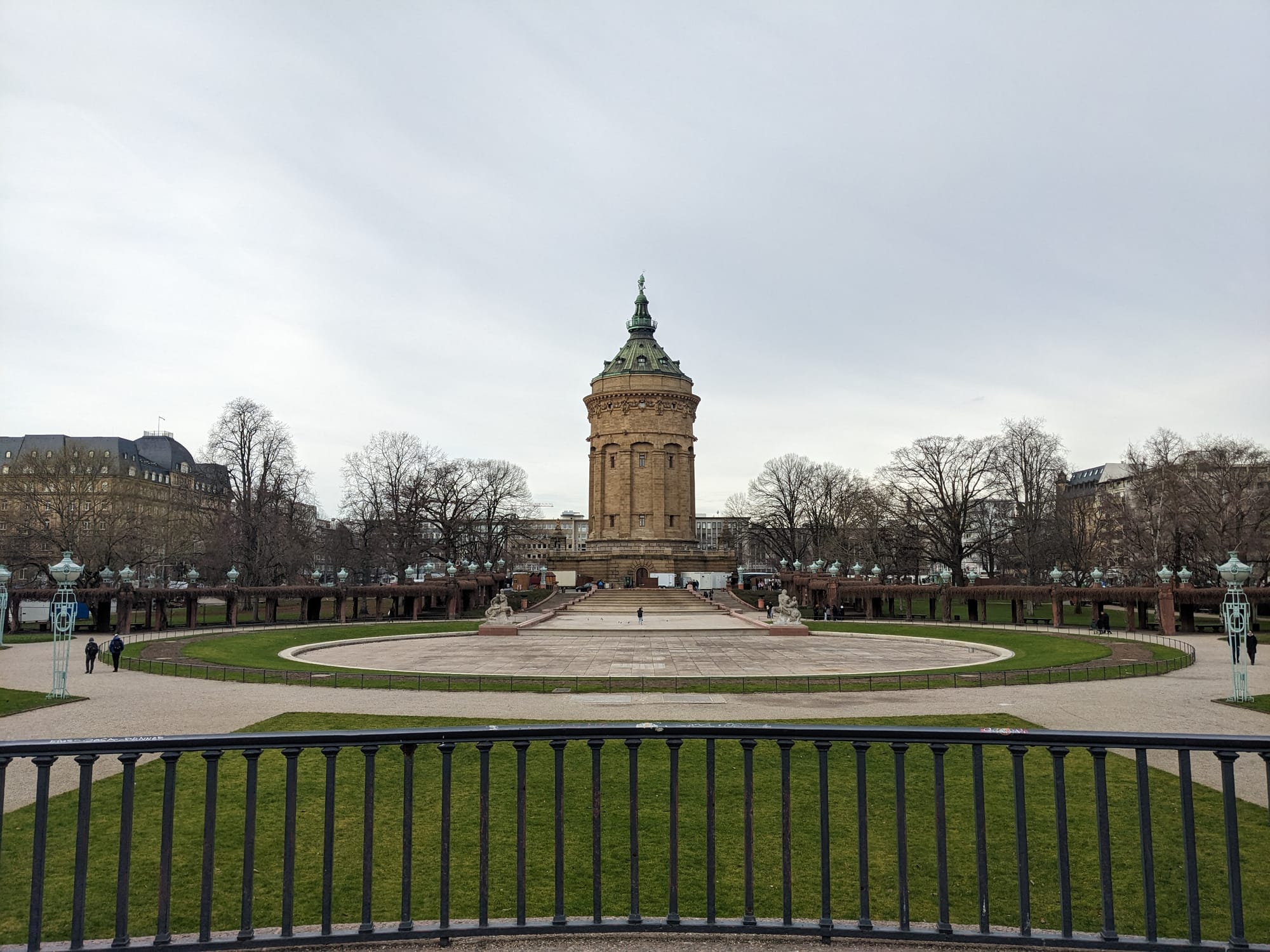
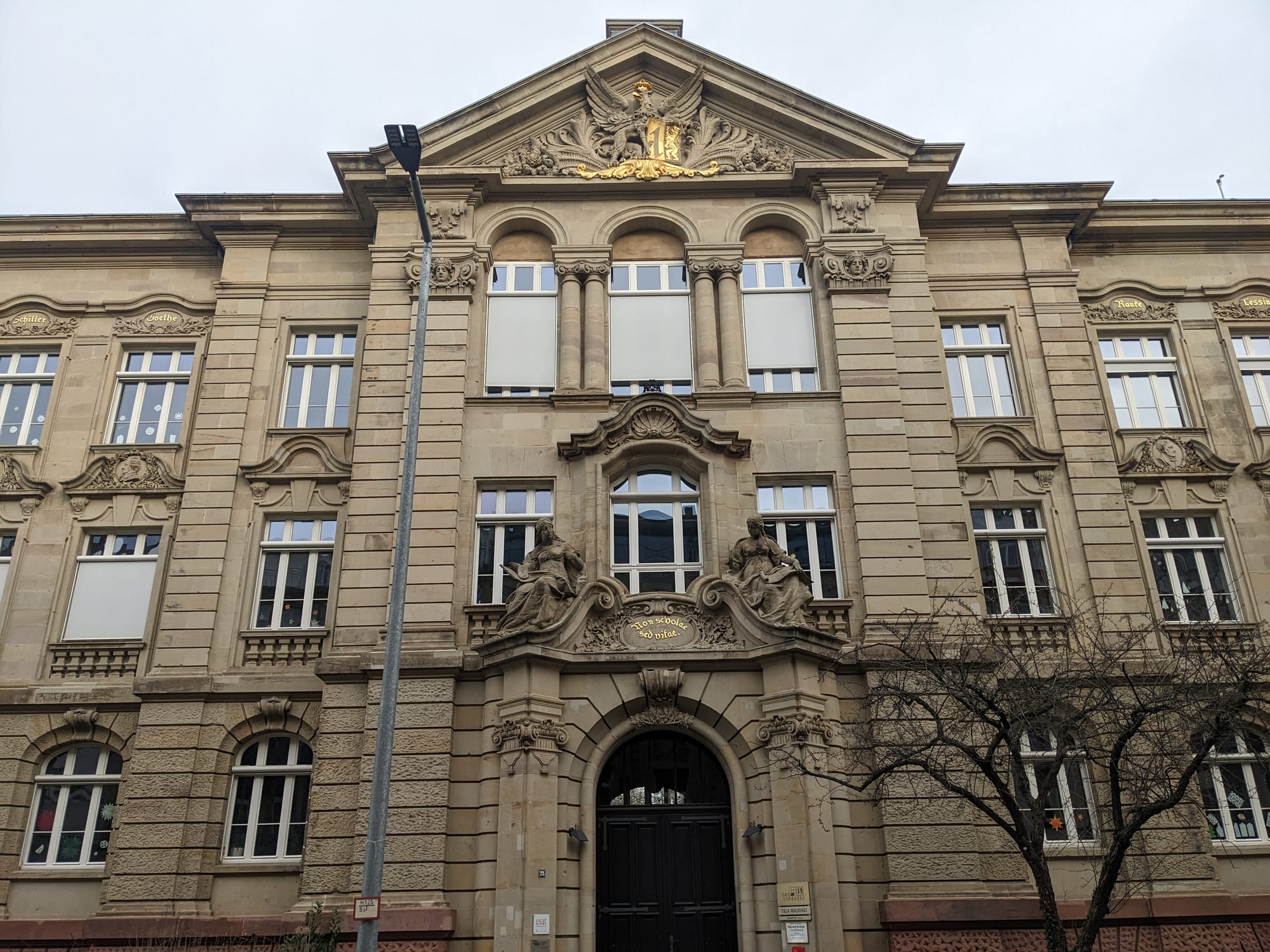
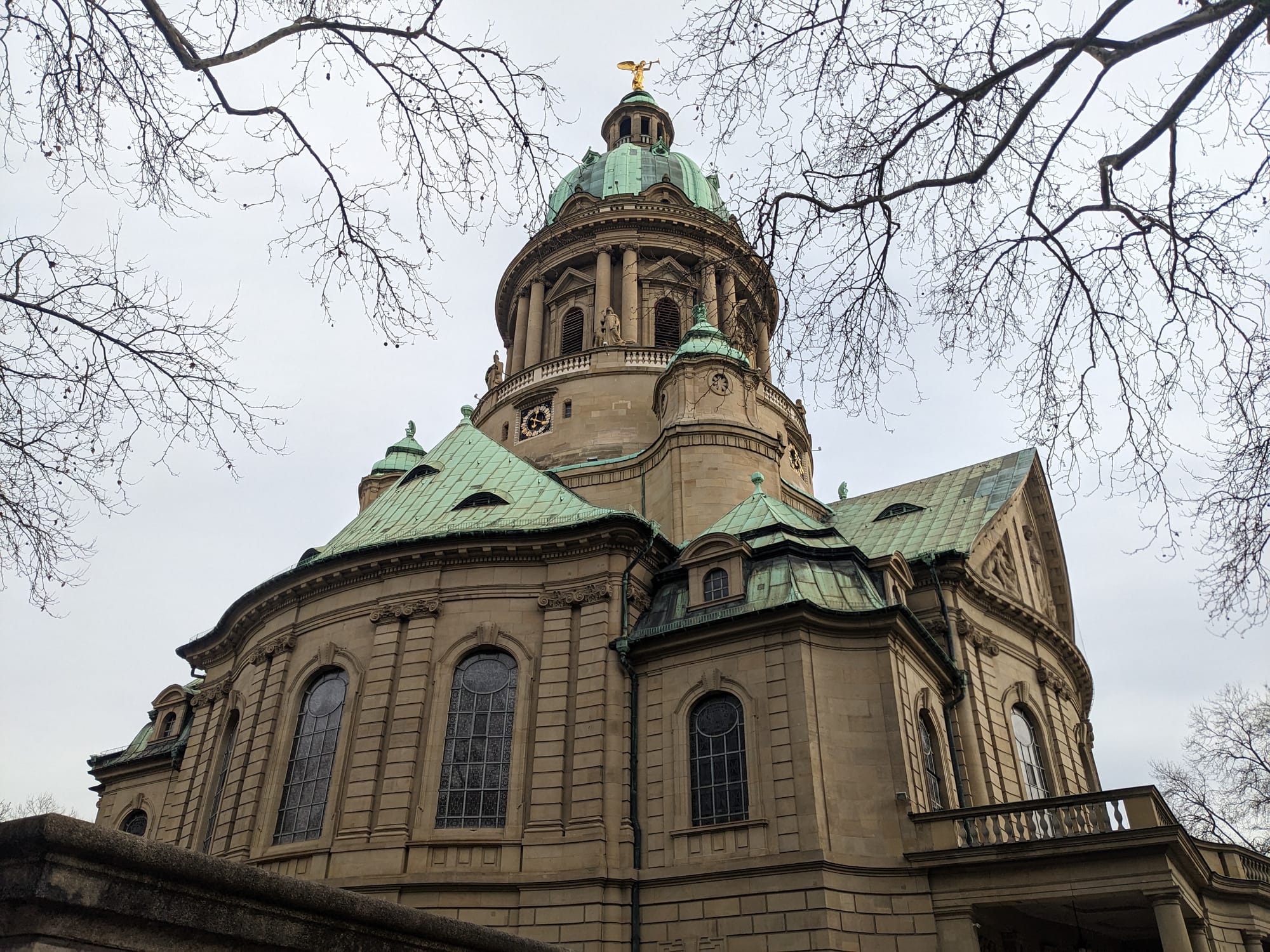
Baroque church in the bottom right, such round arches, much ornate details.
To the south of Quadratestadt is the University of Mannheim and museum, housed in the baroque Mannheim Palace. The palace was the residence of the Counts Palatine from 1760 until 1778 when the Count inherited Bavaria and moved his court to the hip, bustling city of Munich. While in Mannheim, the Count helped spur the creation the first chamber orchestras in Europe, and so much of the museum is given over to musical history.
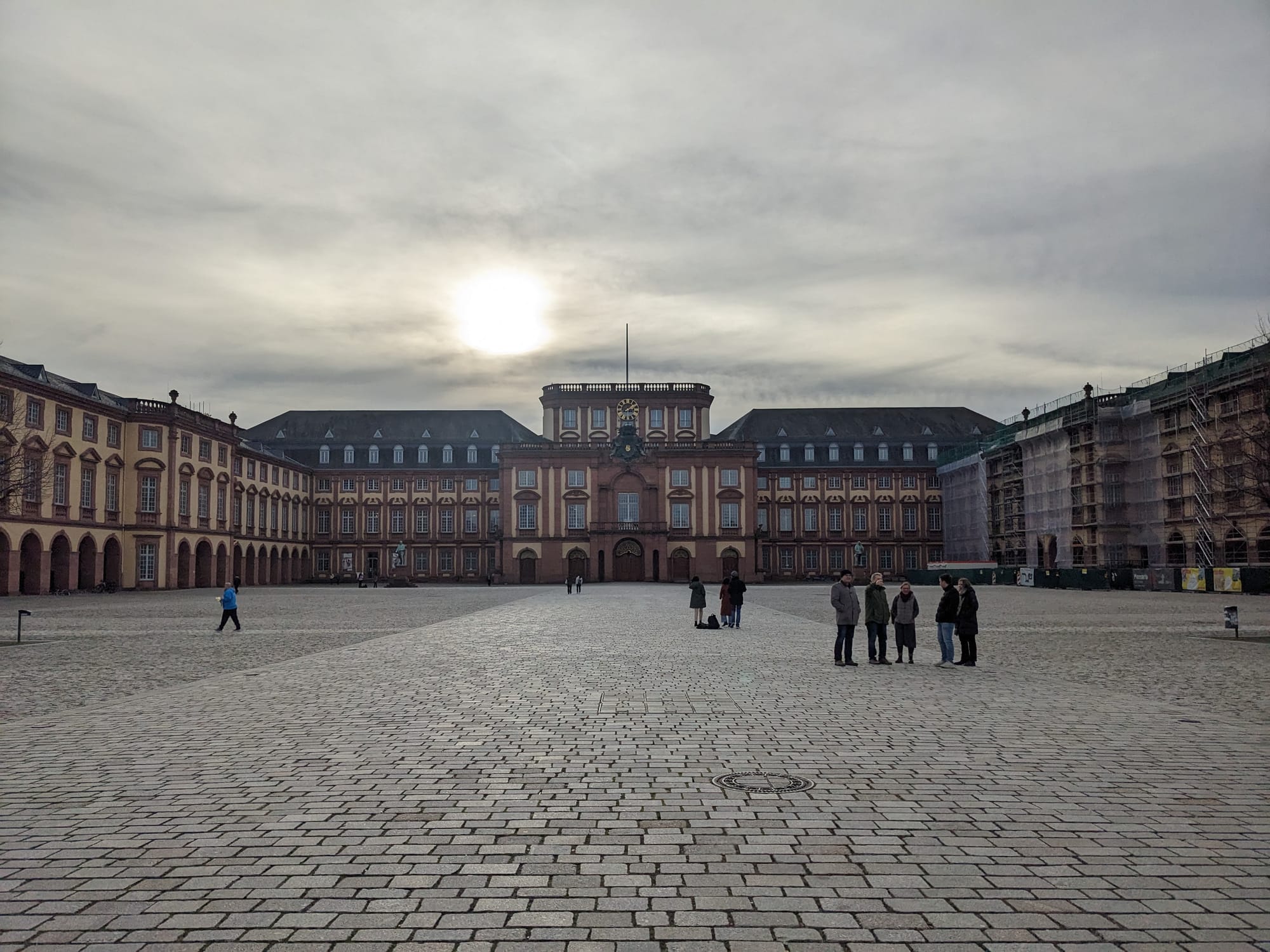
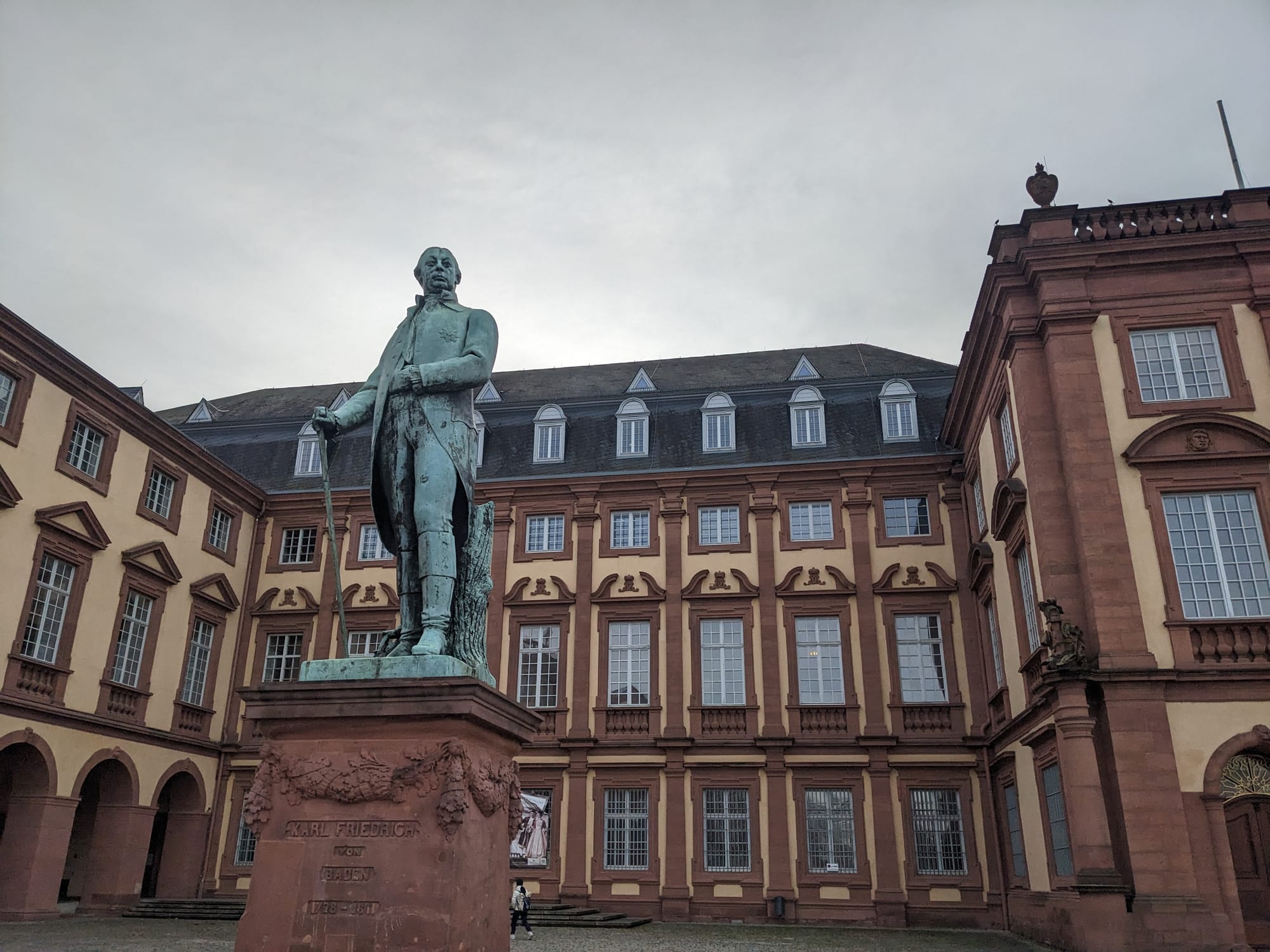
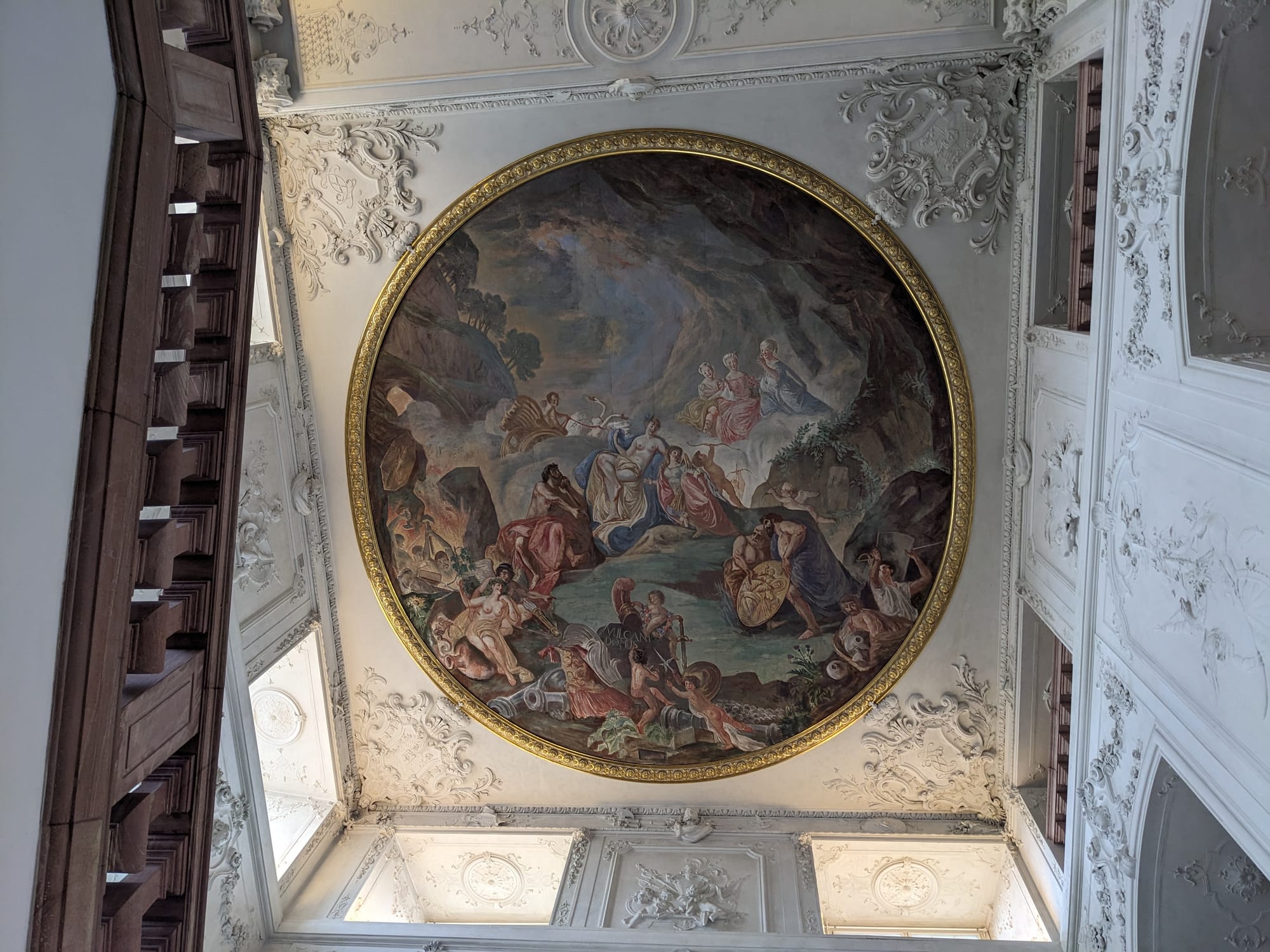
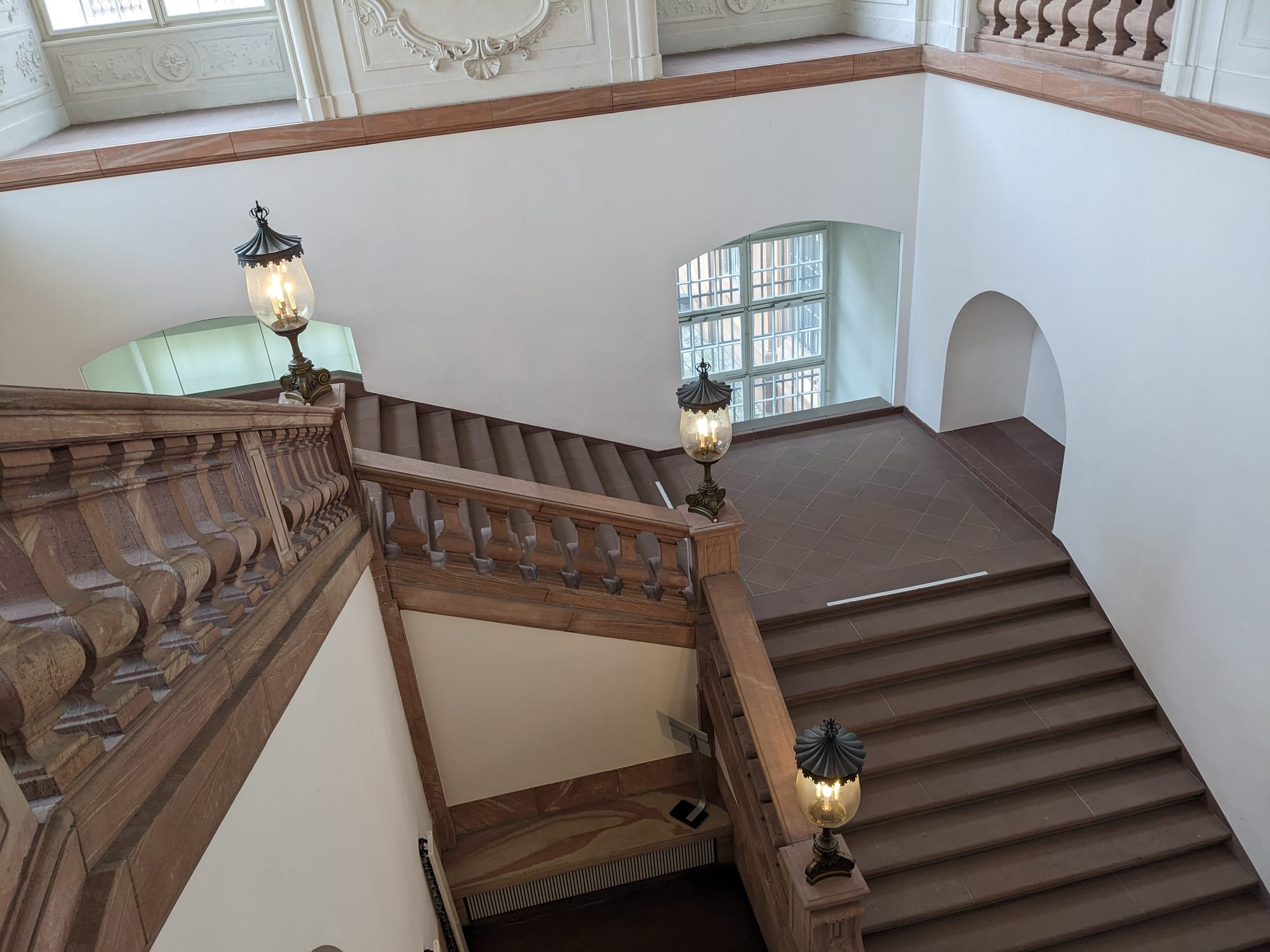

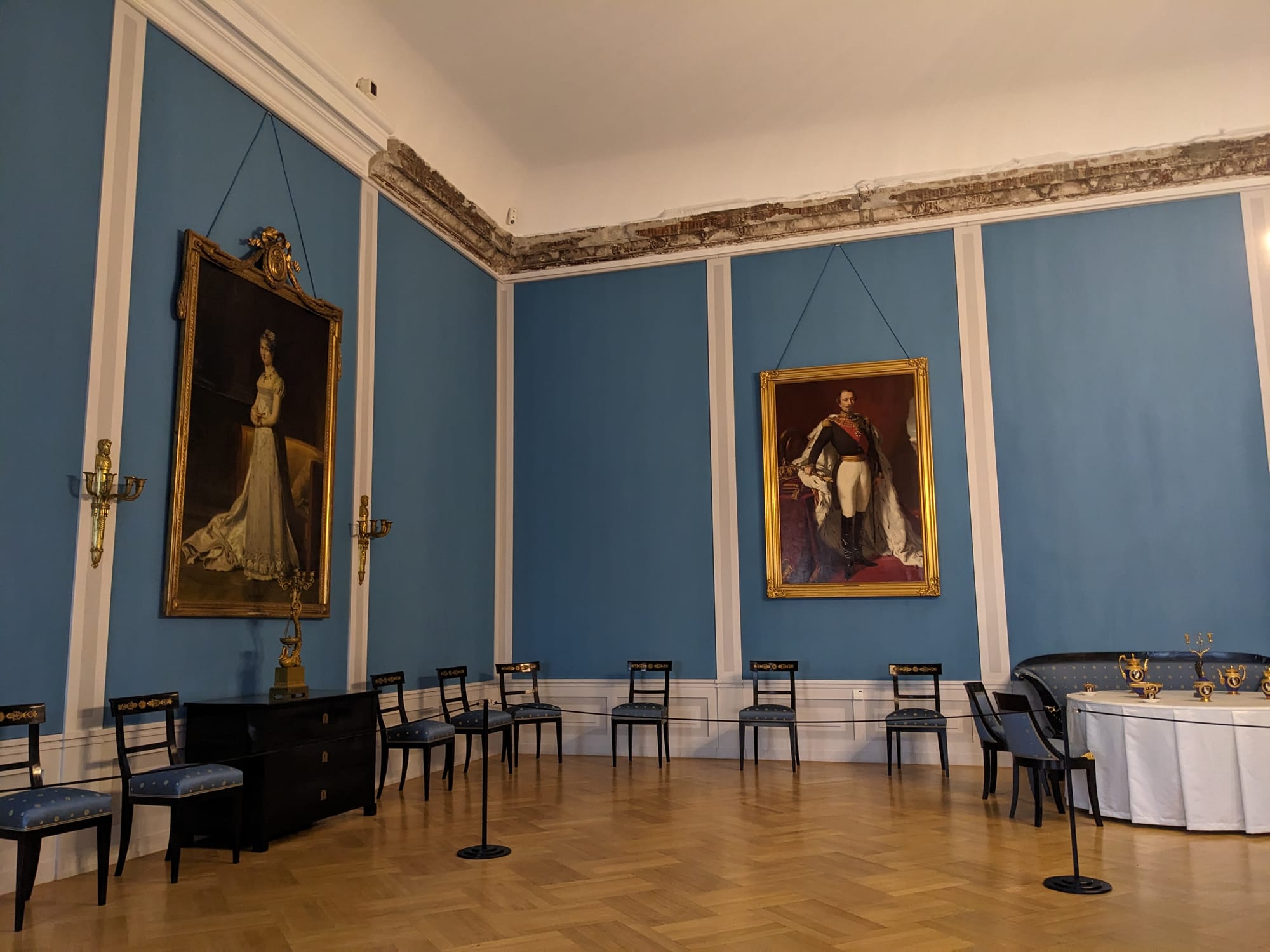
Mannheim Palace features an unexpected painting of Napoleon III because he's related to Stephanie de Beauharnais, wife to the Grand Duke of Baden.
Schwetzingen, Germany (28th December)
Schwetzingen is a quaint little town of 21,000 people. We got an AirBnB on the main street a few hundred meters from the station and a supermarket. The main attraction is Schwetzingen Palace, the summer residence of the Counts Palatine who we heard about back in Mannheim. The Palace grounds are home to the first and oldest Mosque in Germany. It was finished in 1795 and inspired by the 'Turkish style" garden mosque in Kew Gardens. If my memory of the historical plaque serves me, the mosque was used by French North African prisoners of war during the Franco-Prussian War.
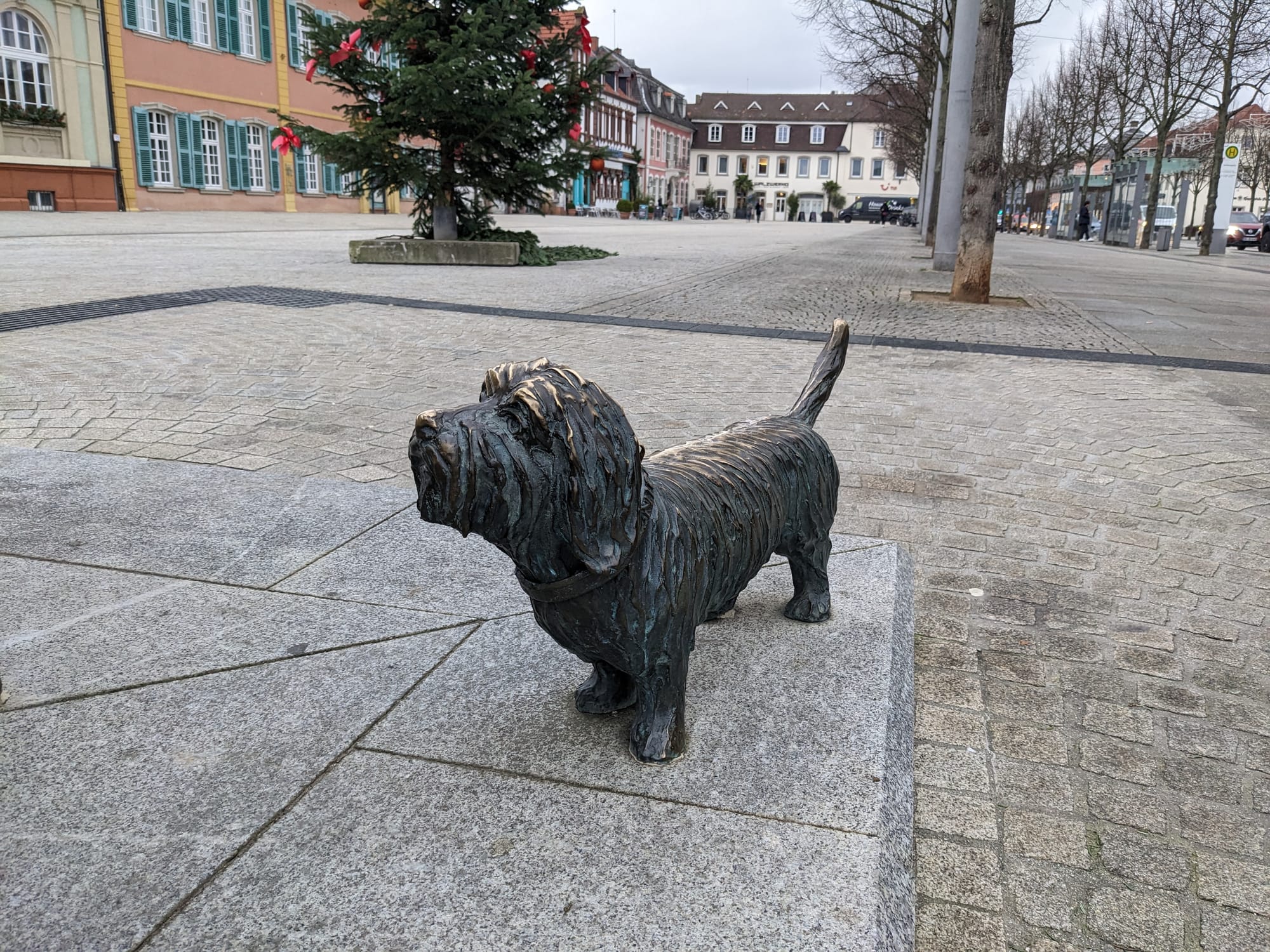
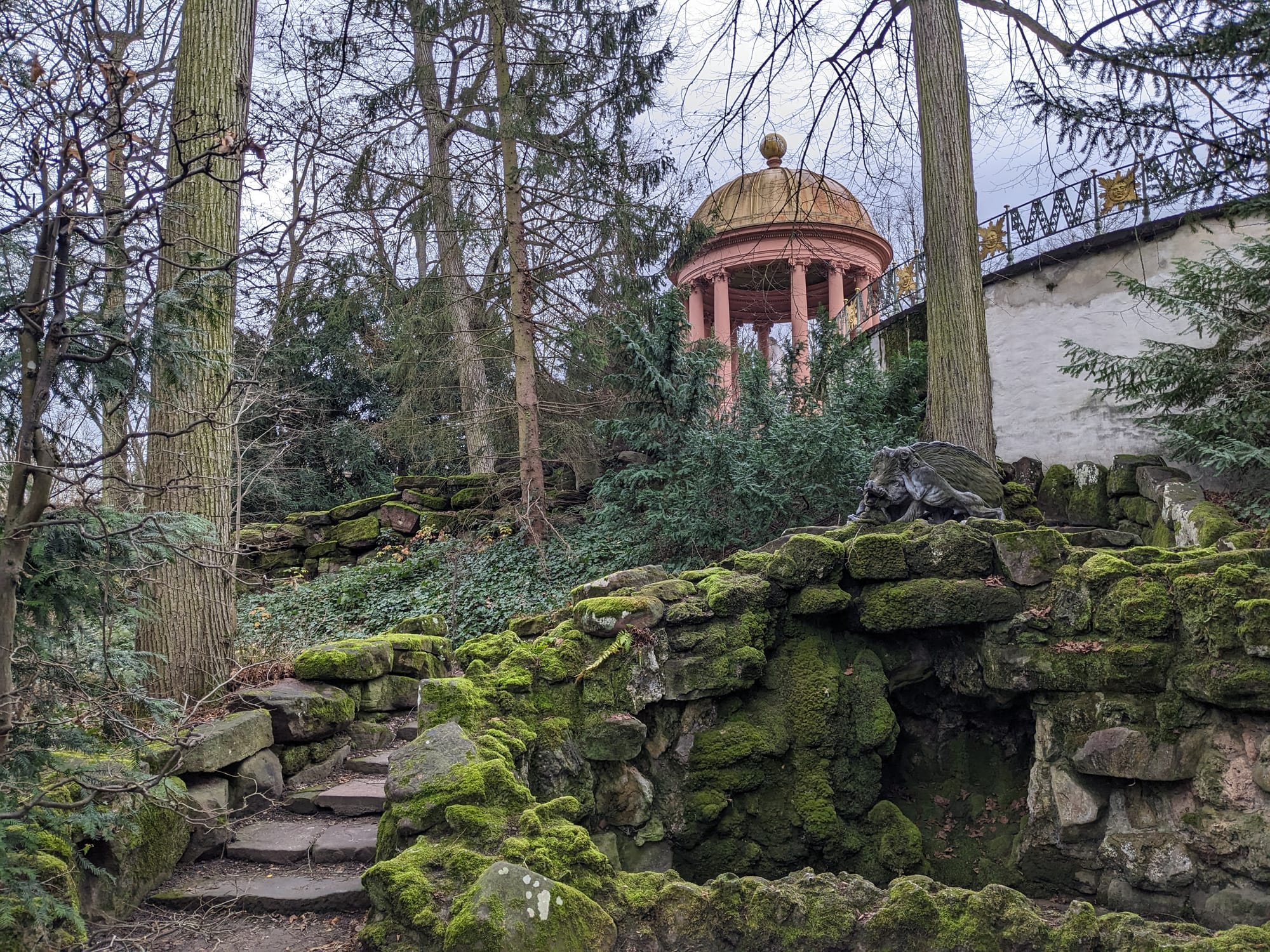
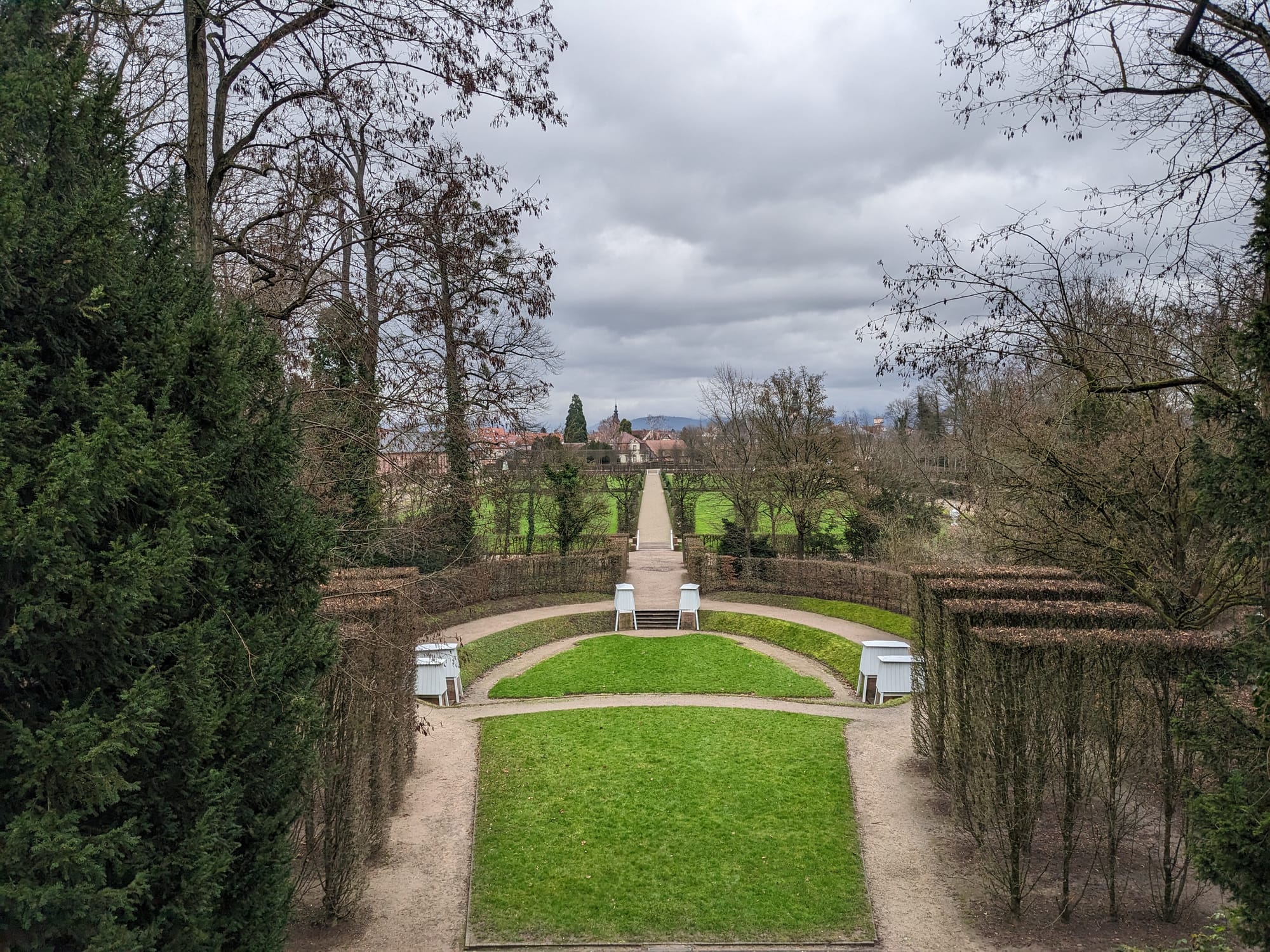
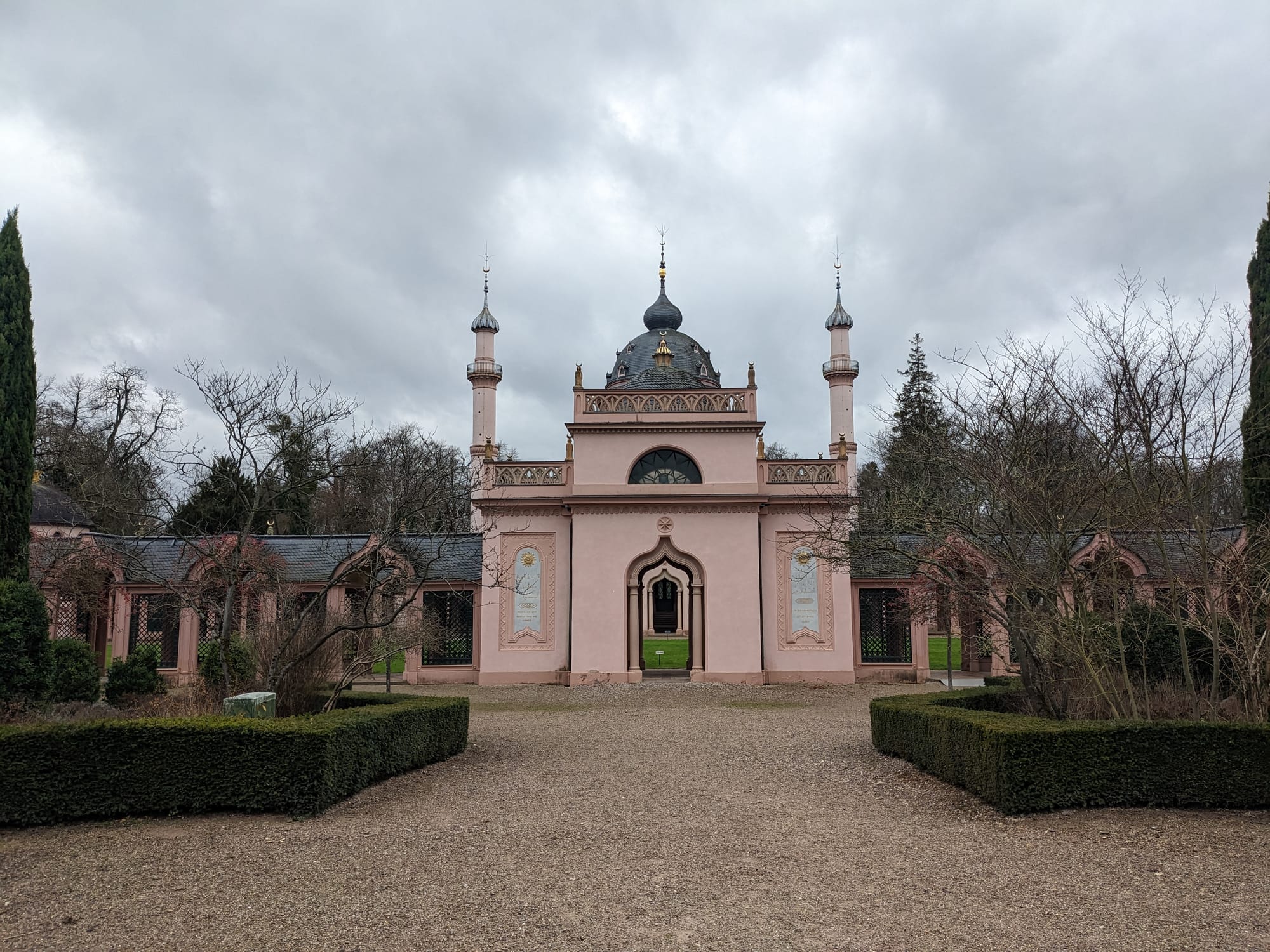
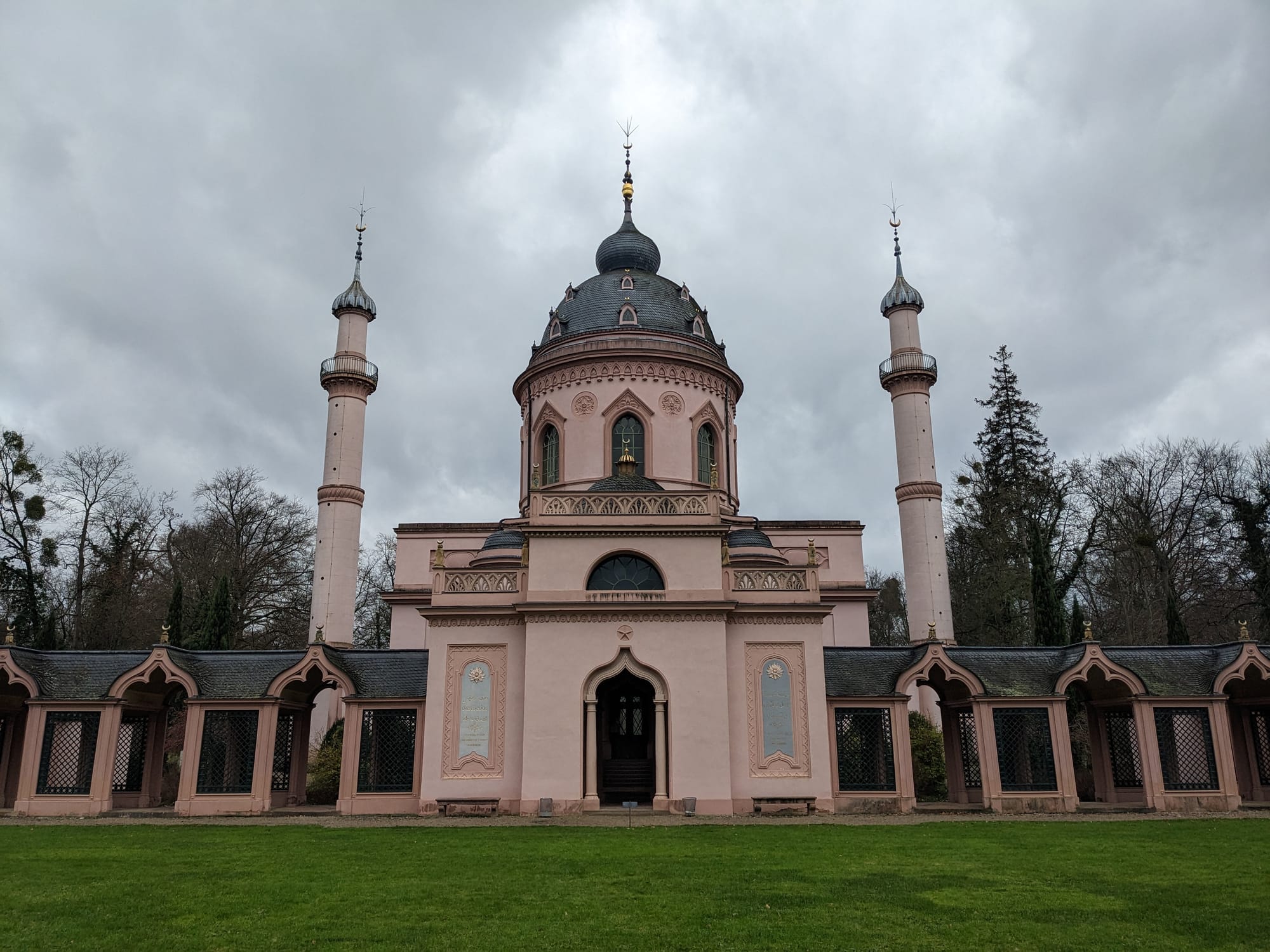
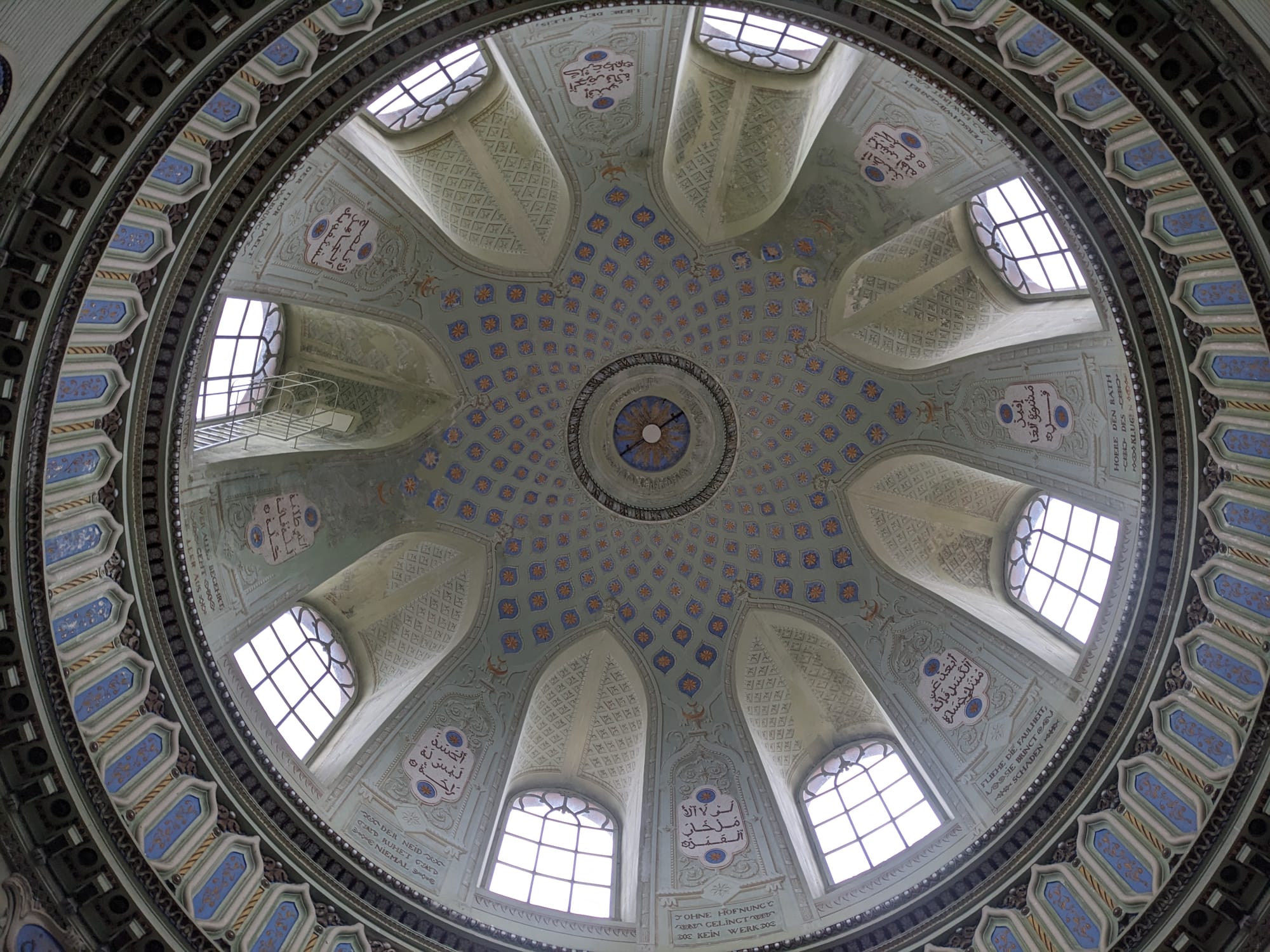
The Schwetzingen Palace features a doggo, a Temple of Apollo and a garden mosque.
We had our fill of the sumptuous palace grounds and then caught the train to Heidelberg.
Heidelberg, Germany (28th December)
Heidelberg is a German mecca for tourism because it was the largest city not targeted for strategic bombing during WWII. The city itself lacked wartime industry to serve as a bombing target and the Allies intended to make Heidelberg a hub for the post-war occupation authorities. Therefore, the city today contains some of the best preserved examples of medieval German architecture and streetscapes. Tourists flock to the town from around the world, and justifiably so!
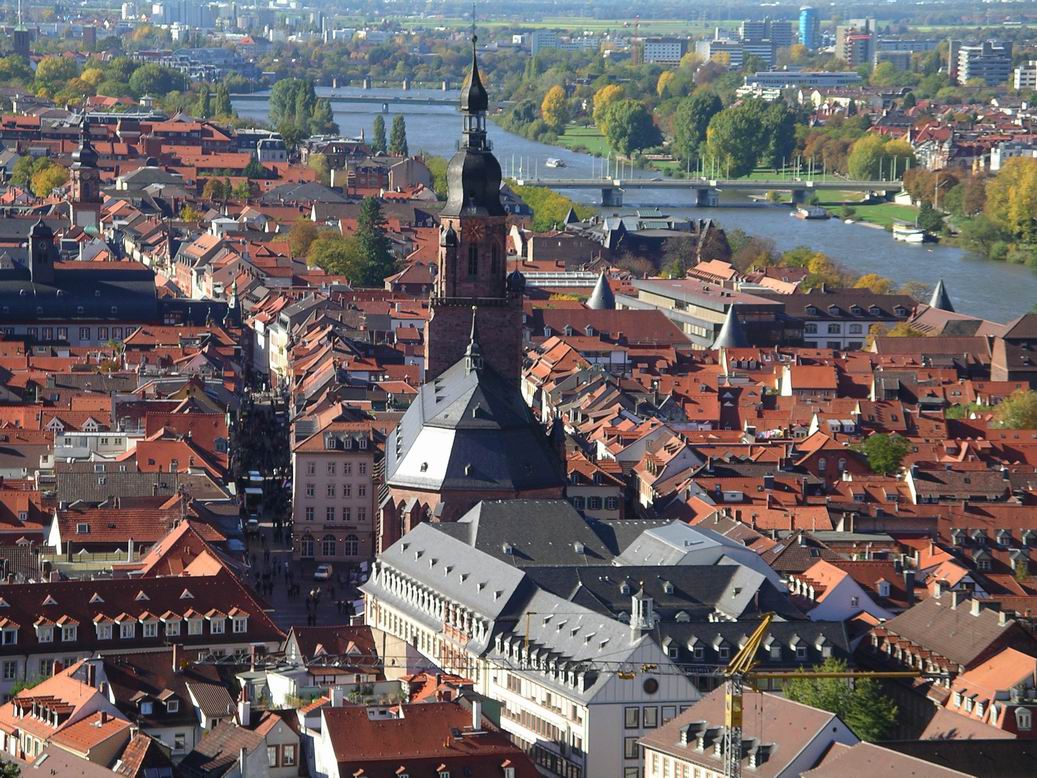
We walked east along the Hauptstrasse (main street) of the Altstadt (old town) on the south bank of the Neckar. We paused outside the Psychology Institute of the University of Heidelberg to admire the bust of Robert Wilhelm Bunsen, inventor of the Bunsen burner and Heidelberg resident.
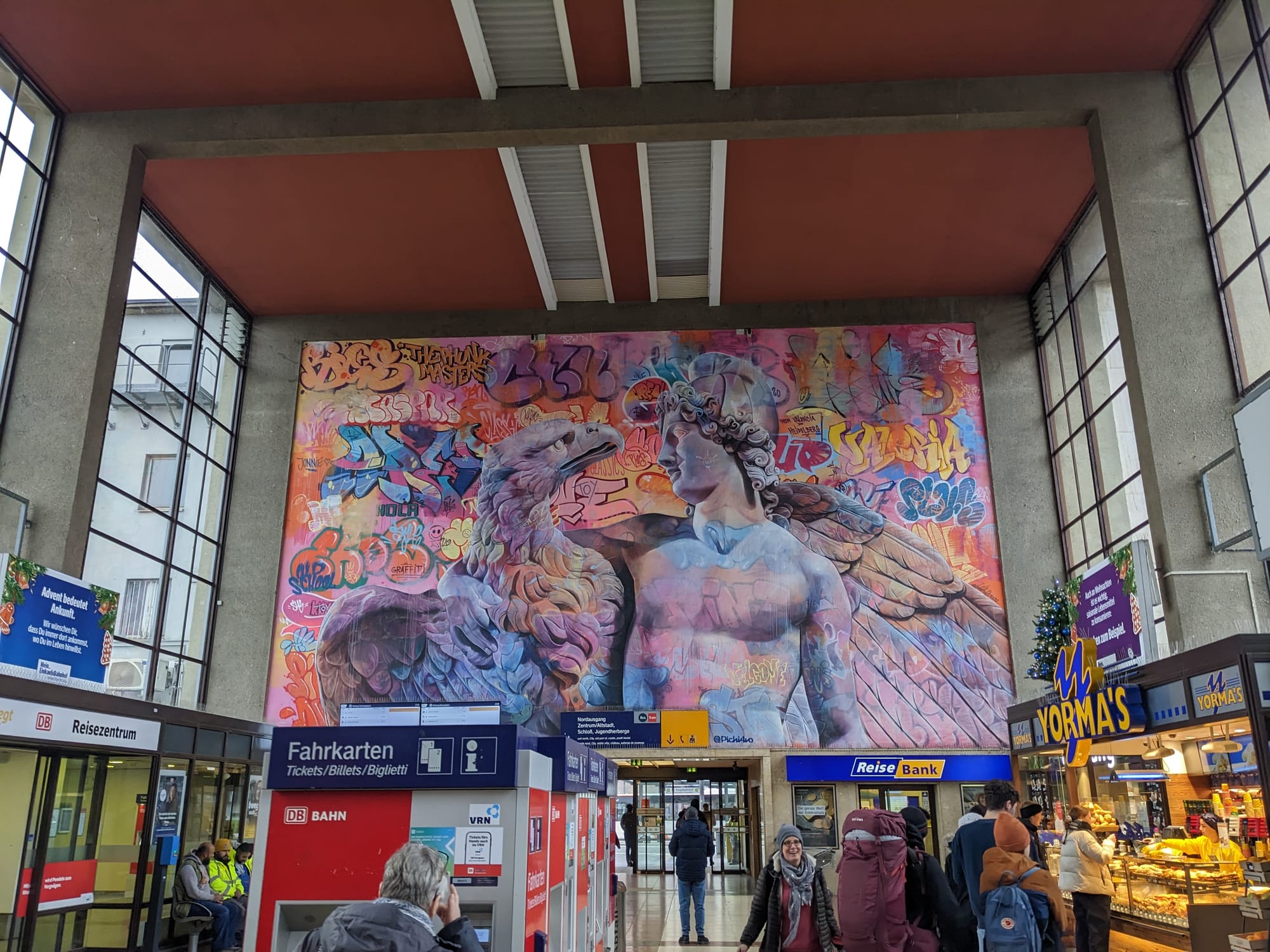
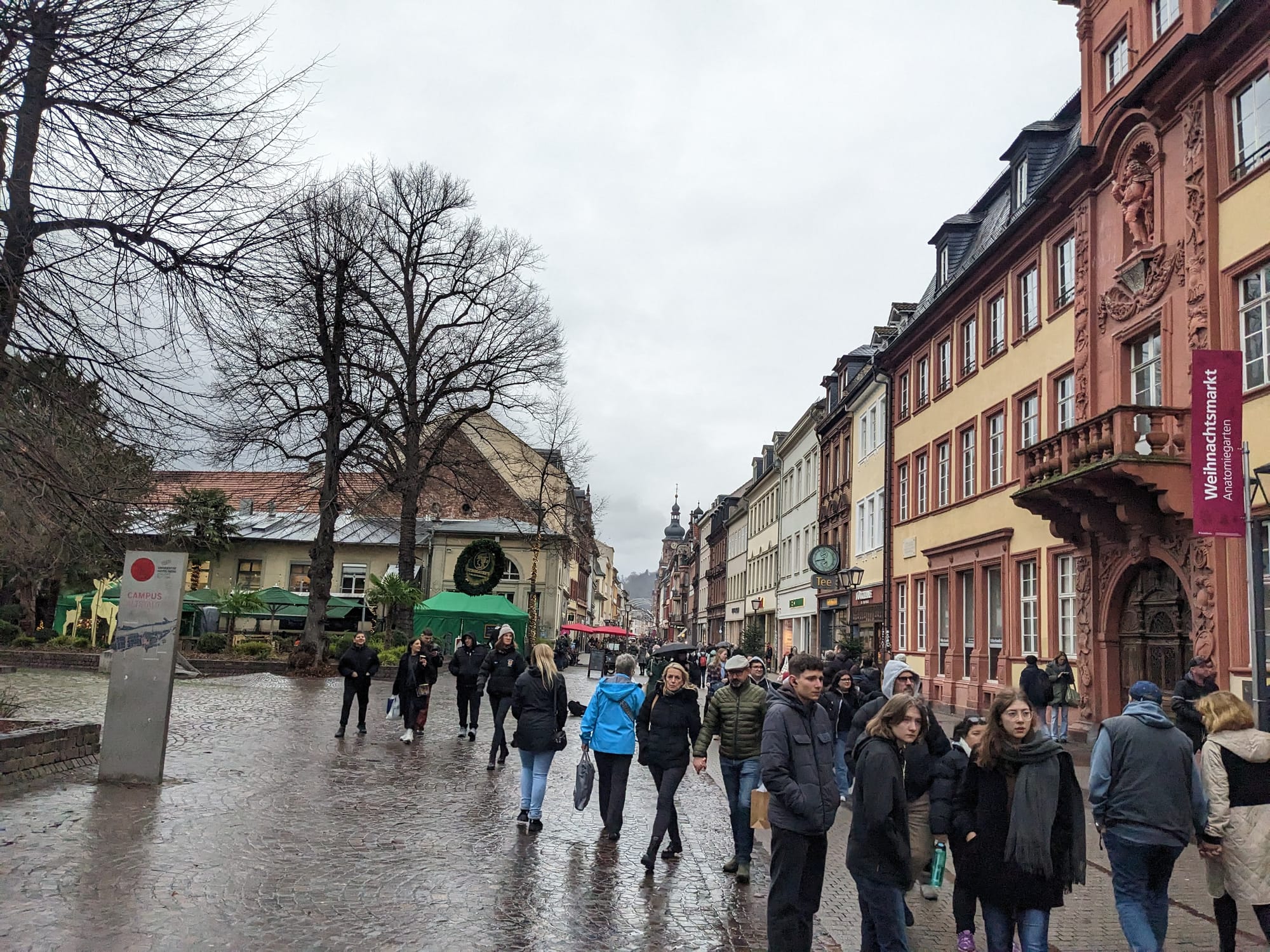
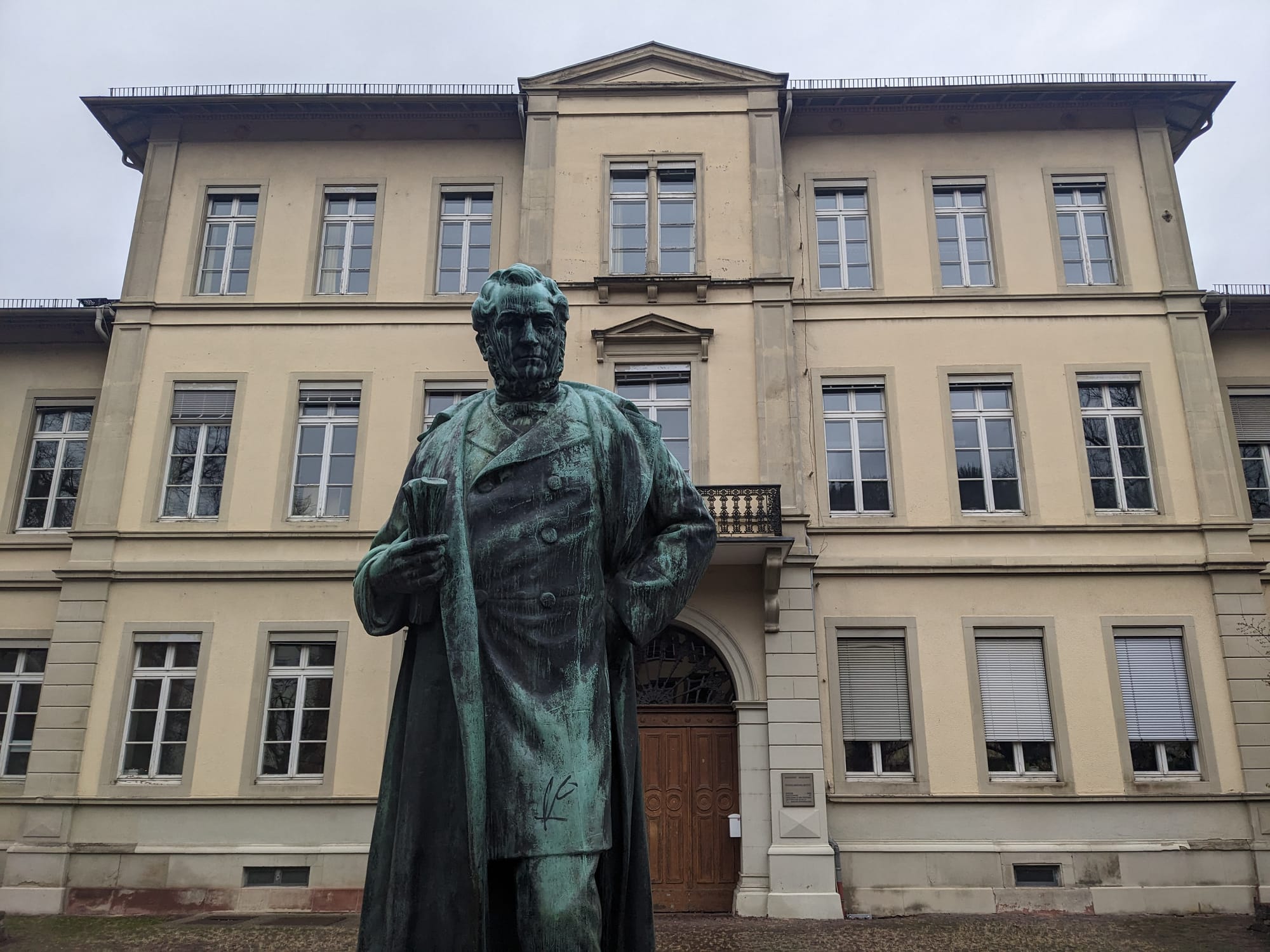
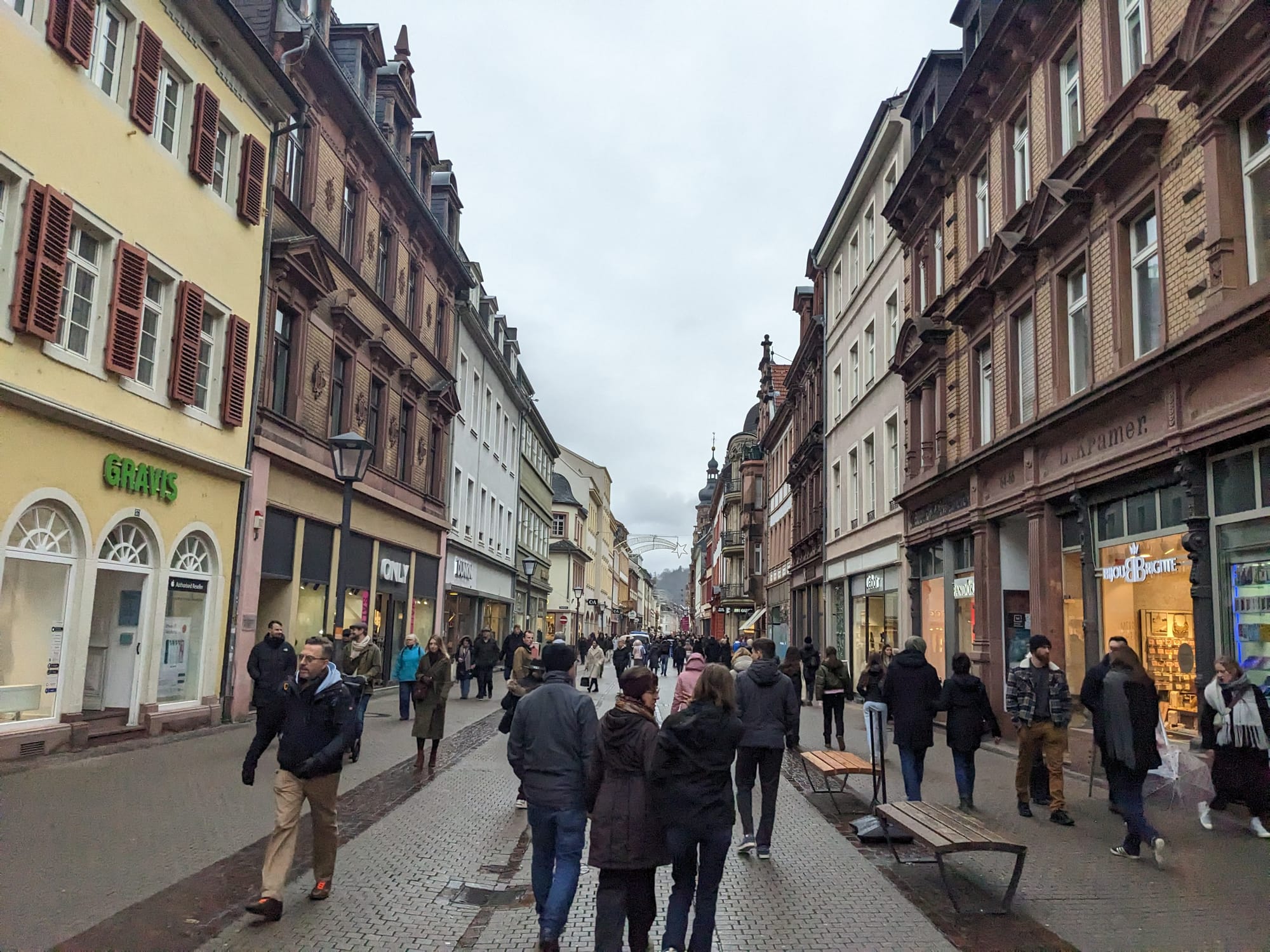
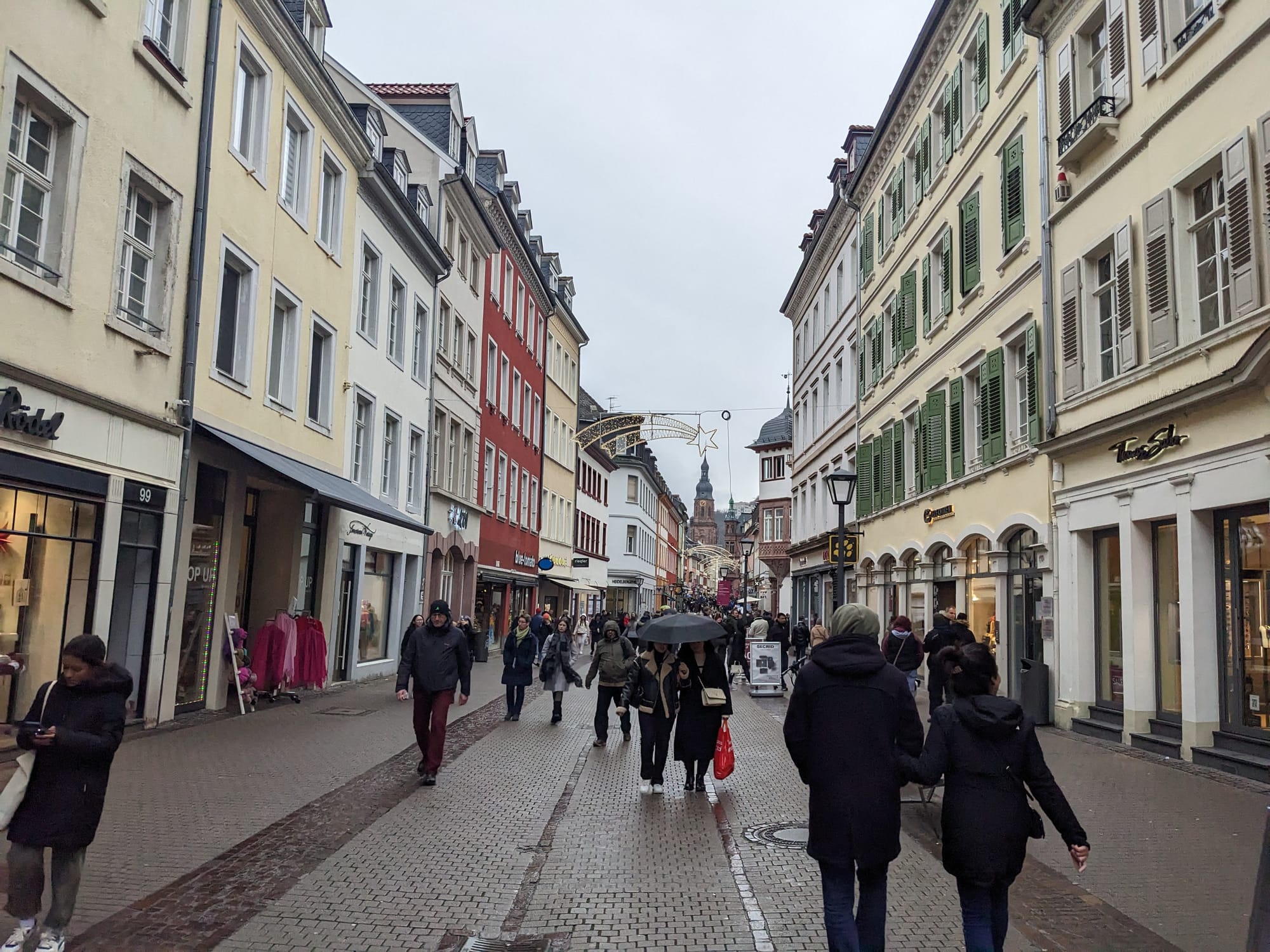
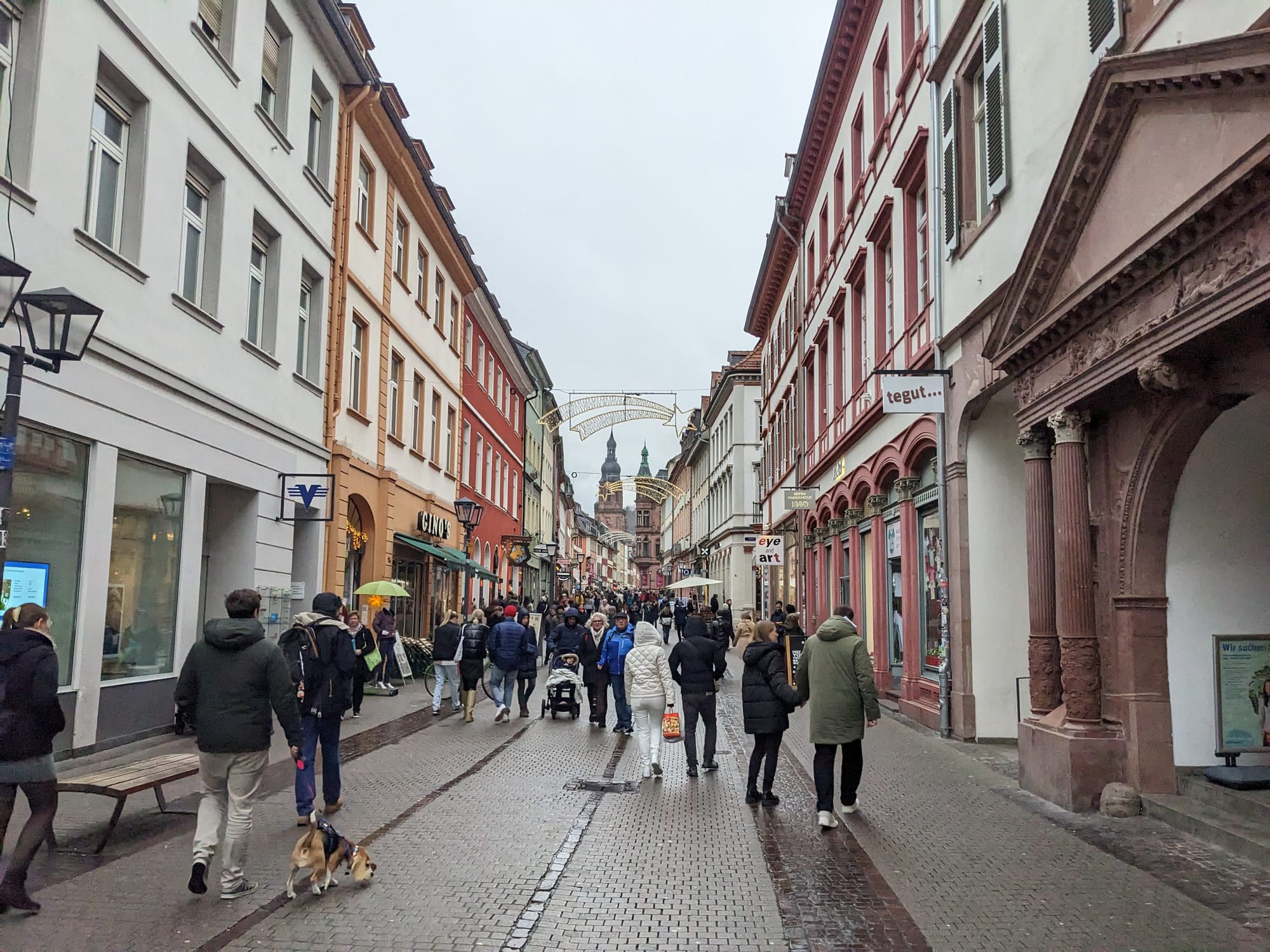
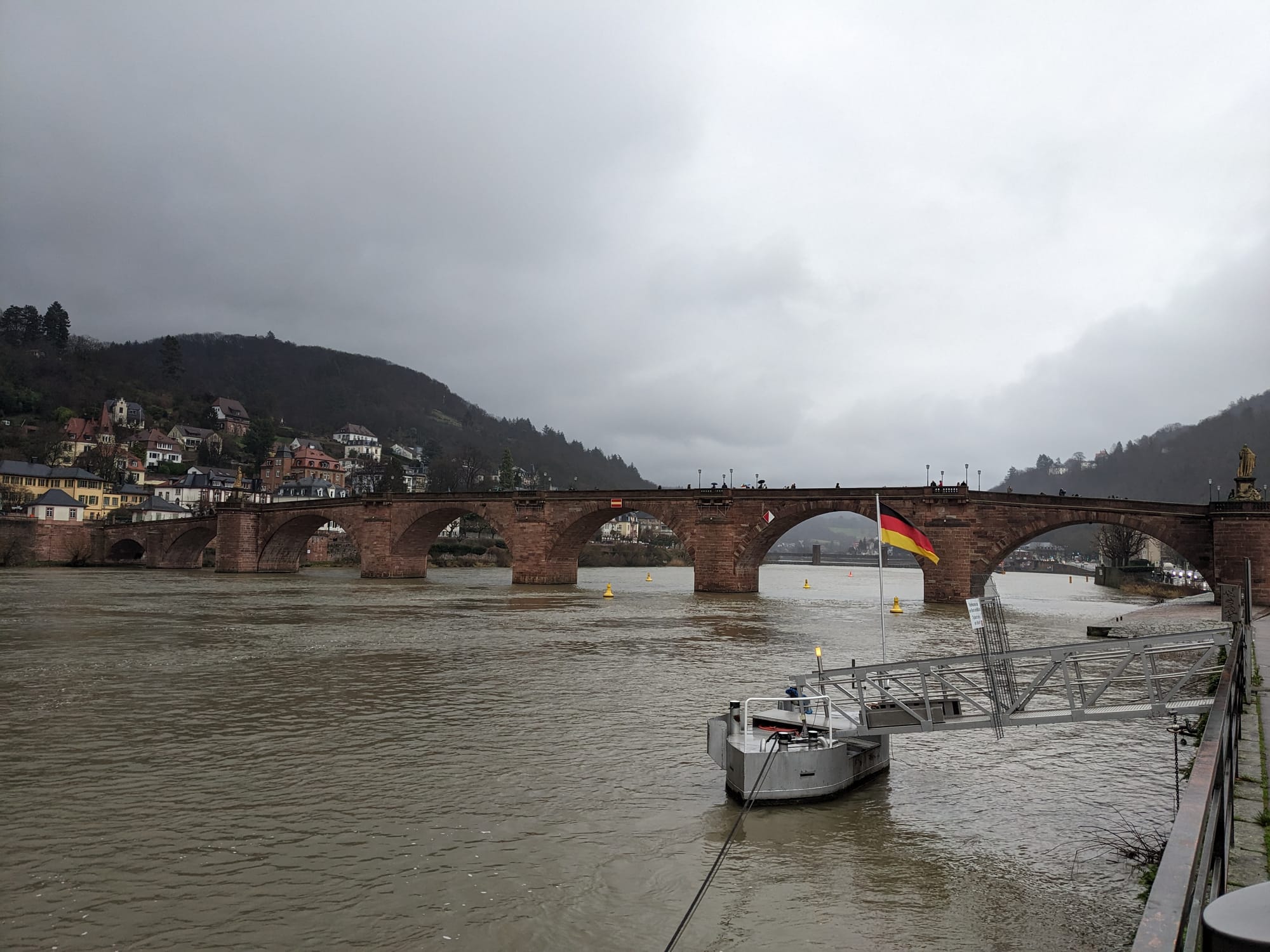
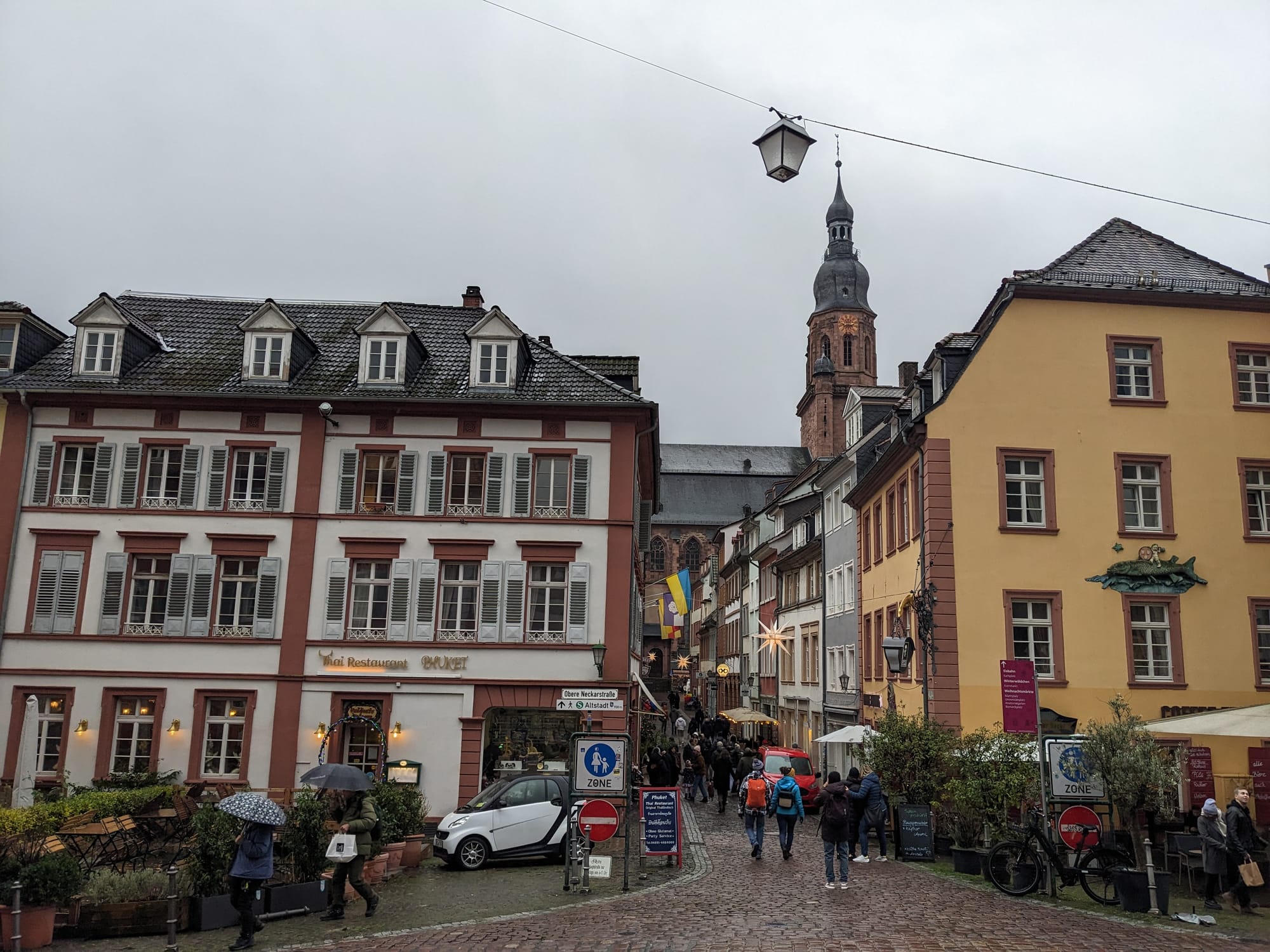
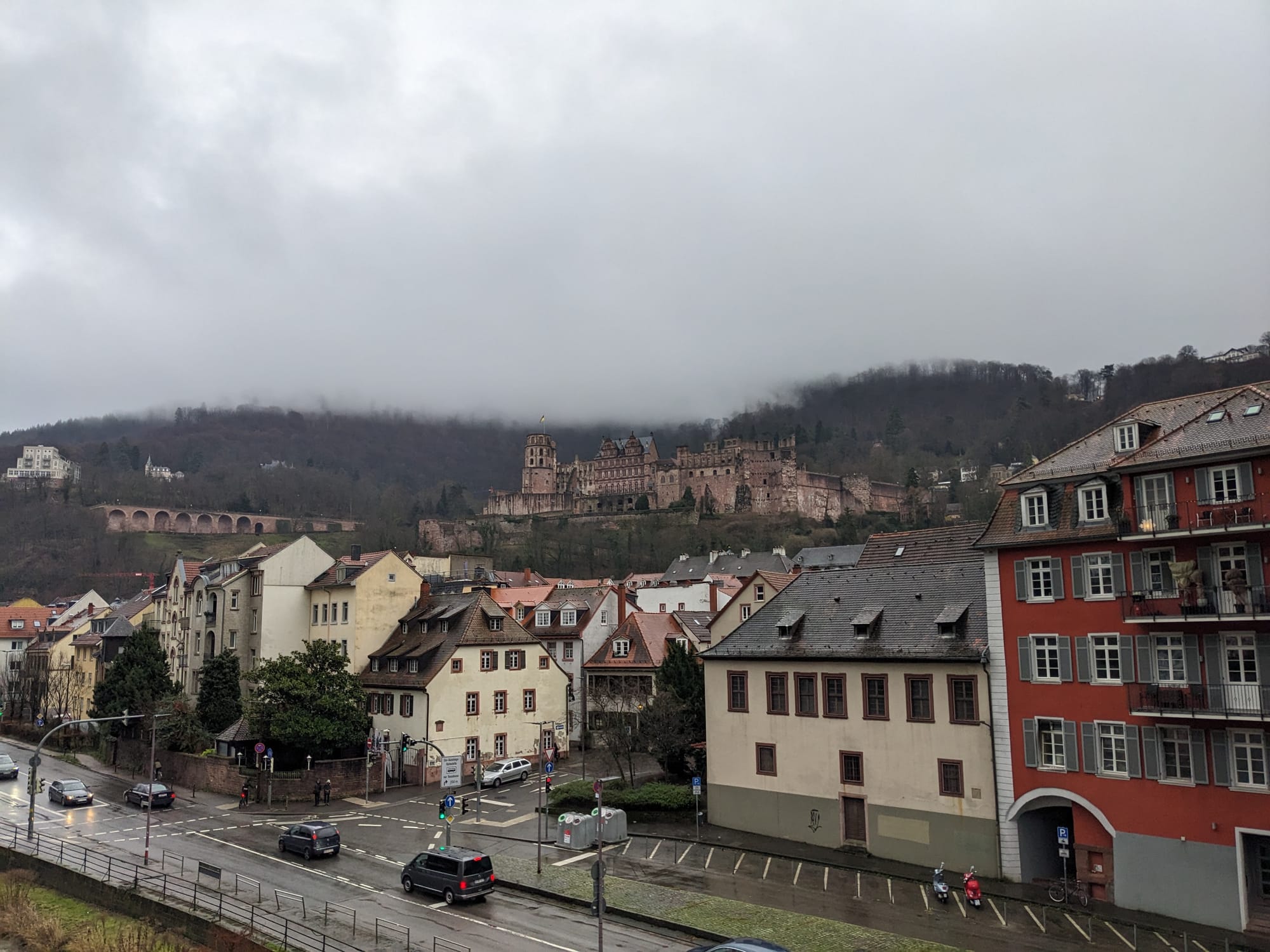
Heidelberg station is a few stops away from the old town and features many a modern art piece.
We got lunch in town then crossed the Old Bridge over the Neckar to the north bank, climbed up the Schlangenweg to the Philosopher's Walk and headed west back towards our starting point.

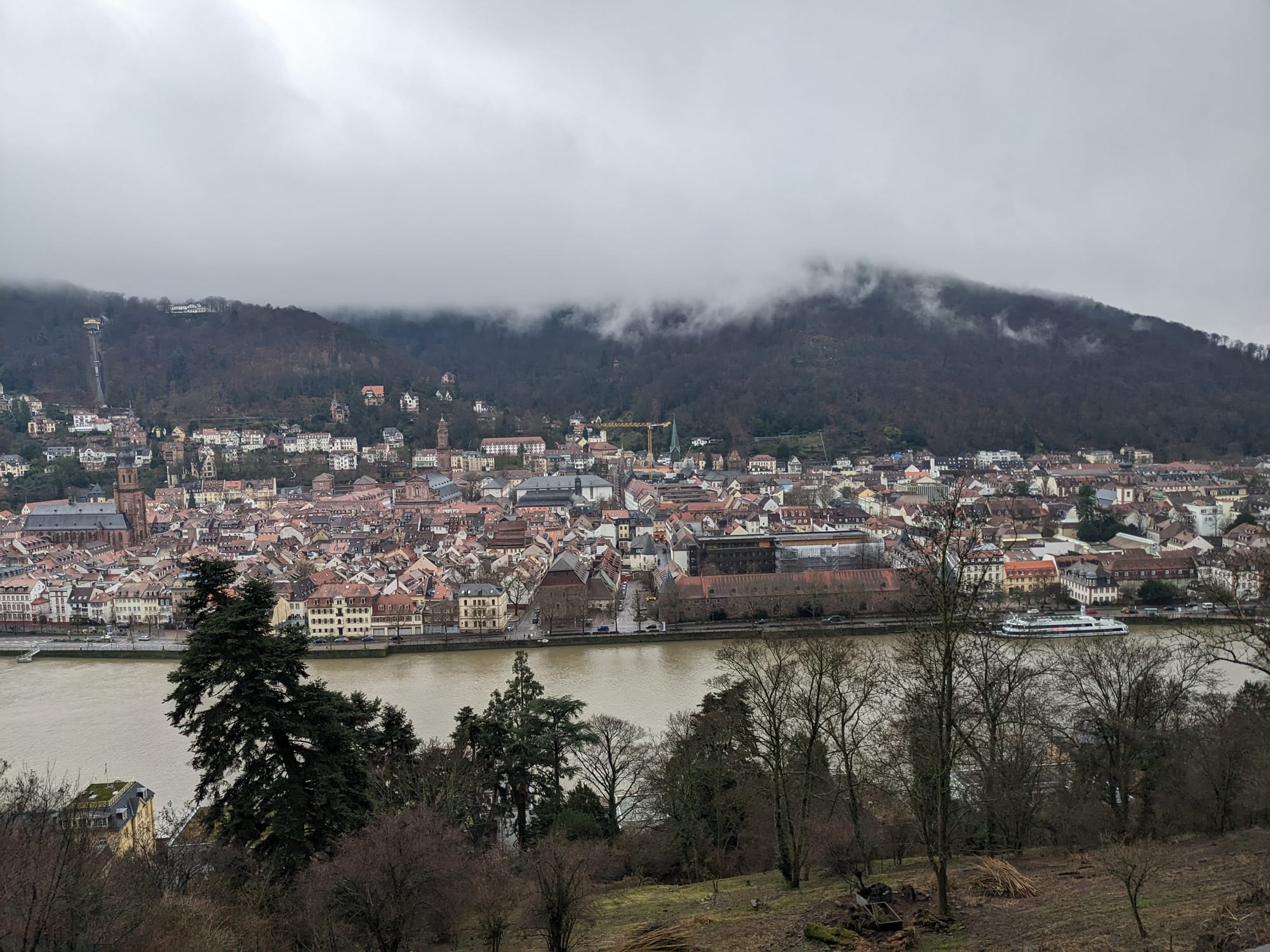
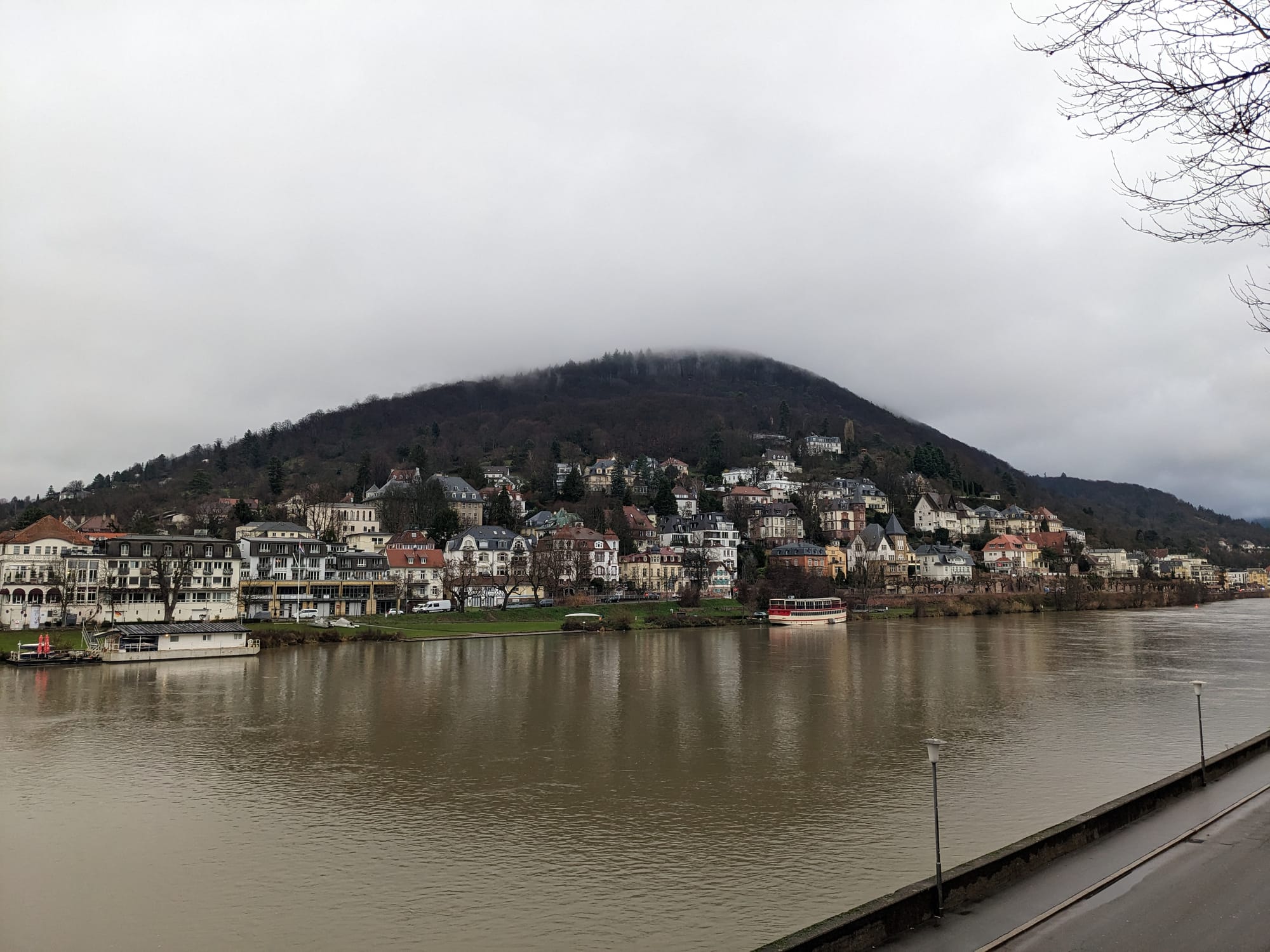
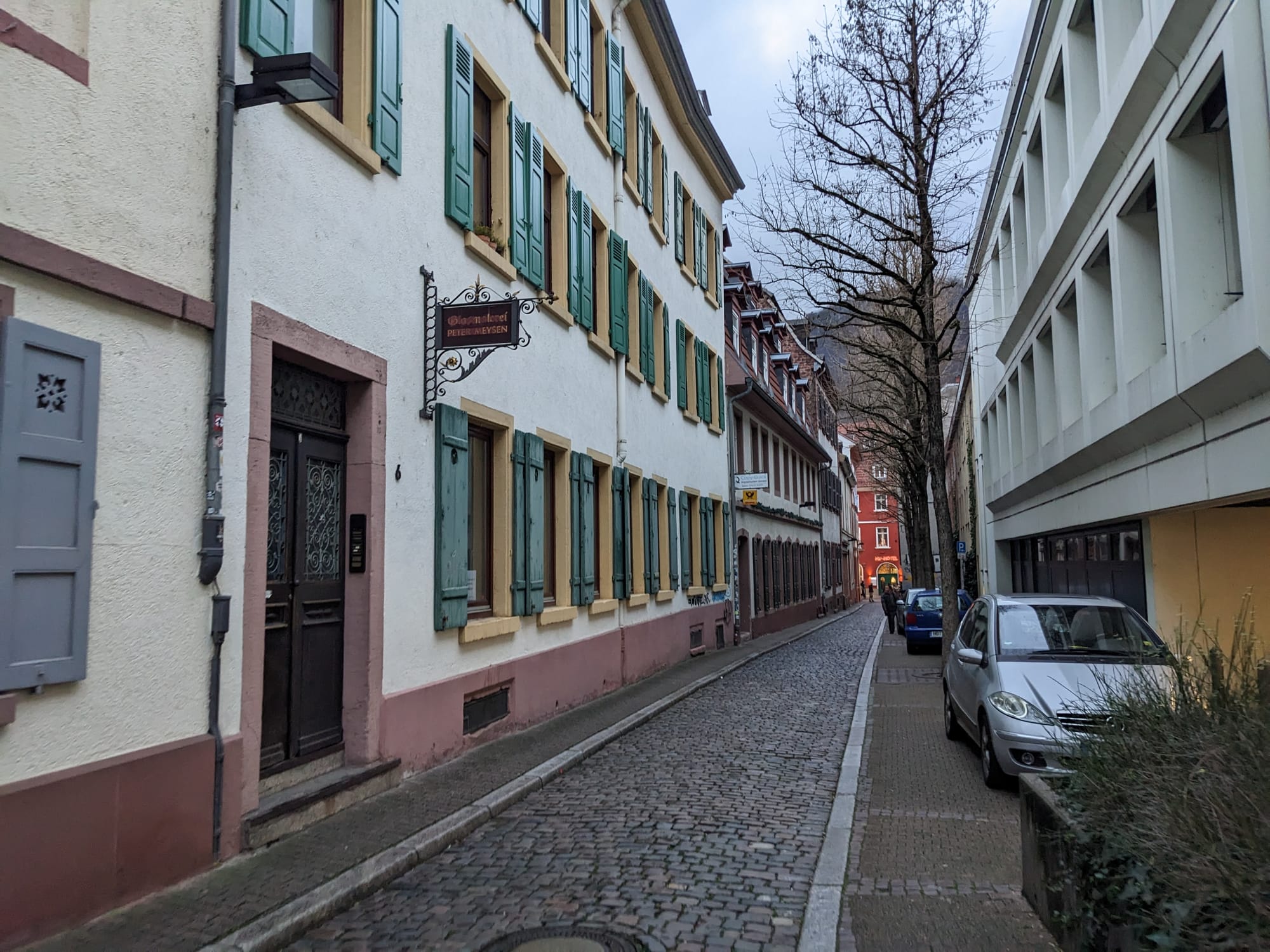
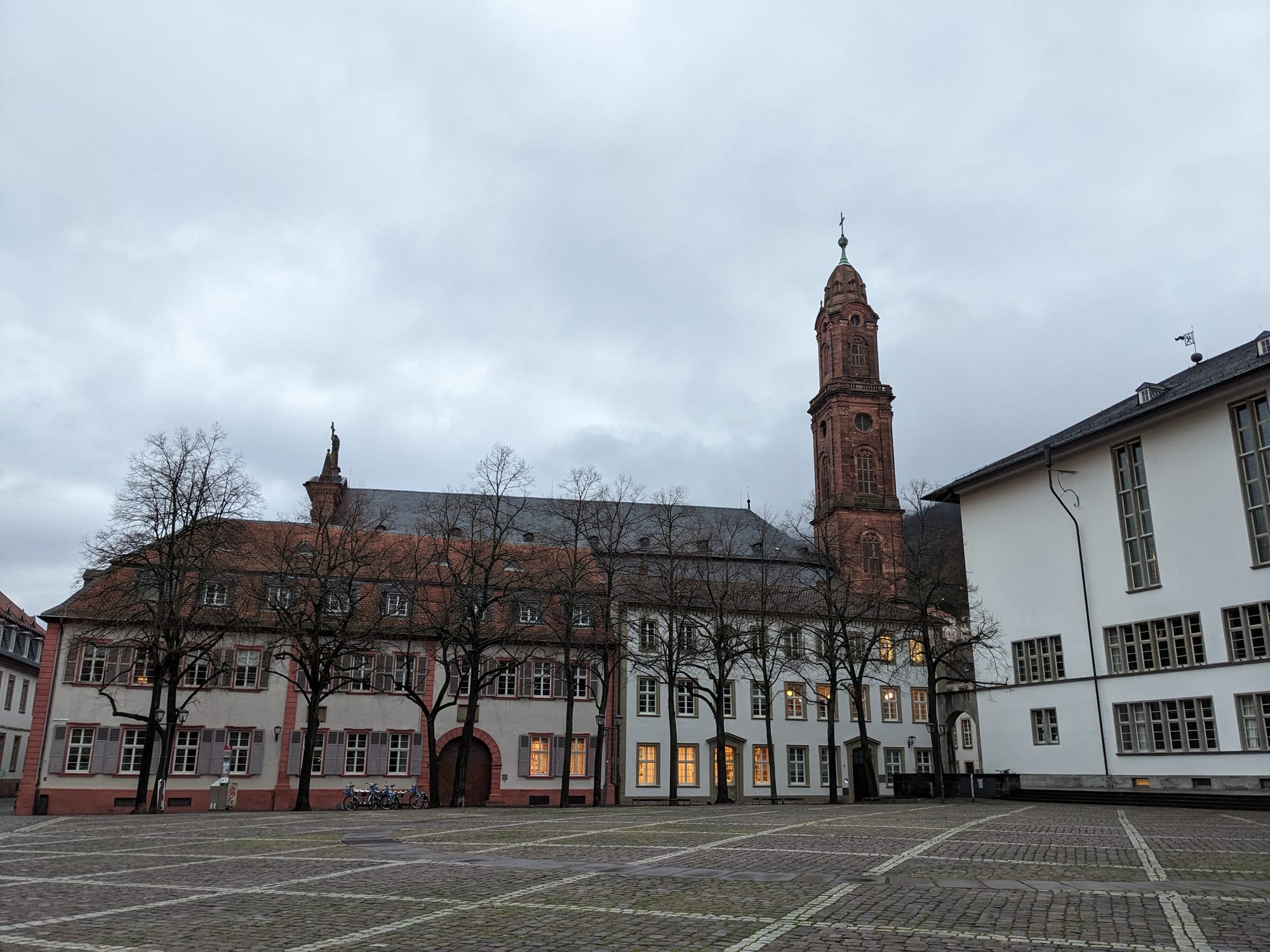
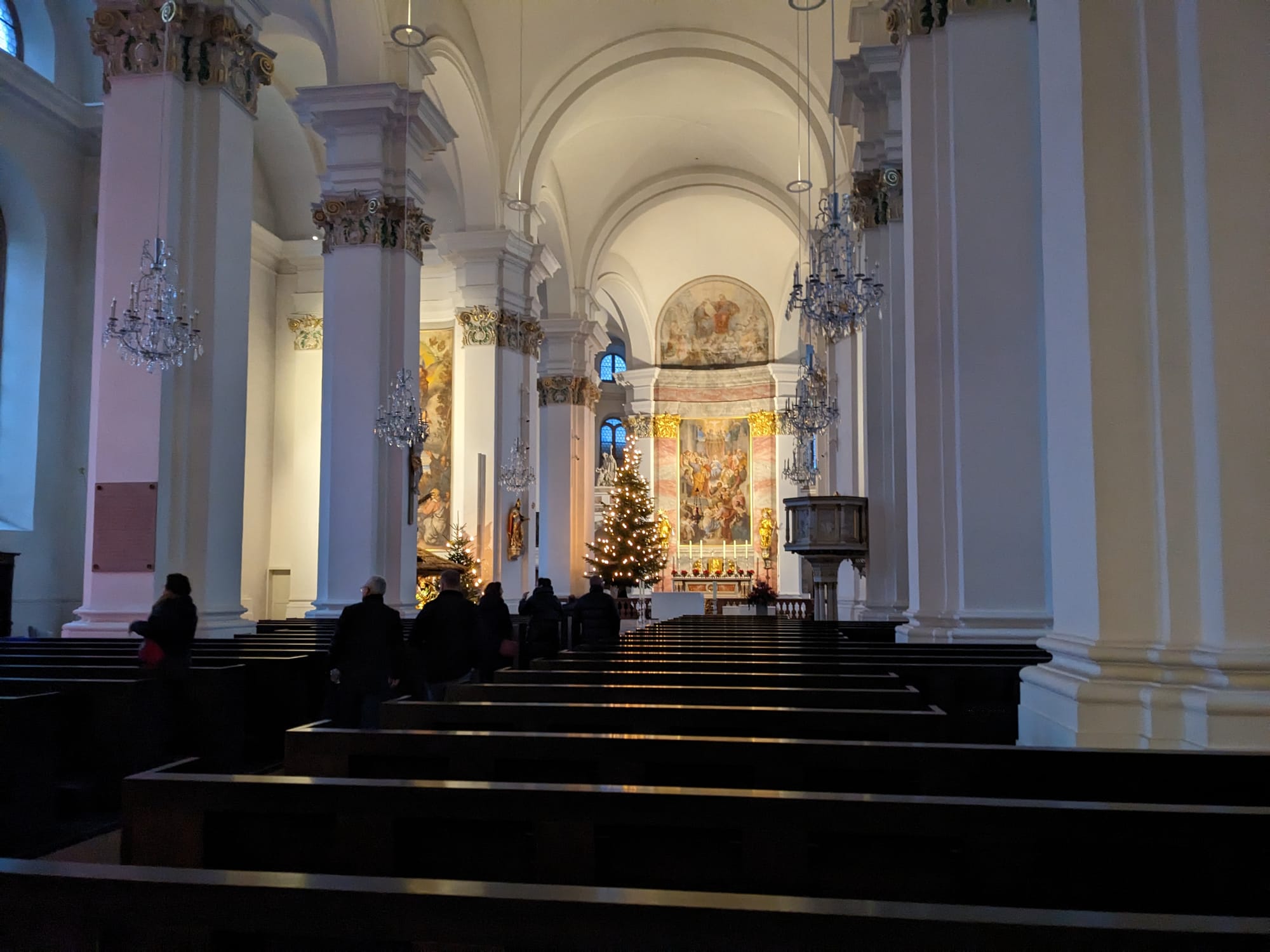
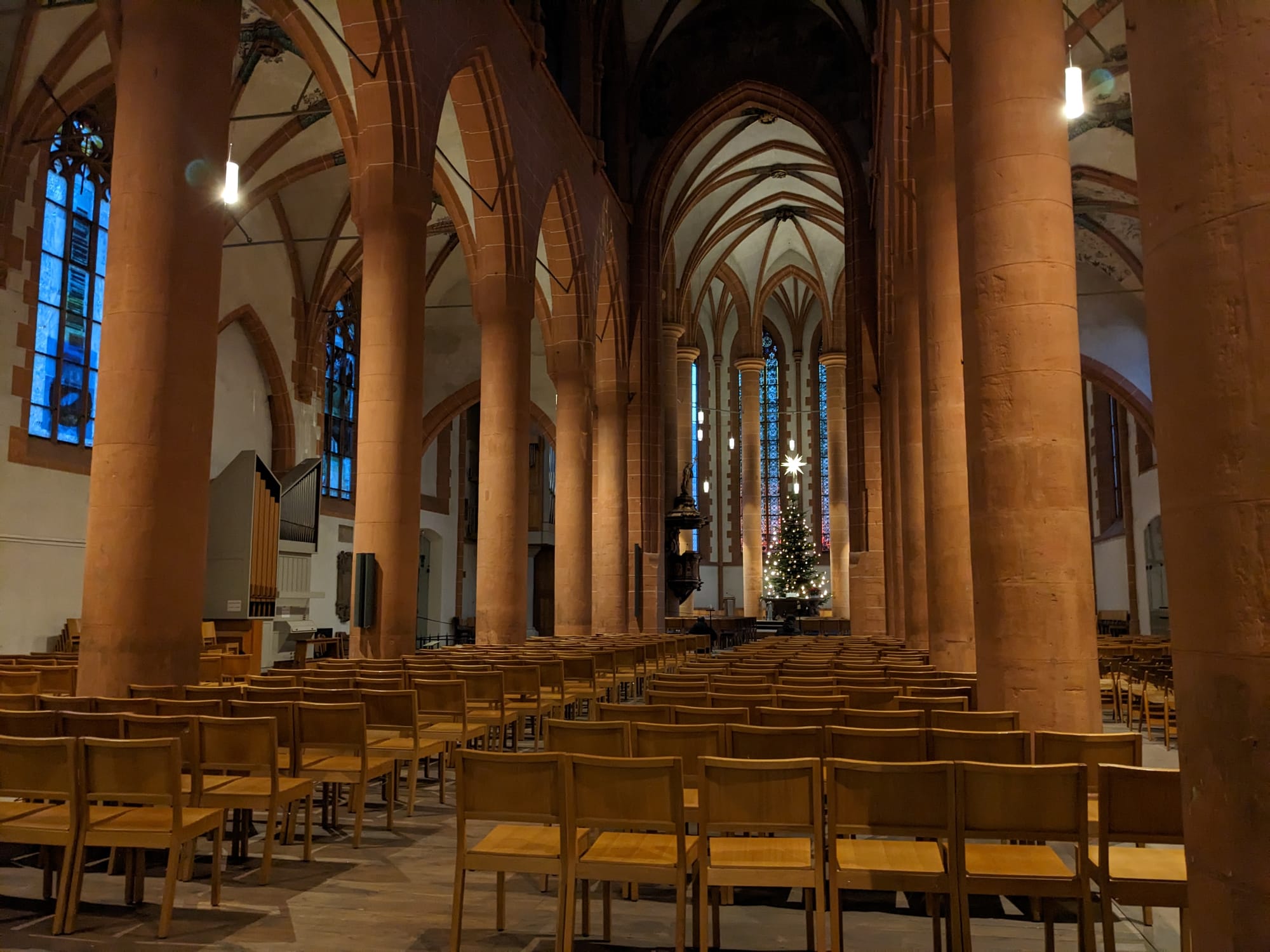
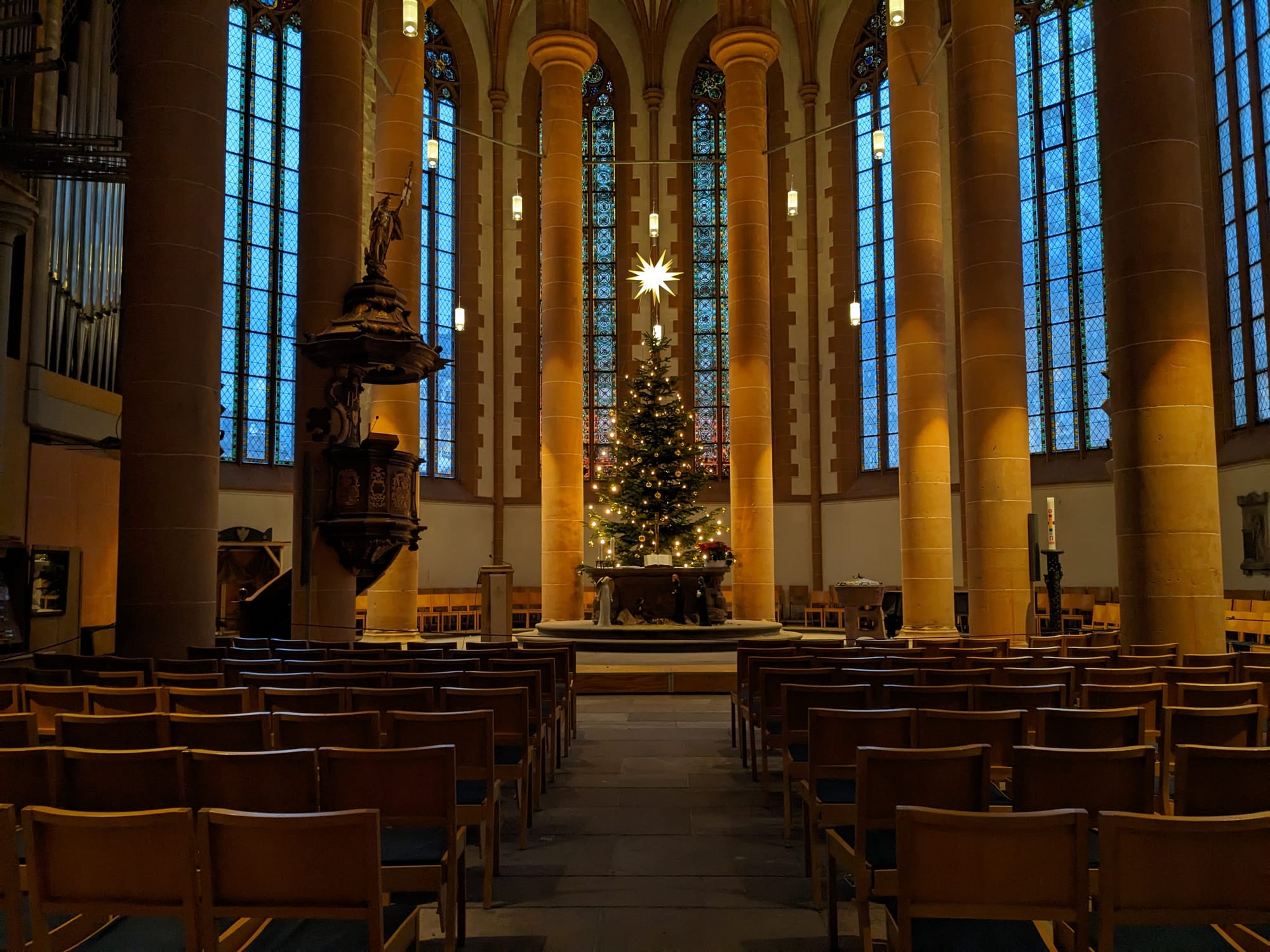
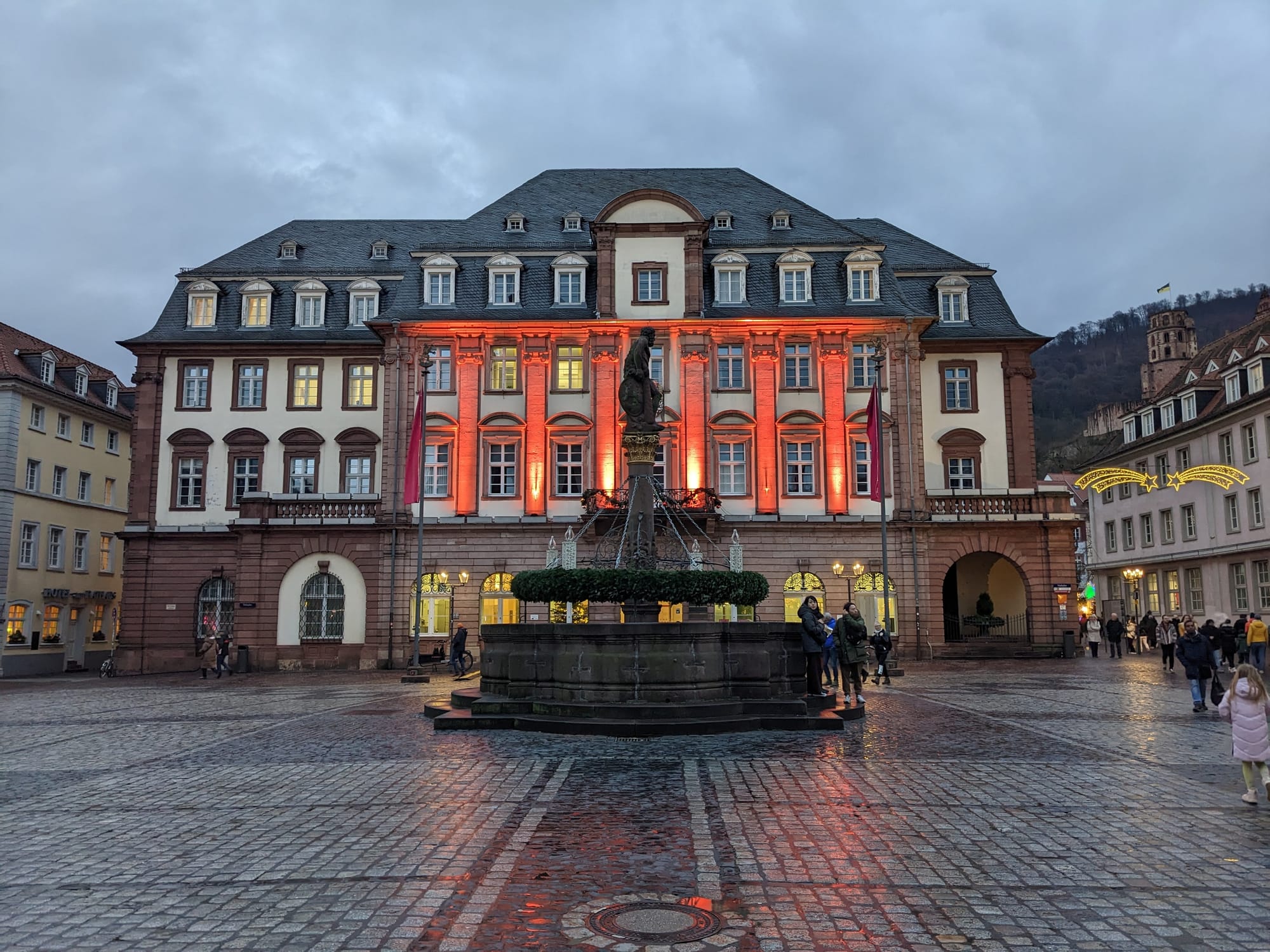
Hillsides and streets and churches oh my!
To close out the evening, we walked up the Kurzer Buckel to Heidelberg Castle. The castle itself is in the Renaissance style (emphasis on symmetry and order, semi-spherical arches, domes and other elements taken from ancient Greece and Rome). The castle has had the great misfortune to be struck by lightning not once, but twice, destroying large parts of the structure which have been largely rebuilt.
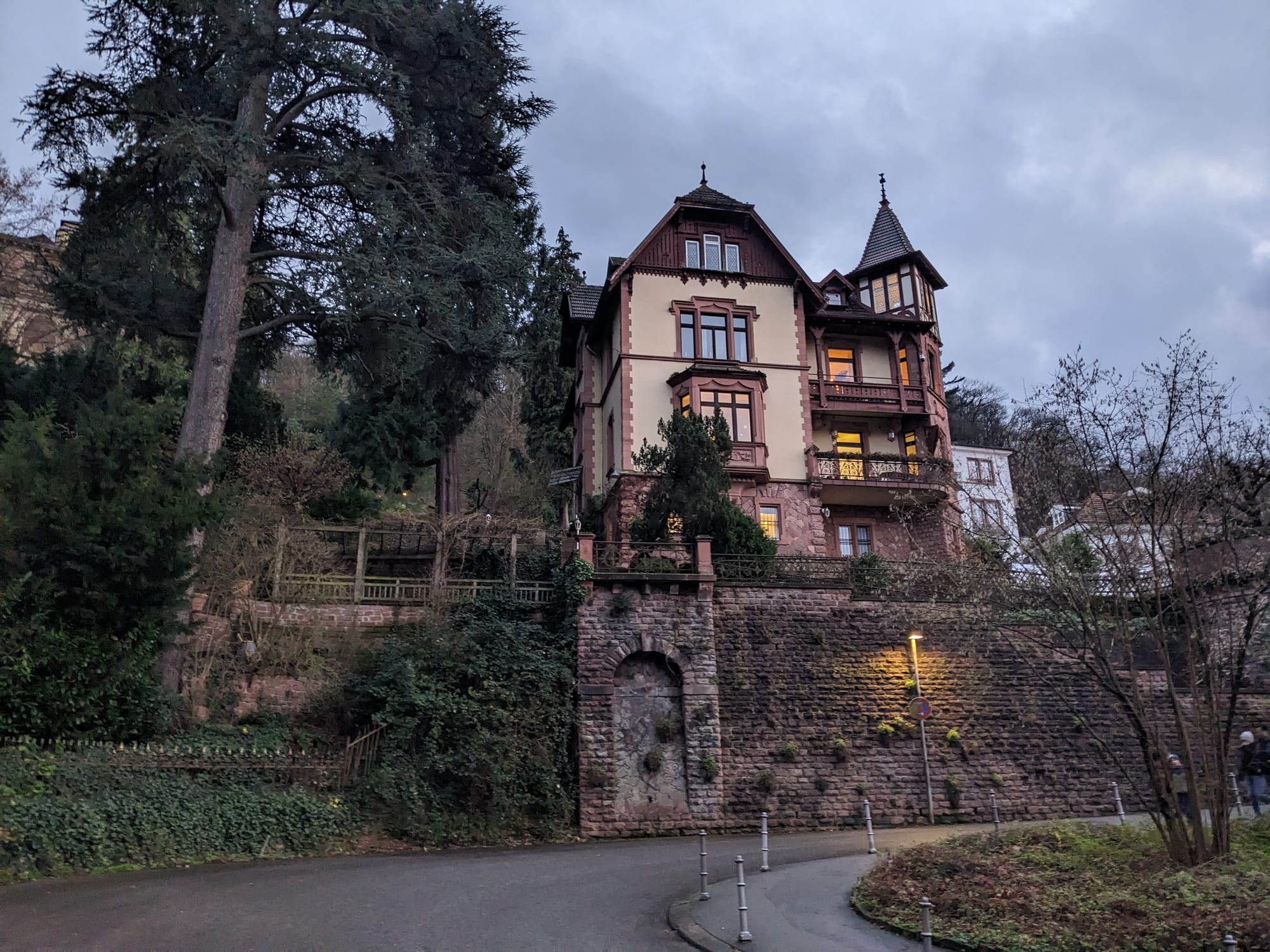
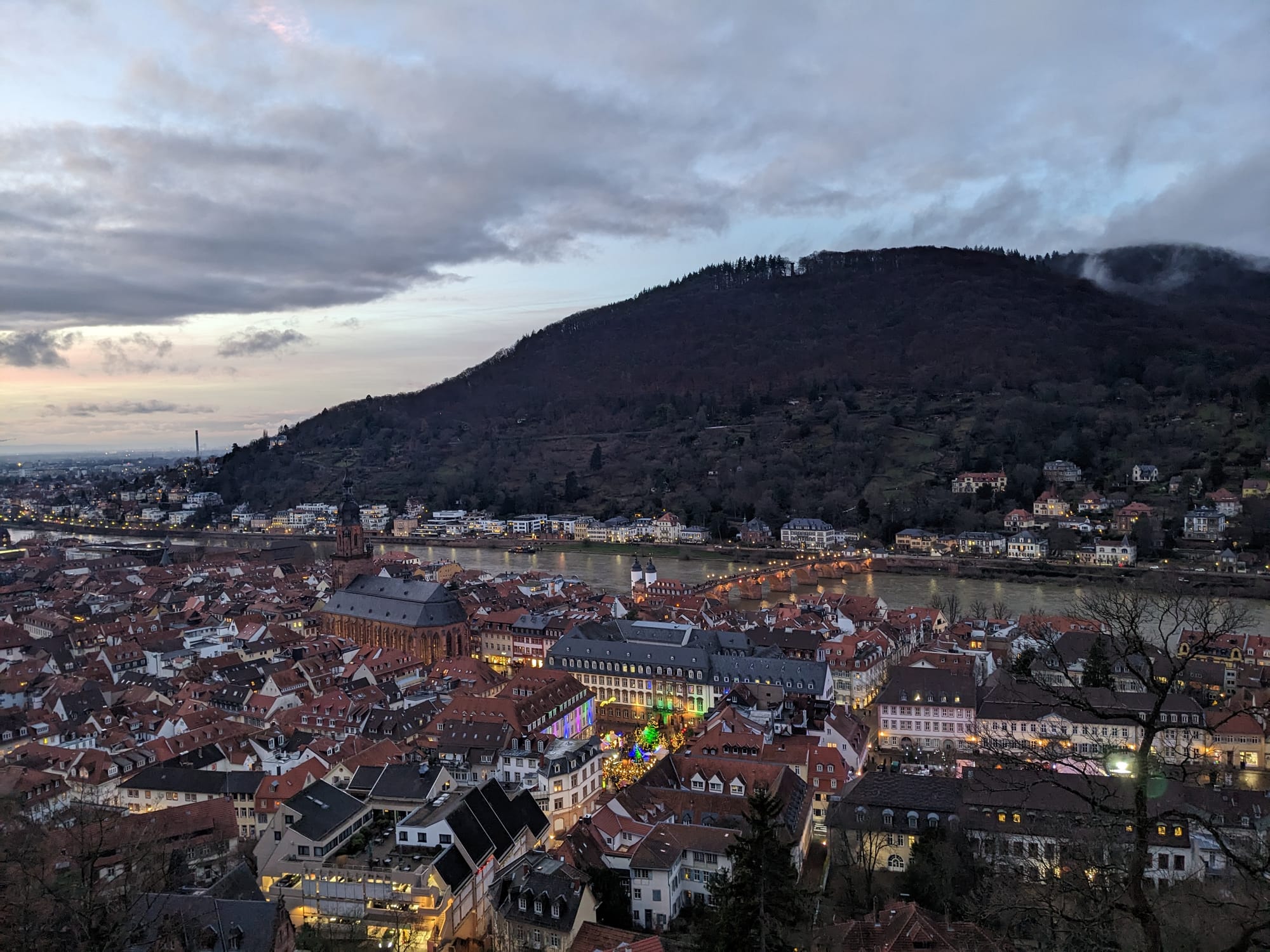
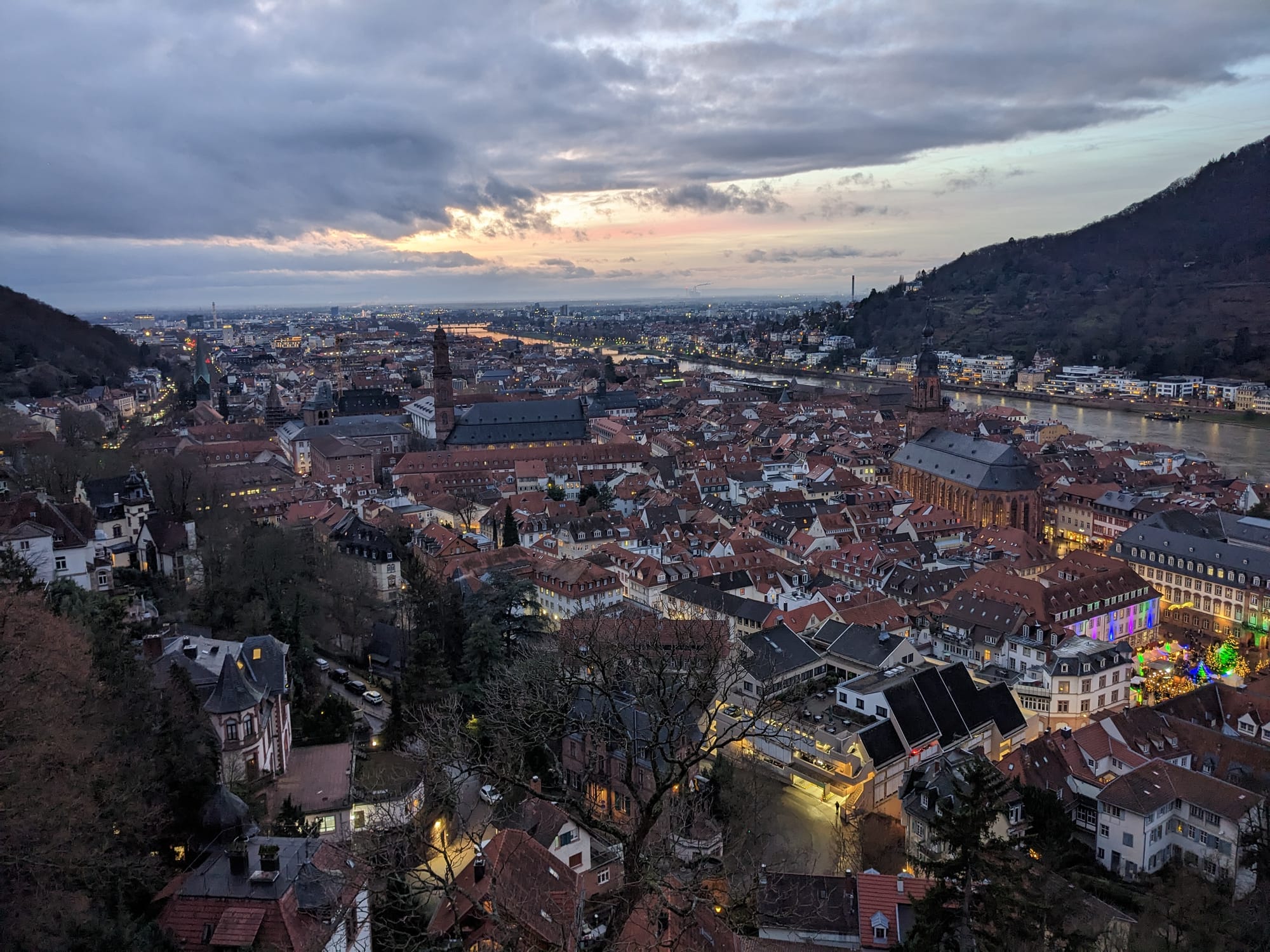
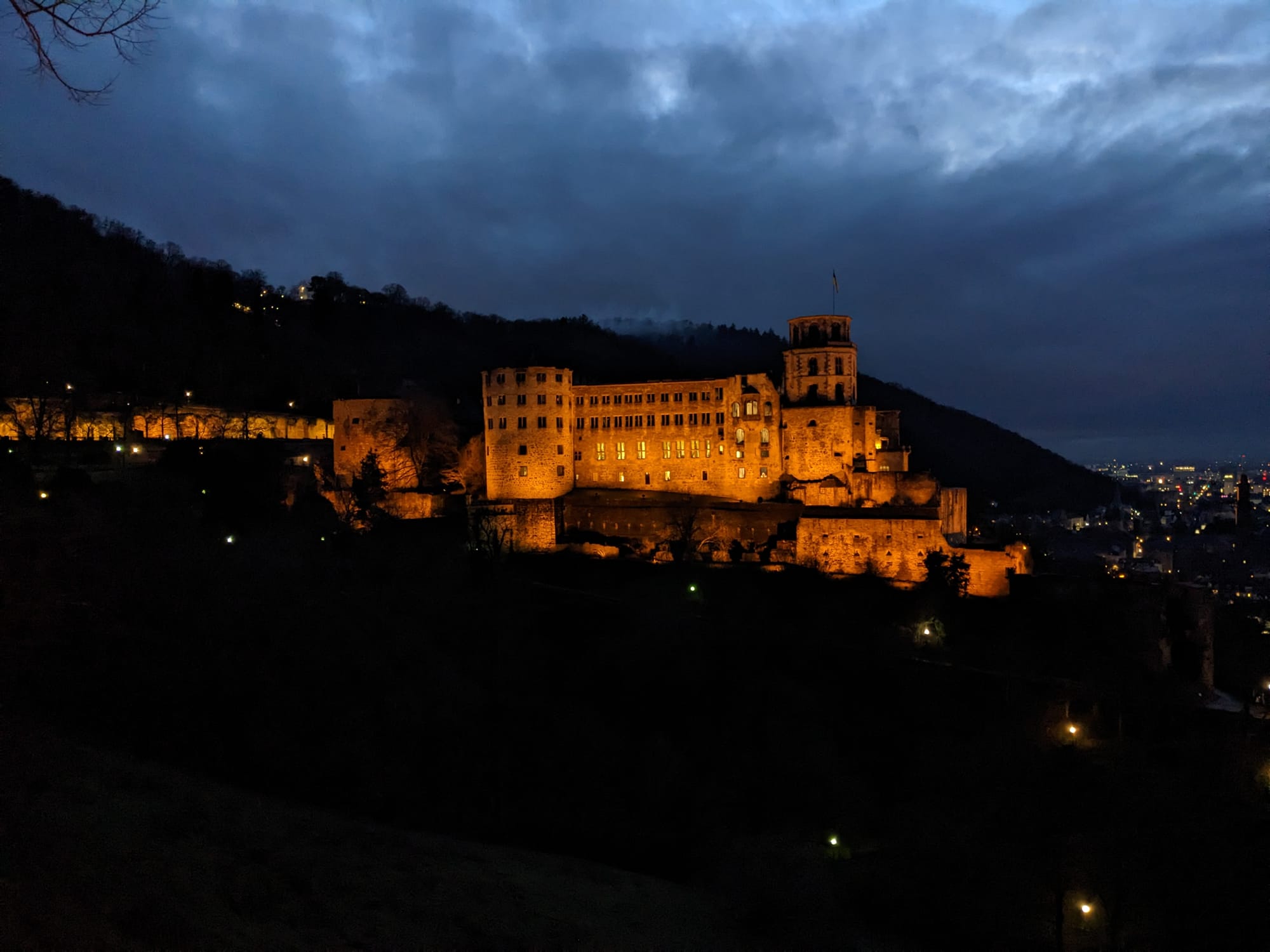
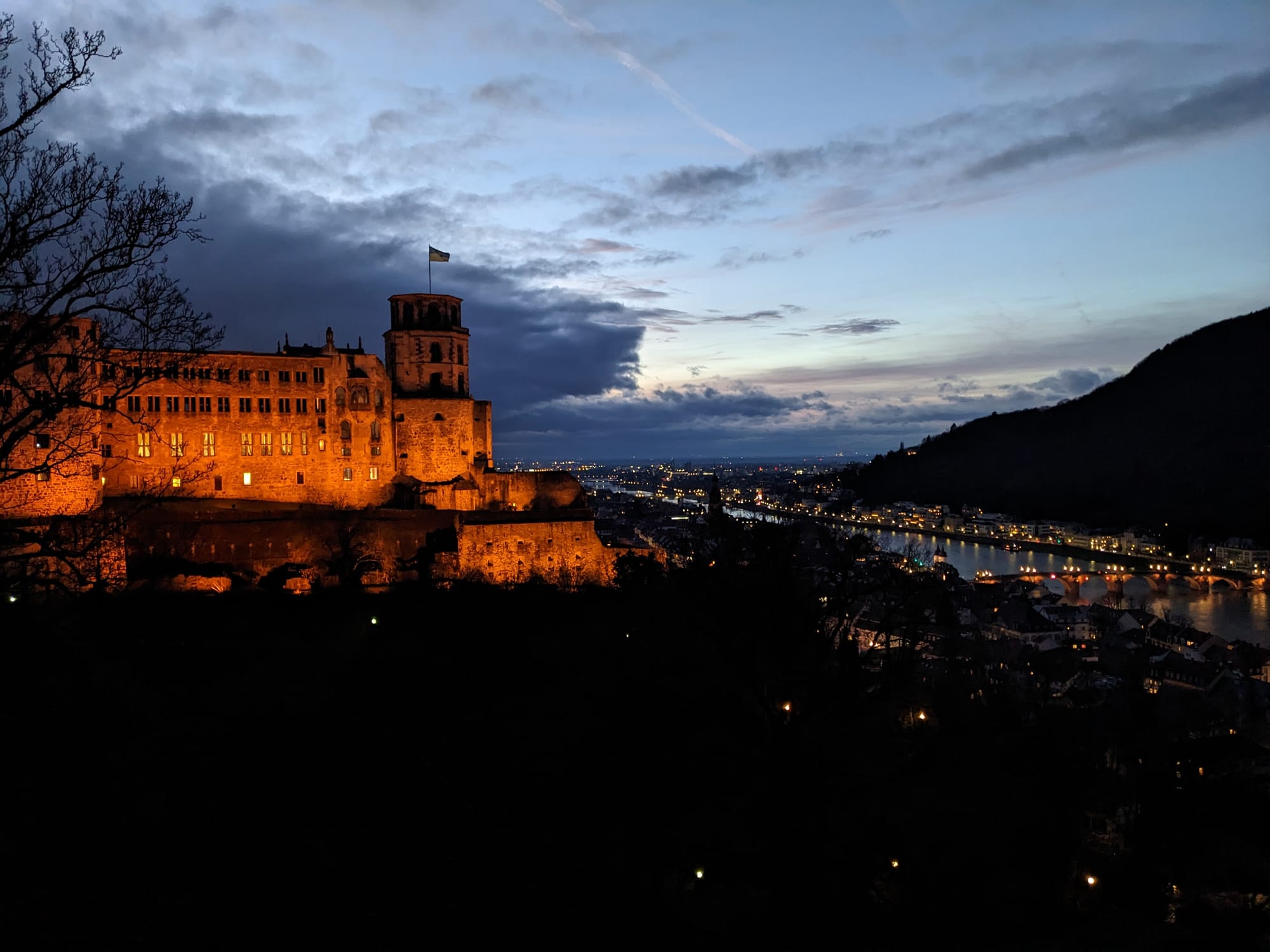
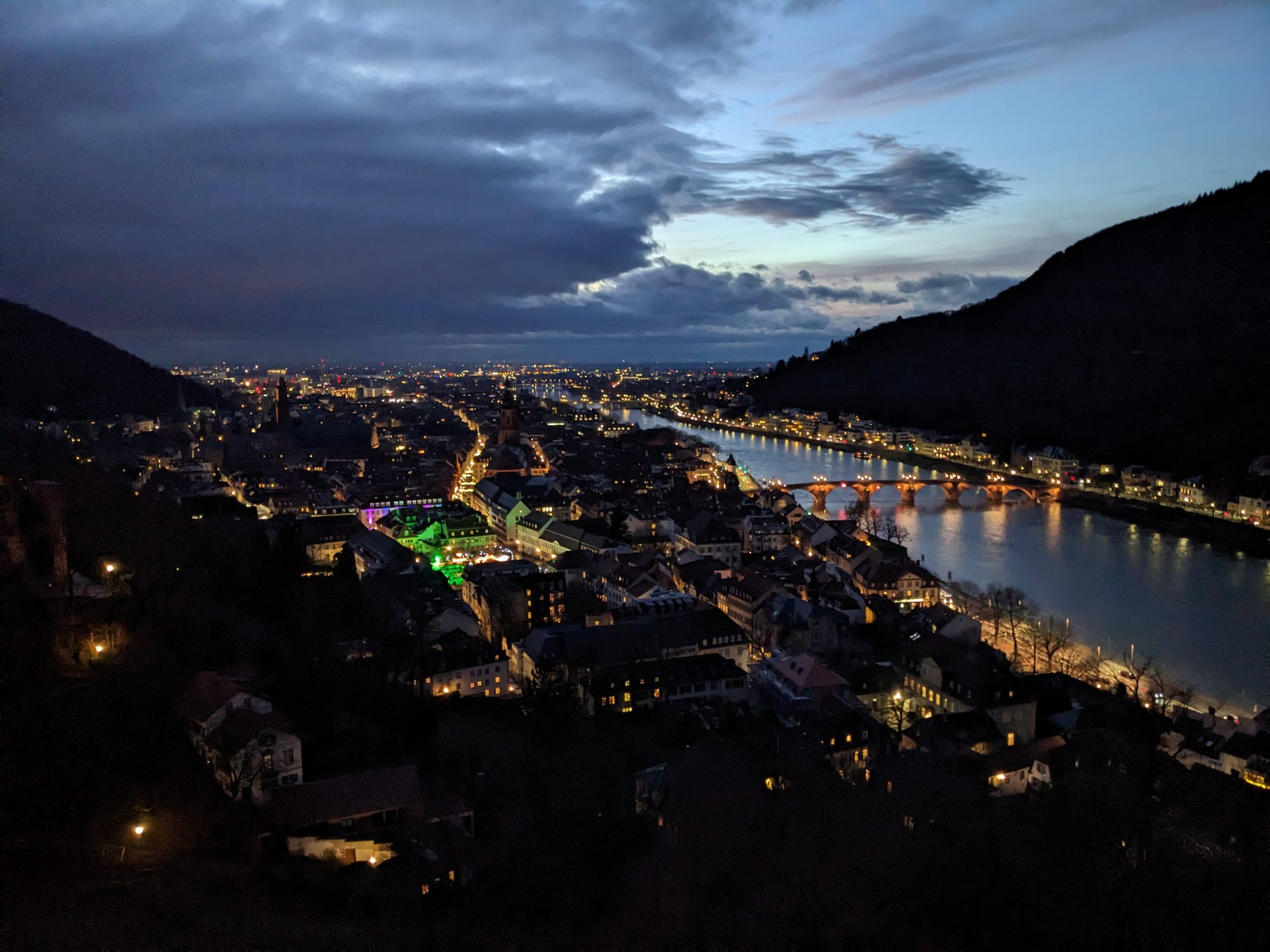
Christmas lights in the town will drive you green with envy.
At that point it was well passed sundown and we'd enjoyed the twilight vistas enough to return to Schwetzingen.
Stuttgart, Germany (29th December)
Having drunk our fill of the splendid Heidelberg, become exhausted of the minor pleasures of Schwetzingen, and beguiled by the prospect to visit another capital and largest city of a lander, we then went to Stuttgart for a day trip.
When we arrived we quickly learnt that Stuttgart was quite boring because most of the city is a construction site at the moment, so we left early.
We had a delightful dinner at home in Schwetzingen and watched the classic heist film Rufifi on the Chromecast. Pro-tip, take a Chromecast one holiday. The weight-to-value ratio is phenomenal.
Karlsruhe, Germany (30th December)
For our final German destination, we stopped in Karlsruhe (translates to Charles' peace), a palace town built in 1715 which is crazy recent. The central part of town follows a grid layout whereby the palace is always visible at the end of the streets that run north-south. The city was one of twelve European cities Thomas Jefferson asked Pierre Charles L'Enfant to consult when they designed Washington D.C. For me, placing the palace at the centre of a circular grid felt a lot like Canberra.

Karlsruhe is awesome for public transport aficionados because its network has a rare type of tram-train that can run both slower tram-like services at-level in the city as well as faster, longer-distance train-like services to the outer suburbs all on the same line. The city stations are mostly underground and have these very charming layouts with daring modern artwork. Highly recommend taking a ride in Karlsruhe.
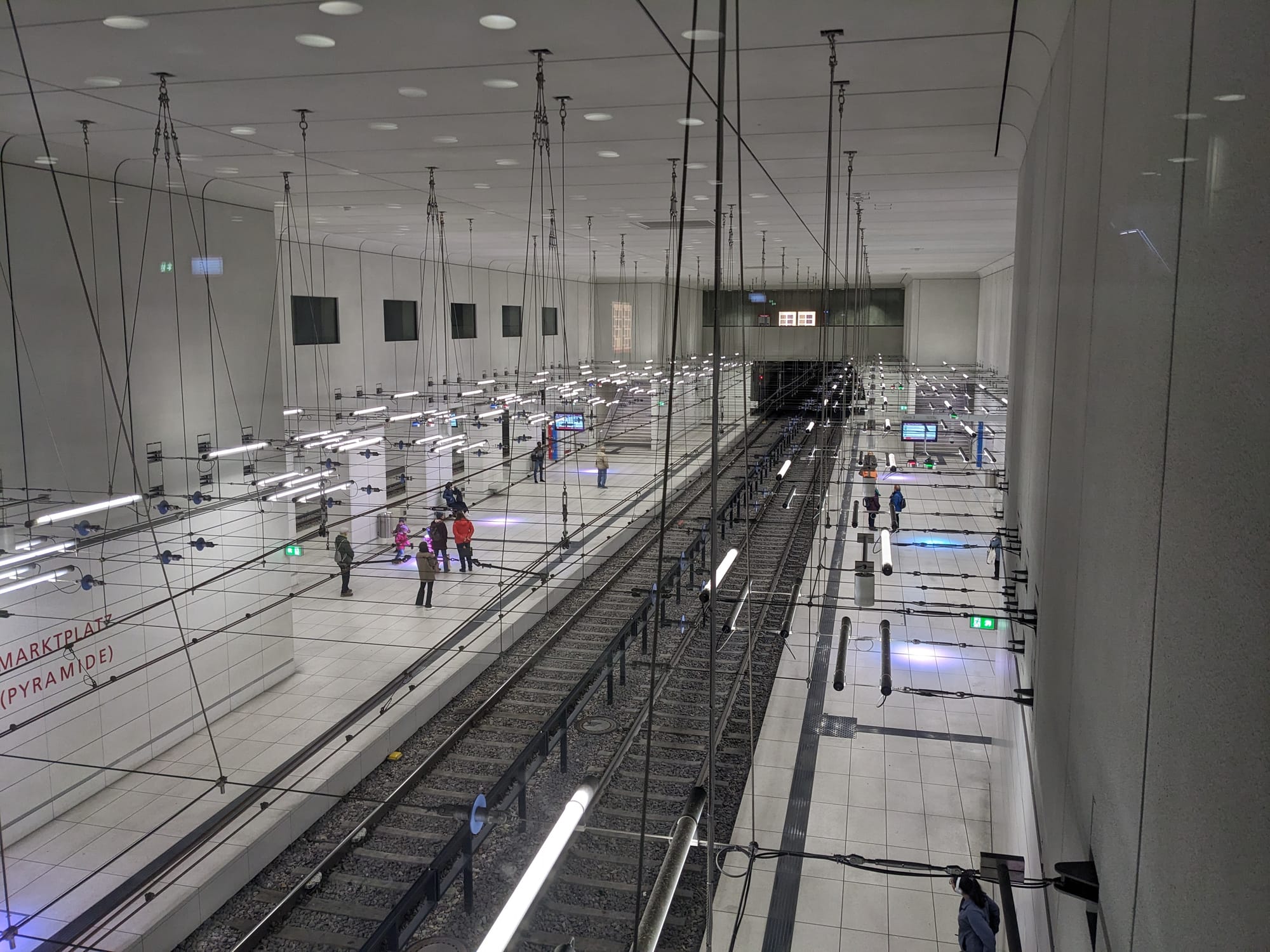
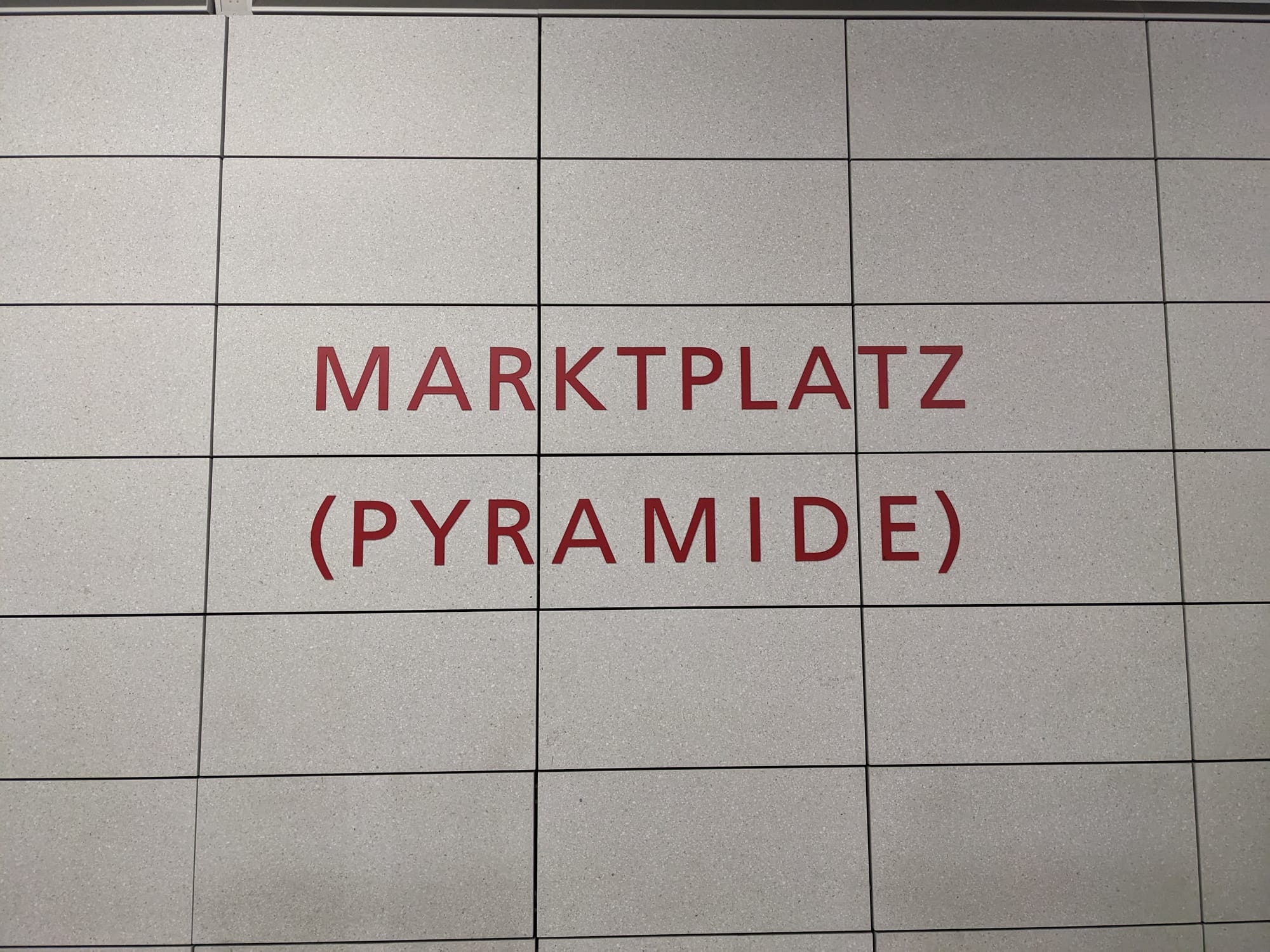
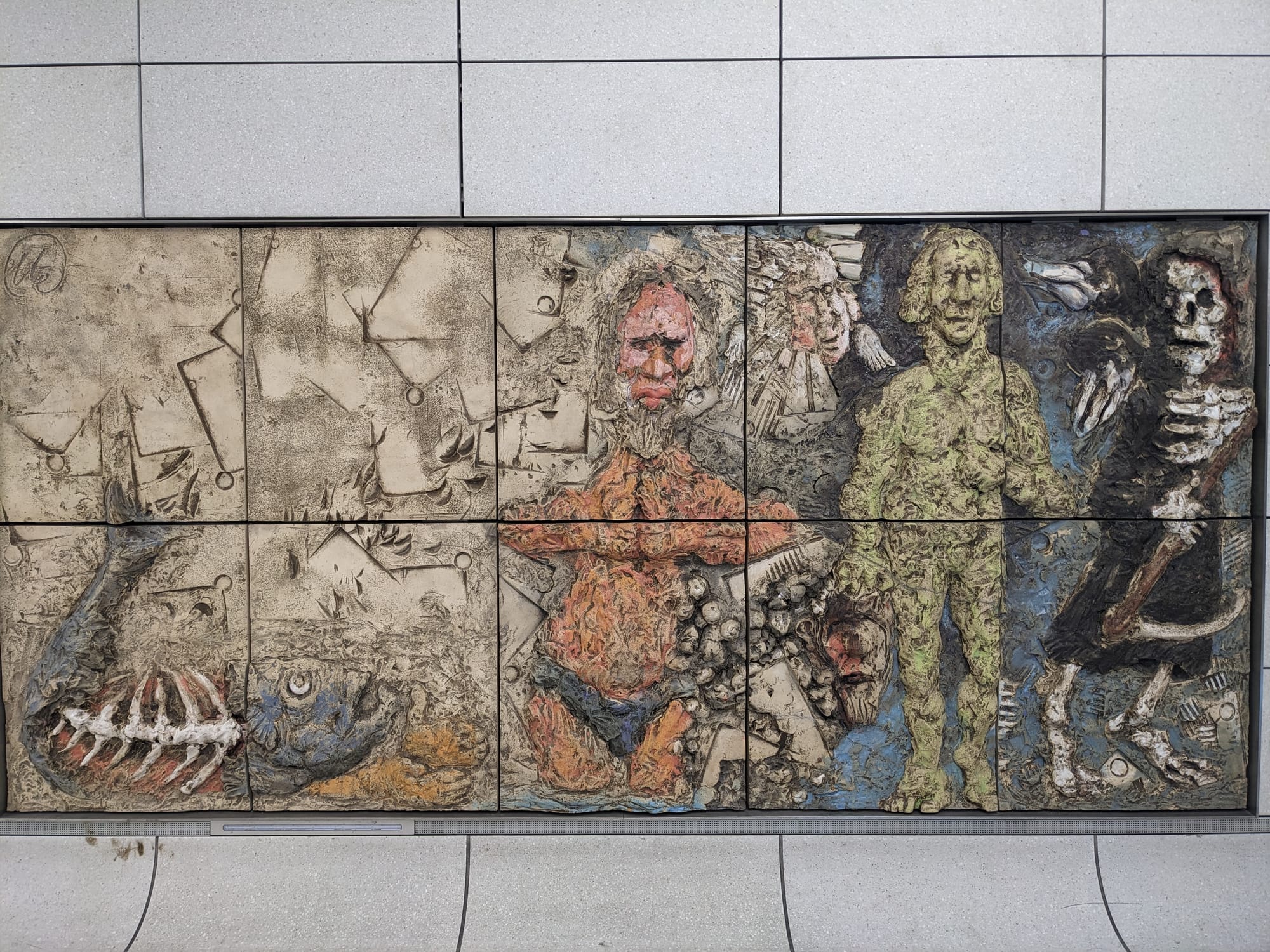
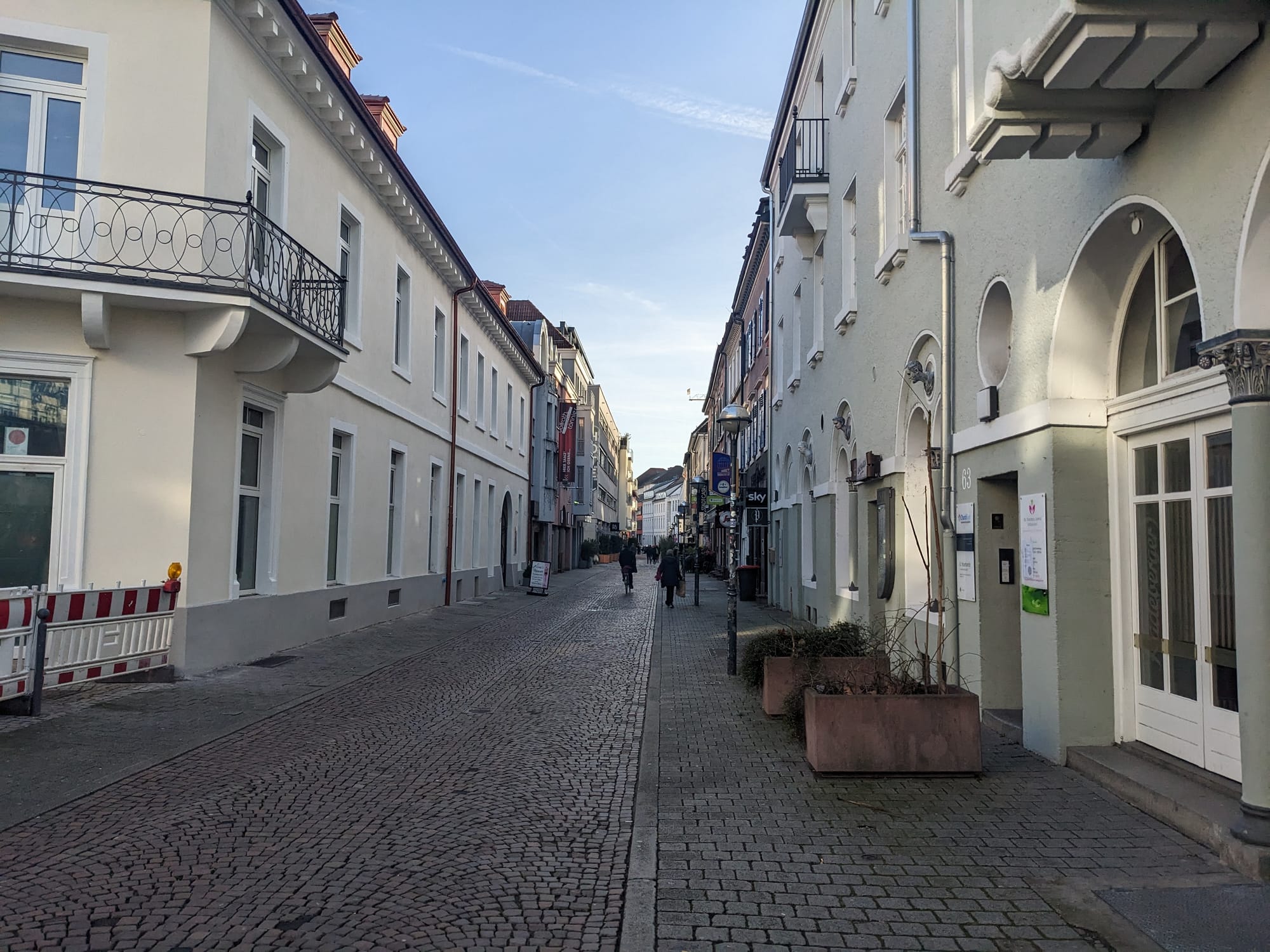
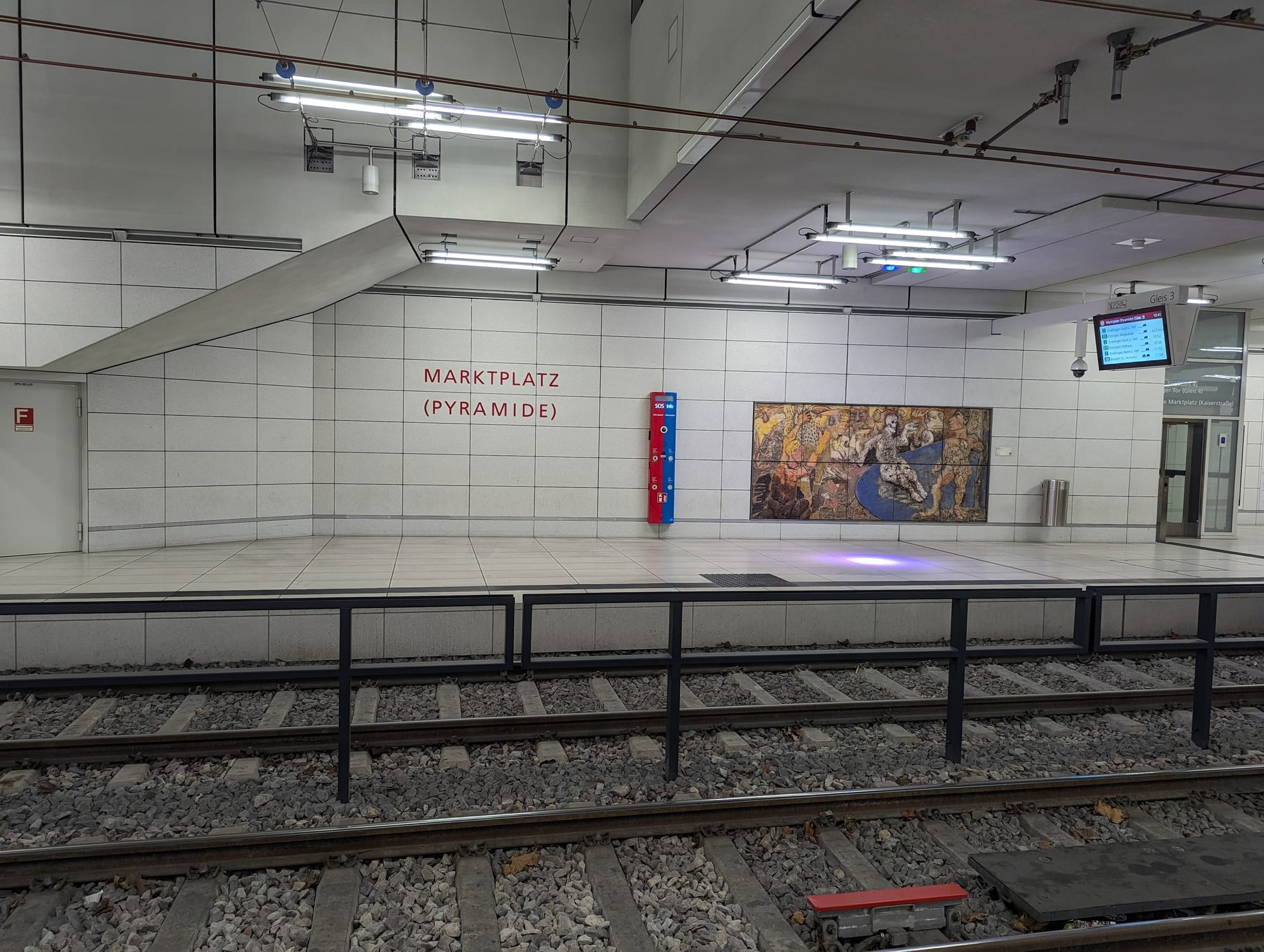
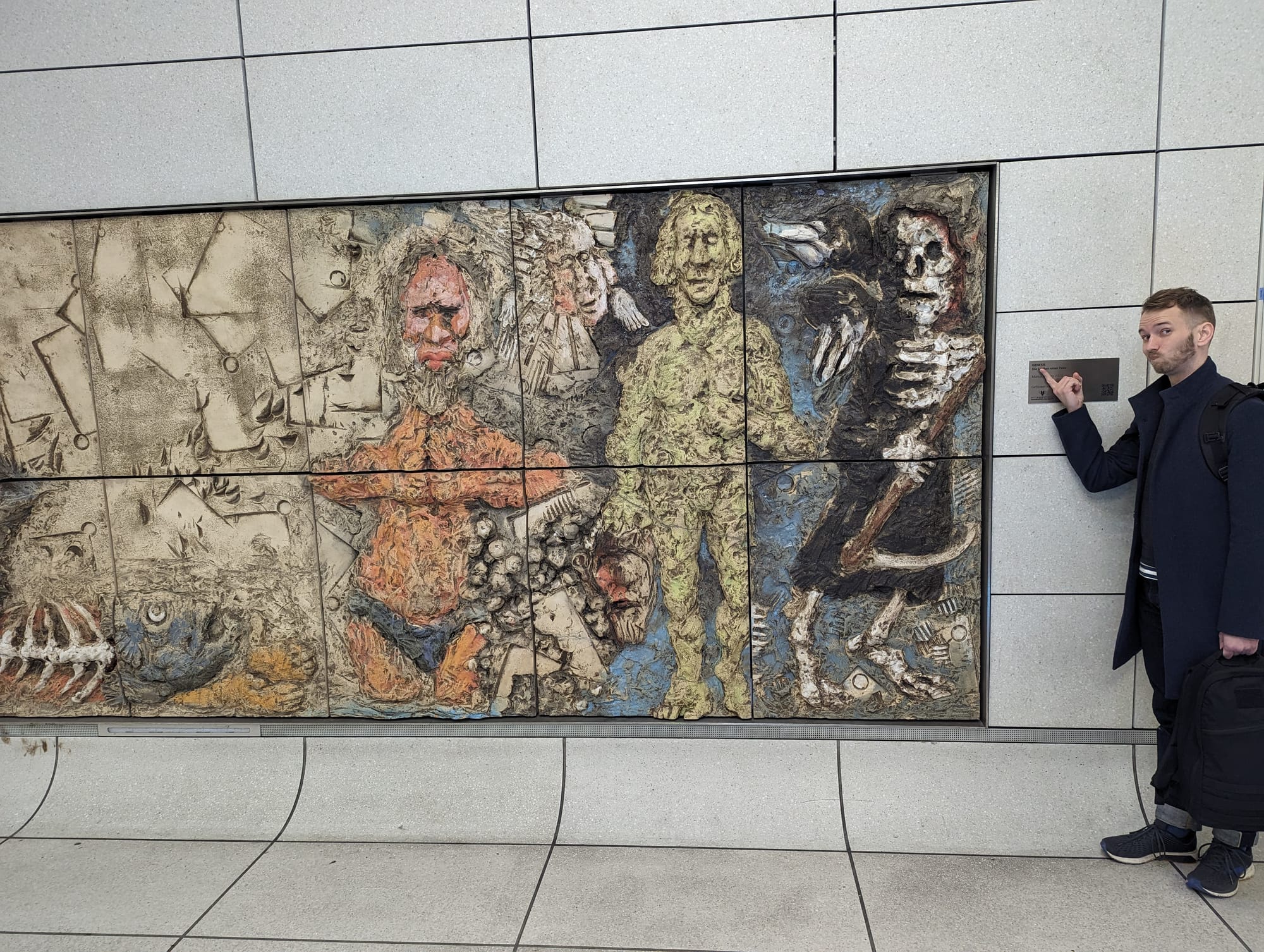
You could say that the underground tram lines track the above ground street layout.
Today the Karlsruhe Palace is a public museum and you can walk the grounds for free. There is a model train and railway for families to traverse the gardens. However, the model train was sadly not running the day we visited and I could not act on my desire to say chugga chugga choo choo.
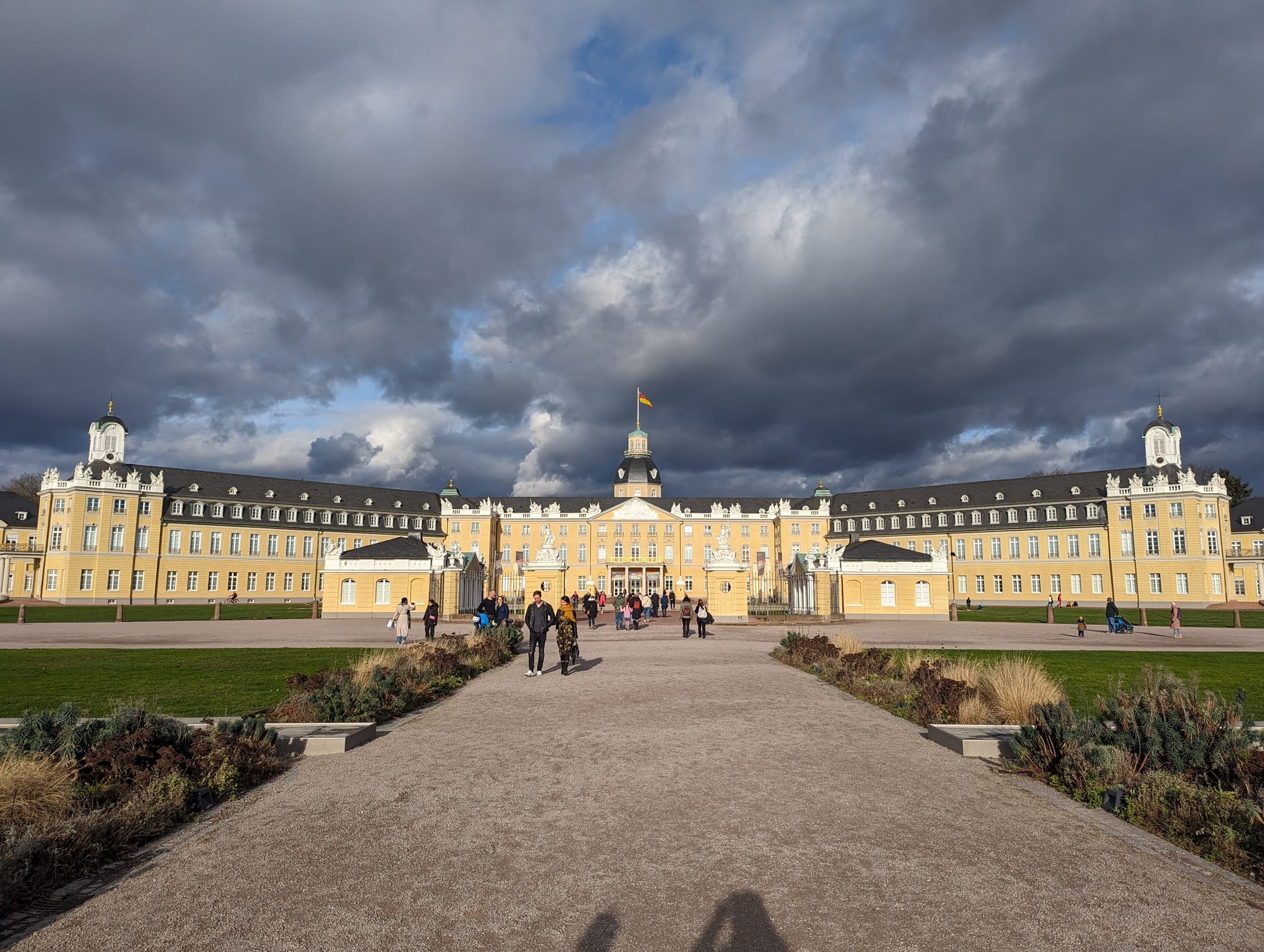

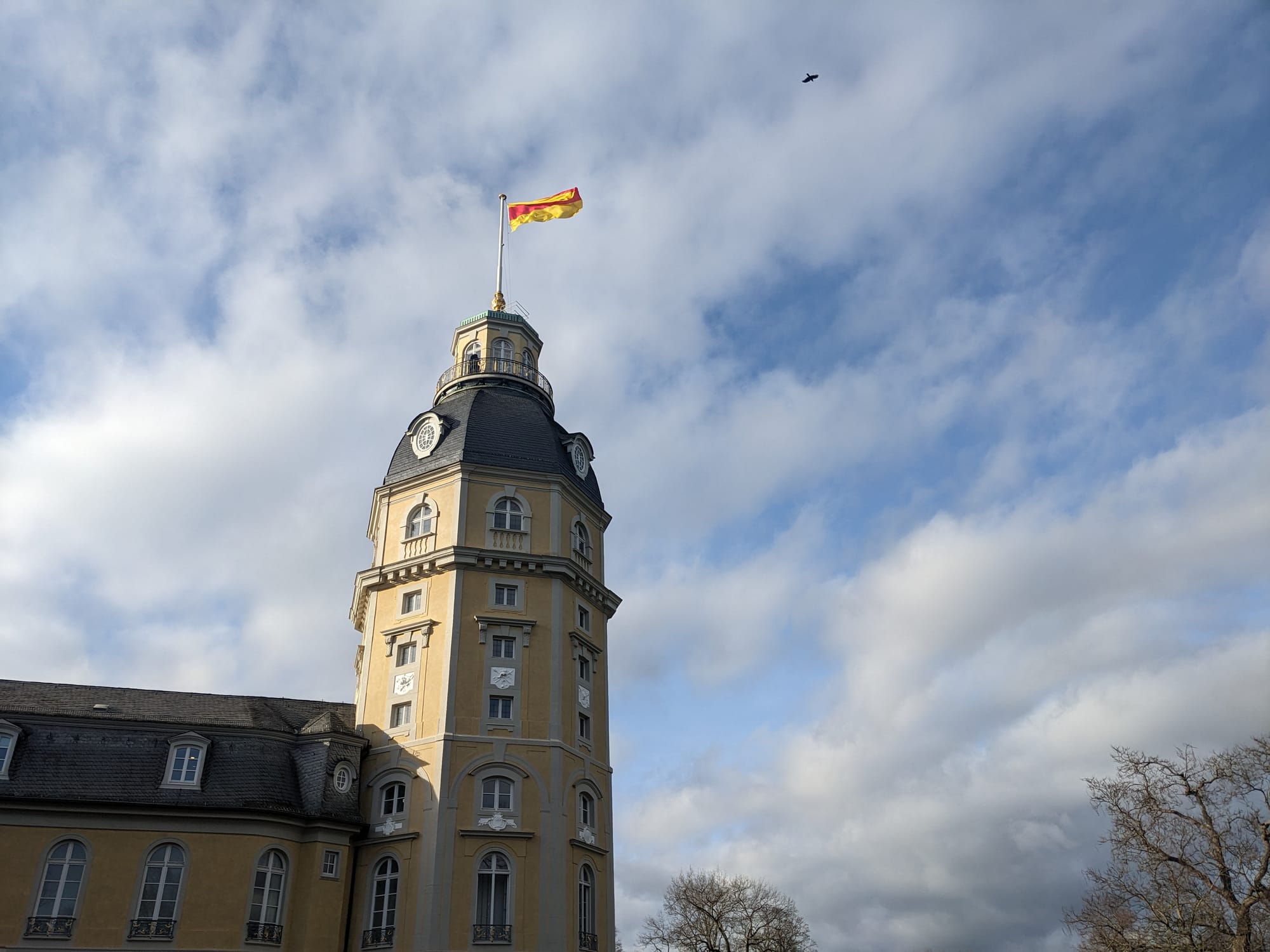
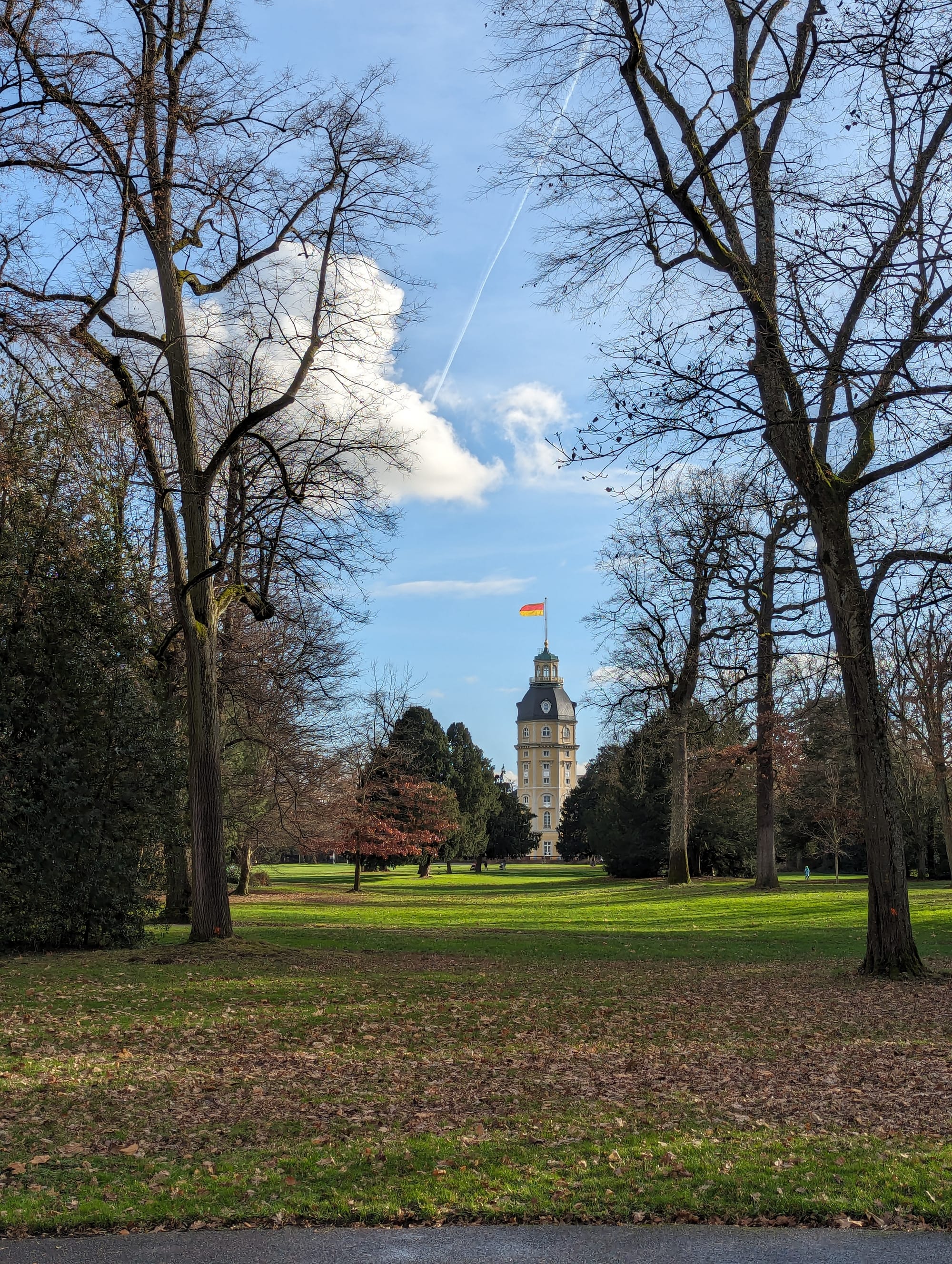
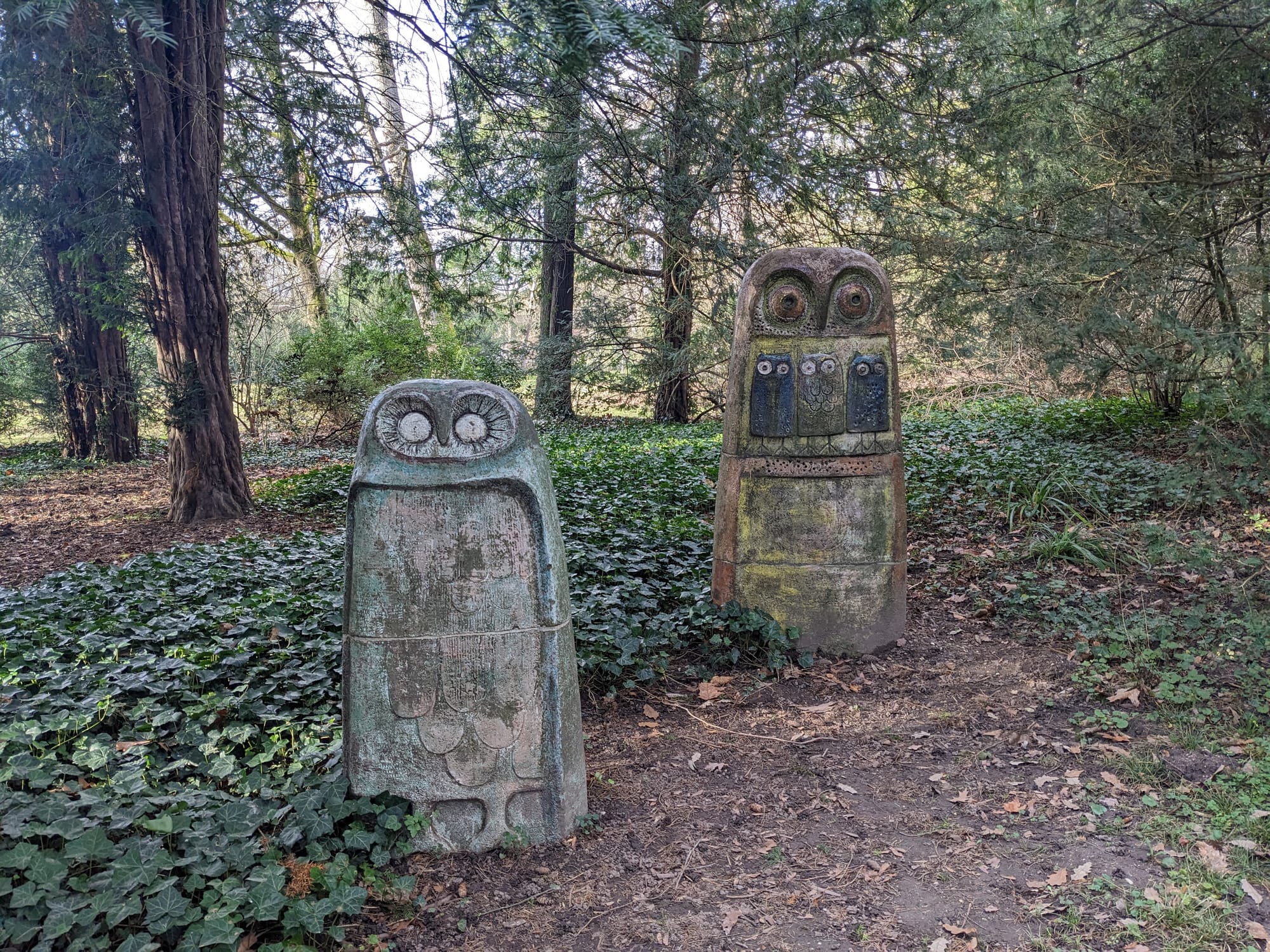
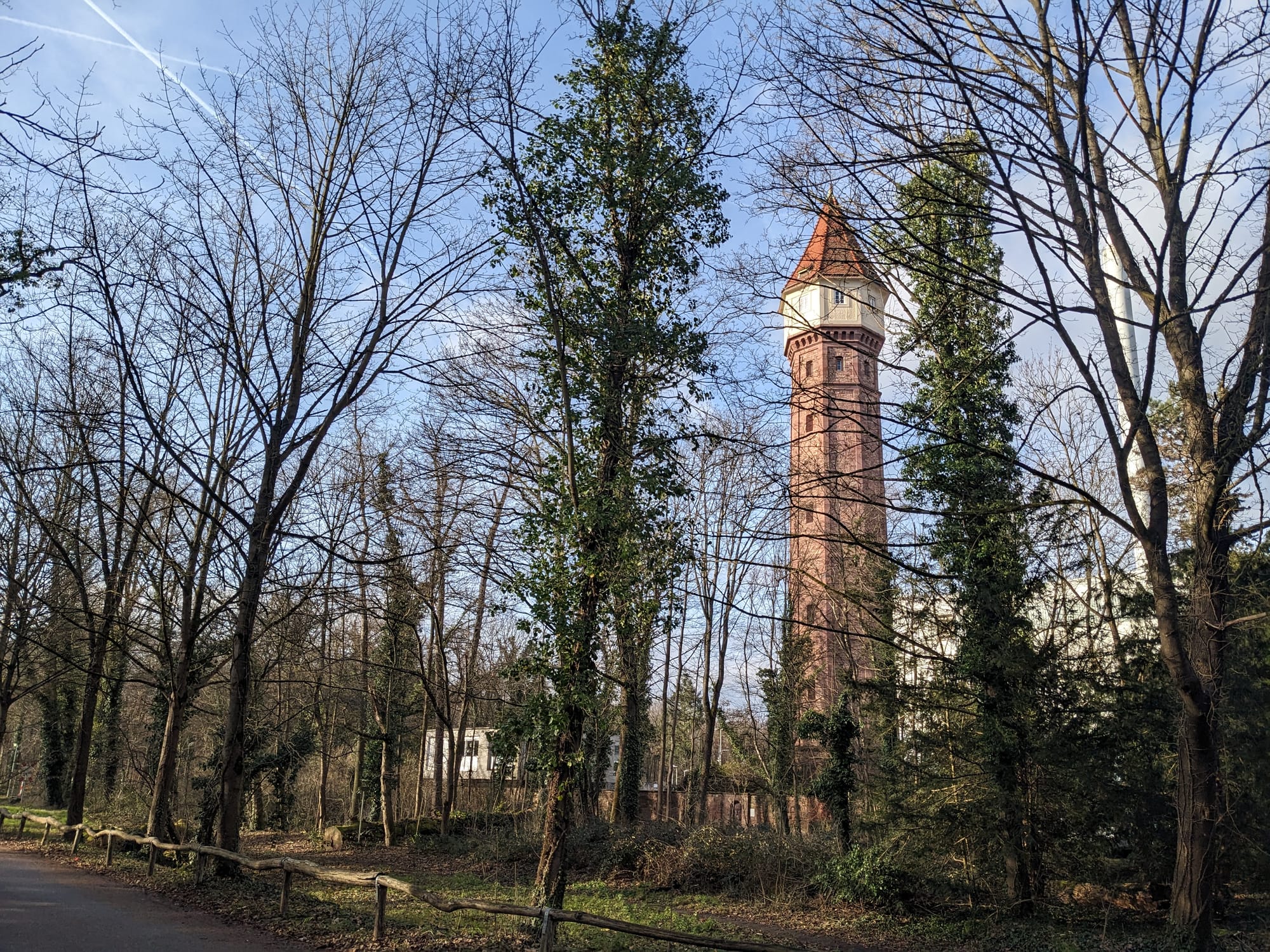
Karlsruhe palace and it's grounds go way back.
We went north through the palace gardens and then cut west through a part of town where the streets had no name were named after American states - Rhode-Island-Alle, Tennesseealle, etc. Karlsruhe and its palace were largely destroyed by Allied bombing in WWII but it was rebuilt and was home to an American military base until 1995.
Once again the Chromecast proved its worth as we spent the evening watching Would I Lie To You in the hotel. Interestingly there was no power outlet near the hotel TV, and the Chromecast couldn't connect to the Wi-Fi, so we powered the Chromecast with our charging pack and hot-spotted off of our mobile data. Even in the most inauspicious of circumstances, the Chromecast comes through.
Paris, France (31st December)
For the last leg of our journey, we caught the TGV from Karlsruhe to Paris. It was New Years Eve, the service was quiet and we had a lovely sunrise to see us off.
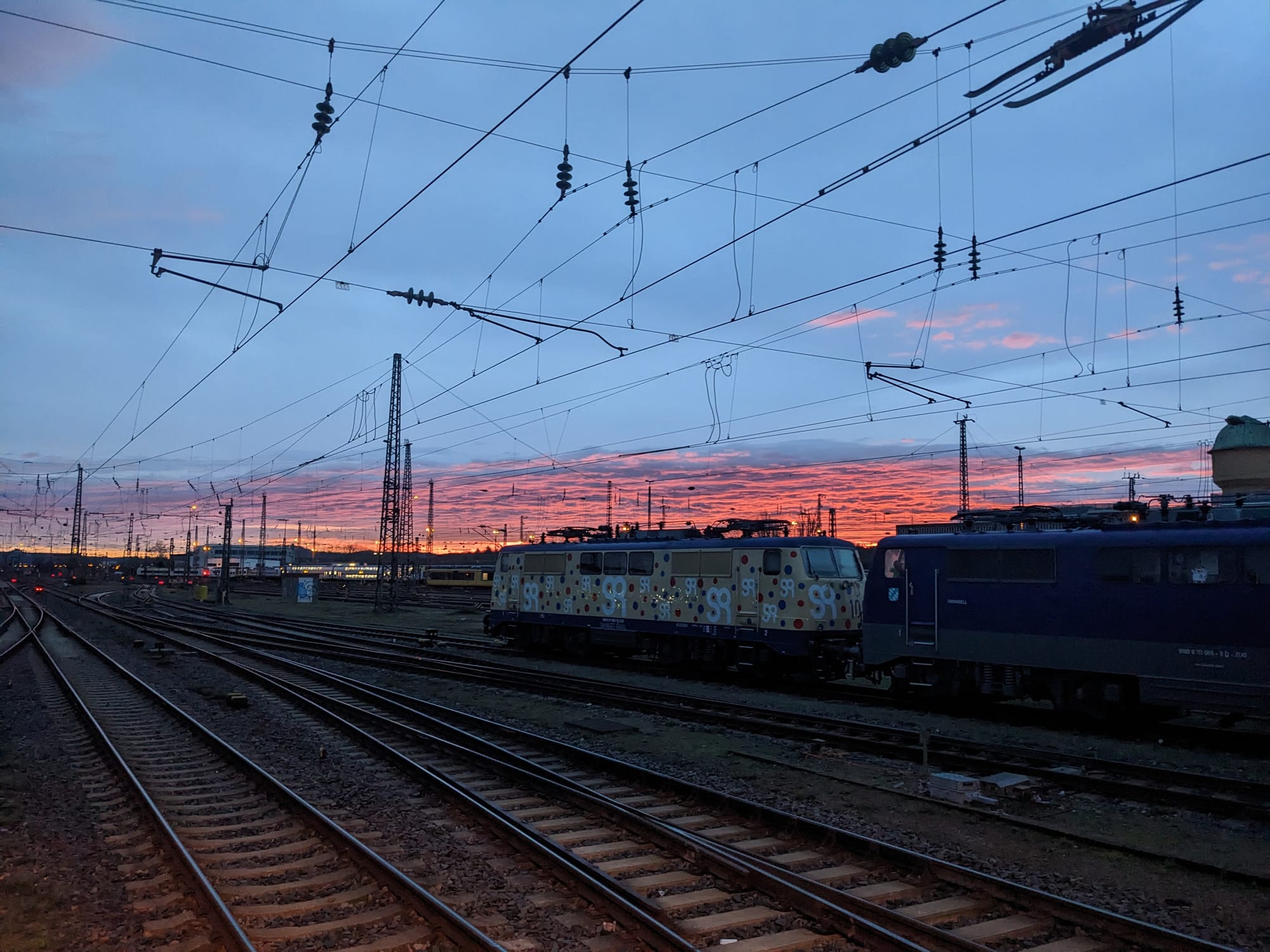
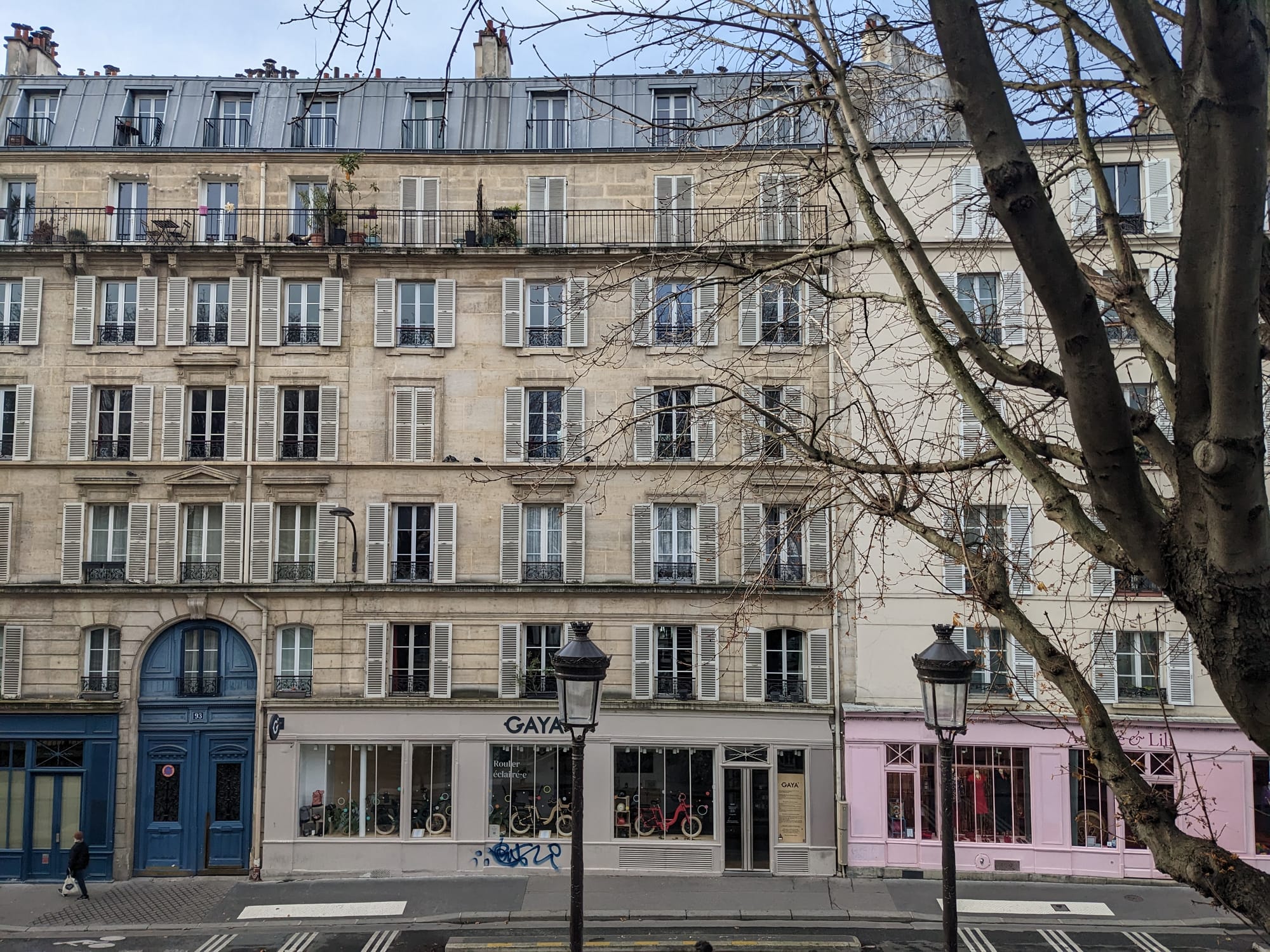
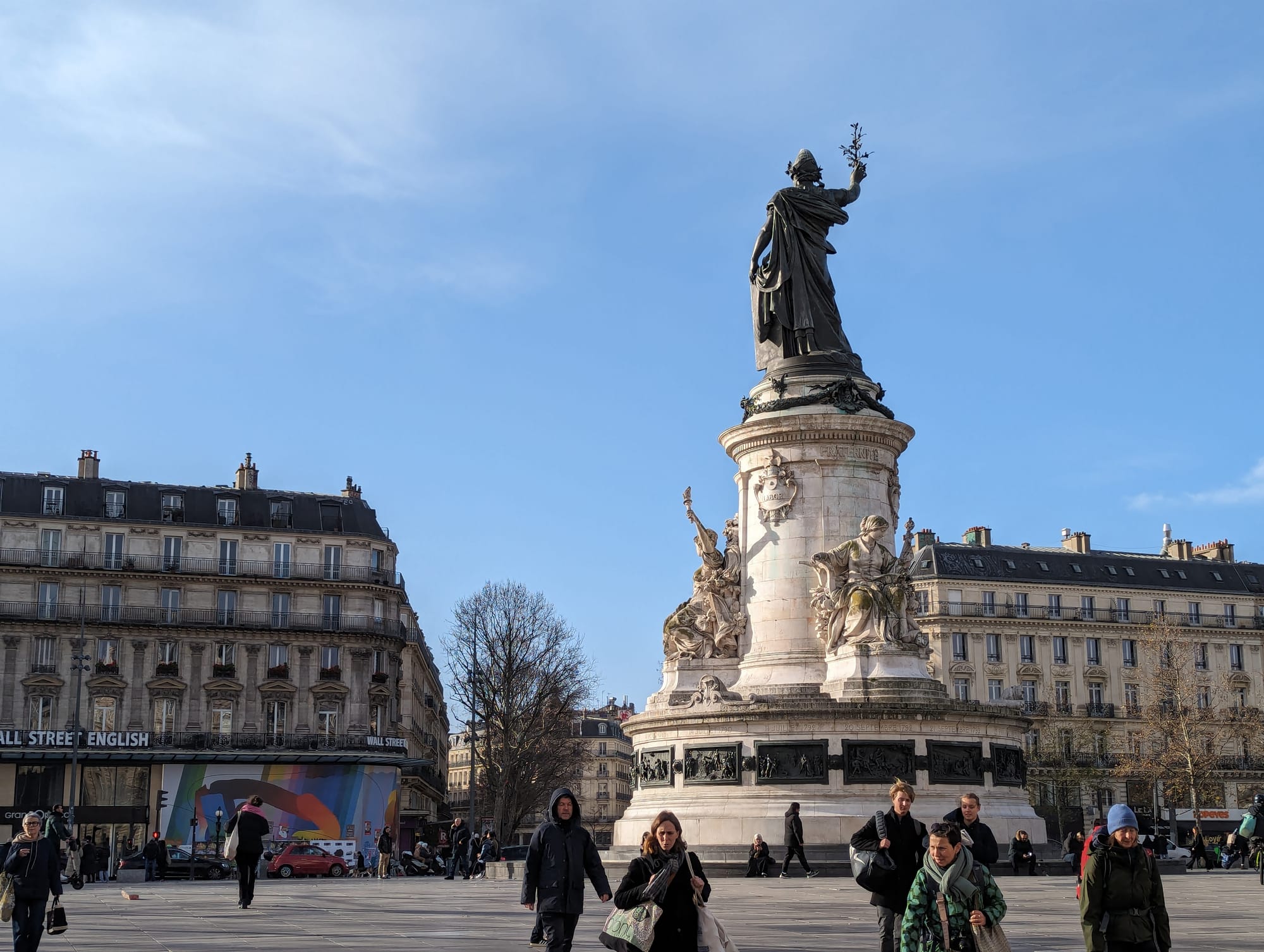
From the Karlsruhe sunrise to the streets of Paris, Europe is truly a land of contrasts.
In Paris, we got a fantastic lunch at Le Louis-Phillipe on the Quai de l'Hôtel de ville with line-of-sight to the Notre Dame construction site. Against all odds, the cathedral is on track to re-open in December 2024 and the scaffolding we saw will soon be gone.
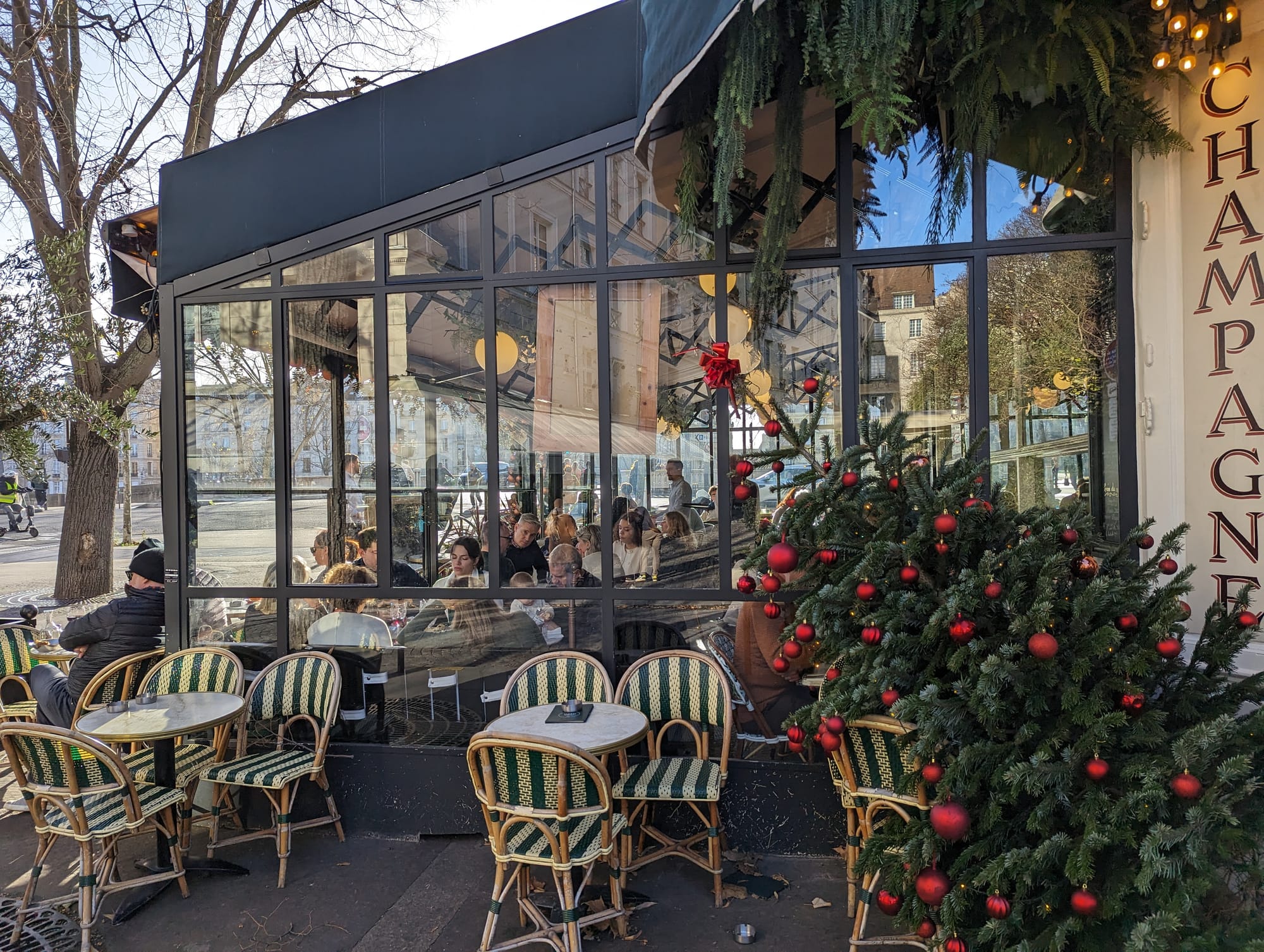
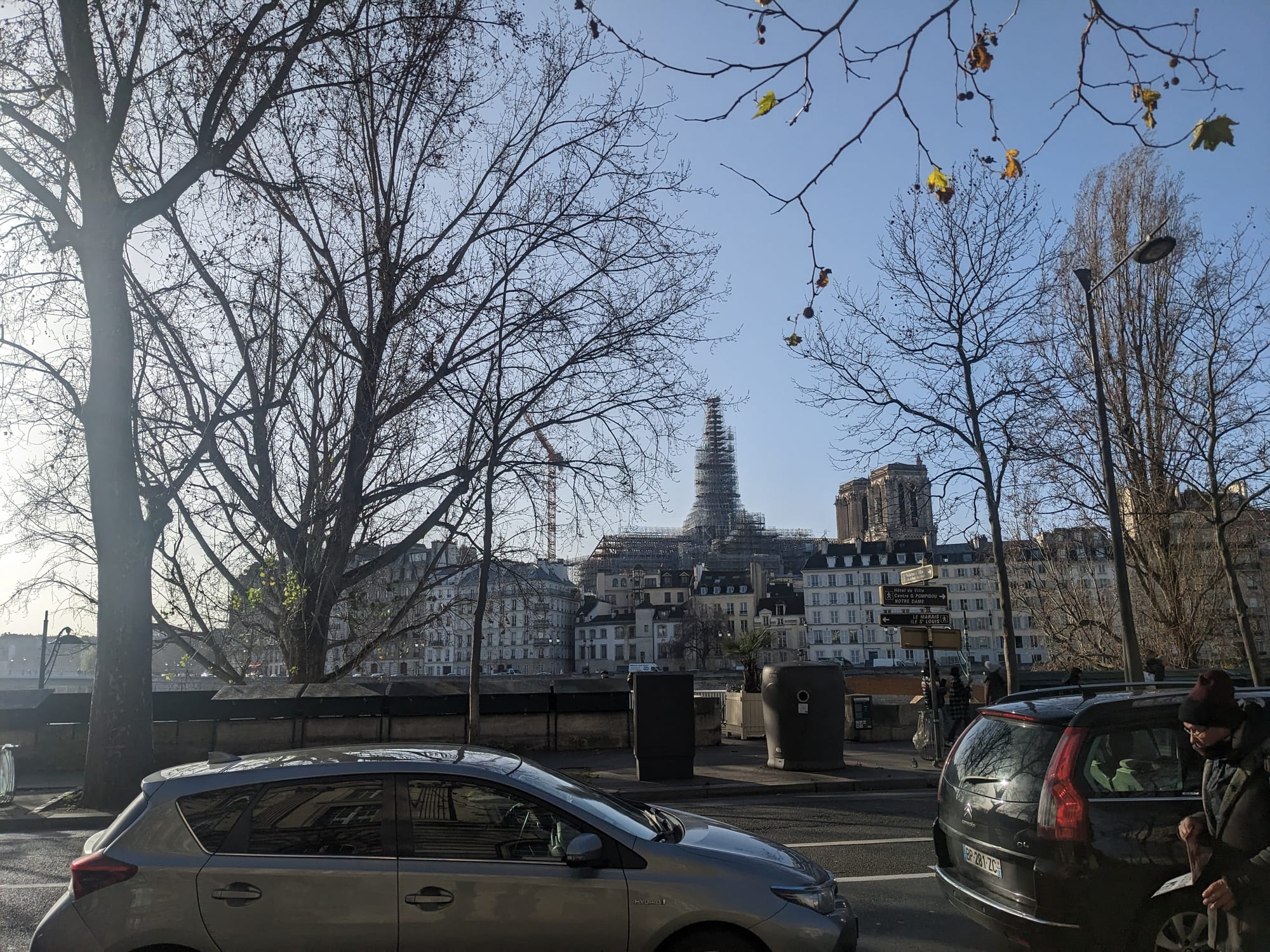
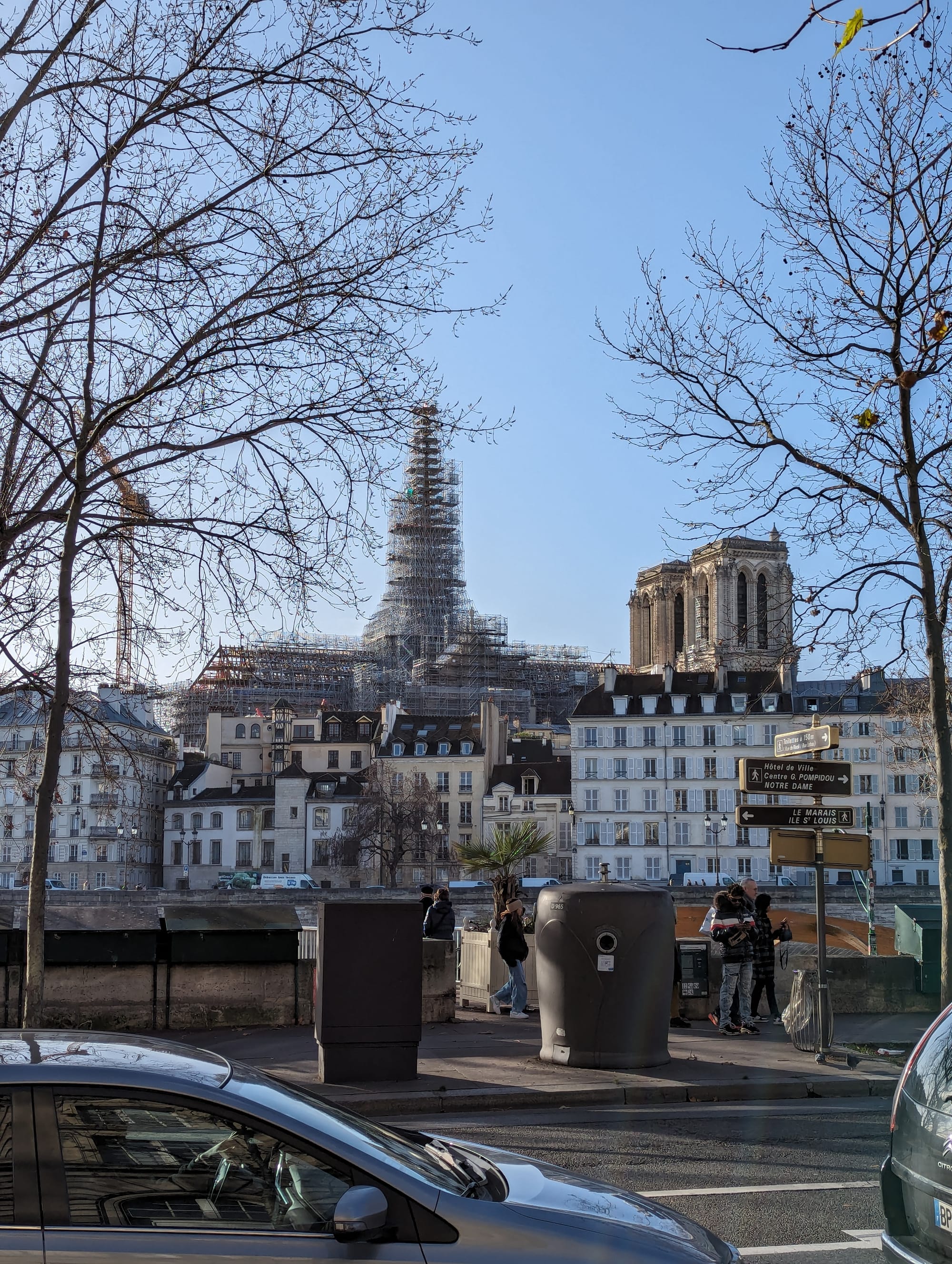
The restaurant and its view of Notre Dame was in-spire-ing.
After lunch we walked down the Canal St Martin and around the Centre Pompidou, also known as the inside-out building. The pipes and wires that are normally concealed within a structure are instead run along the outside and colour-coded according to their function: green for plumbing, blue for climate control, yellow for electricity, and red for circulation and fire control. It was hugely controversial when it opened in 1977 but now attracts over three-million visitors a year. We then passed by the home of Nicolas Flamel (yes, that one) which is one of the oldest building in Paris, if you don't count the Roman ruins.
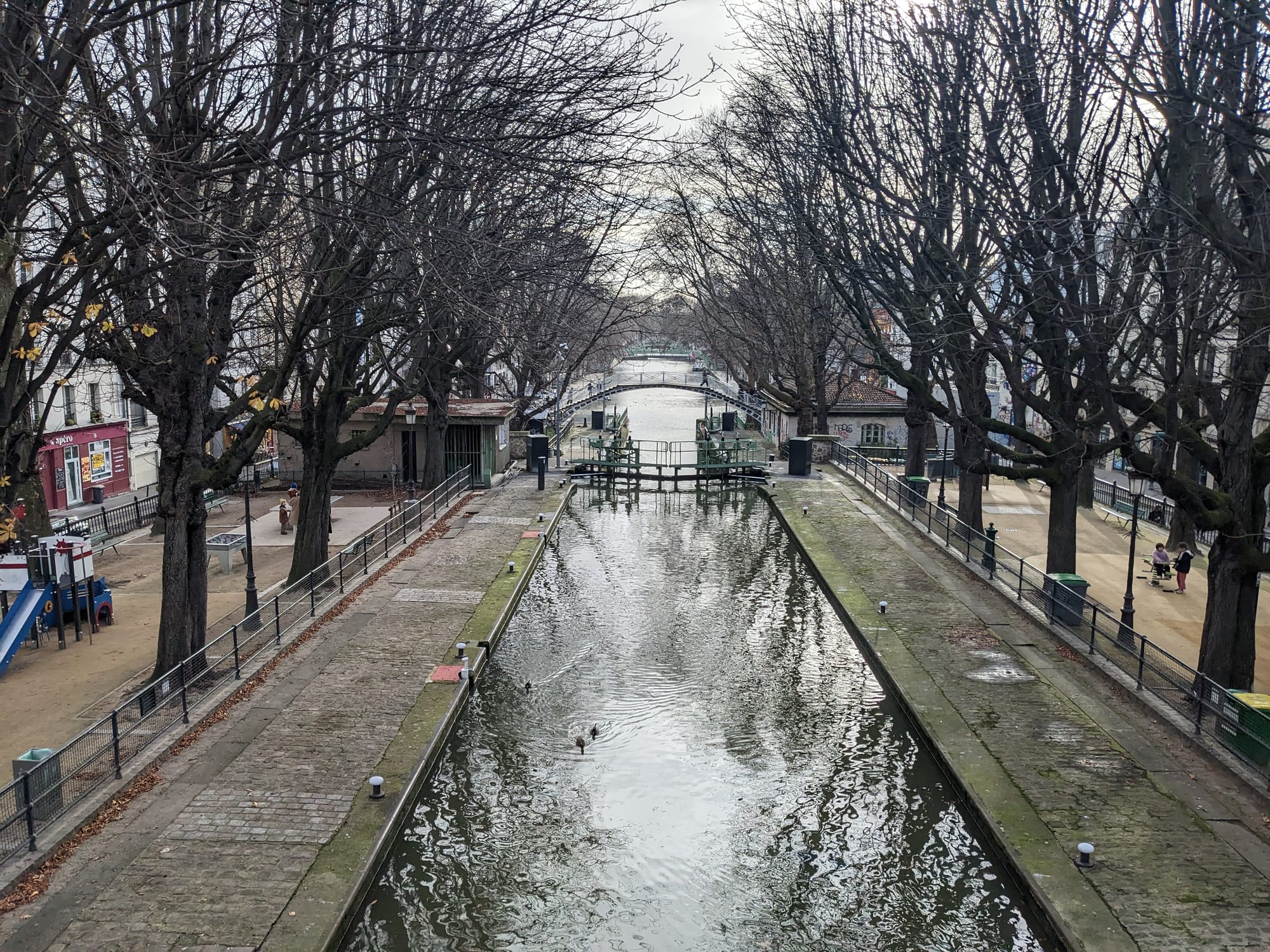
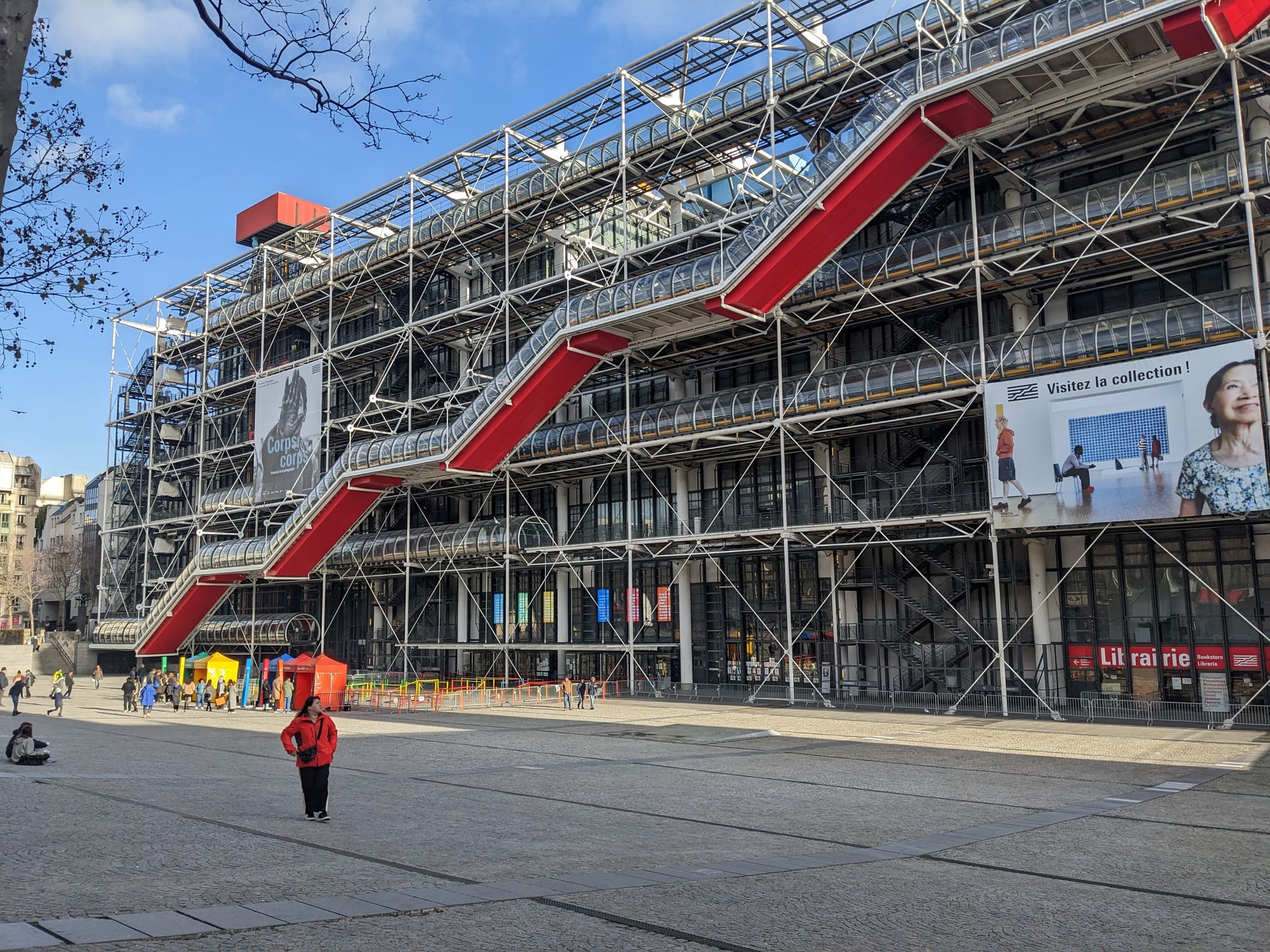

What I really want is to see Paris' oldest canal in the style of Centre Pompidou.
We stopped for coffee at Kawa, a cafe on the Rue des Archives. It was pricey but also one of the best tasting coffees I've had in a very long time - would return for a special occasion. We then loaded up on French bread, chocolate and groceries for the Eurostar back to London.
The Gare de Nord was absolutely packed because two days previously the Eurostar tunnel had experienced a leak, causing major train delays. Our train was the last of the day, and thankfully the trains before us had taken most of the delayed passengers to London. Our train was busy and late, but not overcrowded.
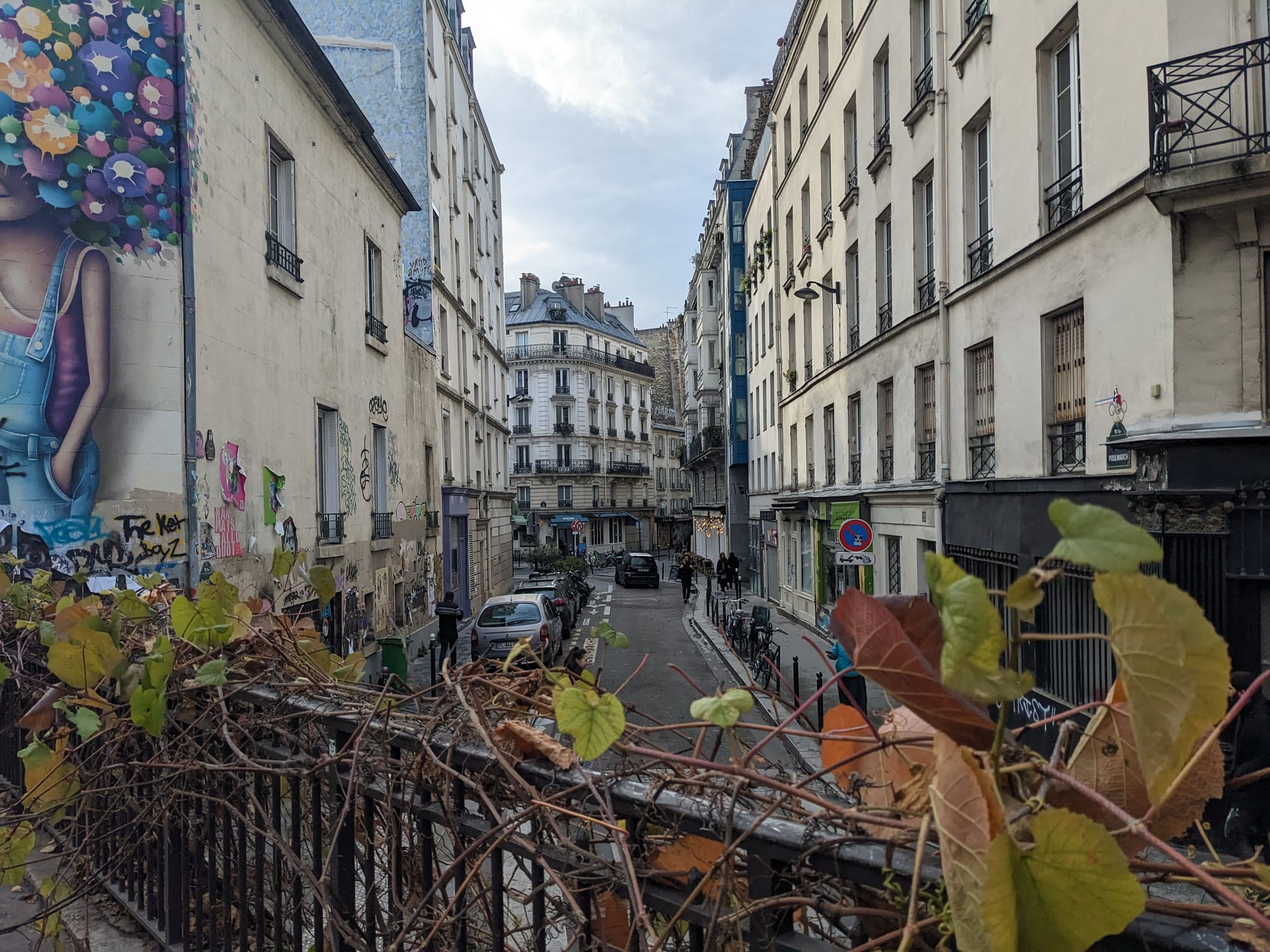
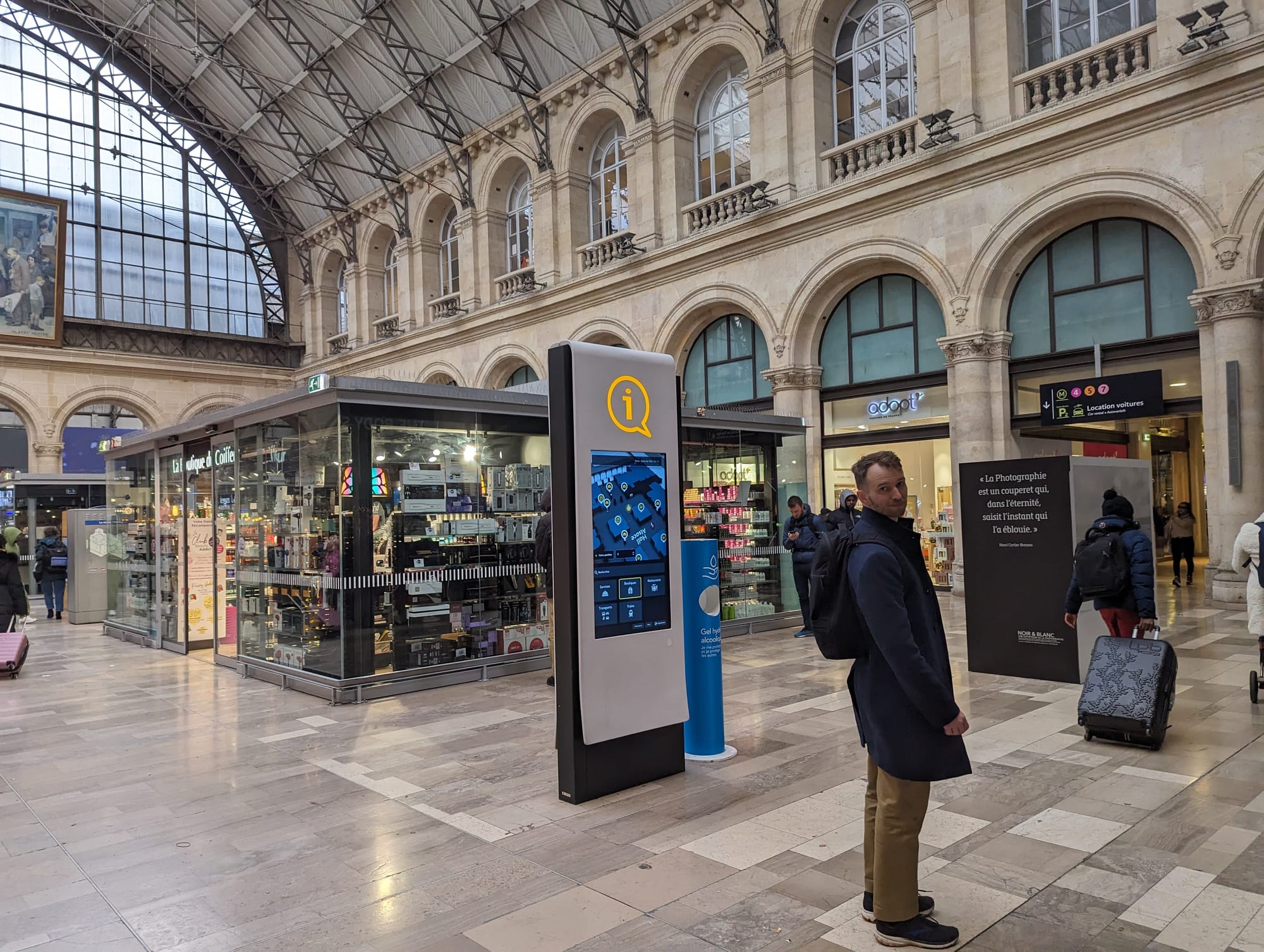
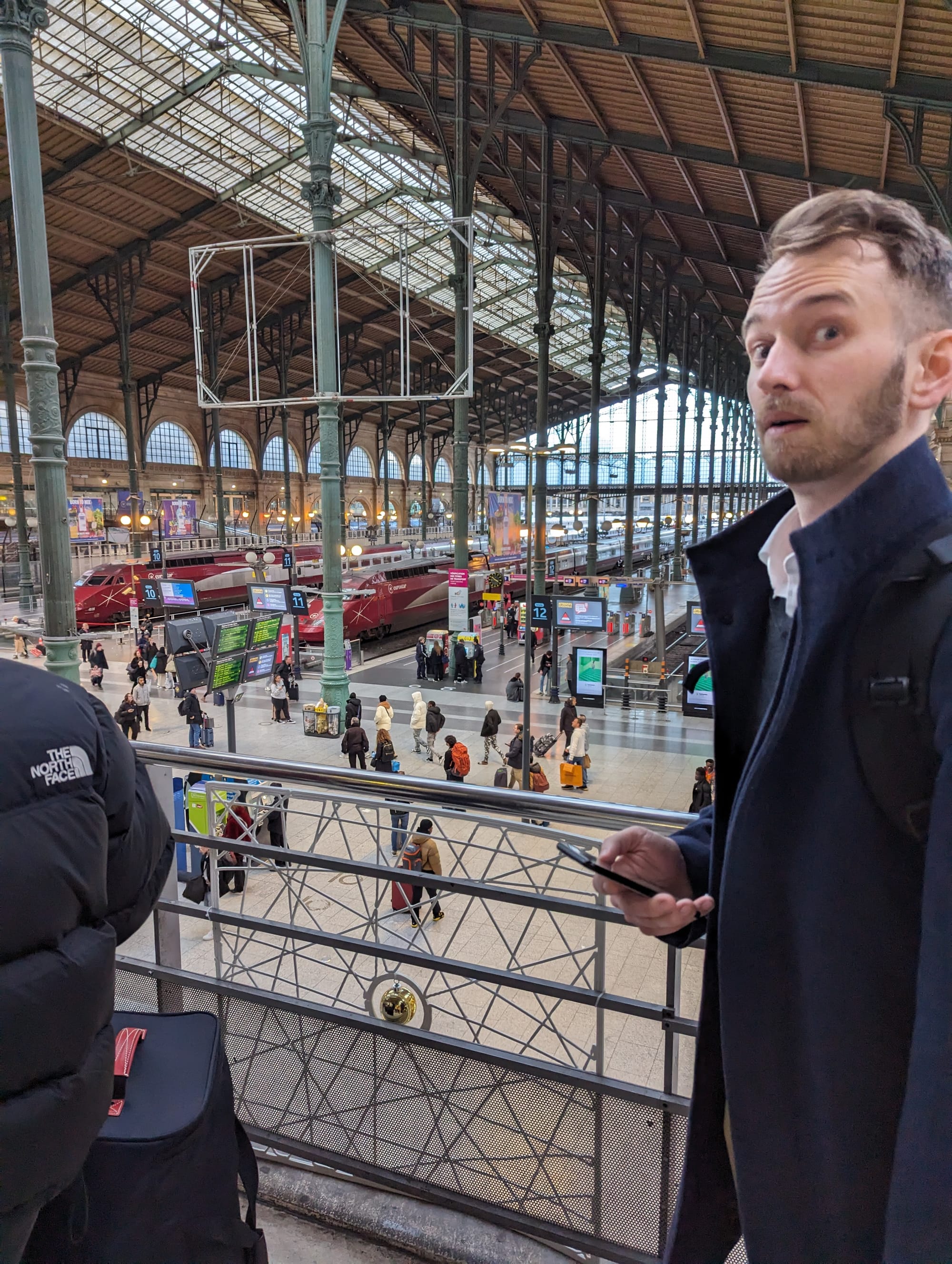
French groceries can be found at supermarkets on streets just like this one!
It was great to be back in London for New Year's Eve, enjoying French bread, after a long journey from Germany that morning.
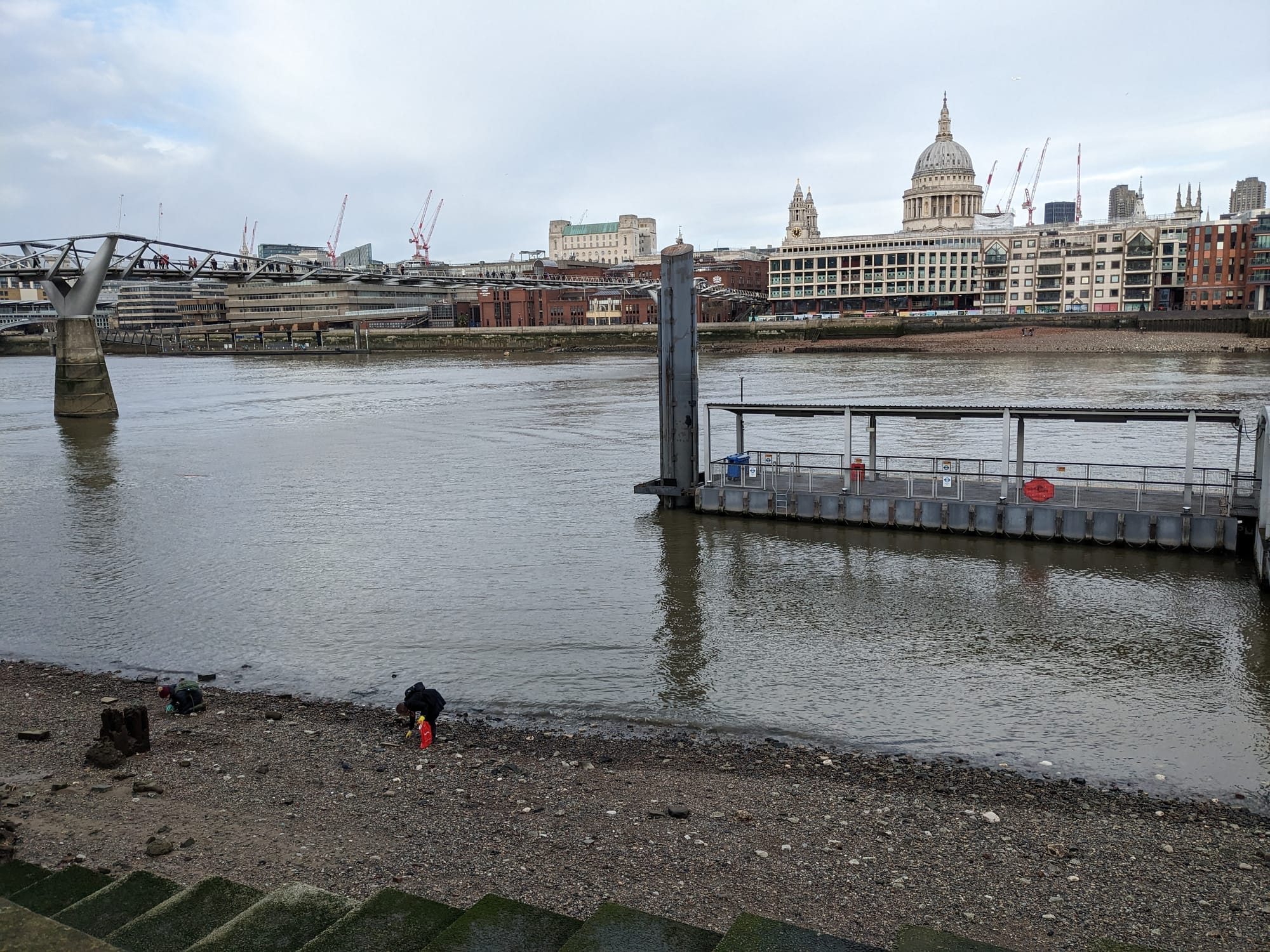
Appendix: Public Transport Maps
Undoubtedly the most befuddling part of travelling through the Rhineland is the conurbations of its cities bleeding into each other, which leads to some truly mind expanding public transport maps...

